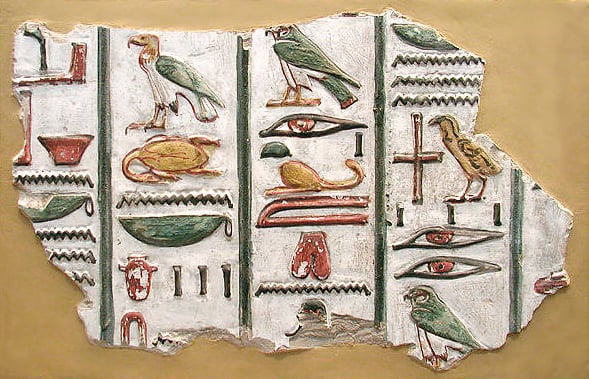Ancient History Timeline
This timeline of ancient history lists historical events of the documented ancient past from the beginning of recorded history until the Early Middle Ages. Prior to this time period, prehistory civilizations were pre-literate and did not have written language.
476
Odoacer
Romulus Augustulus, last Western Roman Emperor is forced to abdicate by Odoacer, a chieftain of the Germanic Heruli; Odoacer returns the imperial regalia to Eastern Roman Emperor Zeno in Constantinople in return for the title of dux of Italy; most frequently cited date for the end of ancient history.
Odoacer (c. 433 – 15 March 493 AD), also spelled Odovacer or Odovacar, was a barbarian soldier and statesman from the Middle Danube who deposed the Western Roman child emperor Romulus Augustulus and became the ruler of Italy (476–493). Odoacer's overthrow of Romulus Augustulus is traditionally understood as marking the end of the Western Roman Empire.
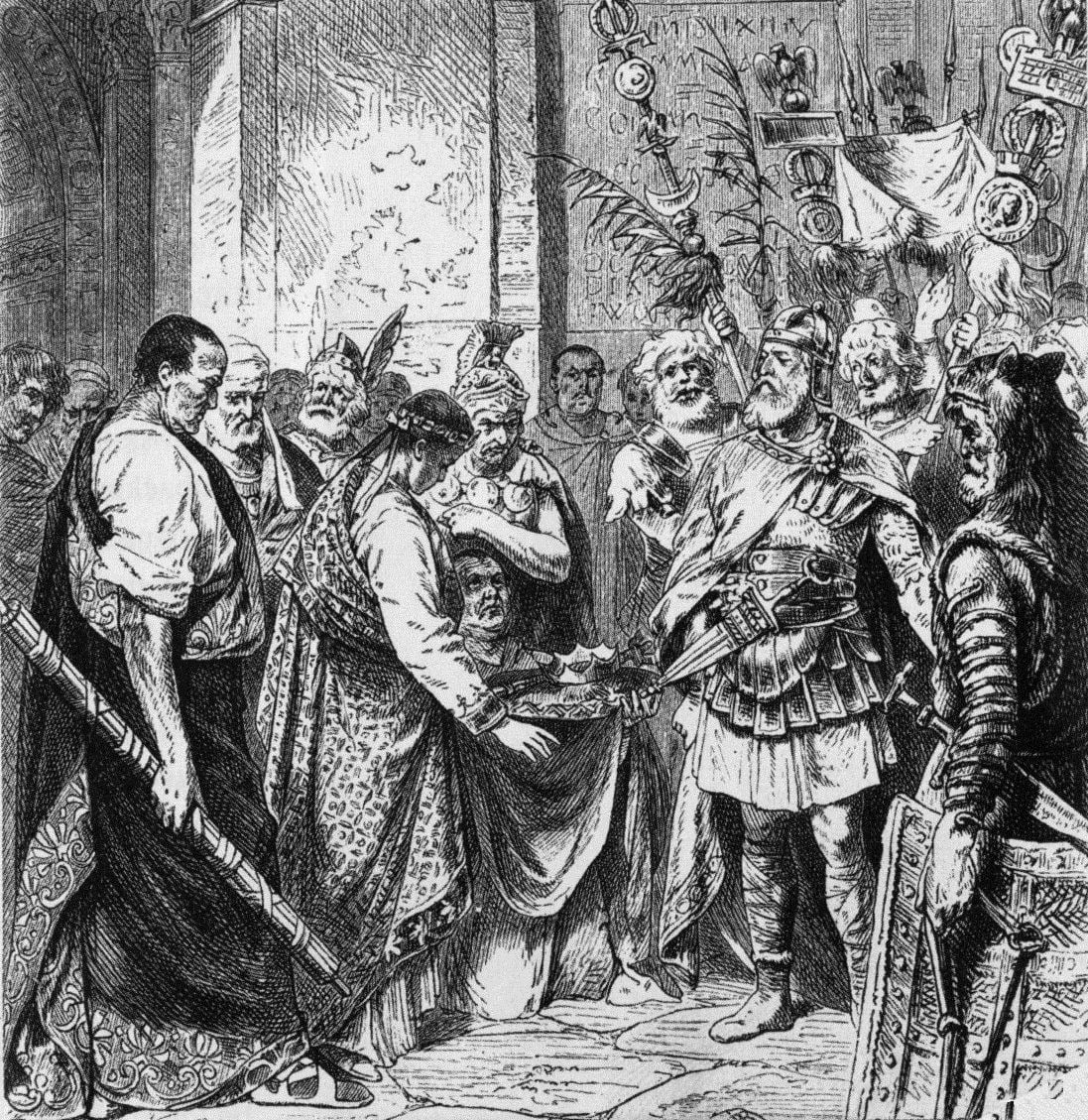
c. 455
Huna Invasion in India
Skandagupta repels a Huna people attack on India.
The Gupta age was considered the golden age of ancient Indian history. However, during the reign of Emperor Skandagupta the stability of the Empire was threatened by the invasion of a Central Asian tribe, The Huna. Emperor Skandagupta was at that time dealing with the rebellion of Pushyamitra’s. and The Huna after ravaging Persia thought that time was ripe to invest in India. Even though the imperial fabric of the Gupta’s was in a decaying stage, nevertheless Skandagupta defeated the Hunas. The conquest of the Hunas is mentioned particularly on the Bhitari pillar inscription, and the conquest of the Mlechcchas is mentioned in more general terms on the Junagadh rock inscription, albeit the Mlechcchas cannot be definitively identified as the Hunas. The Hunas were thoroughly defeated by Skandagupta, according to the inscription on the pillar.
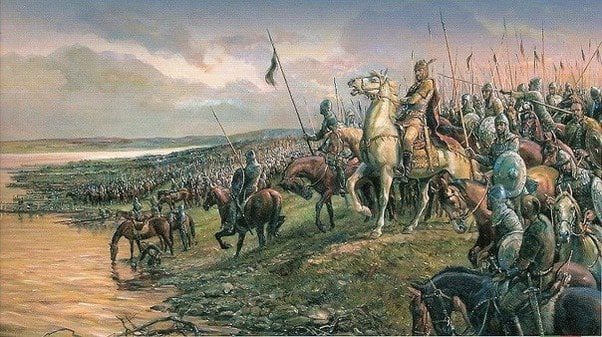
455
Sack of Rome
Vandals sack Rome, capture Sicily and Sardinia.
The peace treaty of 442 did not halt Vandal raids in the western Mediterranean. Over the next 35 years, Gaiseric used his large naval fleet to loot the coasts of both the Eastern and Western Empires. After Attila the Hun's death in 453, however, the Romans turned their attention back to the Vandals, who were now in control of some of the richest lands formerly ruled by Rome.
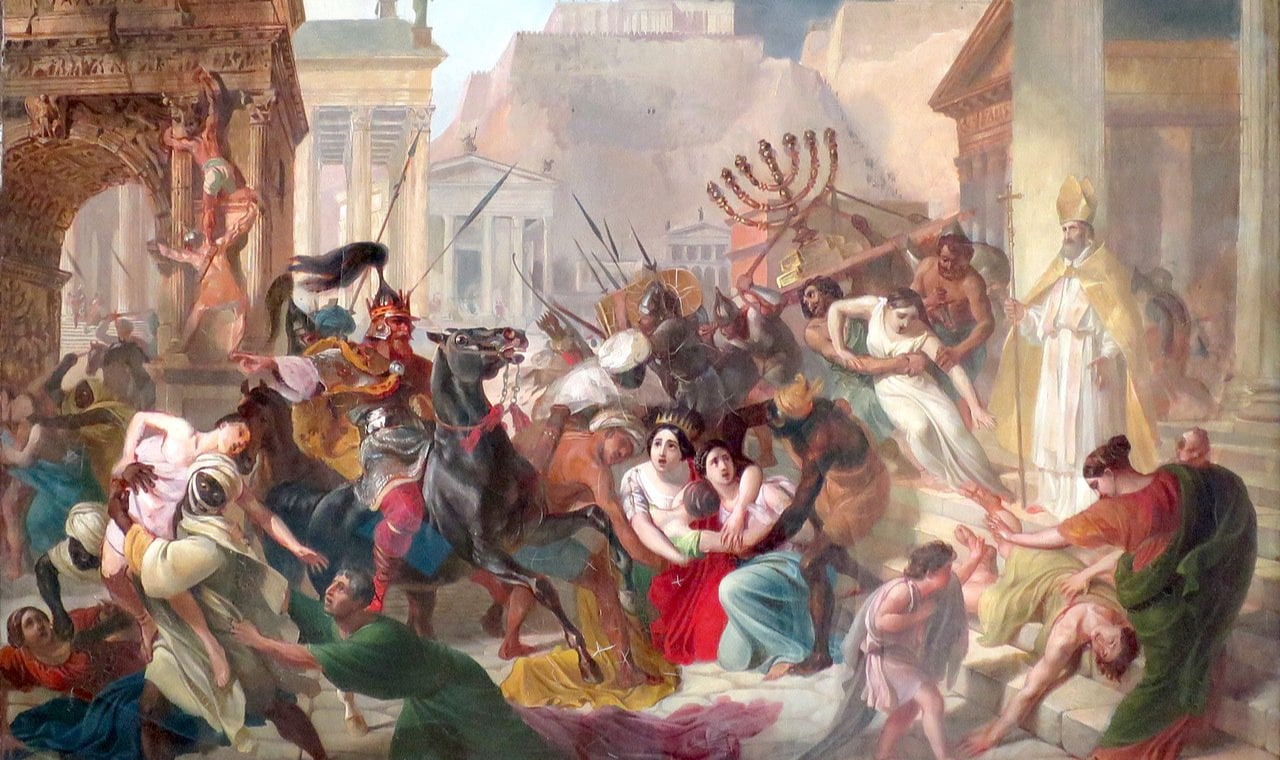
439
Northern and Southern dynasties
The Northern Wei dynasty unites northern China, beginning the Northern and Southern dynasties period.
The Northern and Southern dynasties (Chinese: 南北朝; pinyin: Nán běi cháo) was a period of political division in the history of China that lasted from 420 to 589, following the tumultuous era of the Sixteen Kingdoms and the Eastern Jin dynasty. It is sometimes considered as the latter part of a longer period known as the Six Dynasties (220–589). Albeit an age of civil war and political chaos, it was also a time of flourishing arts and culture, advancement in technology, and the spread of Mahayana Buddhism and Daoism. The period saw large-scale migration of the Han people to the lands south of the Yangtze. The period came to an end with the unification of all of China proper by Emperor Wen of the Sui dynasty.

439
Vandal Kingdom
Vandals have conquered the land stretching from Morocco to Tunisia by this time.
They advanced eastward, conquering the coastal regions of what is now Tunisia, and Algeria. In 435, the Western Roman Empire, then ruling North Africa, allowed the Vandals to settle in the provinces of Numidia and Mauretania when it became clear that the Vandal army could not be defeated by Roman military forces. In 439 the Vandals renewed their advance eastward and captured Carthage, the most important city of North Africa. The fledgling kingdom then conquered the Roman-ruled islands of Mallorca, Sicily, Sardinia, and Corsica in the western Mediterranean.
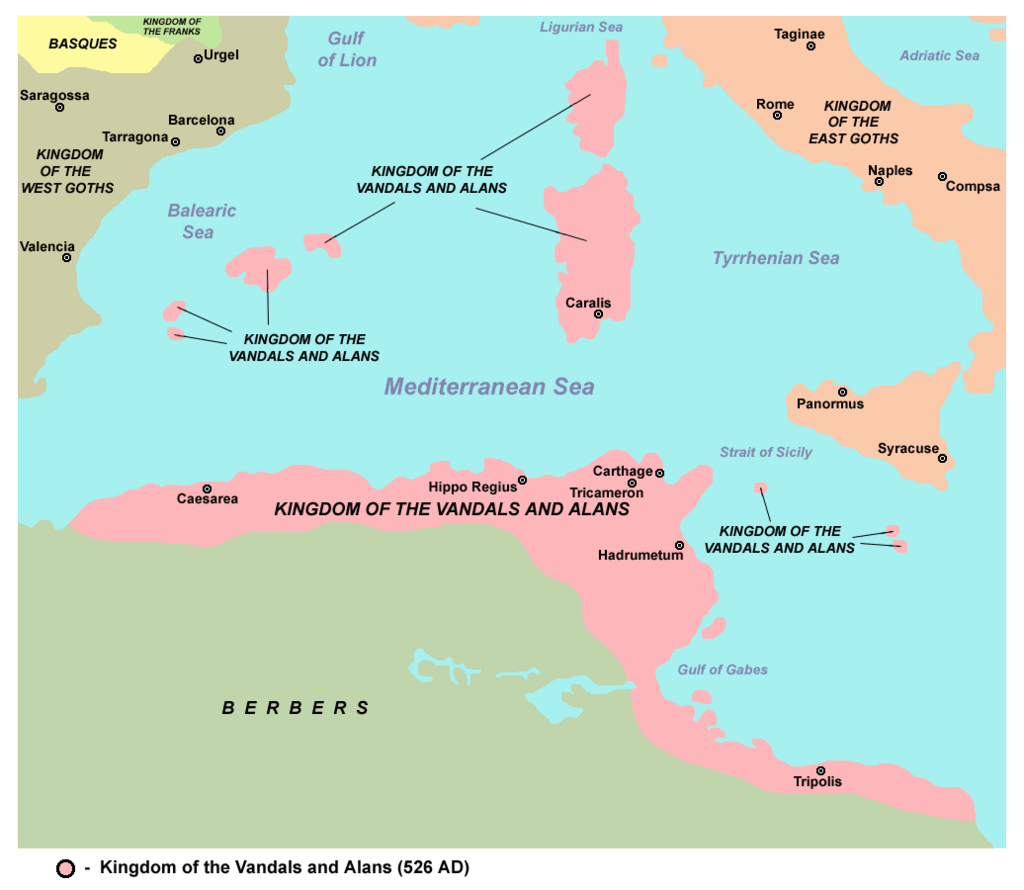
429
Vandals conquest
Vandals enter North Africa from Spain for the first time.
Led by their king Gaiseric, the whole people, 80,000 in all, crossed into Africa in 429 and in the next year advanced with little opposition to Hippo Regius, which they took after a siege during which Augustine died.
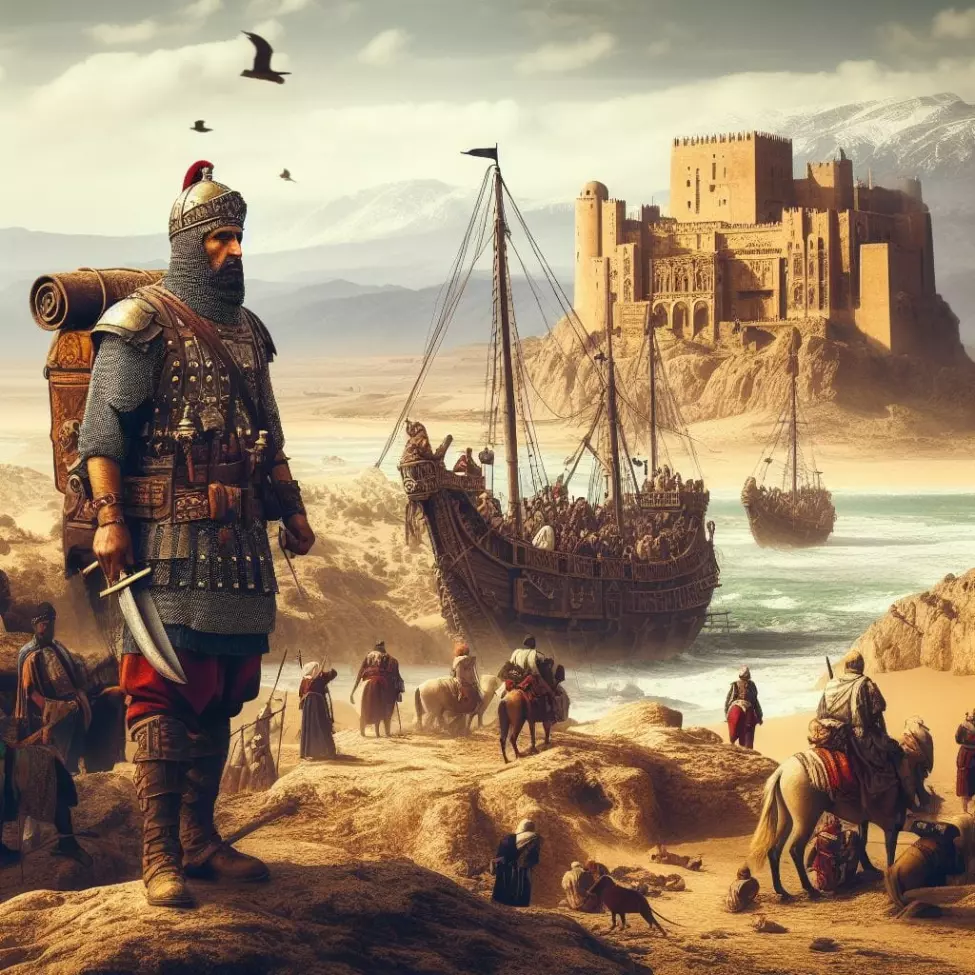
420
Liu Song dynasty
The general Liu Yu usurps the Jin in southern China, beginning the Liu Song dynasty.
Song, known as Liu Song (Chinese: 劉宋), Former Song (前宋) or Song of (the) Southern dynasties (南朝宋) in historiography, was an imperial dynasty of China and the first of the four Southern dynasties during the Northern and Southern dynasties period. It succeeded the Eastern Jin dynasty and preceded the Southern Qi dynasty.
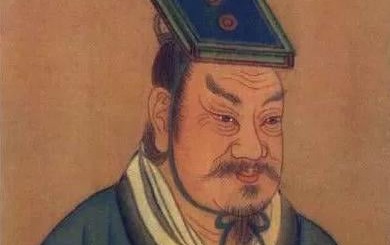
415
Germanic tribes enter Spain
After more than five centuries of Roman rule, the early fifth century CE saw great migrations of Germanic peoples, including the Alans (an Iranian group), Suebi, Vandals, and Visigoths to Iberia. These invasions marked the end of Roman rule in the Iberian Peninsula and the establishment of barbarian kingdoms.
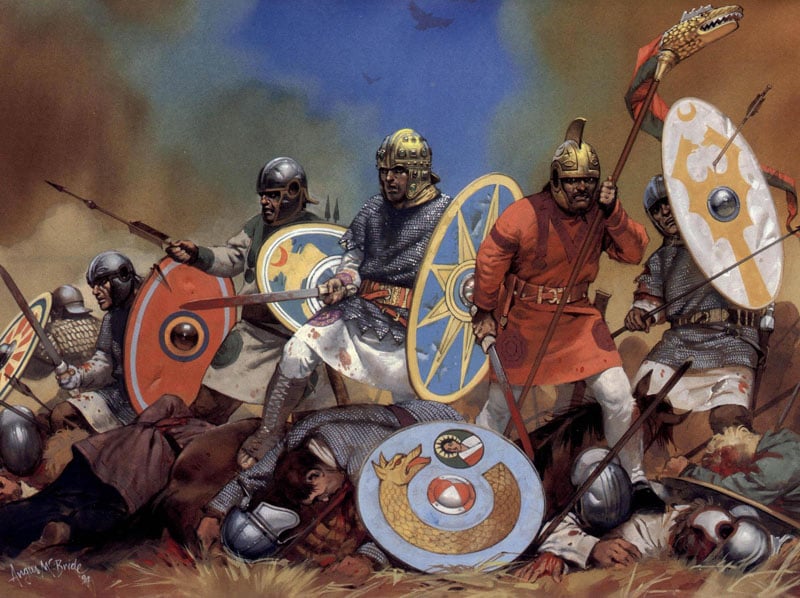
410
Sack of Rome
Visigoths sack Rome in 410 for the first time since 390 BC.
The sack of Rome on 24 August 410 AD was undertaken by the Visigoths led by their king, Alaric. At that time, Rome was no longer the capital of the Western Roman Empire, having been replaced in that position first by Mediolanum (now Milan) in 286 and then by Ravenna in 402. Nevertheless, the city of Rome retained a paramount position as "the eternal city" and a spiritual center of the Empire. This was the first time in almost 800 years that Rome had fallen to a foreign enemy, and the sack was a major shock to contemporaries, friends and foes of the Empire alike.
The sacking of 410 is seen as a major landmark in the fall of the Western Roman Empire. St. Jerome, living in Bethlehem, wrote: "the city which had taken the whole world was itself taken".
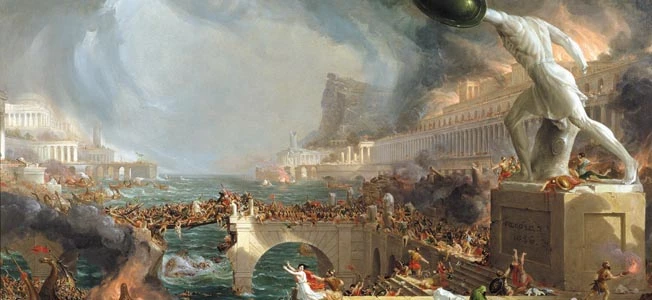
407 – 409
Visigoths
Visigoths and other Germanic tribes cross into Roman-Gaul for the first time.
The Visigoths (Latin: Visigothi, Wisigothi, Vesi, Visi, Wesi, Wisi) were a Germanic people united under the rule of a king and living within the Roman Empire during late antiquity. The Visigoths first appeared in the Balkans, as a Roman-allied barbarian military group united under the command of Alaric I. Their exact origins are believed to have been diverse but they probably included many descendants of the Thervingi who had moved into the Roman Empire beginning in 376 and had played a major role in defeating the Romans at the Battle of Adrianople in 378. Relations between the Romans and Alaric's Visigoths varied, with the two groups making treaties when convenient, and warring with one another when not. Under Alaric, the Visigoths invaded Italy and sacked Rome in August 410.
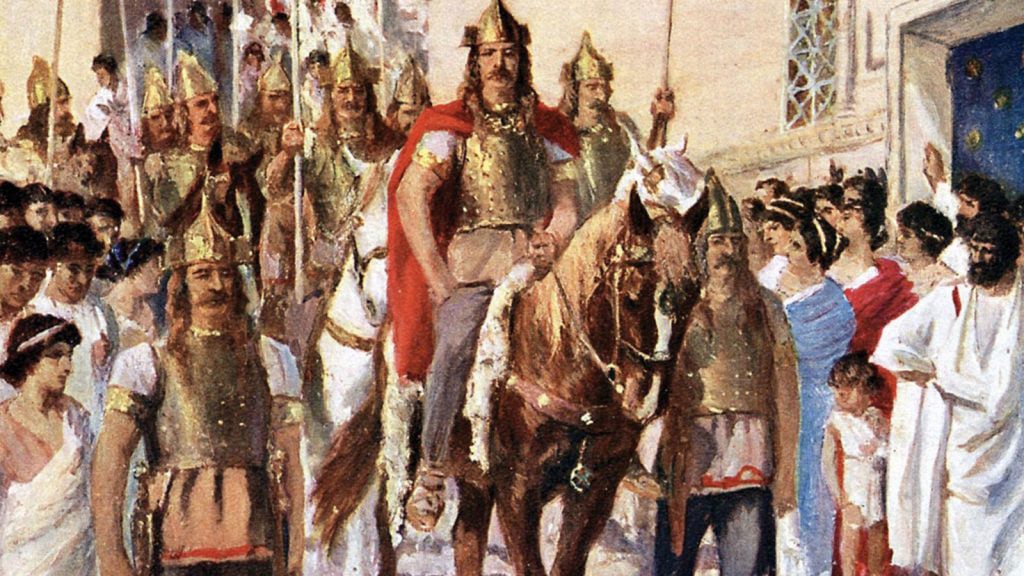
406
End of Roman rule in Britain
The end of Roman rule in Britain was the transition from Roman Britain to post-Roman Britain. Roman rule ended in different parts of Britain at different times, and under different circumstances. In 383, the usurper Magnus Maximus withdrew troops from northern and western Britain, probably leaving local warlords in charge. In 407, usurper Constantine III took the remaining mobile Roman soldiers to Gaul in response to the crossing of the Rhine in late 406, leaving the island a victim of barbarian attacks. Around 410, the Romano-British expelled the Roman magistrates from Britain. Roman Emperor Honorius replied to a request for assistance with the Rescript of Honorius, telling the Roman cities to see to their own defence, a tacit acceptance of temporary British self-government. Honorius was fighting a large-scale war in Italy against the Visigoths under their leader Alaric, with Rome itself under siege. No forces could be spared to protect distant Britain. Though it is likely that Honorius expected to regain control over the provinces soon, by the mid-6th century Procopius recognised that Roman control of Britannia was entirely lost.
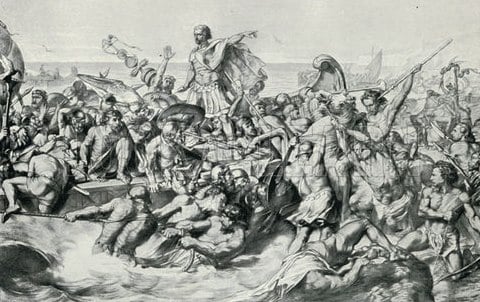
395
Persecution of pagans under Theodosius I
Theodosius I outlaws all religions other than Catholic Christianity.
In 393, Theodosius was ready to begin his war against Eugenius and Arbogastes. The battle that ensued became, in essence, a battle for the survival of paganism. The defeat of Eugenius by Theodosius in 394 led to the final separation of paganism from the state. Theodosius visited Rome to attempt to convert the pagan members of the Senate. Being unsuccessful in this, he withdrew all state funds that had been set aside for the public performance of pagan rites. From this point forward, state funds would never again be made available for the public performance of pagan rites nor for the maintenance of the pagan temples. Despite this setback on their religion, the pagans remained outspoken in their demands for toleration. Many pagans simply pretended to convert as an obvious instrument of advancement.
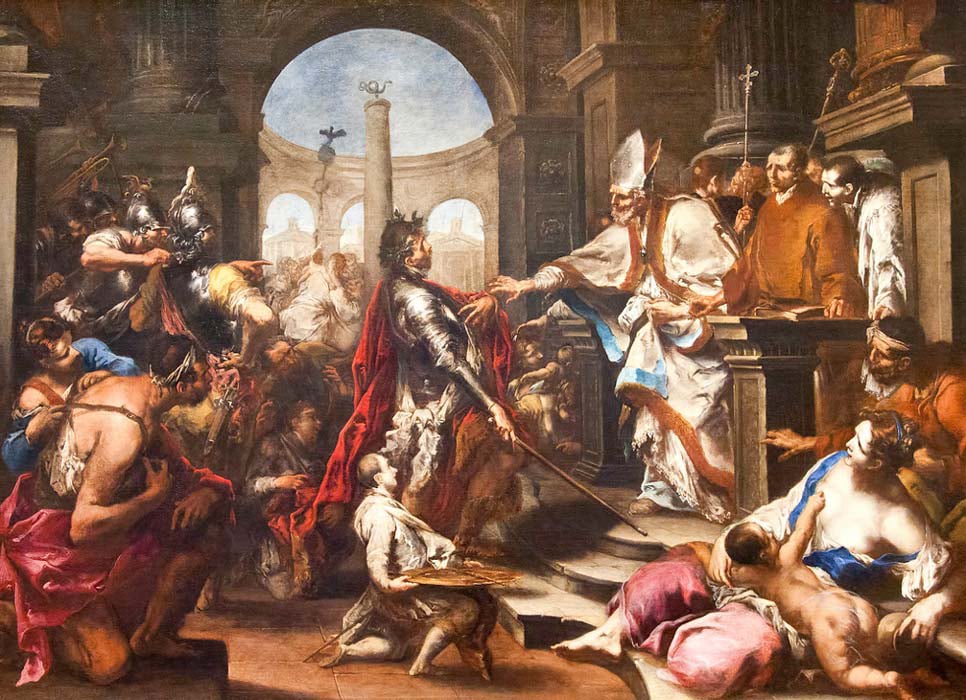
380
Edict of Thessalonica
Roman Emperor Theodosius I declares the Arian faith of Christianity heretical.
The Edict of Thessalonica (also known as Cunctos populos), issued on 27 February AD 380 by Theodosius I, made Nicene Christianity the state church of the Roman Empire. It condemned other Christian creeds such as Arianism as heresies of "foolish madmen," and authorized their punishment.
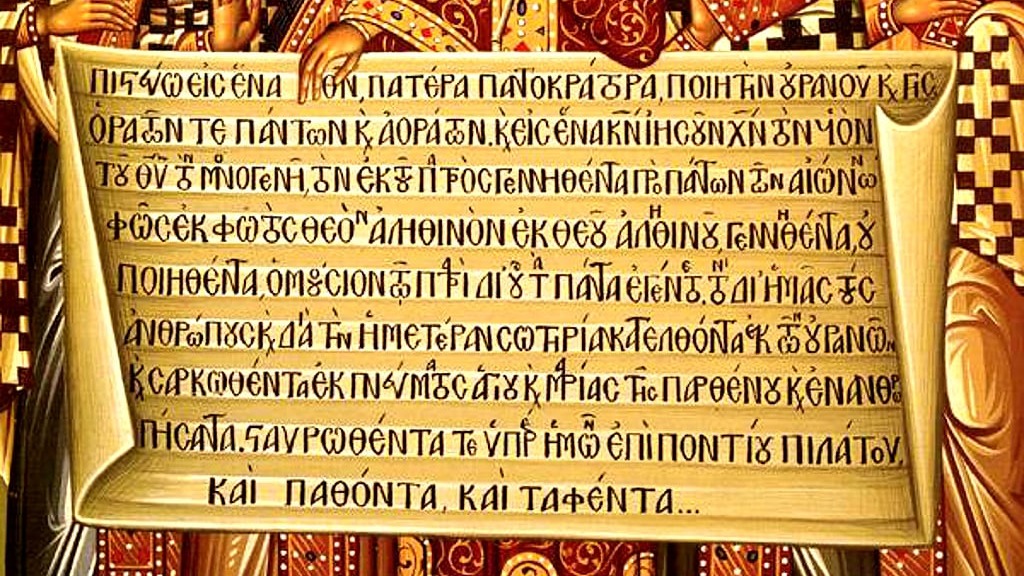
378
Battle of Adrianople
Battle of Adrianople, Roman army is defeated by the Germanic tribes.
The Battle of Adrianople (9 August 378), sometimes known as the Battle of Hadrianopolis, was fought between an Eastern Roman army led by the Eastern Roman Emperor Valens and Gothic rebels (largely Thervings as well as Greutungs, non-Gothic Alans, and various local rebels) led by Fritigern. The battle took place in the vicinity of Adrianople, in the Roman province of Thracia (modern Edirne in European Turkey). It ended with an overwhelming victory for the Goths and the death of Emperor Valens.
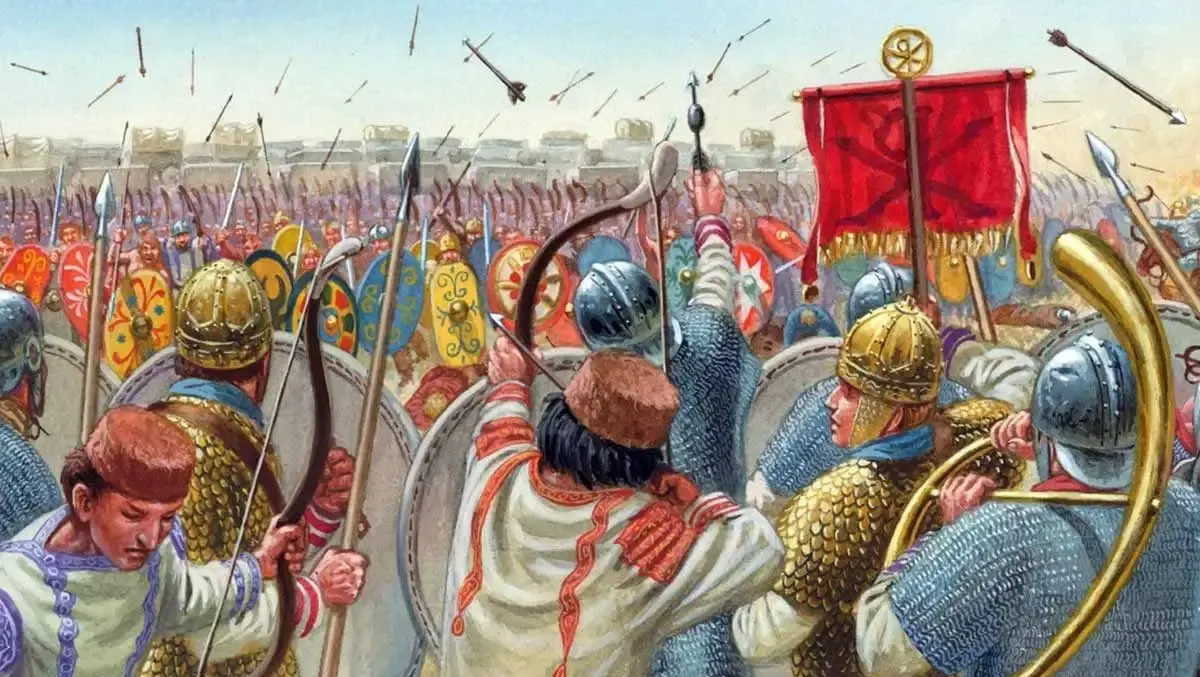
361
Emperor Julian
Constantius II dies, his cousin Emperor Julian succeeds him.
Julian (Latin: Flavius Claudius Julianus; Greek: Ἰουλιανός Ioulianos; 331 – 26 June 363) was the Caesar of the West from 355 to 360 and Roman emperor from 361 to 363, as well as a notable philosopher and author in Greek. His rejection of Christianity, and his promotion of Neoplatonic Hellenism in its place, caused him to be remembered as Julian the Apostate in Christian tradition. He is sometimes referred to as Julian the Philosopher.
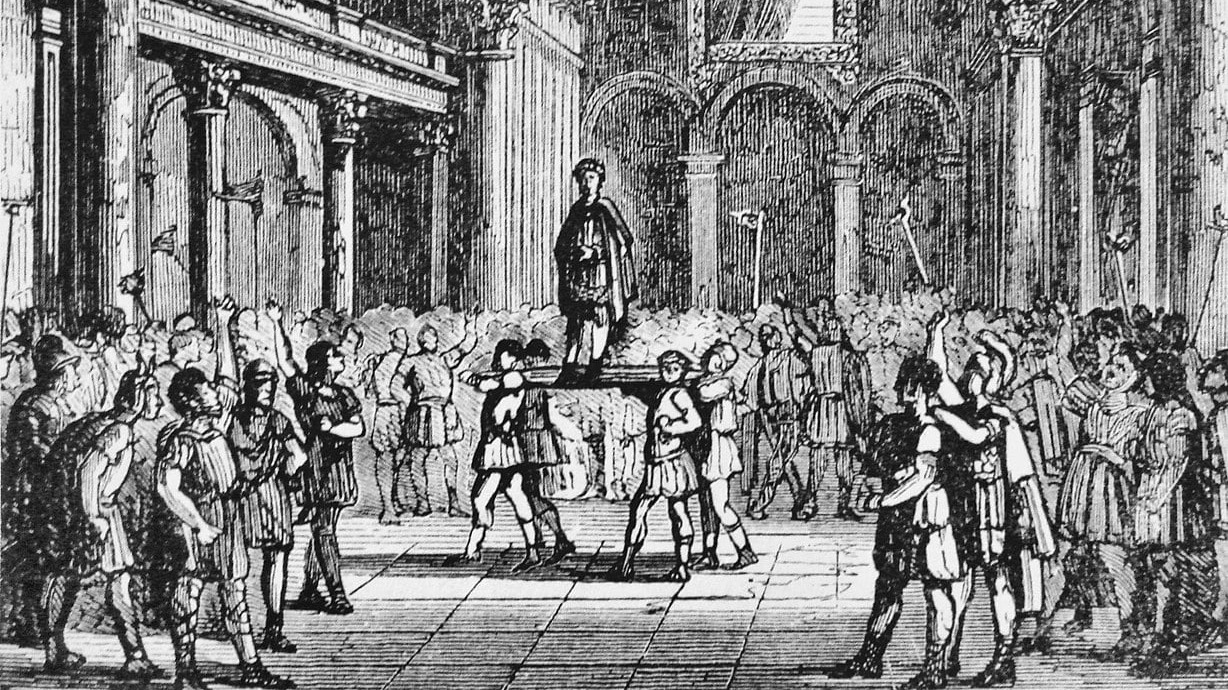
354
Augustine of Hippo
Birth of Augustine of Hippo.
Augustine of Hippo (/ɔːˈɡʌstɪn/ aw-GUST-in, US also /ˈɔːɡəstiːn/ AW-gə-steen; Latin: Aurelius Augustinus Hipponensis; 13 November 354 – 28 August 430), also known as Saint Augustine, was a theologian and philosopher of Berber origin and the bishop of Hippo Regius in Numidia, Roman North Africa. His writings influenced the development of Western philosophy and Western Christianity, and he is viewed as one of the most important Church Fathers of the Latin Church in the Patristic Period. His many important works include The City of God, On Christian Doctrine, and Confessions.

350
Constantius II
Constantius II is left sole emperor with the death of his two brothers.
Constantius II (Latin: Flavius Julius Constantius; Greek: Κωνστάντιος, translit. Kōnstántios; 7 August 317 – 3 November 361) was Roman emperor from 337 to 361. His reign saw constant warfare on the borders against the Sasanian Empire and Germanic peoples, while internally the Roman Empire went through repeated civil wars, court intrigues, and usurpations. His religious policies inflamed domestic conflicts that would continue after his death.

337
Death of Constantine I
Emperor Constantine I dies, leaving his sons Constantius II, Constans I, and Emperor Constantine II as the emperors of the Roman empire.
Following his death, his body was transferred to Constantinople and buried in the Church of the Holy Apostles, in a porphyry sarcophagus that was described in the 10th century by Constantine VII Porphyrogenitus in the De Ceremoniis. His body survived the plundering of the city during the Fourth Crusade in 1204 but was destroyed at some point afterwards. Constantine was succeeded by his three sons born of Fausta, Constantine II, Constantius II and Constans. His sons, along with his nephew Dalmatius, had already received one division of the empire each to administer as caesars; Constantine may have intended his successors to resume a structure akin to Diocletian's Tetrarchy. A number of relatives were killed by followers of Constantius, notably Constantine's nephews Dalmatius (who held the rank of caesar) and Hannibalianus, presumably to eliminate possible contenders to an already complicated succession. He also had two daughters, Constantina and Helena, wife of Emperor Julian.
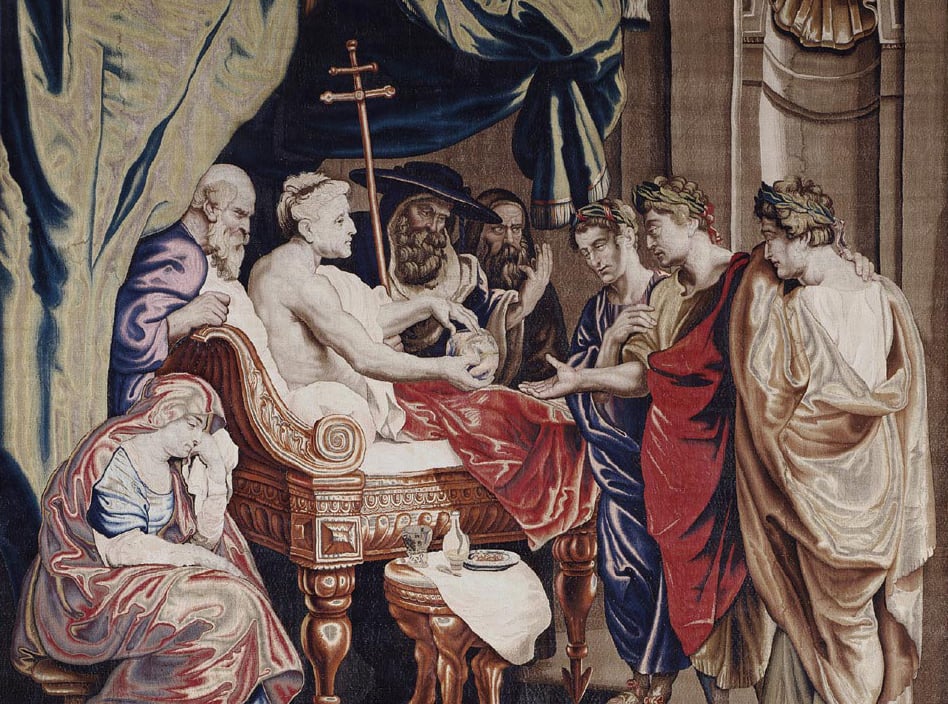
335
Samudragupta
Samudragupta becomes the emperor of the Gupta empire.
Samudragupta (Gupta script: Sa-mu-dra-gu-pta, (c. 335–375 CE) was the second emperor of the Gupta Empire of ancient India, and is regarded among the greatest rulers of India. As a son of the Gupta emperor Chandragupta I and the Licchavi princess Kumaradevi, he greatly expanded his dynasty's political and military power.
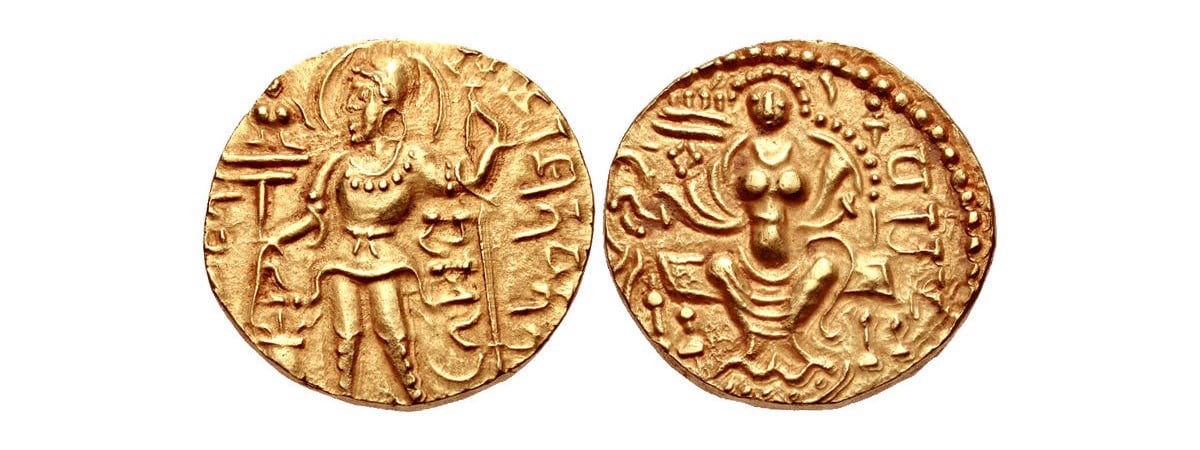
330
Constantinople
Constantinople is officially named and becomes the capital of the eastern Roman Empire.
Constantinople became the capital of the Roman Empire during the reign of Constantine the Great in 330. Following the collapse of the Western Roman Empire in the late 5th century, Constantinople remained the capital of the Eastern Roman Empire (also known as the Byzantine Empire; 330–1204 and 1261–1453), the Latin Empire (1204–1261), and the Ottoman Empire (1453–1922). Following the Turkish War of Independence, the Turkish capital then moved to Ankara. Officially renamed Istanbul in 1930, the city is today the largest city in Europe, straddling the Bosporus strait and lying in both Europe and Asia, and the financial centre of Turkey.
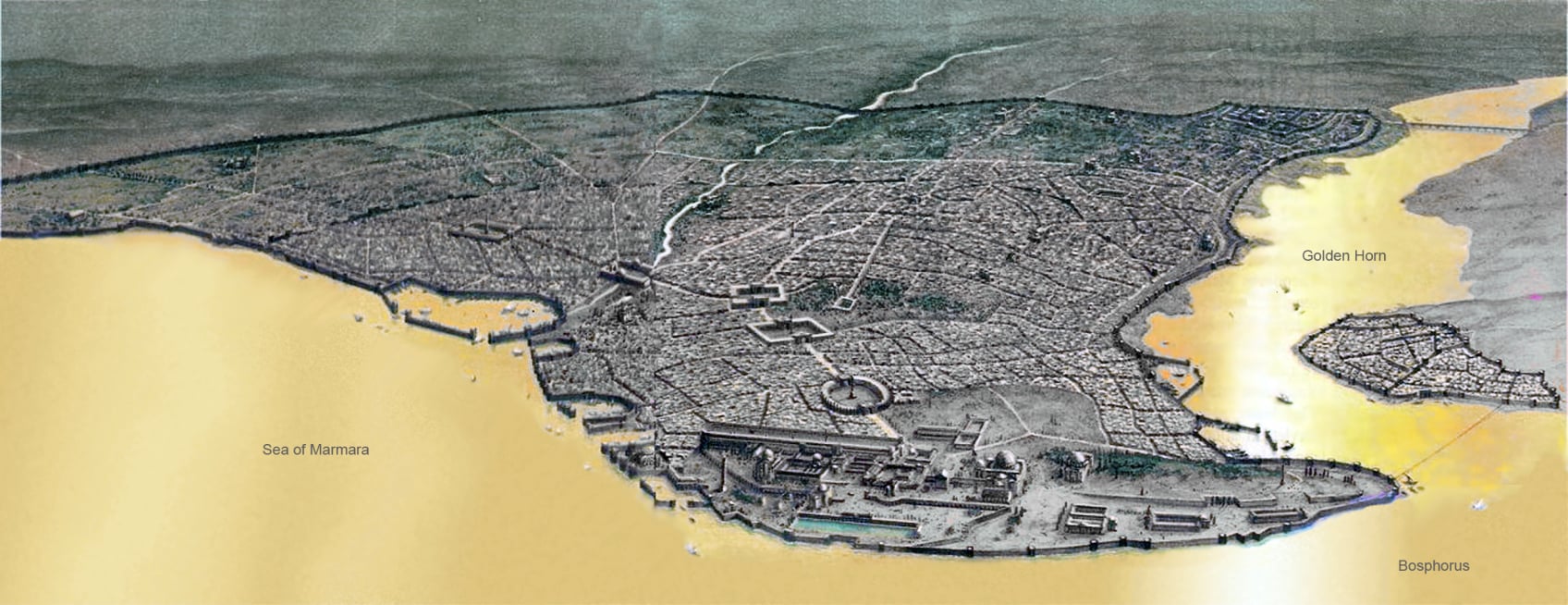
325
First Council of Nicaea
Constantine I organizes the First Council of Nicaea.
The First Council of Nicaea (/naɪˈsiːə/ ny-SEE-ə; Ancient Greek: Σύνοδος τῆς Νικαίας, romanized: Sýnodos tês Nikaías) was a council of Christian bishops convened in the Bithynian city of Nicaea (now İznik, Turkey) by the Roman Emperor Constantine I. The Council of Nicaea met from May until the end of July 325.
This ecumenical council was the first of many efforts to attain consensus in the church through an assembly representing all Christendom. Hosius of Corduba may have presided over its deliberations. Its main accomplishments were settlement of the Christological issue of the divine nature of God the Son and his relationship to God the Father, the construction of the first part of the Nicene Creed, mandating uniform observance of the date of Easter, and promulgation of early canon law.
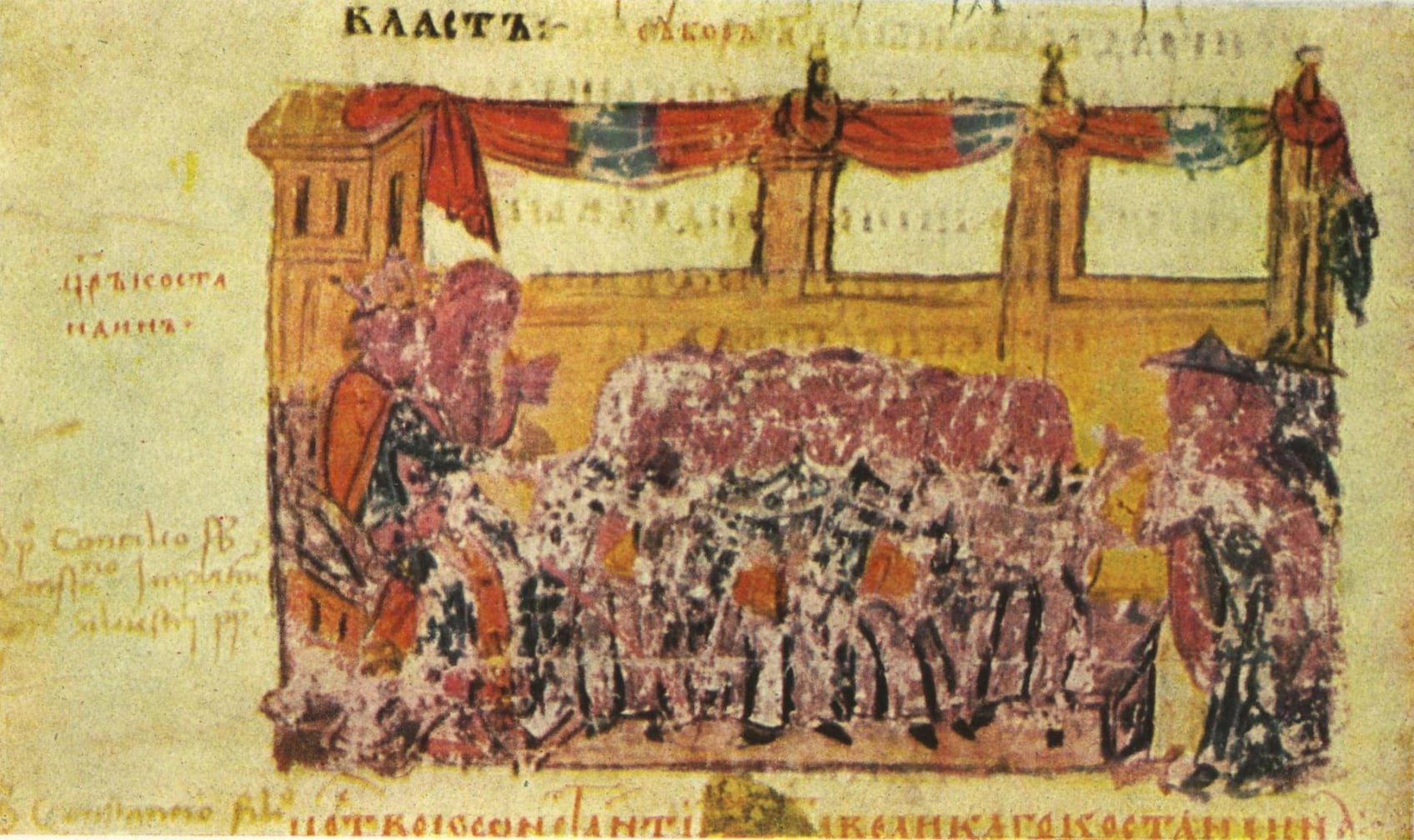
316
Emperor Min of Jin
Emperor Min of Jin executed, with northern China then controlled by various kingdoms founded by non-Han people. The Jin dynasty continues to rule the south.
Emperor Min of Jin (simplified Chinese: 晋愍帝; traditional Chinese: 晉愍帝; pinyin: Jìn Mǐn Dì; Wade–Giles: Chin Min-ti; 300 – February 7, 318), personal name Sima Ye (司馬鄴 or 司馬業), courtesy name Yanqi (彥旗), was an emperor of the Jin Dynasty (266–420) and the last of the Western Jin.
Emperor Min surrendered in 316 to Liu Yao, a general of the Xiongnu state Han-Zhao, and was later executed by Liu Cong, the emperor of Han, in 318 – like his uncle Emperor Huai had been in 313.
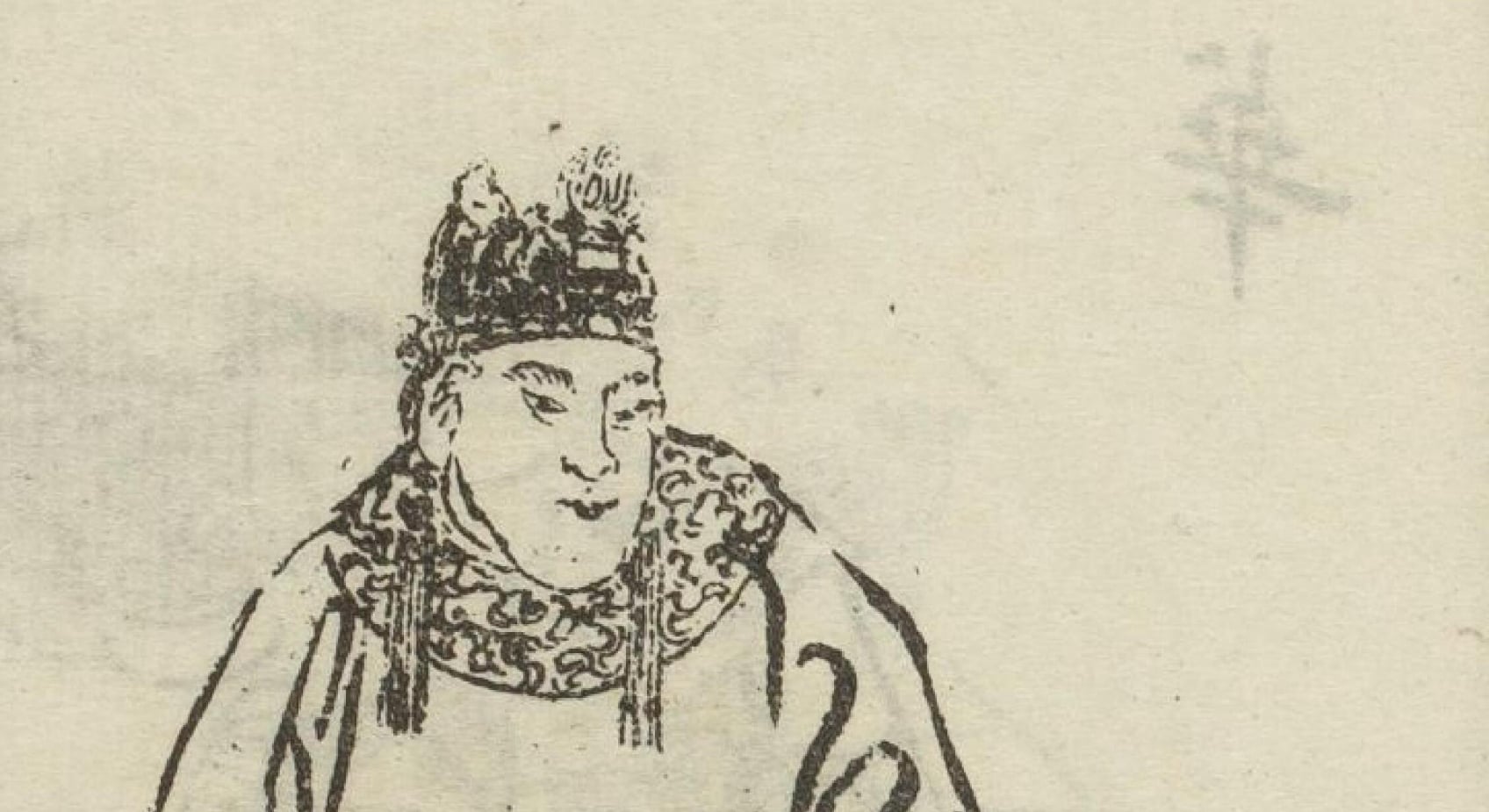
313
Edict of Milan
Edict of Milan declared that the Roman Empire would tolerate all forms of religious worship.
The Edict of Milan (Latin: Edictum Mediolanense; Greek: Διάταγμα τῶν Μεδιολάνων, Diatagma tōn Mediolanōn) was the February 313 AD agreement to treat Christians benevolently within the Roman Empire. Western Roman Emperor Constantine I and Emperor Licinius, who controlled the Balkans, met in Mediolanum (modern-day Milan) and, among other things, agreed to change policies towards Christians following the edict of toleration issued by Emperor Galerius two years earlier in Serdica. The Edict of Milan gave Christianity legal status and a reprieve from persecution but did not make it the state church of the Roman Empire, which occurred in AD 380 with the Edict of Thessalonica.
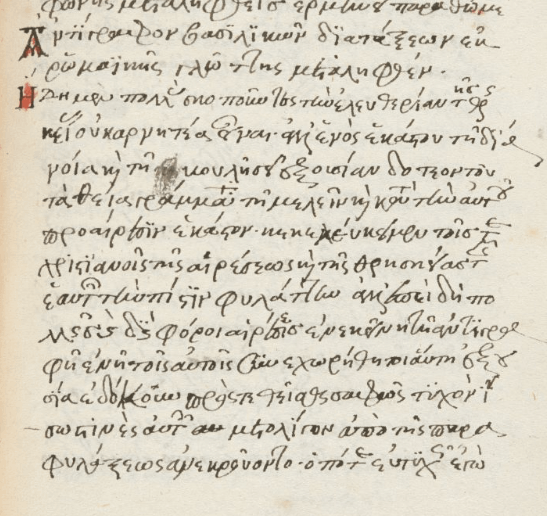
301
Armenian Apostolic Church
Armenia first to adopt Christianity as state religion.
The Armenian Apostolic Church (Armenian: Հայ Առաքելական Եկեղեցի, romanized: Hay Aṙak'elakan Yekeghetsi) is the national church of Armenia. Part of Oriental Orthodoxy, it is one of the most ancient Christian institutions. The Kingdom of Armenia was the first state to adopt Christianity as its official religion under the rule of King Tiridates III, of the Arsacid dynasty in the early 4th century. According to tradition, the church originated in the missions of Apostles Bartholomew and Thaddeus of Edessa in the 1st century. St. Gregory the Illuminator was the first official primate of the church. It is sometimes referred to as the Armenian Apostolic Orthodox Church, Armenian Church or Armenian Gregorian Church.
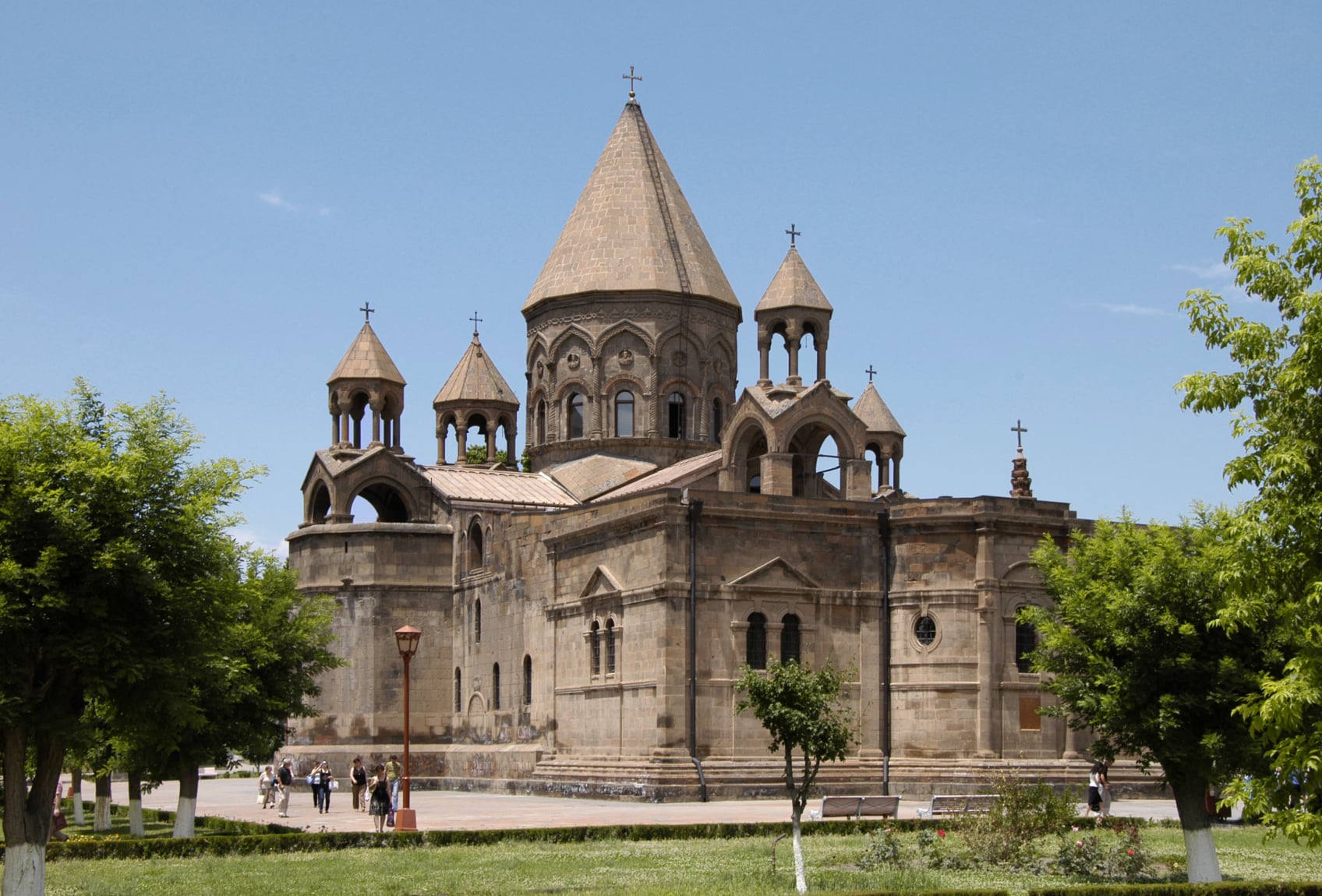
301
Edict on Maximum Prices
Diocletian's edict on maximum prices.
The Edict on Maximum Prices (Latin: Edictum de Pretiis Rerum Venalium, "Edict Concerning the Sale Price of Goods"; also known as the Edict on Prices or the Edict of Diocletian) was issued in 301 AD by Diocletian. The document denounces monopolists and sets maximum prices and wages for all important articles and services.
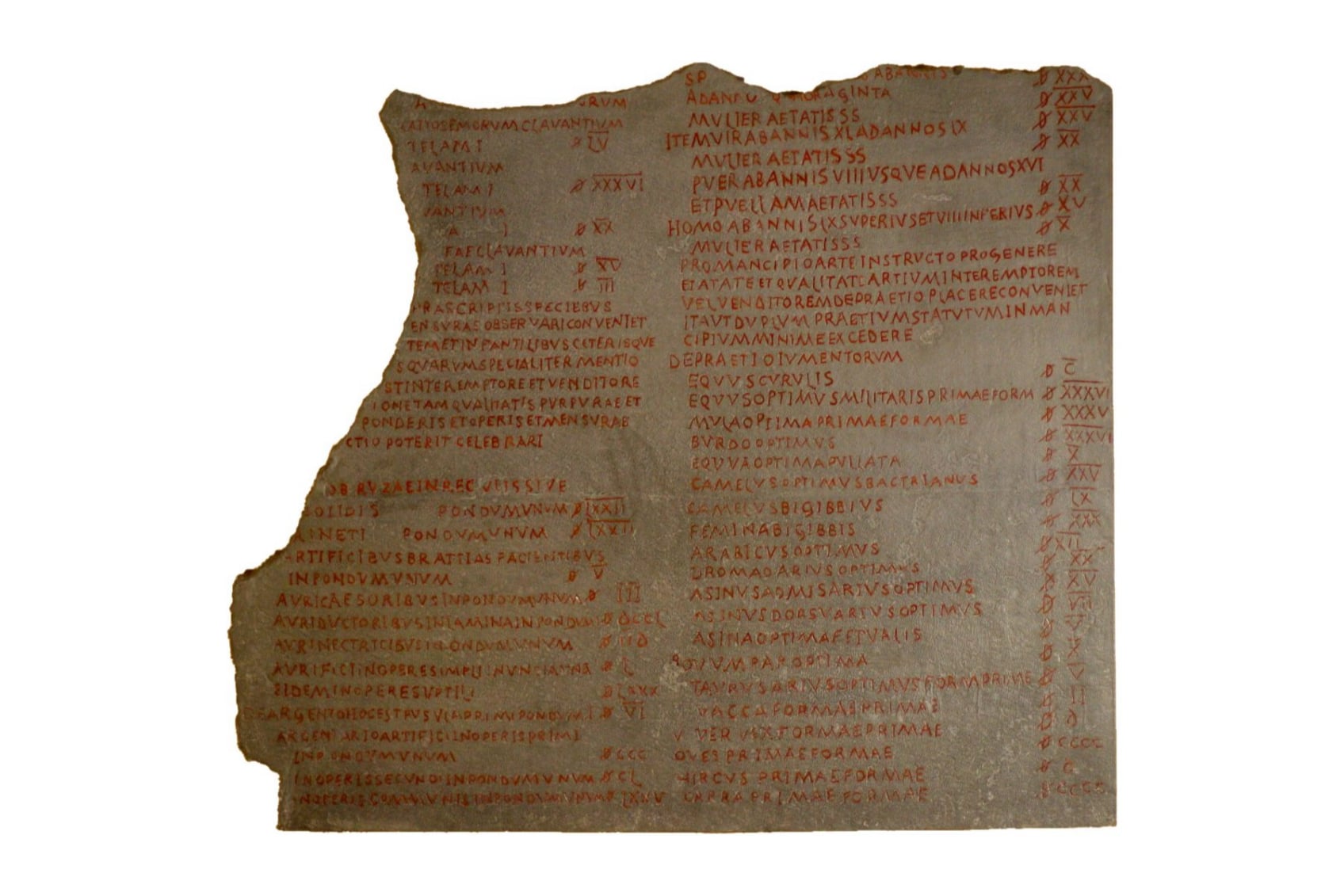
300 – 1000
Azania & Zanj
Growth of Azanian and Zanj settlements in the Swahili coast. Local industry and international trade flourish.
Azania (Ancient Greek: Ἀζανία) is a name that has been applied to various parts of southeastern tropical Africa. In the Roman period and perhaps earlier, the toponym has been hypothesised to have referred to a portion of the Southeast Africa coast extending from southern Somalia to the border between Mozambique and South Africa. If this is correct, then during classical antiquity Azania was mostly inhabited by Southern Cushitic peoples, whose groups would rule the area until the great Bantu Migration.
Zanj (Arabic: زَنْج, adj. زنجي, Zanjī; from Persian: زنگ, romanized: Zang) was a name used by medieval Muslim geographers to refer to both a certain portion of Southeast Africa (primarily the Swahili Coast) and to its Bantu inhabitants. This word is also the origin of the place-names Zanzibar ("coast of the Zanji") and the Sea of Zanj.
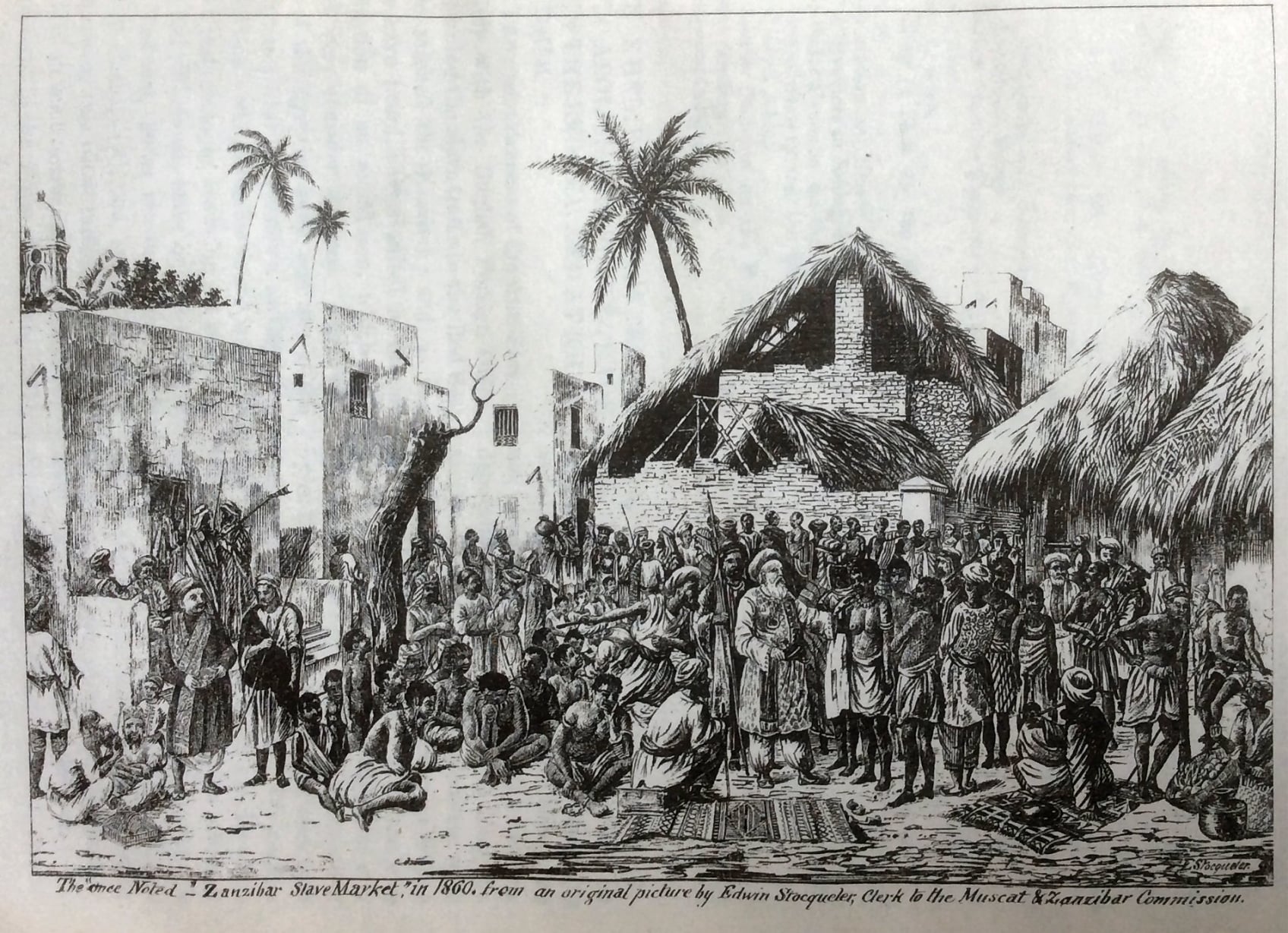
292
Mediolanum
The capital of the Roman empire is officially moved from Rome to Mediolanum (modern day Milan).
Mediolanum, the ancient city where Milan now stands, was originally an Insubrian city, but afterwards became an important Roman city in Northern Italy.
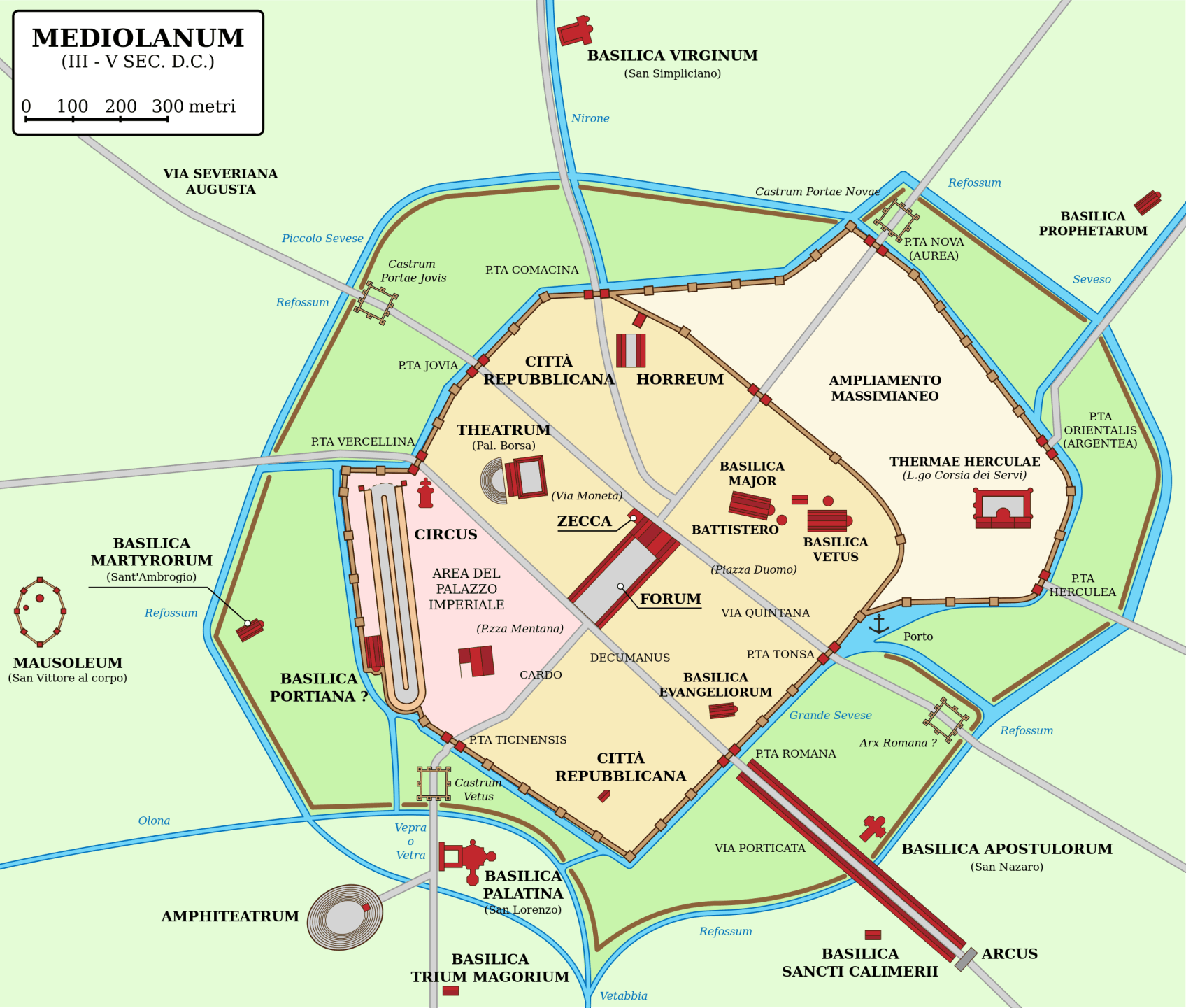
285
Diocletian
Diocletian becomes emperor of Rome and splits the Roman Empire into Eastern and Western Roman Empires.
Diocletian (242/245 – 311/312), nicknamed Jovius, was Roman emperor from 284 until his abdication in 305. He was born Diocles to a family of low status in the Roman province of Dalmatia. Diocles rose through the ranks of the military early in his career, eventually becoming a cavalry commander for the army of Emperor Carus. After the deaths of Carus and his son Numerian on a campaign in Persia, Diocles was proclaimed emperor by the troops, taking the name Diocletianus. The title was also claimed by Carus's surviving son, Carinus, but Diocletian defeated him in the Battle of the Margus.
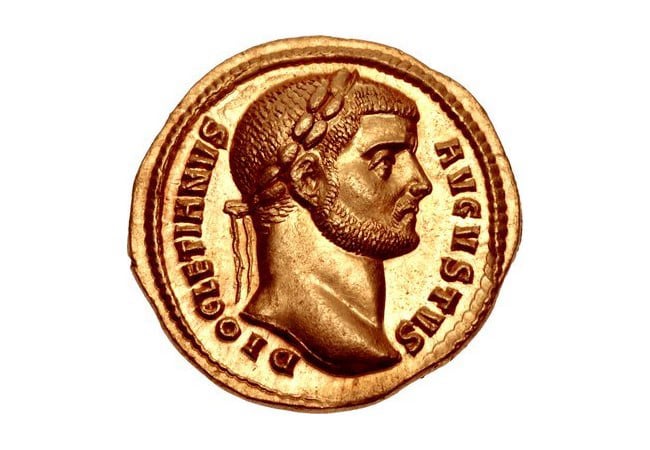
280
Jin dynasty
The Jin dynasty ([tɕîn]; Chinese: 晉朝; pinyin: Jìn cháo) or the Jin Empire, sometimes distinguished as the Sima Jin (司馬晉) or the Two Jins (兩晉), was an imperial dynasty in China that existed from 266 to 420. It was founded by Sima Yan, eldest son of Sima Zhao, who had previously been declared the King of Jin. There are two main divisions in the history of the dynasty. The Western Jin (266–316) was established as the successor to Cao Wei after Sima Yan usurped the throne from Cao Huan and took the title of Emperor Wu. The capital of the Western Jin was initially in Luoyang, though it later moved to Chang'an (modern Xi'an). In 280, after conquering Eastern Wu, the Western Jin ended the Three Kingdoms period and reunited China proper for the first time since the end of the Han dynasty.

238
Shapur I
Defeat of Gordian III (238–244), Philip the Arab (244–249), and Emperor Valerian (253–260), by Shapur I of Persia (Valerian was captured by the Persians).
Shapur I (also spelled Shabuhr I; Middle Persian: 𐭱𐭧𐭯𐭥𐭧𐭥𐭩, romanized: Šābuhr) was the second Sasanian King of Kings of Iran. The precise dating of his reign is disputed, but it is generally agreed that he ruled from 240 to 270, with his father Ardashir I as co-regent until the death of the latter in 242. During his co-regency, he helped his father with the conquest and destruction of the city of Hatra, whose fall was facilitated, according to Islamic tradition, by the actions of his future wife al-Nadirah. Shapur also consolidated and expanded the empire of Ardashir I, waged war against the Roman Empire, and seized its cities of Nisibis and Carrhae while he was advancing as far as Roman Syria. Although he was defeated at the Battle of Resaena in 243 by Roman emperor Gordian III (r. 238–244), he was the following year able to win the Battle of Misiche and force the new Roman emperor Philip the Arab (r. 244–249) to sign a favorable peace treaty that was regarded by the Romans as "a most shameful treaty".

226
Sasanian Empire
Fall of the Parthian Empire and Rise of the Sassanian Empire.
The Sasanian Empire or Sassanid Empire, also known as the Second Persian Empire or Neo-Persian Empire, was the last Iranian empire before the early Muslim conquests of the 7th to 8th centuries. Named after the House of Sasan, it endured for over four centuries, from 224 to 651, making it the second longest-lived Persian imperial dynasty after the Arsacids of the Parthian Empire.

200
Three Kingdoms
Three Kingdoms period begins in China after the fall of Han dynasty.
The Three Kingdoms (simplified Chinese: 三国; traditional Chinese: 三國; pinyin: Sān Guó) from 220 to 280 AD was the tripartite division of China among the dynastic states of Cao Wei, Shu Han, and Eastern Wu. The Three Kingdoms period was preceded by the Eastern Han dynasty and was followed by the Western Jin dynasty. The short-lived state of Yan on the Liaodong Peninsula, which lasted from 237 to 238, is sometimes considered as a "4th kingdom".
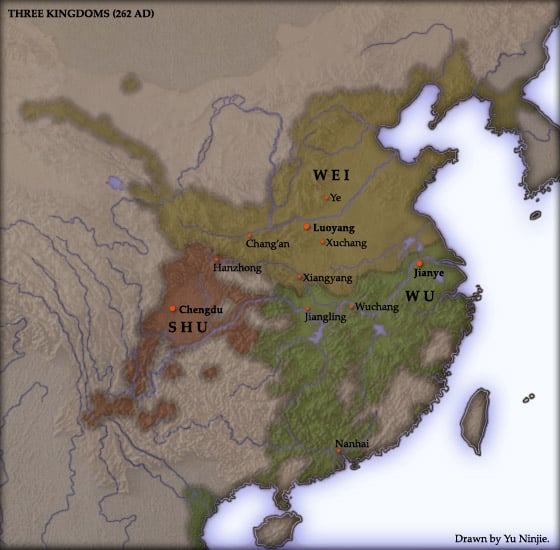
200s
Srivijaya
The Buddhist Srivijaya Empire established in Maritime Southeast Asia.
Srivijaya (Indonesian: Sriwijaya), also spelled Sri Vijaya, was a Buddhist thalassocratic empire based on the island of Sumatra (in modern-day Indonesia) that influenced much of Southeast Asia. Srivijaya was an important centre for the expansion of Buddhism from the 7th to 11th century AD. Srivijaya was the first polity to dominate much of western Maritime Southeast Asia. Due to its location, Srivijaya developed complex technology utilizing maritime resources. In addition, its economy became progressively reliant on the booming trade in the region, thus transforming it into a prestige goods-based economy.
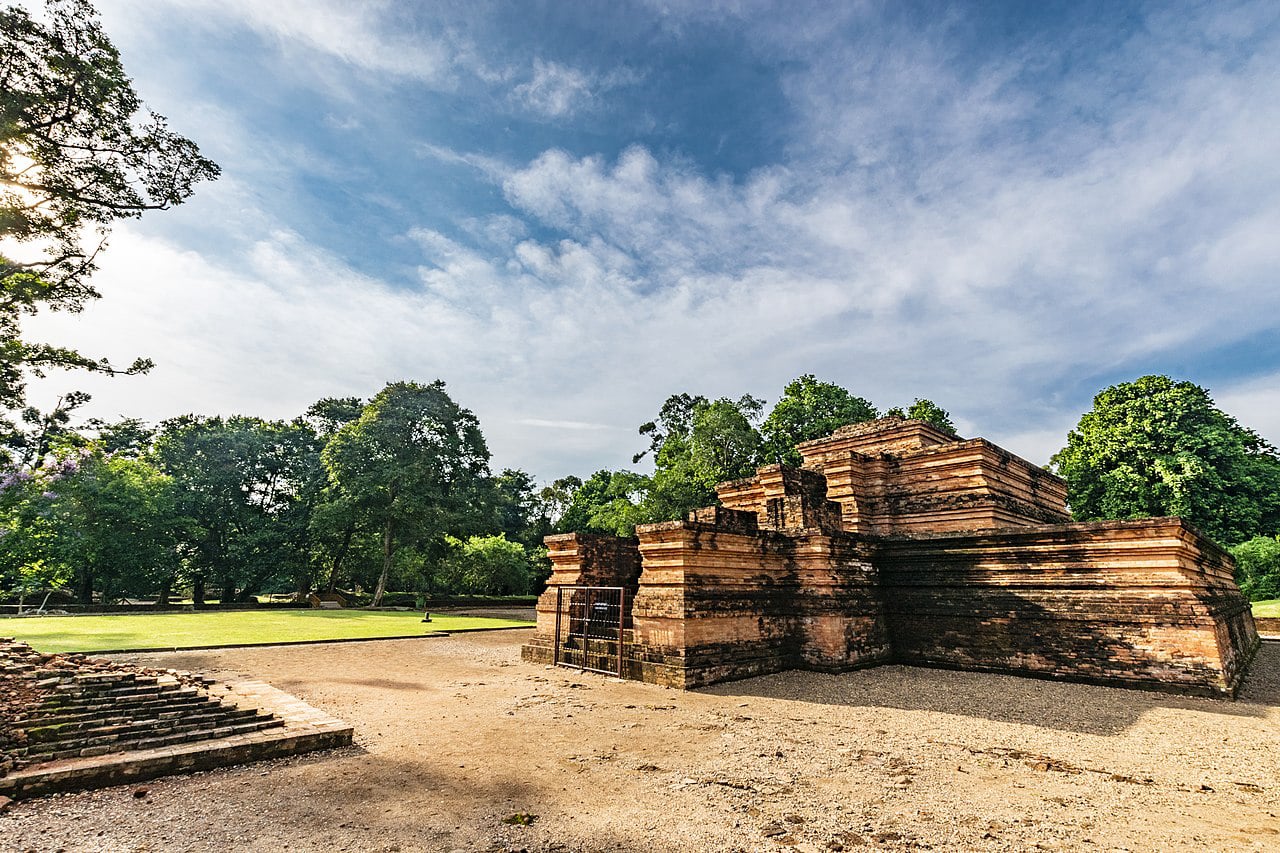
192
Champa
Kingdom of Champa in Tay Nguyen.
Champa was a collection of independent Cham polities that extended across the coast of what is present-day central and southern Vietnam from approximately the 2nd century AD until 1832. According to earliest historical references found in ancient sources, the first Cham polities were established around the 2nd to 3rd centuries CE, in the wake of Khu Liên's rebellion against the rule of China's Eastern Han dynasty, and lasted until when the final remaining principality of Champa was annexed by Emperor Minh Mạng of the Vietnamese Nguyễn dynasty as part of the expansionist Nam tiến policy. The kingdom was known variously as Nagaracampa (Sanskrit: नगरचम्प), Champa (ꨌꩌꨛꨩ) in modern Cham, and Châmpa (ចាម្ប៉ា) in the Khmer inscriptions, Chiêm Thành in Vietnamese and Zhànchéng (Mandarin: 占城) in Chinese records, and al-Ṣanf (Arabic: صَنْف) in Middle Eastern Muslim records.
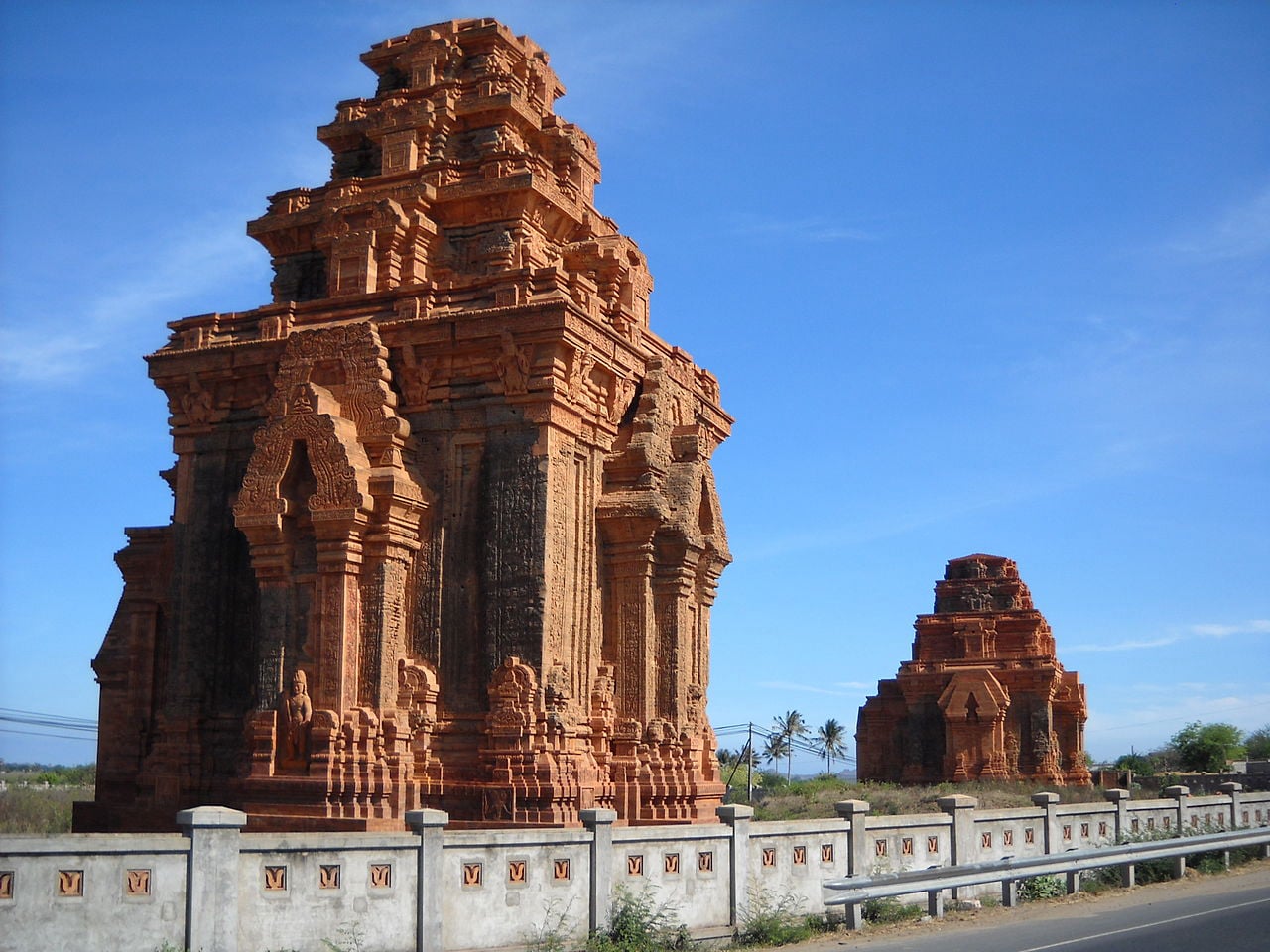
180 – 181
Commodus
Commodus becomes Roman Emperor.
Commodus (31 August 161 – 31 December 192) was a Roman emperor who ruled from 177 to 192. For the first three years of his reign he was co-emperor with his father Marcus Aurelius. Commodus' sole rule, starting with the death of Aurelius in 180, is commonly thought to mark the end of a golden age of peace and prosperity in the history of the Roman Empire (the Pax Romana).
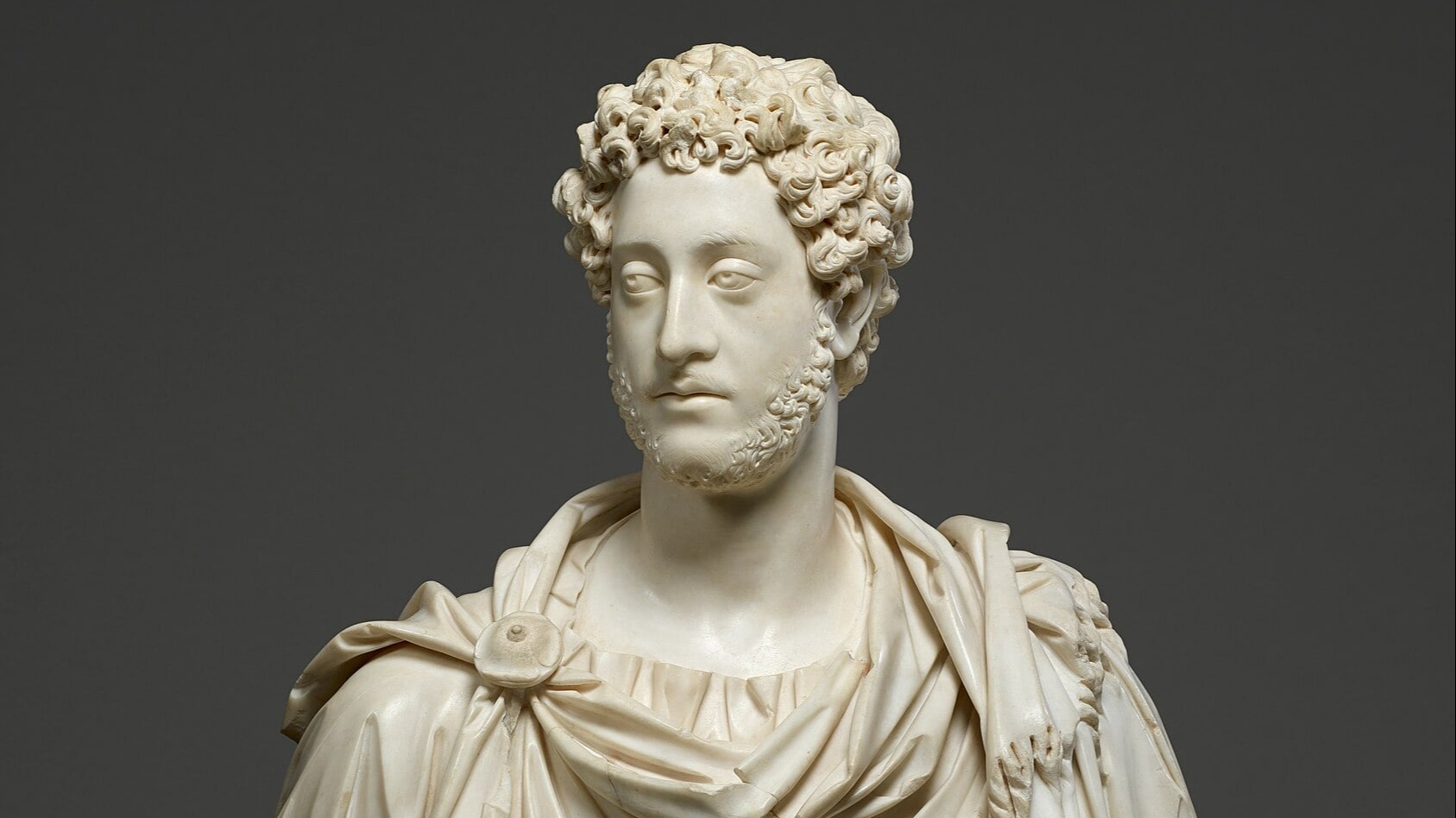
180
Death of Marcus Aurelius
Reign of Marcus Aurelius officially ends.
Marcus Aurelius died at the age of 58 on 17 March 180 of unknown causes in his military quarters either in the city of Vindobona (province of Pannonia Superior, today Vienna) or near Sirmium (province of Pannonia Inferior, modern Sremska Mitrovica). He was immediately deified and his ashes were returned to Rome, where they rested in Hadrian's mausoleum (modern Castel Sant'Angelo) until the Visigoth sack of the city in 410. His campaigns against Germans and Sarmatians were also commemorated by a column and a temple built in Rome. Some scholars consider his death to be the end of the Pax Romana.
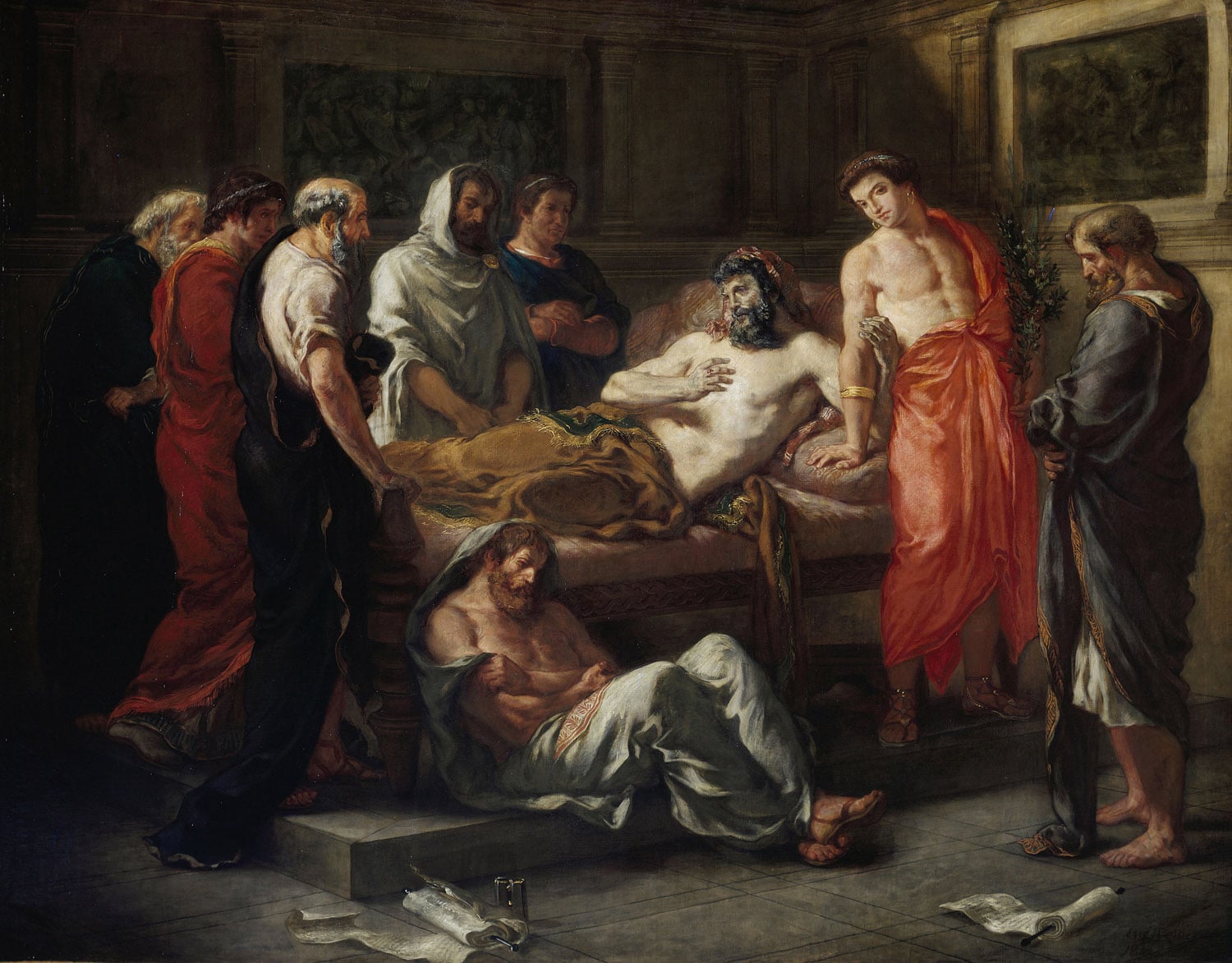
161
Marcus Aurelius
Marcus Aurelius becomes emperor of the Roman Empire.
Marcus Aurelius Antoninus (26 April 121 – 17 March 180) was Roman emperor from 161 to 180 and a Stoic philosopher. He was a member of the Nerva–Antonine dynasty, the last of the rulers later known as the Five Good Emperors and the last emperor of the Pax Romana, an age of relative peace, calm, and stability for the Roman Empire lasting from 27 BC to 180 AD. He served as Roman consul in 140, 145, and 161.
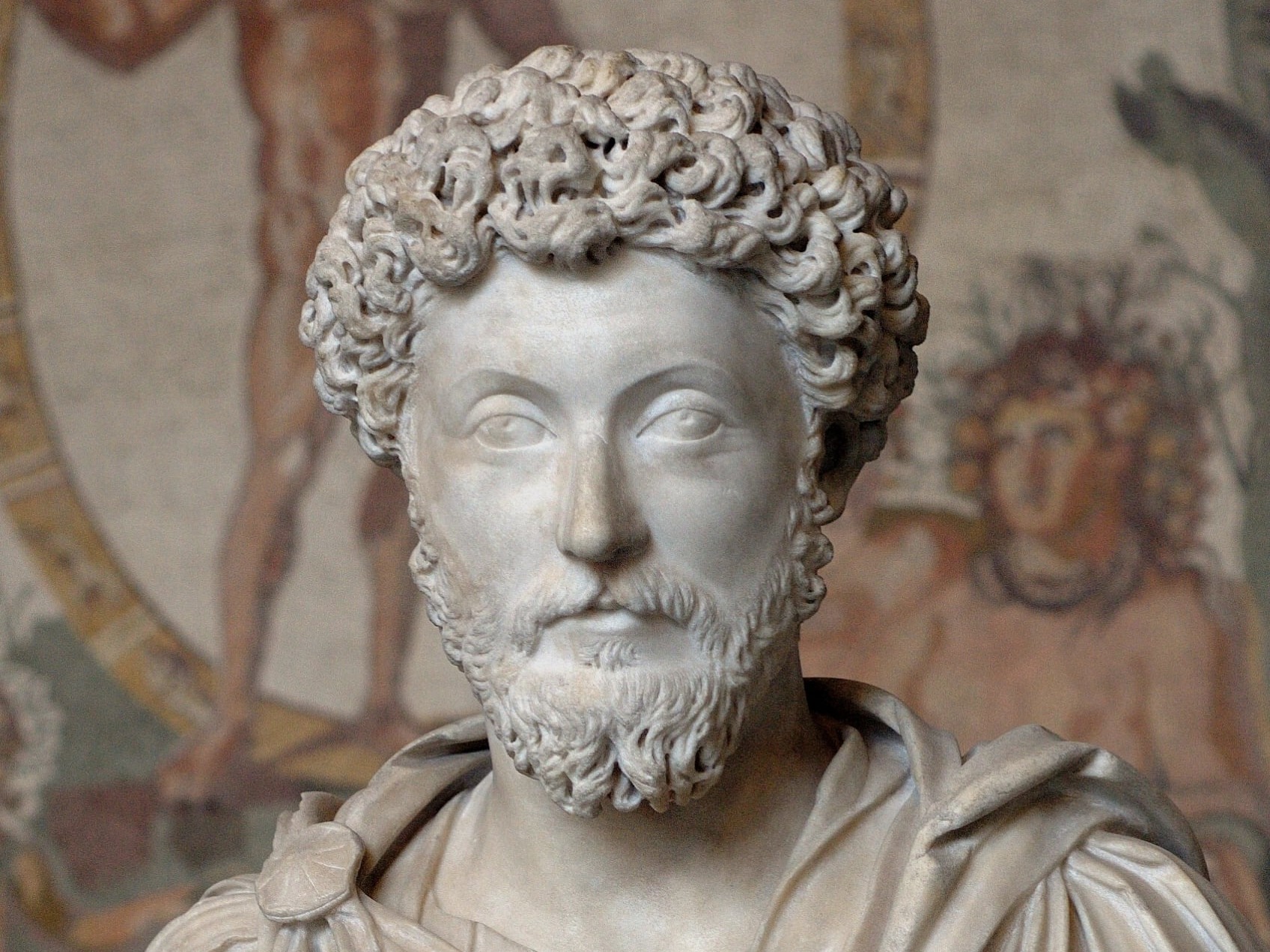
161
Death of Antoninus Pius
His rule was the only one in which Rome did not fight in a war.
Two days before his death, the biographer reports, Antoninus was at his ancestral estate at Lorium, in Etruria, about twelve miles (19 km) from Rome. He ate Alpine Gruyere cheese at dinner quite greedily. In the night he vomited; he had a fever the next day. The day after that, he summoned the imperial council, and passed the state and his daughter to Marcus. The emperor gave the keynote to his life in the last word that he uttered: when the tribune of the night-watch came to ask the password, he responded, "aequanimitas" (equanimity). He then turned over, as if going to sleep, and died. His death closed out the longest reign since Augustus (surpassing Tiberius by a couple of months). His record for the second-longest reign would be unbeaten for 168 years, until 329 when it was surpassed by Constantine the Great.
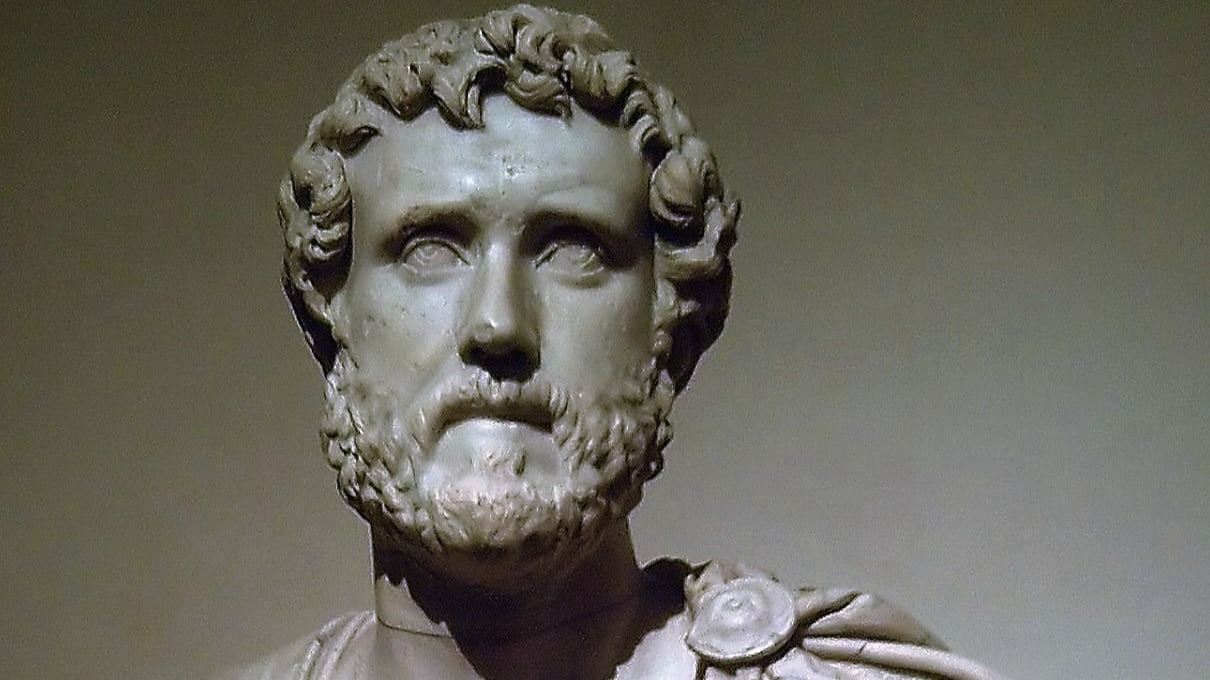
138
Antoninus Pius
Hadrian dies of natural causes. His adopted son Antoninus Pius succeeds him.
Titus Aelius Hadrianus Antoninus Pius (19 September AD 86 – 7 March 161) was Roman emperor from AD 138 to 161. He was the fourth of the Five Good Emperors from the Nerva–Antonine dynasty.
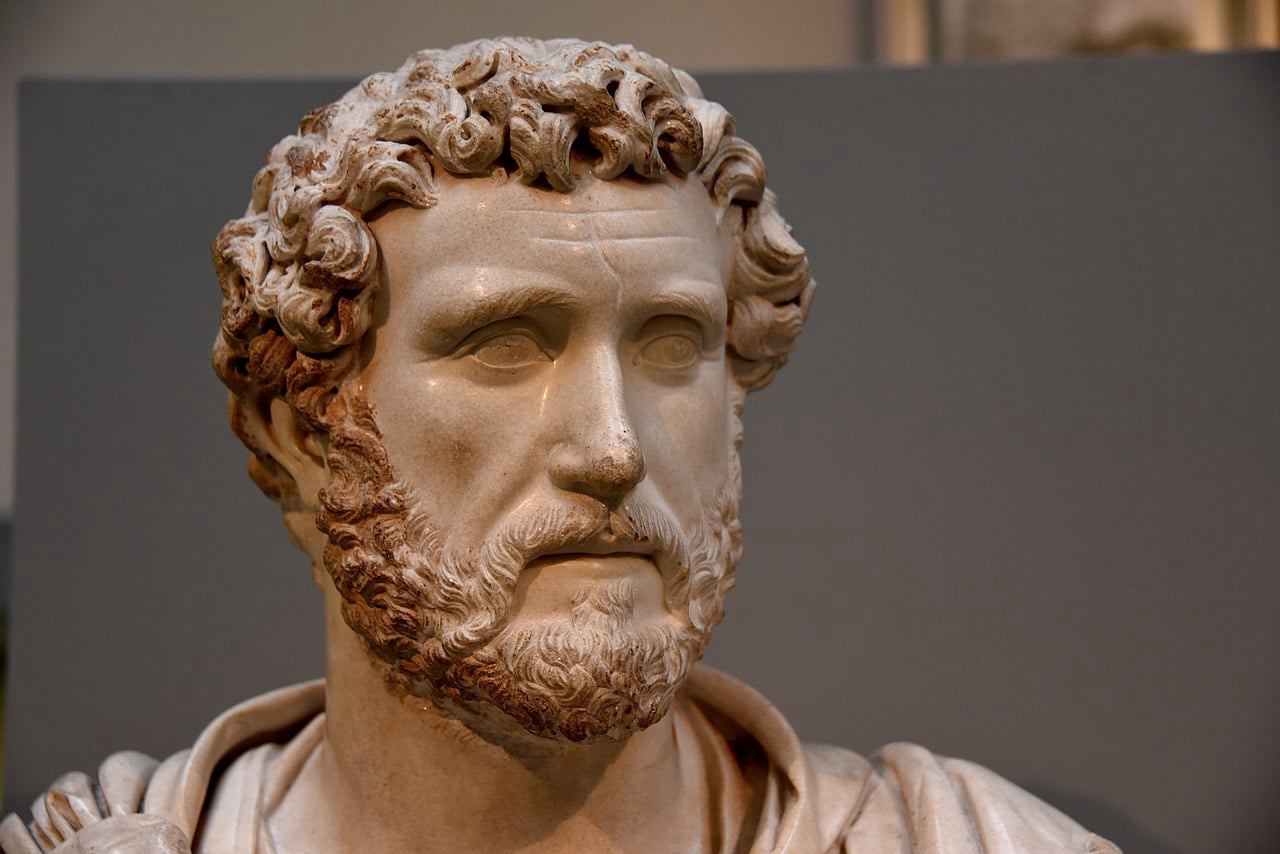
126
Pantheon, Rome
Hadrian completes the Roman Pantheon.
The Pantheon (Latin: Pantheum, from Greek Πάνθειον Pantheion, "[temple] of all the gods") is a former Roman temple and, since AD 609, a Catholic church (Basilica Santa Maria ad Martyres or Basilica of St. Mary and the Martyrs) in Rome, Italy. It was built on the site of an earlier temple commissioned by Marcus Agrippa during the reign of Augustus (27 BC – AD 14), then after that burnt down, the present building was ordered by the emperor Hadrian and probably dedicated c. AD 126. Its date of construction is uncertain, because Hadrian chose not to inscribe the new temple but rather to retain the inscription of Agrippa's older temple.

122
Hadrian's Wall
Construction of Hadrian's Wall begins.
Hadrian's Wall (Latin: Vallum Hadriani, also known as the Roman Wall, Picts' Wall, or Vallum Aelium in Latin) is a former defensive fortification of the Roman province of Britannia, begun in AD 122 in the reign of the Emperor Hadrian. Running from Wallsend on the River Tyne in the east to Bowness-on-Solway in the west of what is now northern England, it was a stone wall with large ditches in front of it and behind it that crossed the whole width of the island. Soldiers were garrisoned along the line of the wall in large forts, smaller milecastles, and intervening turrets. In addition to the wall's defensive military role, its gates may have been customs posts.
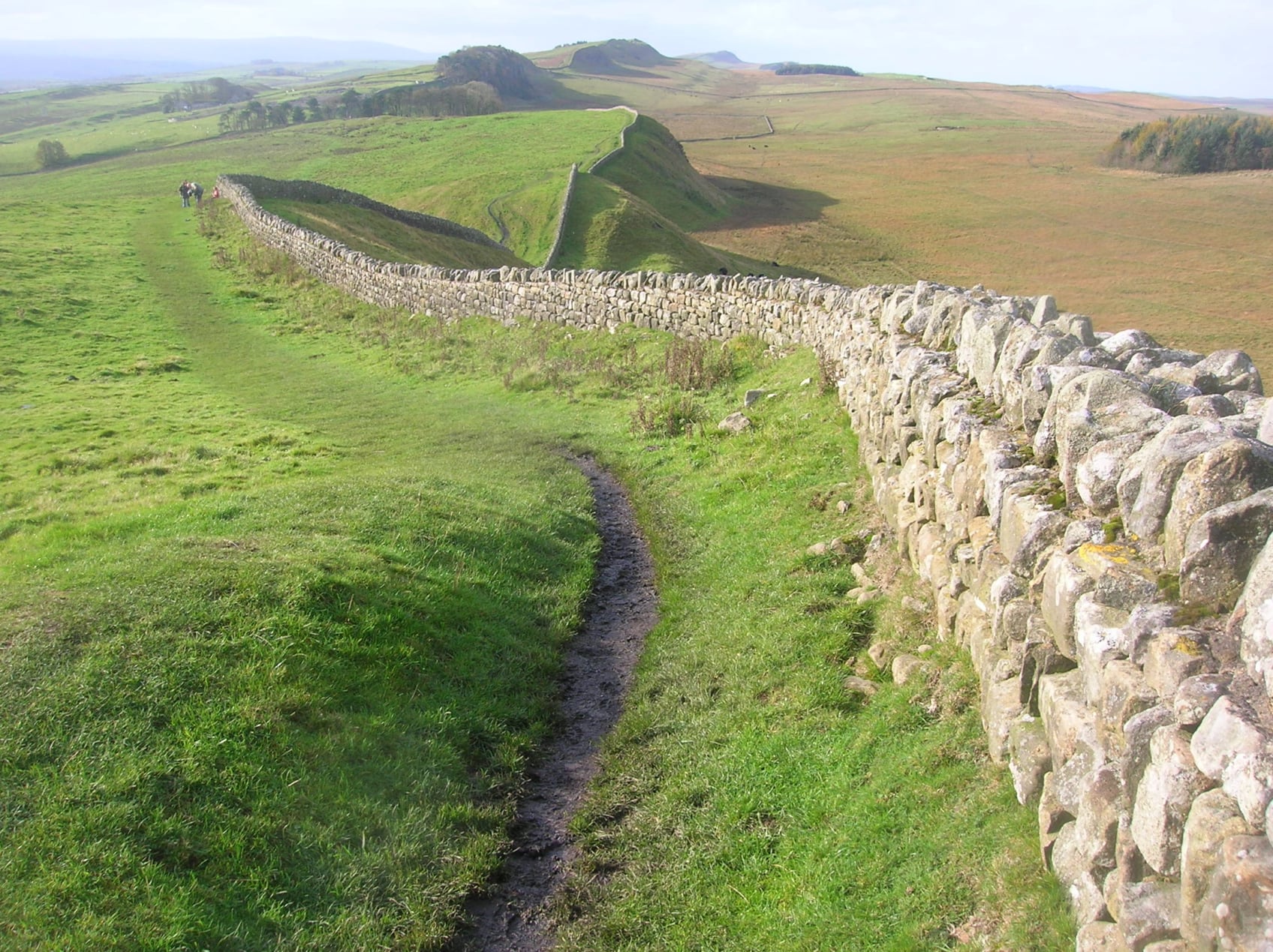
117
Hadrian
Trajan dies of natural causes. His adopted son Hadrian succeeds him. Hadrian pulls out of Iraq and Armenia.
Hadrian (24 January 76 – 10 July 138) was Roman emperor from 117 to 138. Hadrian was born in Italica, close to modern Seville in Spain, an Italic settlement in Hispania Baetica. He was a member of the Nerva-Antonine dynasty.
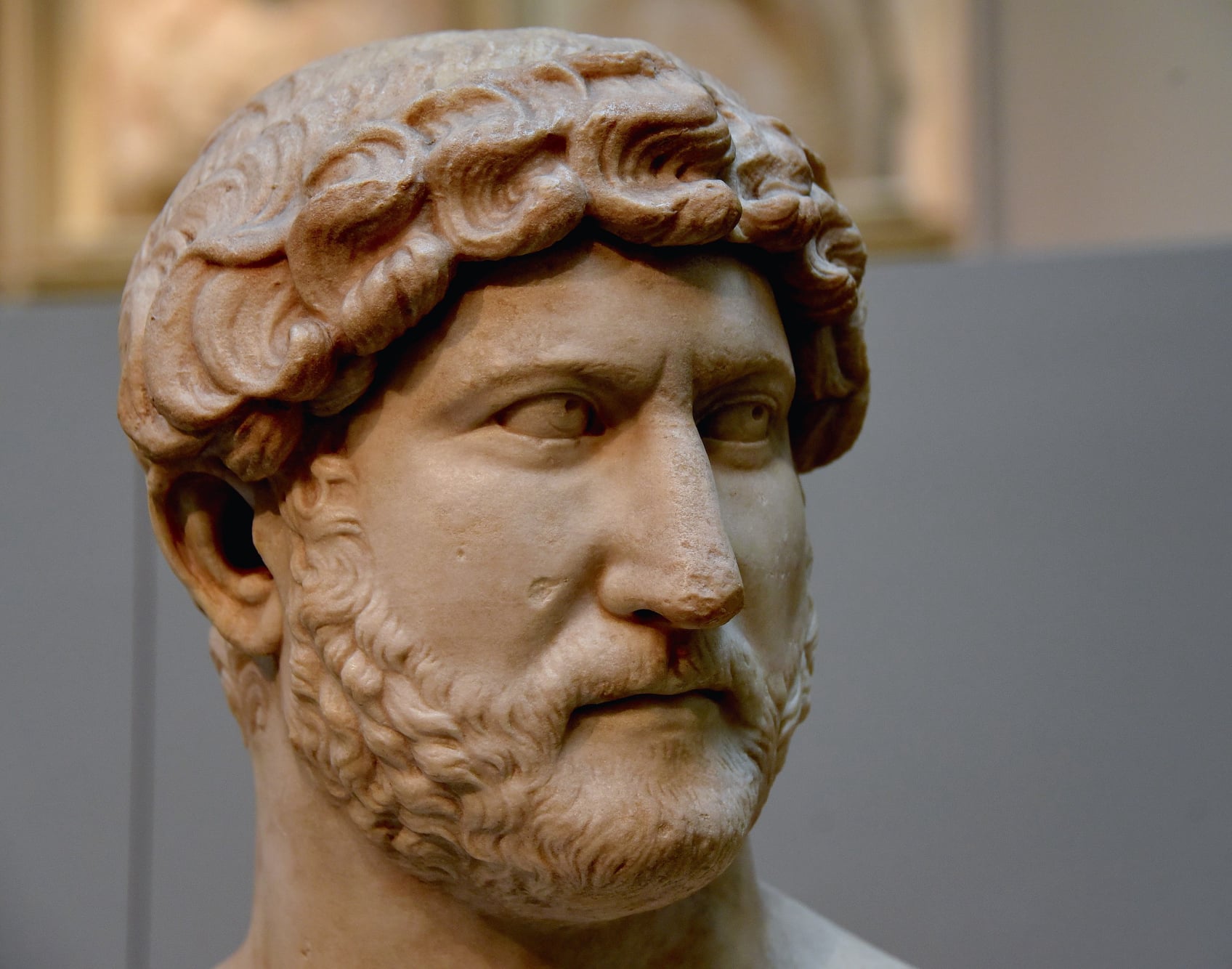
106 – 117
Trajan
Roman Empire at largest extent under Trajan after having conquered modern-day Romania, Iraq and Armenia.
Trajan (Latin: Traianus; 18 September 53 – c. 11 August 117) was a Roman emperor from AD 98 to 117, the second of the Five Good Emperors of the Nerva–Antonine dynasty. He was a philanthropic ruler and a successful soldier-emperor who led the Roman Empire to its greatest territorial extent by the time of his death. He was given the title of Optimus ('the best') by the Roman Senate.
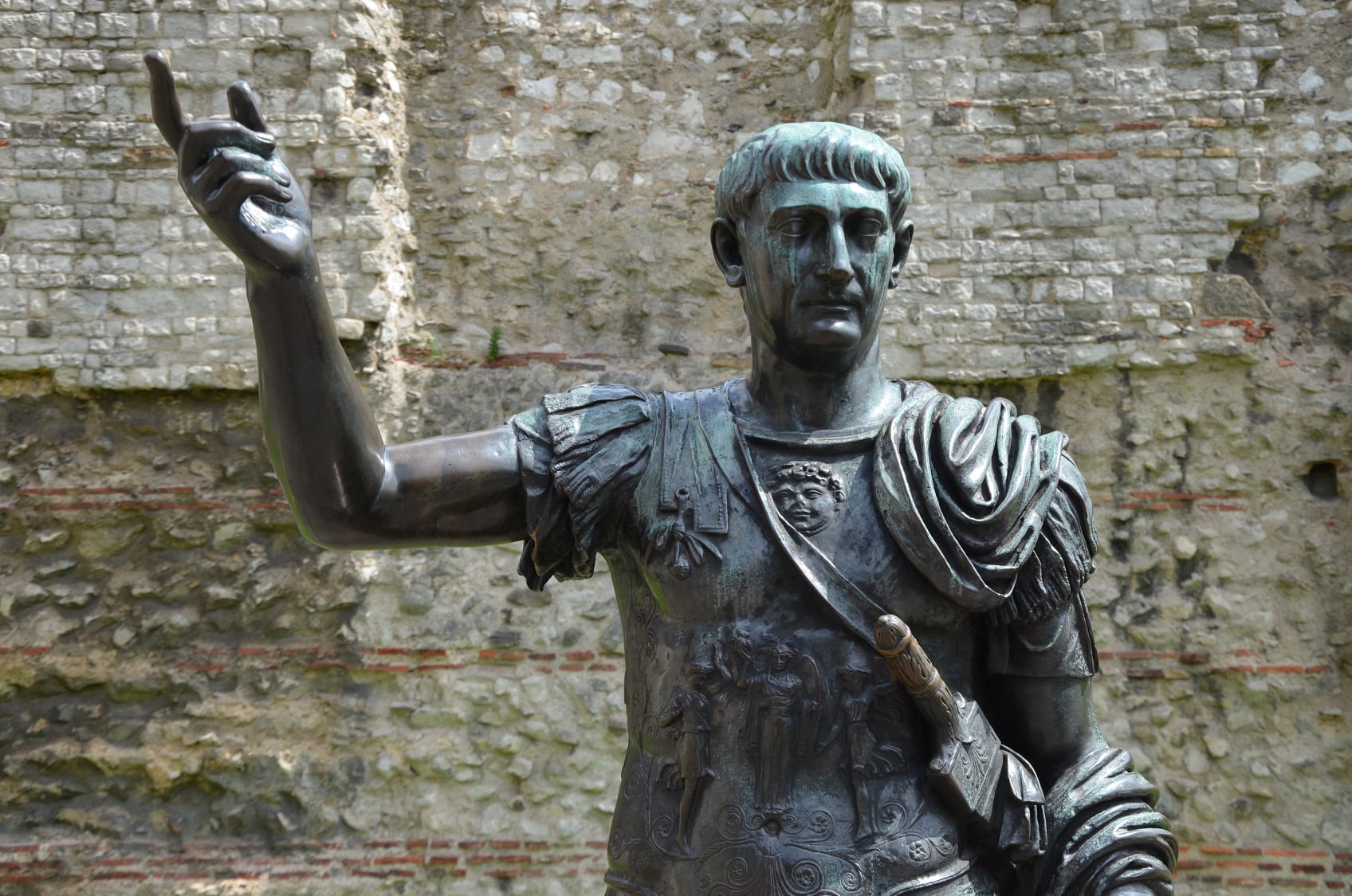
100 – 940
Kingdom of Aksum
Kingdom of Aksum forms in the Horn of Africa.
The Kingdom of Aksum, also known as the Kingdom of Axum, or the Aksumite Empire, was a kingdom in East Africa and South Arabia from Classical antiquity to the Middle Ages. Based in what is now Northern Ethiopia and Eritrea, and spanning present day Djibouti and Sudan, it extended at its height into much of Southern Arabia during the reign of Kaleb, King of Axum.
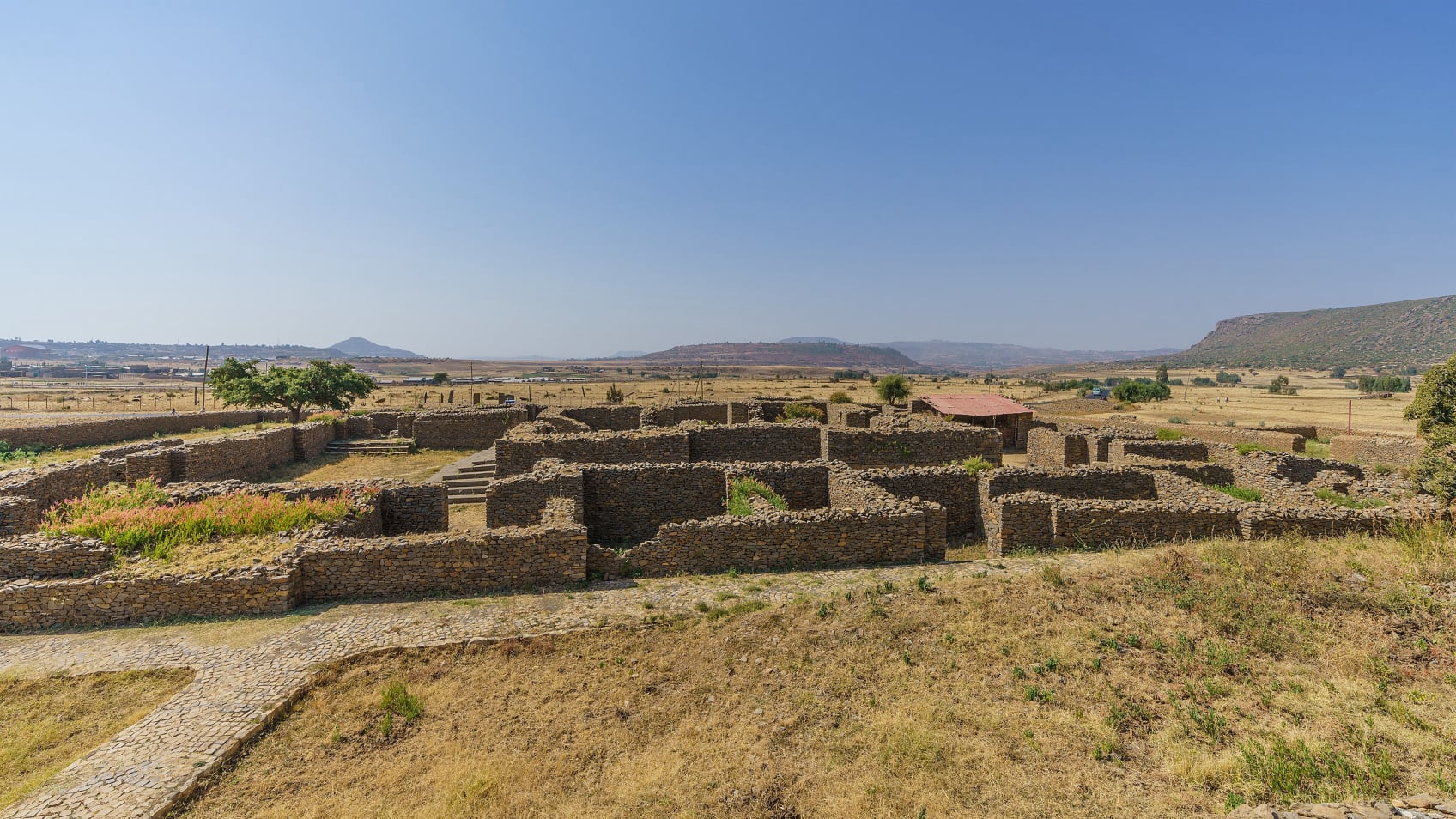
98 AD
Emperor Nerva dies
After a two-year rule, Emperor Nerva dies of natural causes, his adopted son Trajan succeeds him.
On 1 January 98, at the start of his fourth consulship, Nerva suffered a stroke during a private audience. Shortly thereafter he was struck by a fever and died at his villa in the Gardens of Sallust, on 27 January. He was deified by the Senate, and his ashes were laid to rest in the Mausoleum of Augustus. He was the last Roman emperor to be interred there. Nerva was succeeded without incident by his adopted son Trajan, who was greeted by the Roman populace with much enthusiasm. According to Pliny the Younger, Trajan dedicated a temple in honour of Nerva, yet no trace of it has ever been found; nor was a commemorative series of coins for the Deified Nerva issued until ten years after his death. According to Cassius Dio, however, the Guard prefect responsible for the mutiny against Nerva, Casperius Aelianus, was dismissed upon Trajan's accession.
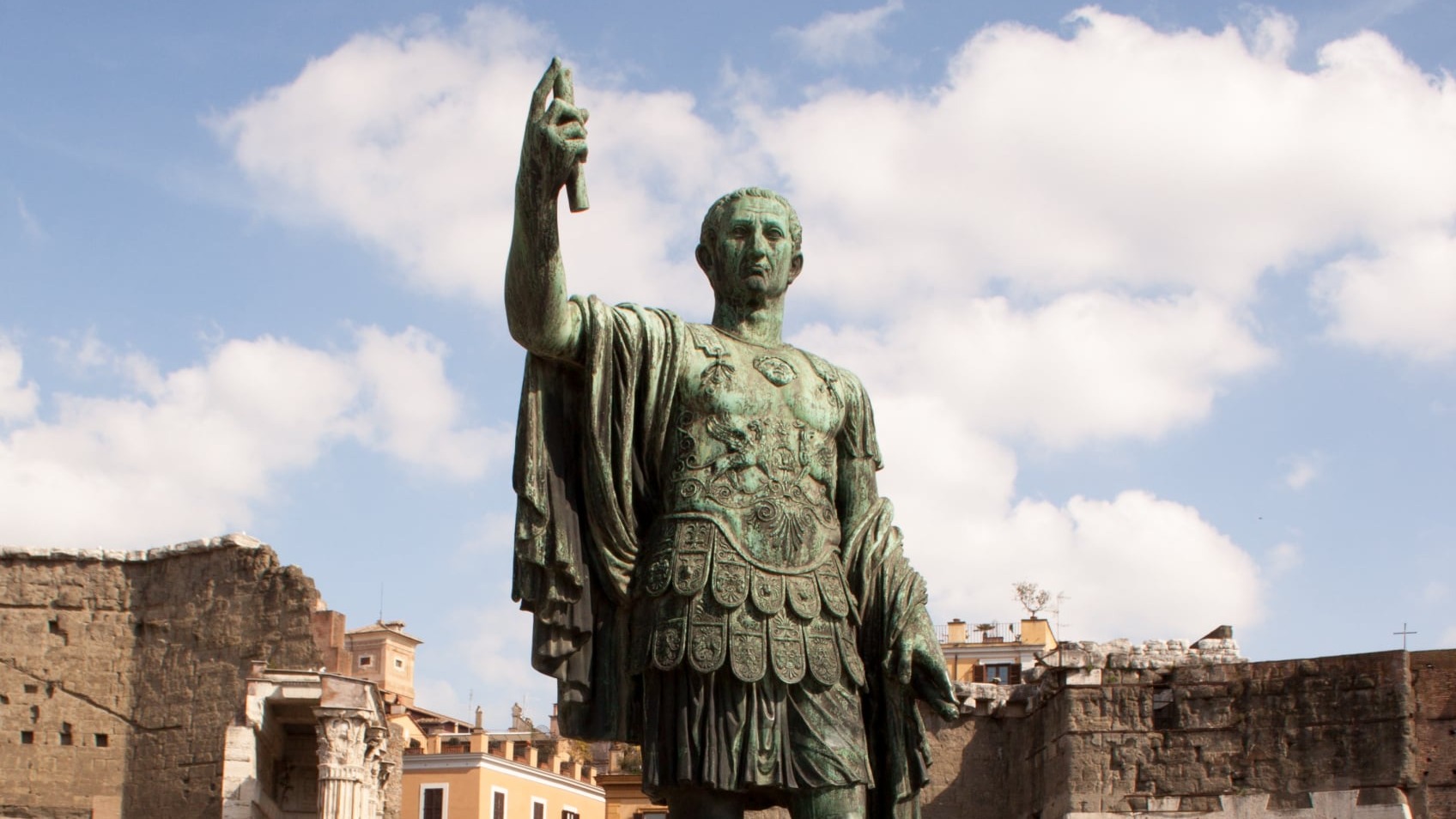
79 AD
Eruption of Mount Vesuvius
Destruction of Pompeii by the volcano Vesuvius.
Of the many eruptions of Mount Vesuvius, a major stratovolcano in southern Italy, the best-known is its eruption in 79 AD, which was one of the deadliest in history.
In autumn of 79 AD, Mount Vesuvius violently spewed forth a cloud of super-heated tephra and gases to a height of 33 km (21 mi), ejecting molten rock, pulverized pumice and hot ash at 1.5 million tons per second, ultimately releasing 100,000 times the thermal energy of the atomic bombings of Hiroshima and Nagasaki. The event gives its name to the Vesuvian type of volcanic eruption, characterised by columns of hot gases and ash reaching the stratosphere, although the event also included pyroclastic flows associated with Pelean eruptions.
The event destroyed several Roman towns and settlements in the area. Pompeii and Herculaneum, obliterated and buried underneath massive pyroclastic surges and ashfall deposits, are the most famous examples. Archaeological excavations have revealed much of the towns and the lives of the inhabitants leading to the area becoming the Vesuvius National Park and a UNESCO World Heritage Site.
The total population of both cities was over 20,000. The remains of over 1,500 people have been found at Pompeii and Herculaneum so far, although the total death toll from the eruption remains unknown.
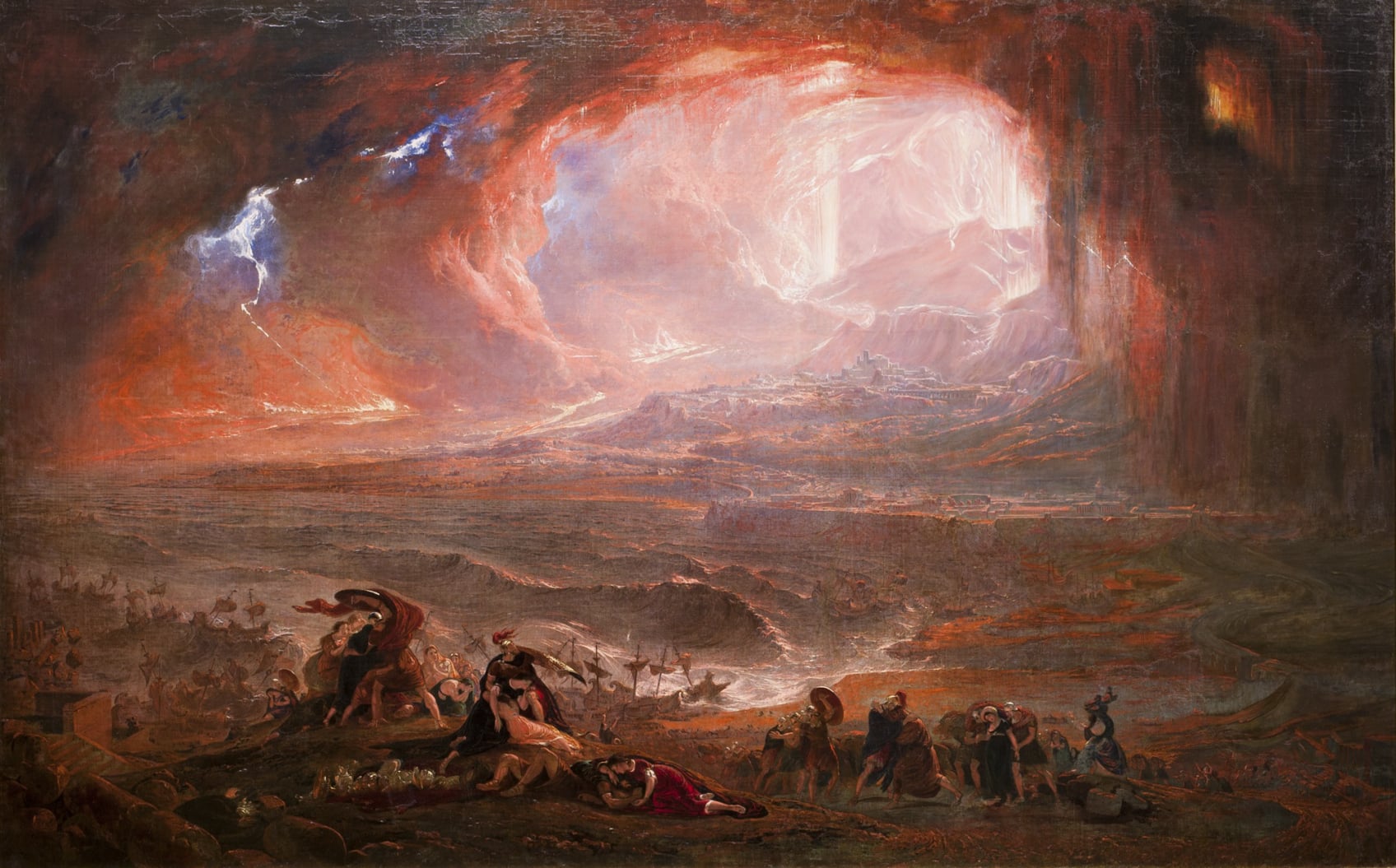
70 AD
Siege of Jerusalem
Destruction of Jerusalem by the armies of Titus.
The siege of Jerusalem of 70 CE was the decisive event of the First Jewish–Roman War (66–73 CE), in which the Roman army led by future emperor Titus besieged Jerusalem, the center of Jewish rebel resistance in the Roman province of Judaea. Following a five-month siege, the Romans destroyed the city and the Second Jewish Temple.
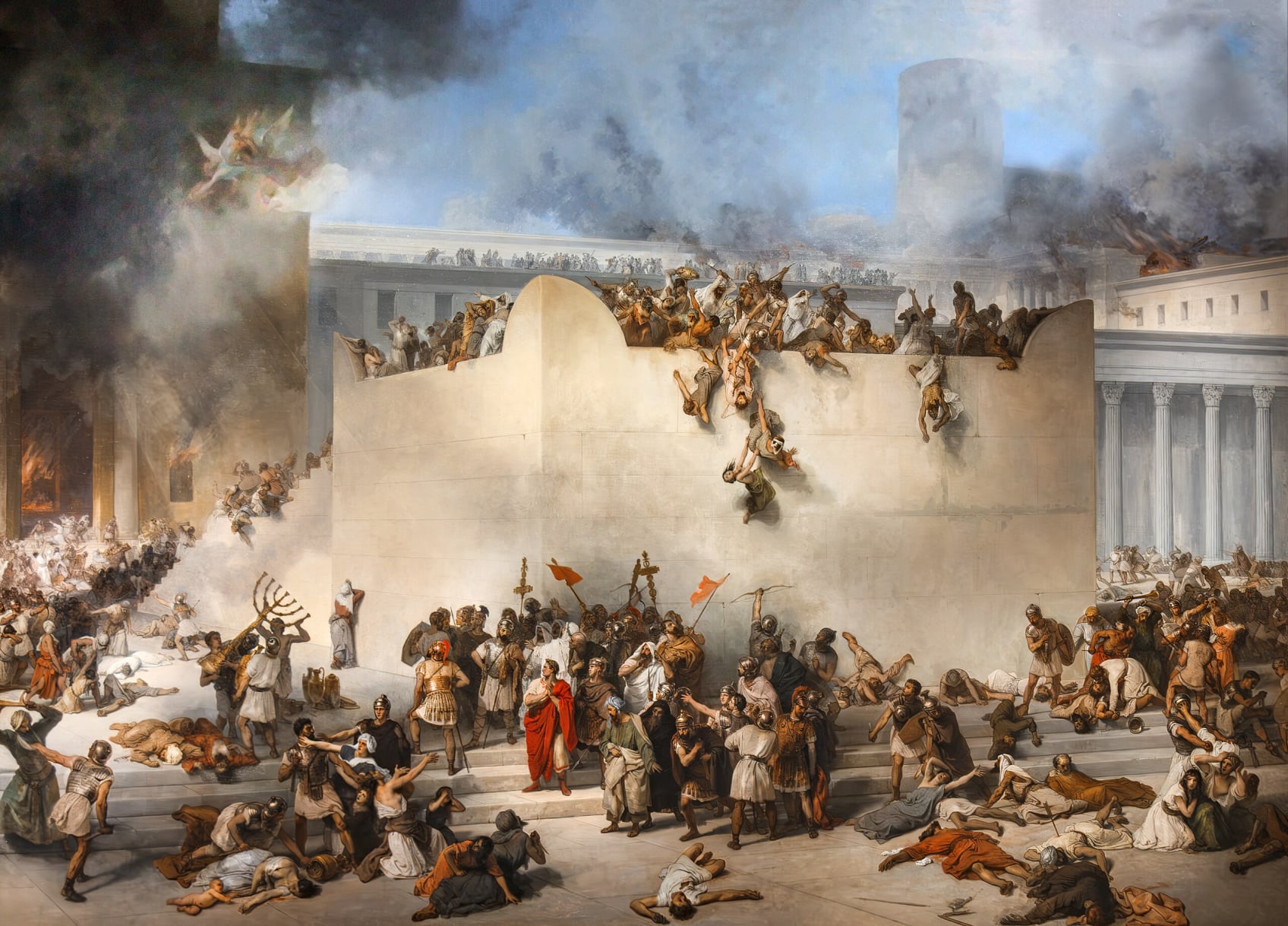
68 AD
Year of the Four Emperors
Emperor Nero commits suicide, prompting the Year of the Four Emperors in Rome.
The Year of the Four Emperors, AD 69, was the first civil war of the Roman Empire, during which four emperors ruled in succession: Galba, Otho, Vitellius, and Vespasian. It is considered an important interval, marking the transition from the Julio-Claudians, the first imperial dynasty, to the Flavian dynasty. The period witnessed several rebellions and claimants, with shifting allegiances and widespread turmoil in Rome and the provinces.
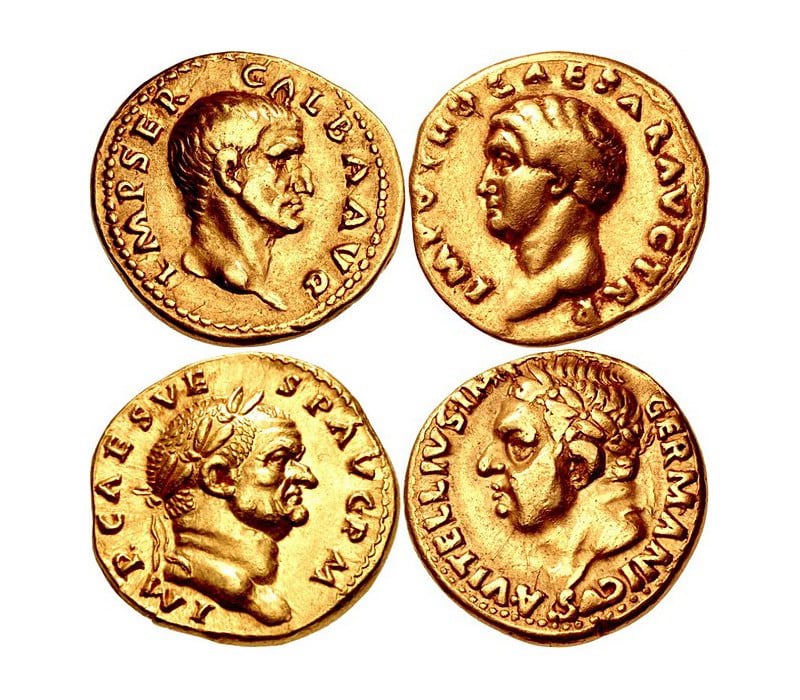
54 AD
Nero
Emperor Claudius dies and is succeeded by his grand nephew Nero.
Nero Claudius Caesar Augustus Germanicus (born Lucius Domitius Ahenobarbus; 15 December AD 37 – 9 June AD 68) was Roman emperor and the final emperor of the Julio-Claudian dynasty, reigning from AD 54 until his death in AD 68.
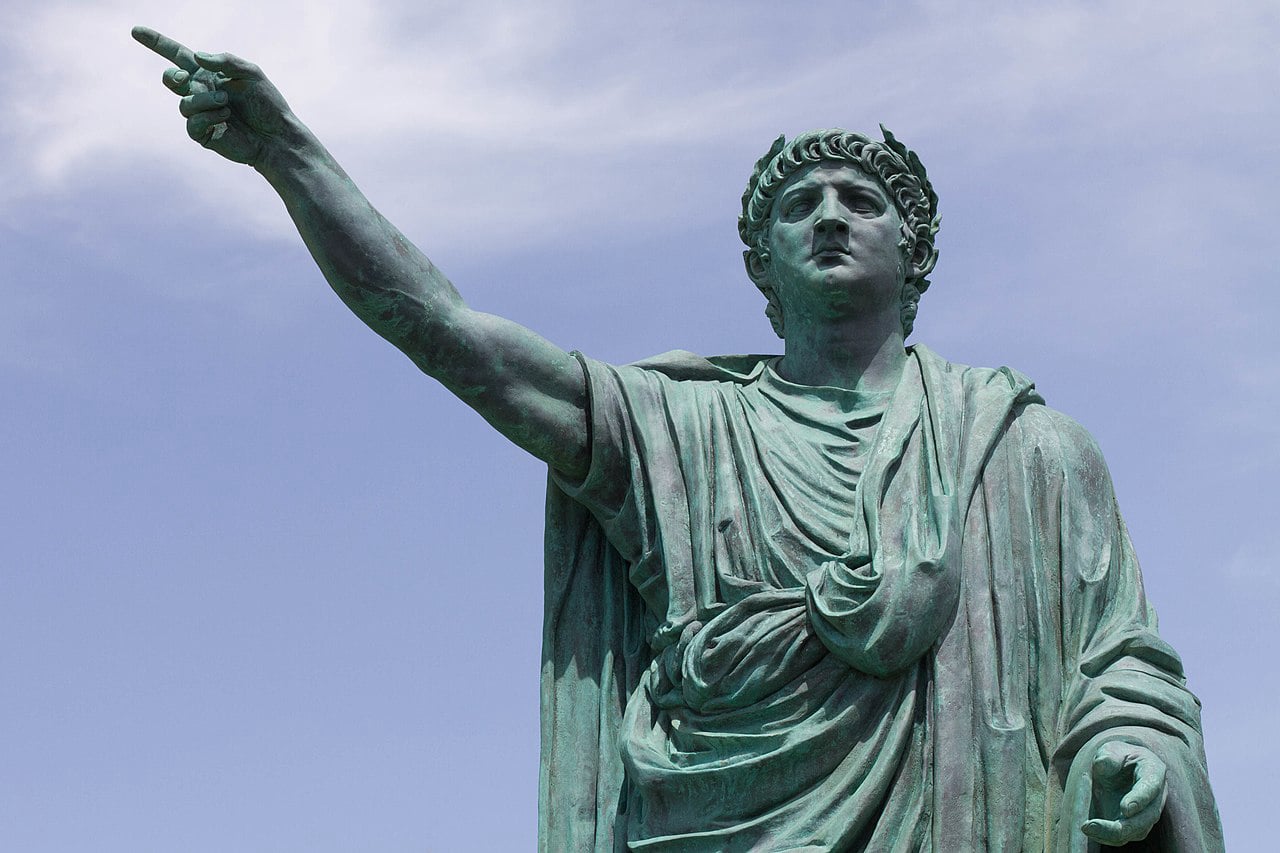
43 AD
Roman Britain
The Roman Empire enters Great Britain for the first time.
Roman Britain was the territory that became the Roman province of Britannia after the Roman conquest of Britain, consisting of a large part of the island of Great Britain. The occupation lasted from AD 43 to AD 410.
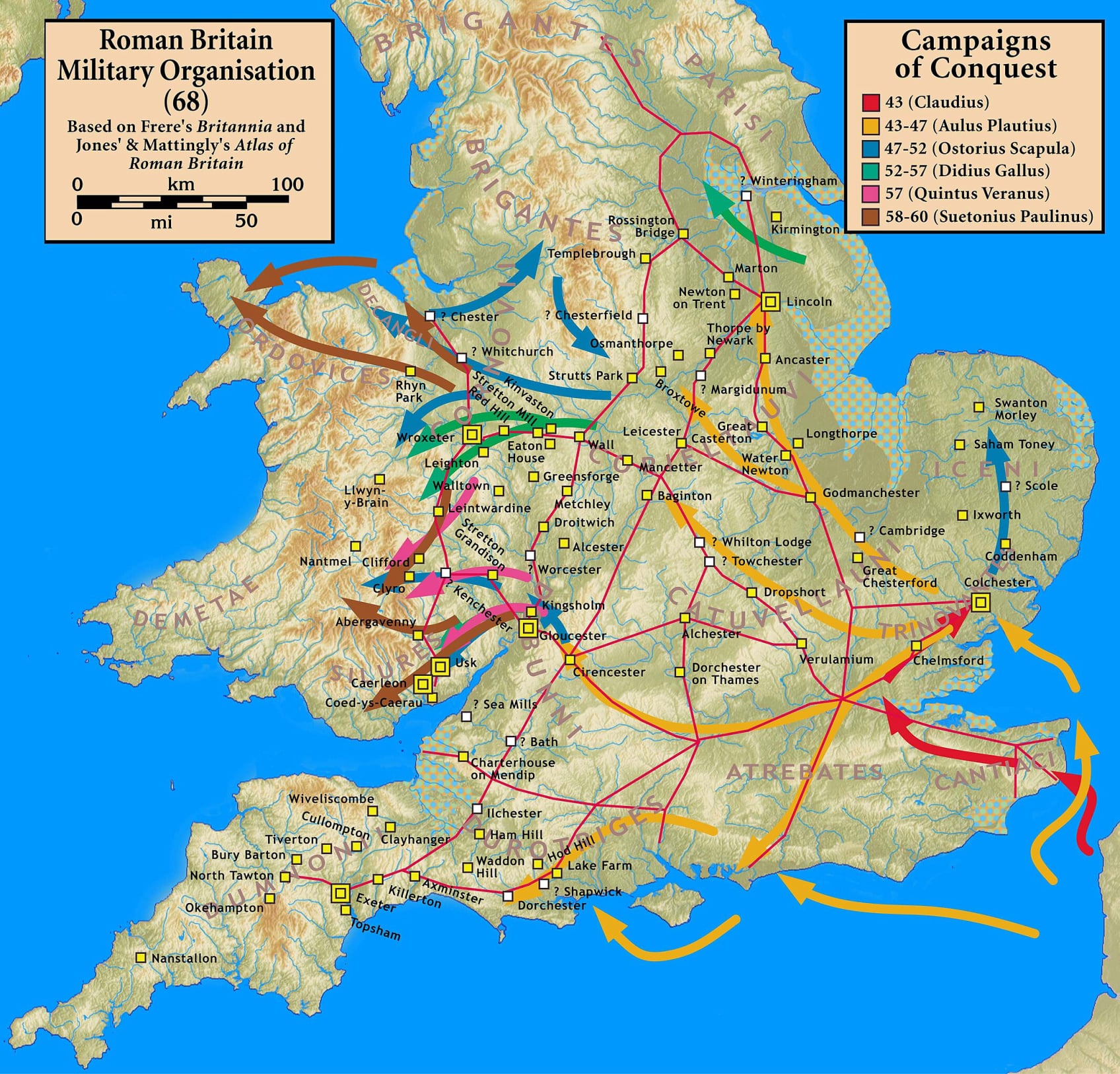
41 AD
Claudius
Emperor Caligula is assassinated by the Roman senate. His uncle Claudius succeeds him.
Tiberius Claudius Caesar Augustus Germanicus (1 August 10 BC – 13 October AD 54) was a Roman emperor, ruling from AD 41 to 54. A member of the Julio-Claudian dynasty, Claudius was born to Drusus and Antonia Minor at Lugdunum in Roman Gaul, where his father was stationed as a military legate. He was the first Roman emperor to be born outside Italy.

40 AD
Mauretania
Rome conquers Mauretania.
Mauretania is the Latin name for a region in the ancient Maghreb. It stretched from central present-day Algeria westwards to the Atlantic, covering northern present-day Morocco, and southward to the Atlas Mountains. Its native inhabitants, of Berber ancestry, were known to the Romans as the Mauri and the Masaesyli.

37 AD
Caligula
Death of Emperor Tiberius, ascension of his nephew Caligula to the throne.
Gaius Caesar Augustus Germanicus (31 August 12 – 24 January 41), better known by his nickname Caligula, was Roman emperor from AD 37 until his assassination in AD 41. He was the son of the Roman general Germanicus and Agrippina the Elder, Augustus' granddaughter, members of the first ruling family of the Roman Empire. He was born two years before Tiberius was made emperor. Gaius accompanied his father, mother and siblings on campaign in Germania, at little more than four or five years old. He had been named after Gaius Julius Caesar, but his father's soldiers affectionately nicknamed him "Caligula" ('little boot').
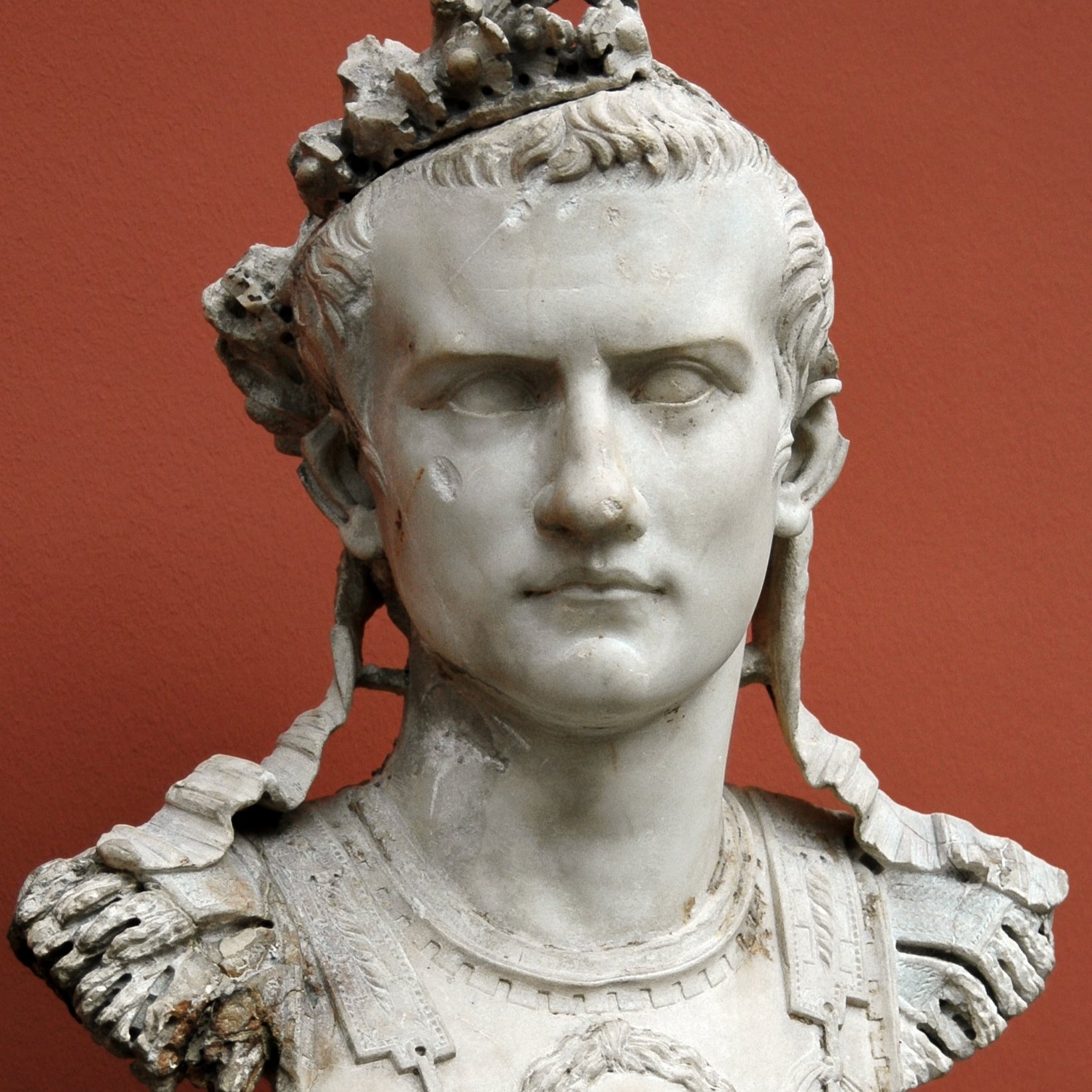
26 AD – 34 AD
Crucifixion of Jesus
Crucifixion of Jesus Christ, exact date unknown.
The crucifixion of Jesus was the execution by crucifixion of Jesus of Nazareth in 1st-century Judaea, most likely in AD 30 or AD 33. It is described in the four canonical gospels, referred to in the New Testament epistles, attested to by other ancient sources, and is broadly accepted as one of the events most likely to have occurred during his life. There is no consensus among historians on the details.
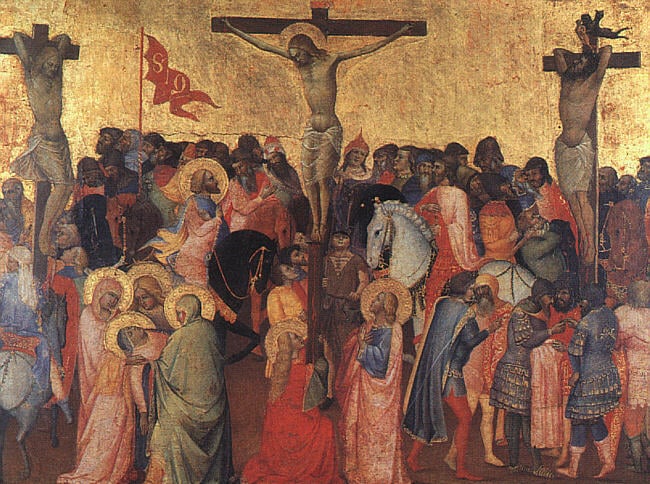
14 AD
Tiberius
Death of Roman Emperor Augustus Caesar (Octavian), ascension of his adopted son Tiberius to the throne.
Tiberius Julius Caesar Augustus (16 November 42 BC – 16 March AD 37) was Roman emperor from AD 14 until 37. He succeeded his stepfather Augustus, the first Roman emperor. Tiberius was born in Rome in 42 BC to Roman politician Tiberius Claudius Nero and his wife, Livia Drusilla. In 38 BC, Tiberius' mother divorced his father and married Augustus. Following the untimely deaths of Augustus' two grandsons and adopted heirs, Gaius and Lucius Caesar, Tiberius was designated Augustus' successor. Prior to this, Tiberius had proved himself an able diplomat, and one of the most successful Roman generals: his conquests of Pannonia, Dalmatia, Raetia, and (temporarily) parts of Germania laid the foundations for the empire's northern frontier.
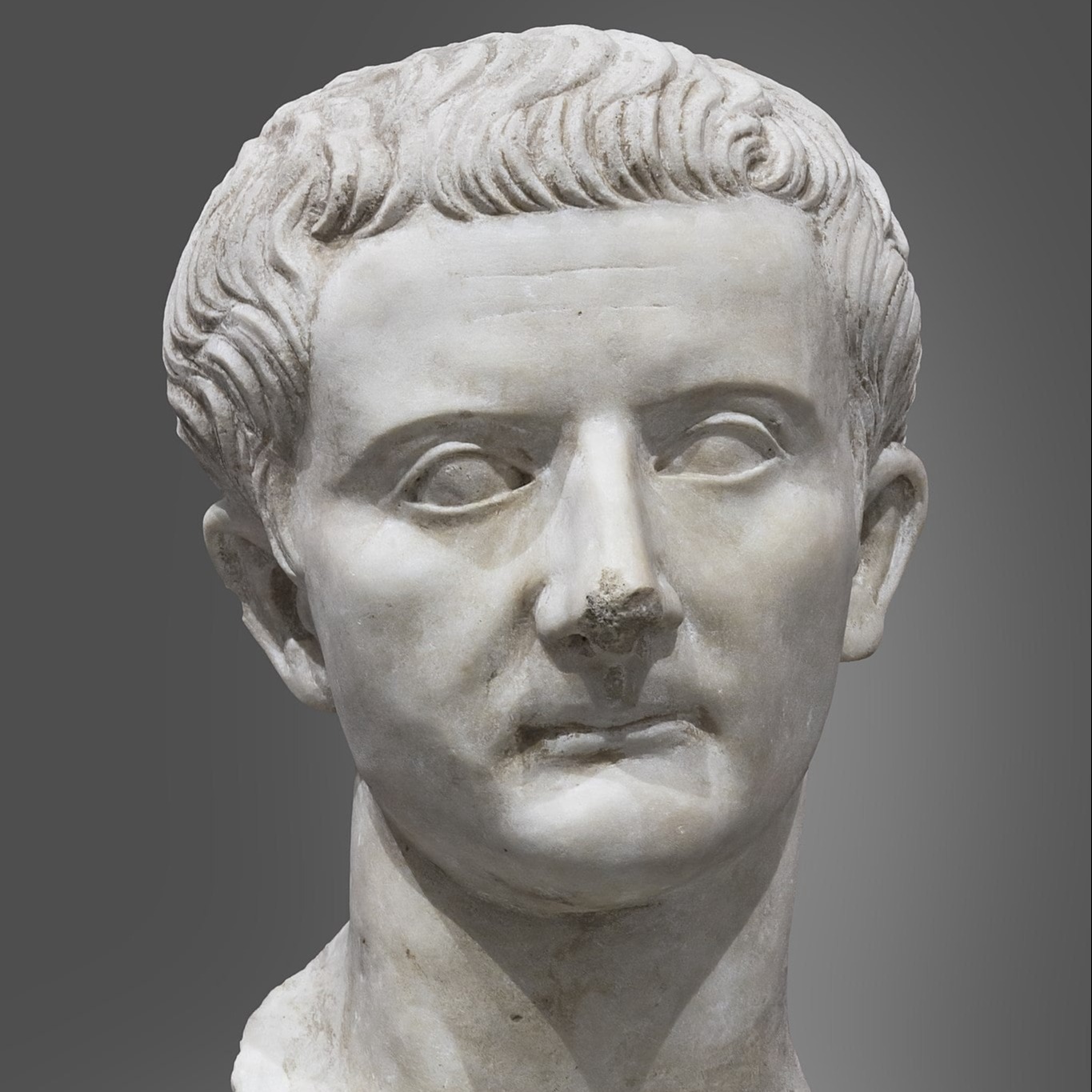
9 AD
Battle of the Teutoburg Forest
Battle of the Teutoburg Forest, the Imperial Roman Army's bloodiest defeat.
The Battle of the Teutoburg Forest, described as the Varian Disaster (Latin: Clades Variana) by Roman historians, was a major battle between Germanic tribes and the Roman Empire that took place somewhere near modern Kalkriese from September 8–11, 9 AD, when an alliance of Germanic peoples ambushed three Roman legions led by Publius Quinctilius Varus and their auxiliaries. The alliance was led by Arminius, a Germanic officer of Varus's auxilia. Arminius had acquired Roman citizenship and had received a Roman military education, which enabled him to deceive the Roman commander methodically and anticipate the Roman army's tactical responses.
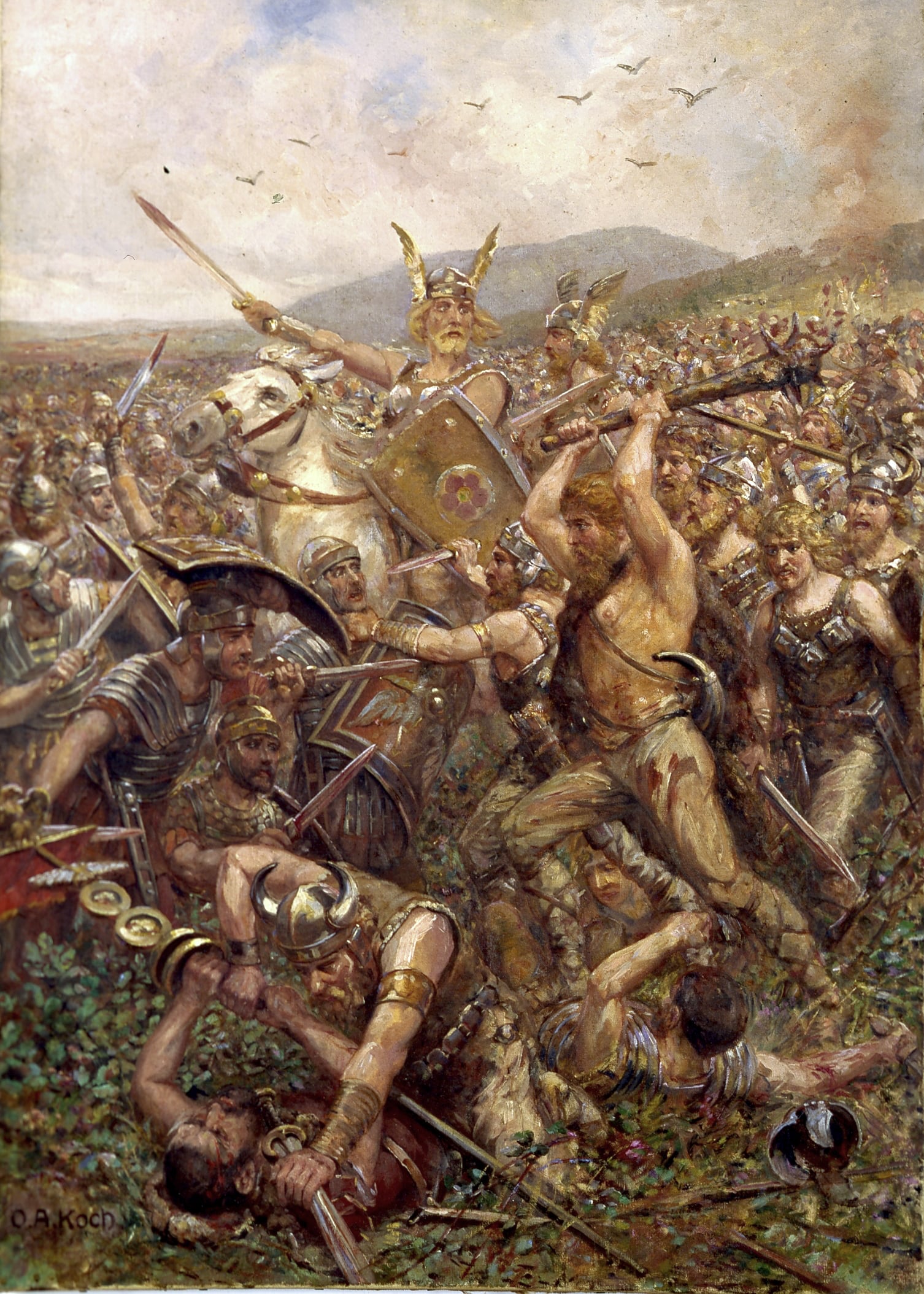
c. 1 AD – 50 AD
Periplus of the Erythraean Sea
The Periplus of the Erythrean Sea, a Graeco-Roman manuscript is written. It describes an established Indian Ocean Trade route.
The Periplus of the Erythraean Sea (Ancient Greek: Περίπλους τῆς Ἐρυθρᾶς Θαλάσσης, Períplous tē̂s Erythrâs Thalássēs, modern Greek Períplous tis Erythrás Thalássis), also known by its Latin name as the Periplus Maris Erythraei, is a Greco-Roman periplus written in Koine Greek that describes navigation and trading opportunities from Roman Egyptian ports like Berenice Troglodytica along the coast of the Red Sea, and others along the Horn of Africa, the Persian Gulf, Arabian Sea and the Indian Ocean, including the modern-day Sindh region of Pakistan and southwestern regions of India.

4 BC
Widely accepted date (Ussher) for birth of Jesus Christ
Ussher determined that Herod died in 4 BC, a date affirmed by the vast majority of historians today. Jesus’ birth must have been shortly prior to Herod’s death, likely in 5 BC. More specifically, Ussher dated the birth of Jesus to late 5 BC, and the circumcision of Jesus early in 4 BC. Since these events were only eight days apart (as required by the Law; Leviticus 12:1–3; Luke 2:21), Ussher apparently endorsed the traditional December 25 date of Jesus’ birth.

6 BC
Roman succession
Gaius Caesar and Lucius Caesar groomed for the throne.
Gaius was elected consul designatus by the Comitia Centuriata in 6 BC with the intention that he should assume the consulship in his twentieth year. The next year, Augustus made him a pontifex, and granted him the right to attend Senate meetings, behold spectacles, and to be present at banquets with senators. Roman support for the young prince soon spread through Italy; statues and inscriptions were set up in every district to commemorate the fact that he had been nominated as a consul at an unprecedented age of fourteen.
The following year (5 BC), when he attained military age, he assumed the toga virilis, and was introduced by Augustus to the Senate, who declared him as princeps iuventutis ("leader of the youth") and sevir turmae (commander of a cavalry division). Having been designated consul, he was allowed to give his opinion to the senate. Lucius, three years his junior, was granted the same honours after the appropriate interval had elapsed.
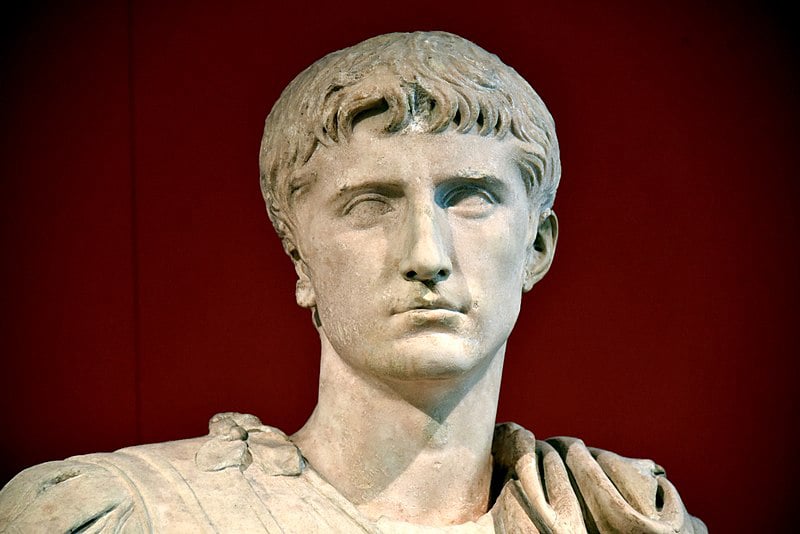
6 BC
Date of birth for Jesus
Earliest theorized date for birth of Jesus of Nazareth.
The date of birth for Jesus of Nazareth is not stated in the gospels or in any secular text, but basing it on the death of Herod would place the date between 6 BC and 4 BC. The historical evidence is too ambiguous to allow a definitive date to be determined, but dates have been estimated through known historical events mentioned in the nativity accounts, by working backwards from the estimated start of the ministry of Jesus, or by associating the claimed astrological portents mentioned with actual historical astronomical alignments and phenomena.
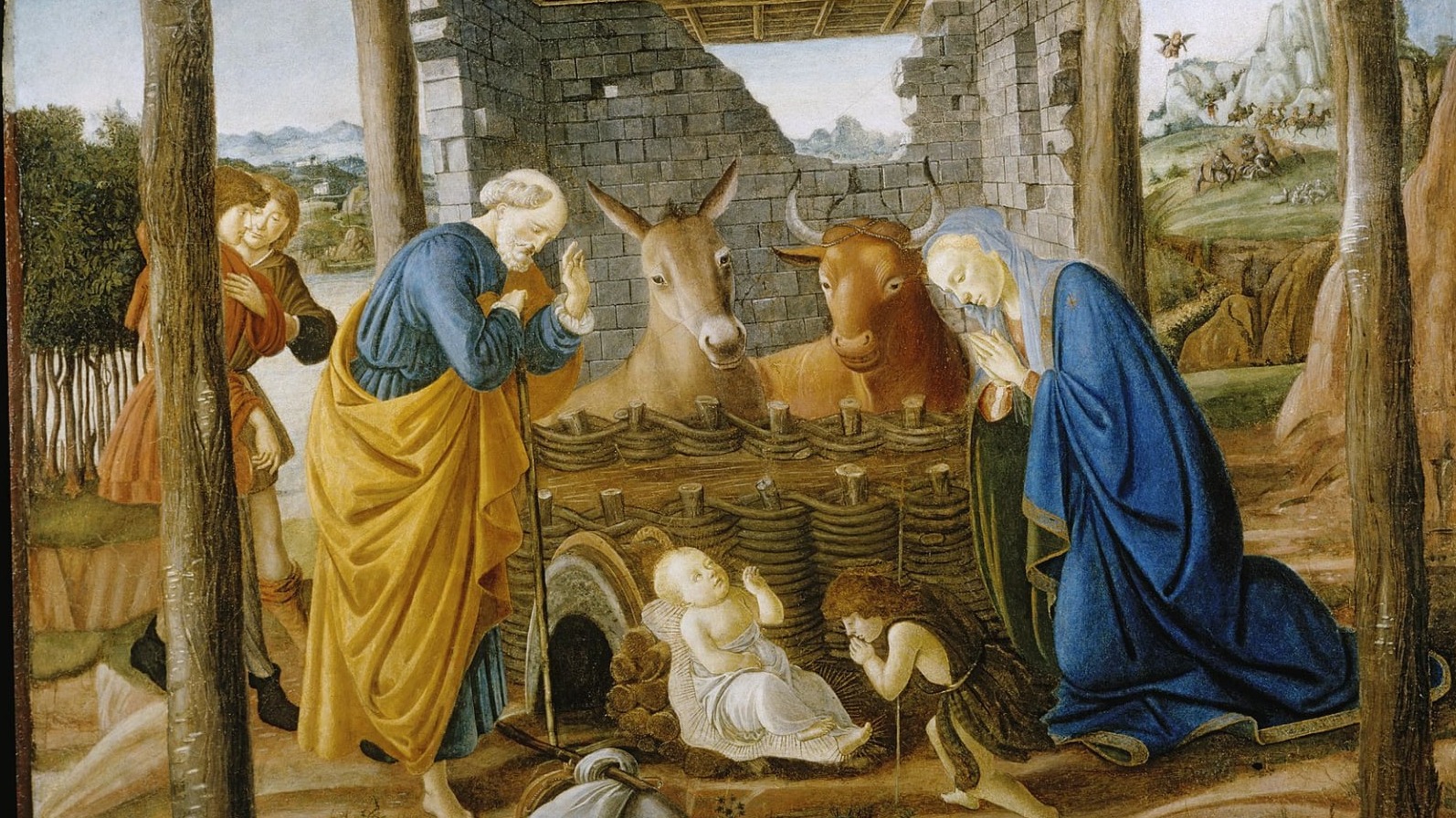
18 BC
Three Kingdoms of Korea
Three Kingdoms period begins in Korea.
The Three Kingdoms of Korea or Samguk (Goguryeo, Baekje and Silla) competed for hegemony over the Korean Peninsula during the ancient period of Korean history. During the Three Kingdoms period (Korean: 삼국시대; RR: Samgook Shidae), many states and statelets consolidated until, after Buyeo was annexed in 494 and Gaya was annexed in 562, only three remained on the Korean Peninsula: Goguryeo, Baekje and Silla. The "Korean Three Kingdoms" contributed to what would become Korea; and the Goguryeo, Baekje and Silla peoples became the Korean people.
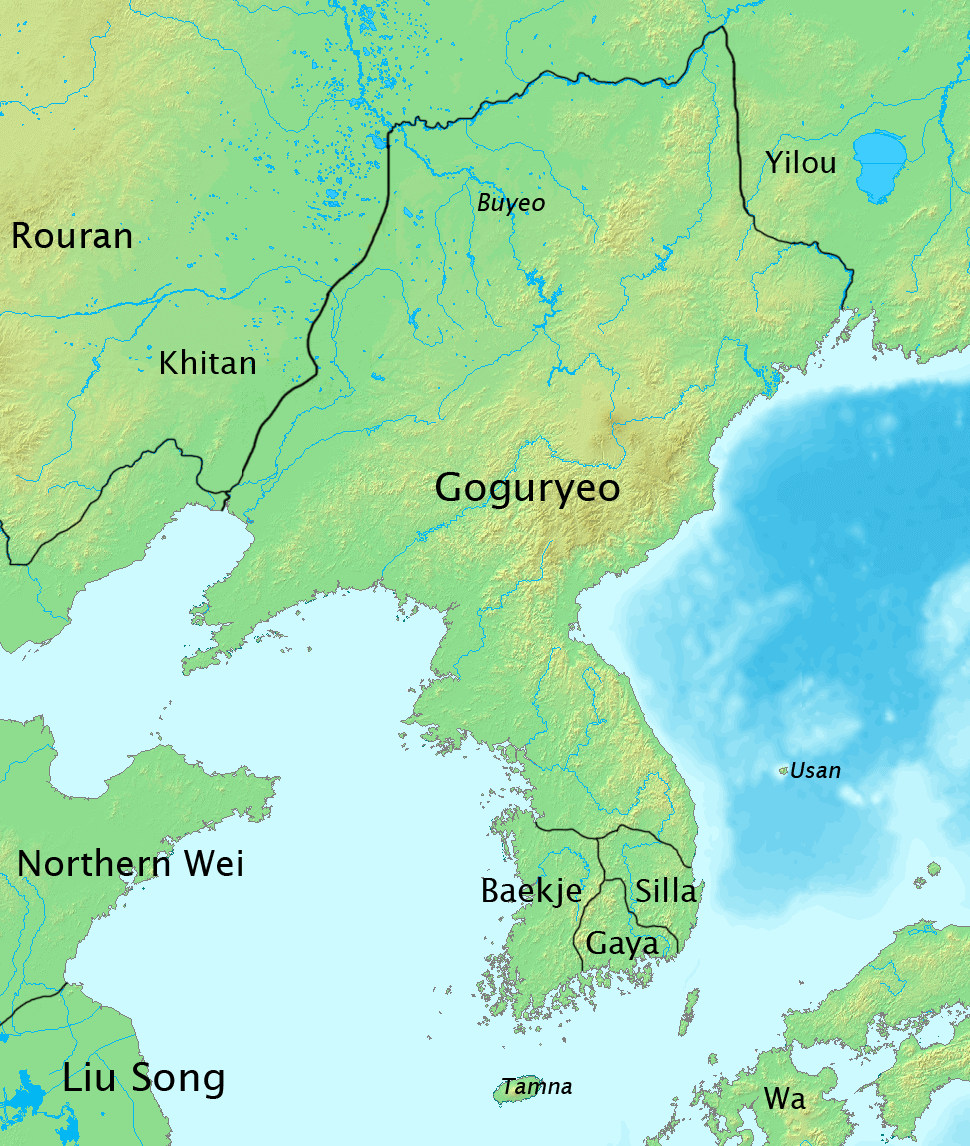
18 BC
Herod's Temple is reconstructed
Reconstruction of the temple under Herod began with a massive expansion of the Temple Mount temenos. For example, the Temple Mount complex initially measured 7 hectares (17 acres) in size, but Herod expanded it to 14.4 hectares (36 acres) and so doubled its area. Herod's work on the Temple is generally dated from 20/19 BCE until 12/11 or 10 BCE. Writer Bieke Mahieu dates the work on the Temple enclosures from 25 BCE and that on the Temple building in 19 BCE, and situates the dedication of both in November 18 BCE.
Religious worship and temple rituals continued during the construction process.
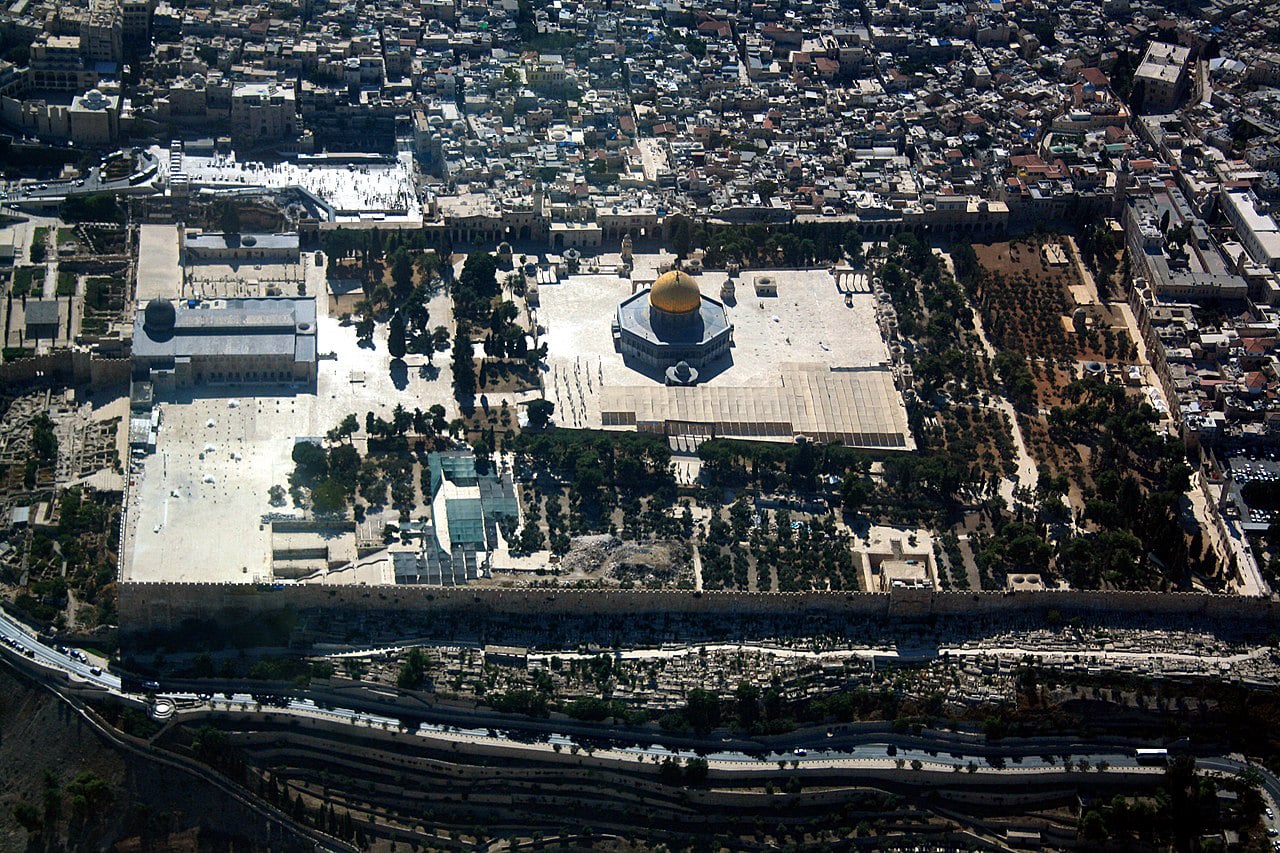
27 BC – 22 BC
Amanirenas
Amanirenas, the kandake (Queen) of the Kingdom of Kush, leads Kushite armies against the Romans.
Amanirenas (also spelled Amanirena), was queen regnant of the Kingdom of Kush from the end of the 1st century BCE to beginning of the 1st century CE. She is known for halting the Roman expansion into Kush in present-day Sudan.
Her full title was Amnirense qore li kdwe li ("Ameniras, qore and kandake"). Meroitic, the indigenous language of the kingdom of Kush, remains undeciphered; however, inscriptions giving Queen Amanirenas the title of "qore" as well as "kandake" suggest that she was an individually ruling queen.
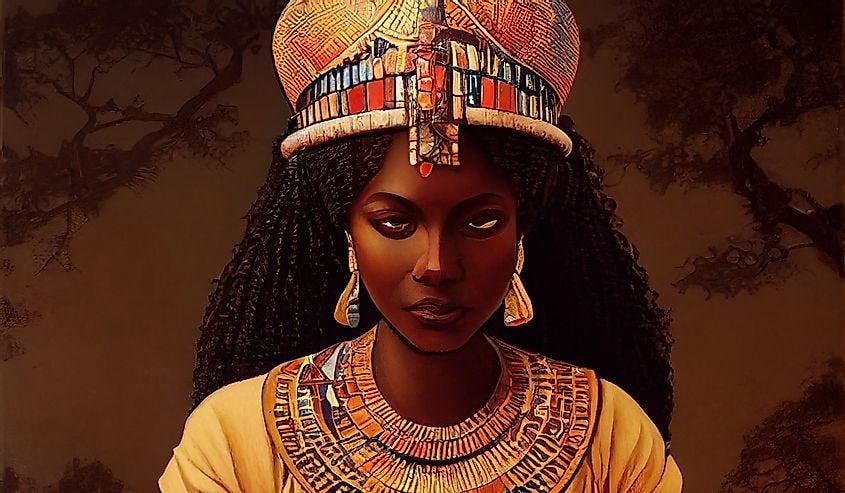
27 BC
Formation of Roman Empire
Augustus is given titles of Princeps and Augustus by Roman Senate – beginning of Pax Romana. Formation of influential Praetorian Guard to provide security to Emperor.
The Pax Romana (Latin for "Roman peace") is a roughly 200-year-long period of Roman history which is identified as a golden age of increased and sustained Roman imperialism, relative peace and order, prosperous stability, hegemonic power, and regional expansion. This is despite several revolts and wars, and continuing competition with Parthia. It is traditionally dated as commencing with the accession of Augustus, founder of the Roman principate, in 27 BC and concluding in AD 180 with the death of Marcus Aurelius, the last of the "Five Good Emperors". Since it was inaugurated by Augustus at the end of the final war of the Roman Republic, it is sometimes also called the Pax Augusta.
During this period of about two centuries, the Roman Empire achieved its greatest territorial extent in AD 117 (emperor Trajan), and its population reached a maximum of up to 70 million people, which was around 33% of the world's population. According to Cassius Dio, the dictatorial reign of Commodus, later followed by the Year of the Five Emperors and the Crisis of the Third Century, marked the descent "from a kingdom of gold to one of iron and rust".
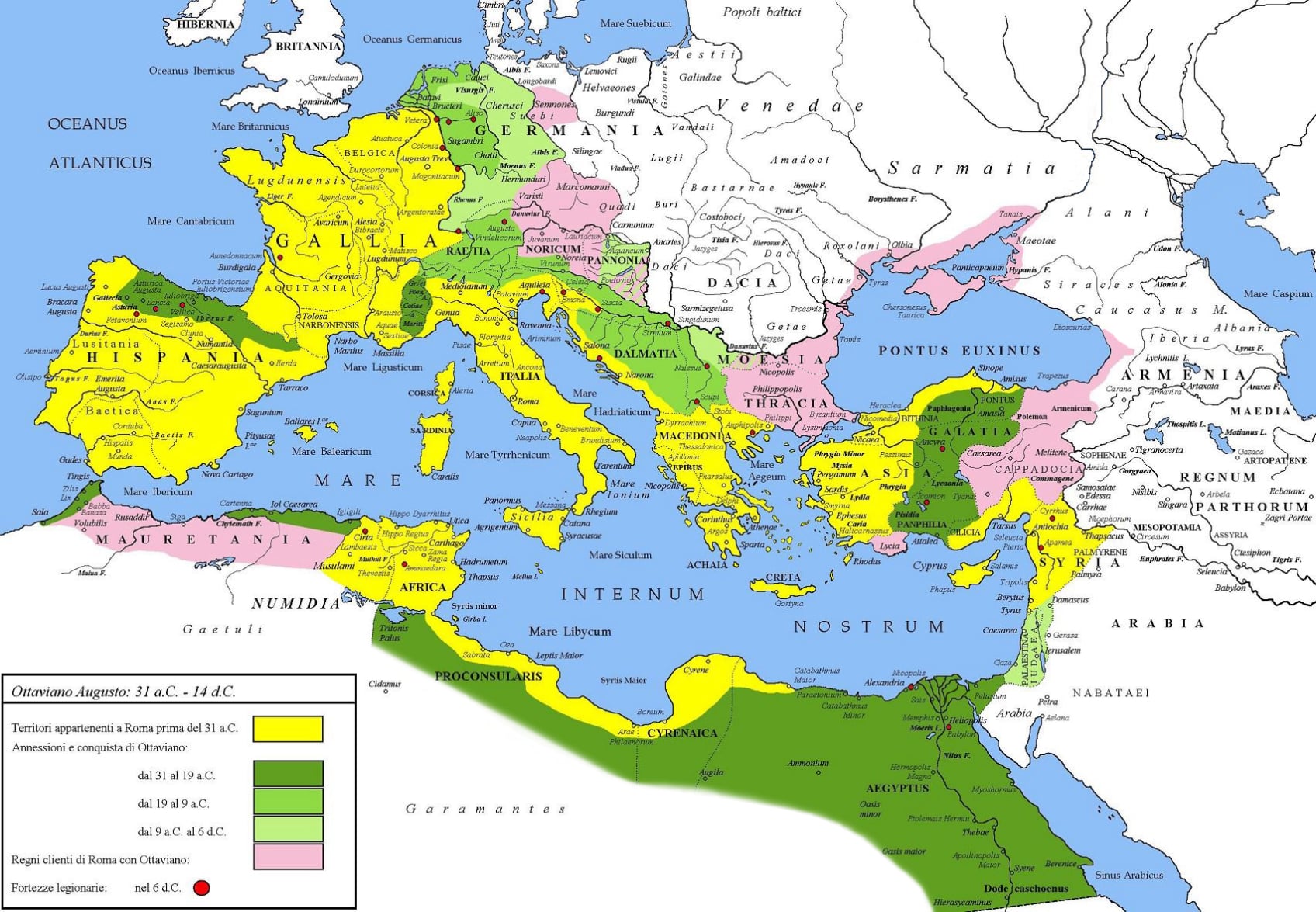
30 BC
End of Ptolemaic Kingdom
Cleopatra ends her reign as the last active ruler of the Ptolemaic Kingdom of Egypt.
The Ptolemaic Kingdom or Ptolemaic Empire was an Ancient Greek state based in Egypt during the Hellenistic period. It was founded in 305 BC by the Macedonian general Ptolemy I Soter, a companion of Alexander the Great, and ruled by the Ptolemaic dynasty until the death of Cleopatra VII in 30 BC. Reigning for nearly three centuries, the Ptolemies were the longest and final dynasty of ancient Egypt heralding a distinctly new era for religious syncretism and the blending of a new Greco-Egyptian culture.
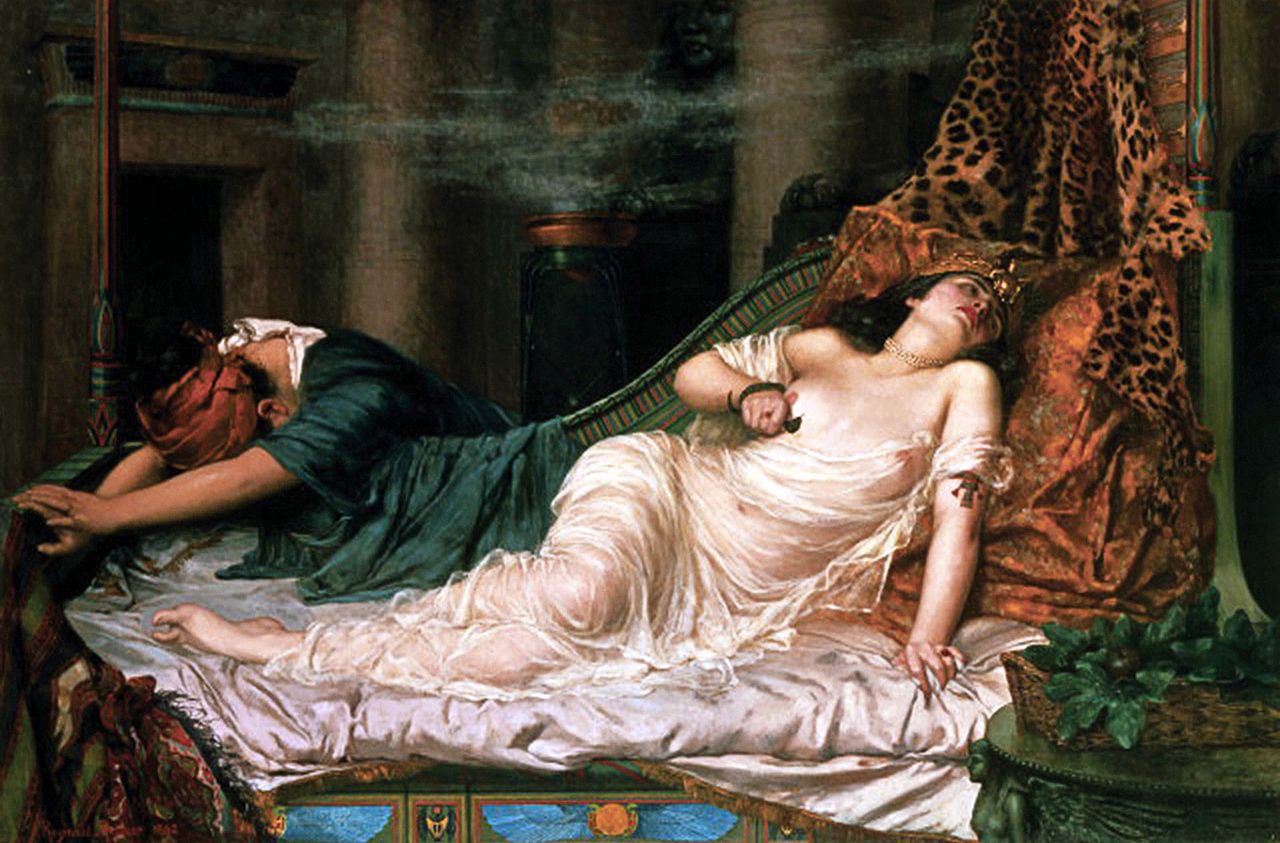
31 BC – 30 BC
Battle of Actium
The Roman conquest of Ptolemaic Egypt.
The Battle of Actium was a naval battle fought between Octavian's maritime fleet, led by Marcus Agrippa, and the combined fleets of both Mark Antony and Cleopatra VII Philopator. The battle took place on 2 September 31 BC in the Ionian Sea, near the former Roman colony of Actium, Greece, and was the climax of over a decade of rivalry between Octavian and Antony.
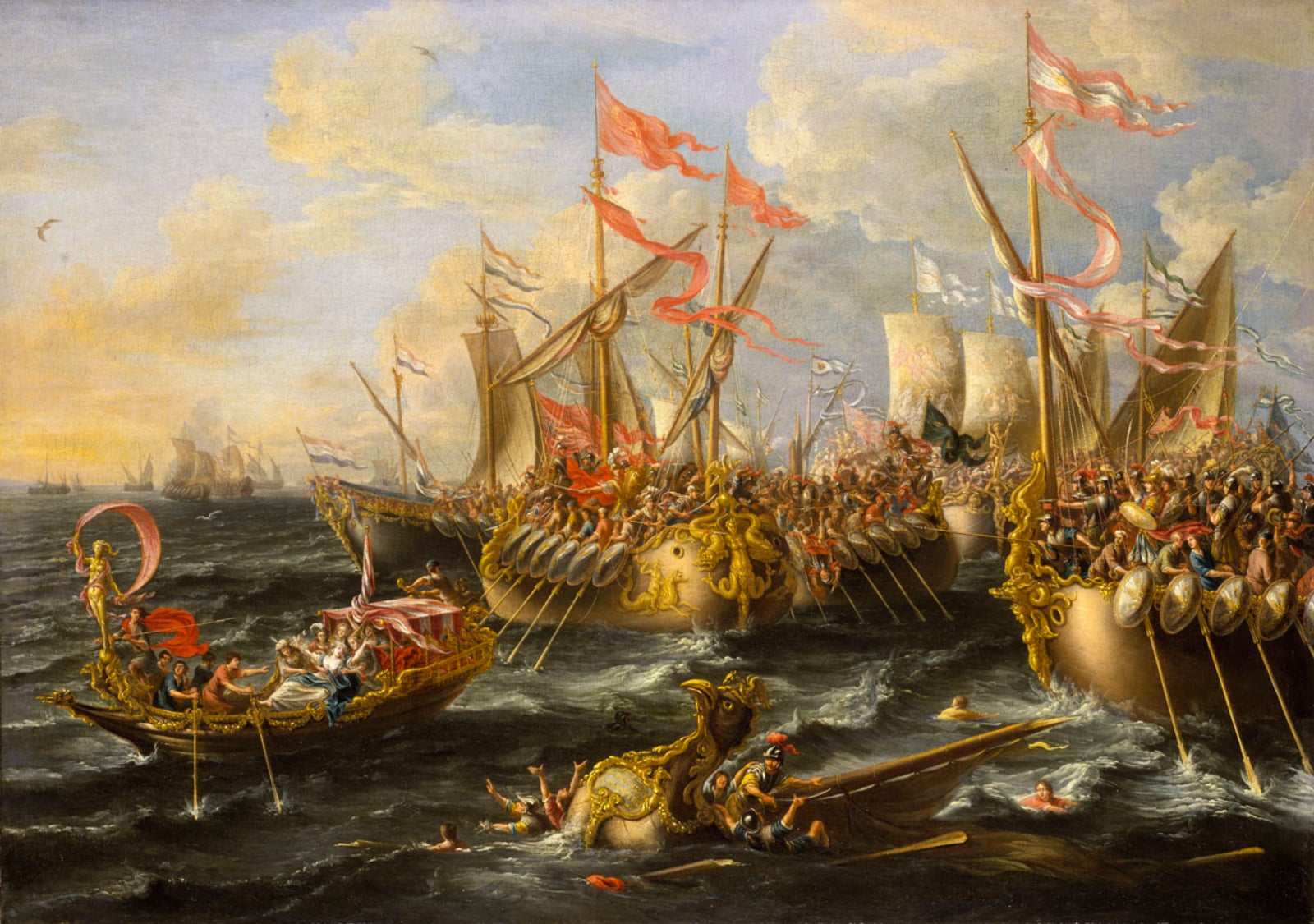
44 BC
Assassination of Burebista
Burebista is assassinated in the same year like Julius Caesar and his empire breaks into 4 and later 5 kingdoms in modern-day Romania.
Burebista may have outlived Caesar for only a short time. In the same year Caesar was assassinated, Burebista was killed in a plot by the Dacian aristocracy, who saw a centralized state as leading to a reduction in their privileges. After his death, the Dacian kingdom dissolved, with the exception of the enclave around the Orăștie Mountains, while the rest became various smaller kingdoms. After Burebista's death, the kingdom was divided into four parts, to be ruled by the religious elite. By the time of Augustus Dacia had broken further into five parts.
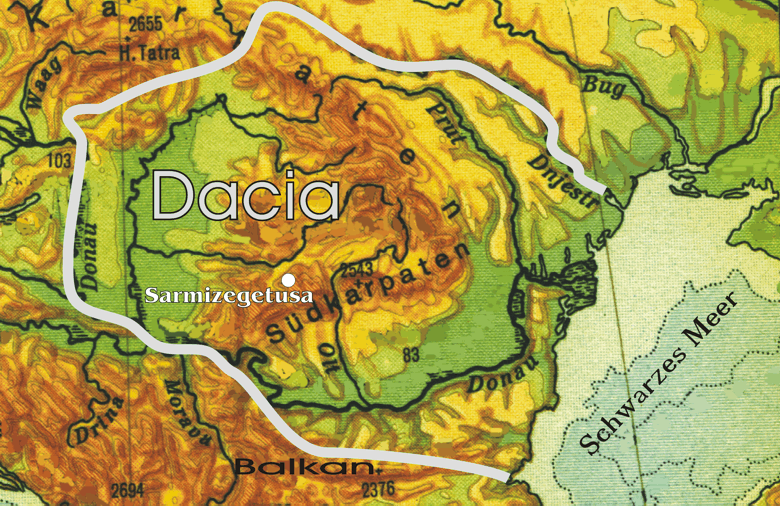
44 BC
Assassination of Julius Caesar
Julius Caesar murdered by Marcus Brutus and others; End of Roman Republic; beginning of Roman Empire.
There are various different traditions describing the way in which Brutus arrived to the decision to assassinate Caesar. Plutarch, Appian, and Cassius Dio, all writing in the imperial period, focused on peer pressure and Brutus' perceived philosophical duty to his country and his family's reputation.
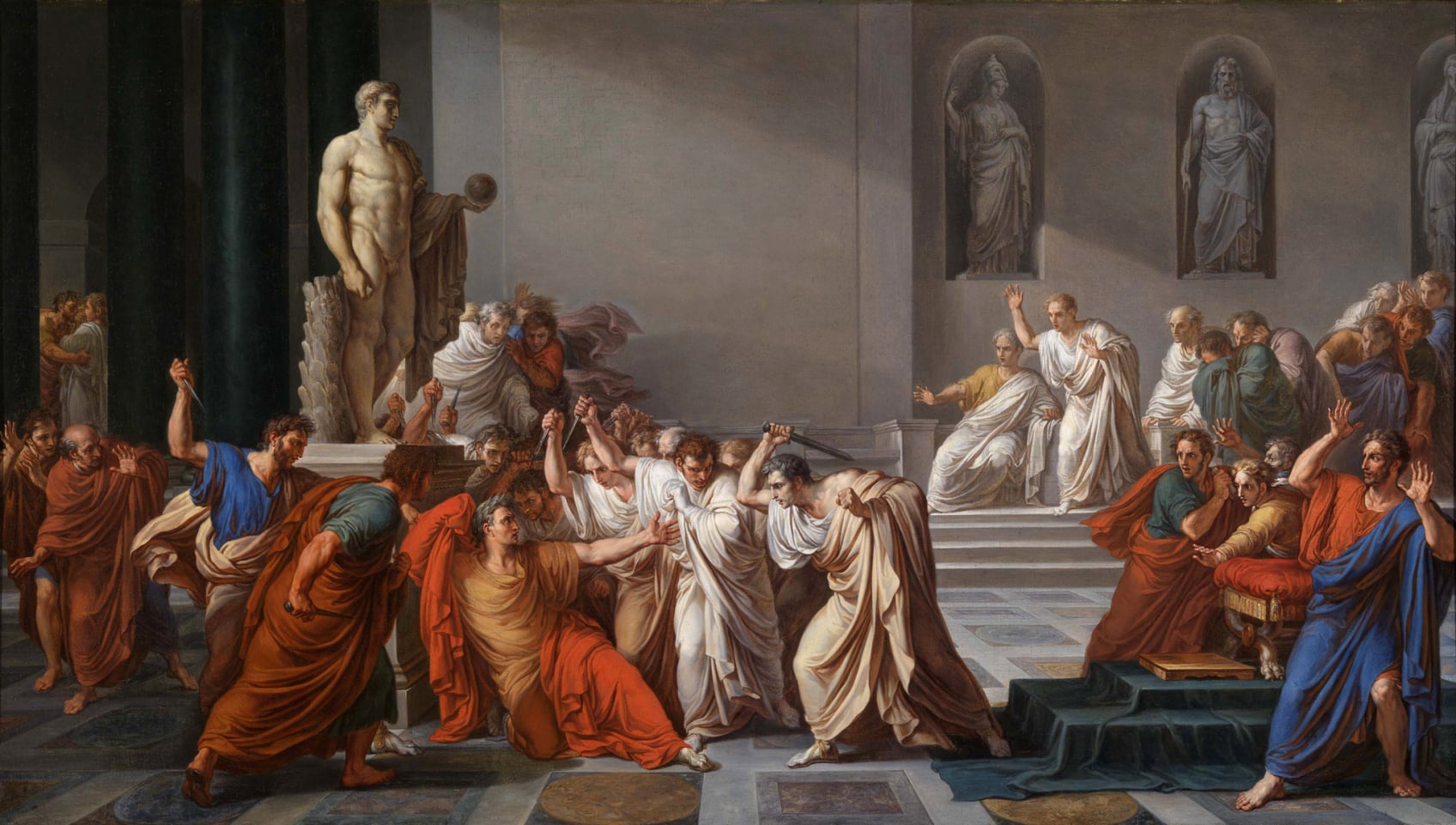
49 BC
Roman Civil War
Roman Civil War between Julius Caesar and Pompey the Great.
In 54 BC, Caesar continued his conquest of Gaul, Crassus opened his campaign against the Parthians, and Pompey remained in Rome, where his wife Julia died in child birth in September. Contemporary sources suggest that combined with the death of Crassus and his son Publius at Carrhae in May 53 BC, this removed any obstacle to direct confrontation between Caesar and Pompey.
Consular elections in 52 BC had to be suspended due to widespread violence. Seeking to end his alliance with Caesar, the optimate Bibulus proposed Pompey be elected sole consul, an unprecedented act backed by both Cato and the tribunate. Having restored order, Pompey married Cornelia, widow of Publius Crassus and daughter of Metellus Scipio Nasica, whom he appointed as his colleague for the last five months of the year.
As consul, Pompey helped enact legislation which some historians view as crucial to understanding the drift to war in 49 BC. Accused of using violence during his consulship in 59 BC, Caesar had previously been shielded by his proconsular immunity. With private support from Pompey, new laws made such prosecutions retrospective, which meant Caesar would probably be put on trial the moment he left Gaul and lost his Imperium. To avoid this, he had secured approval to stand for the consulship in 48 BC while still in Gaul, but another law backed by Pompey required electoral candidates to be physically present in Rome.
Although the two continued to co-operate in public, Pompey clearly viewed his colleague as a threat, as did much of the Senate. Both consuls for 50 BC, Paullus and Gaius Claudius, were opponents of Caesar, as was Curio, a plebeian tribune. They initiated legislation to remove Caesar from his command in Gaul, who allegedly bypassed this by bribing Paullus and Curio. For whatever reason, Curio came up with an alternative proposal; Caesar and Pompey should disarm at the same time, or be declared enemies of the state.
This was a clever move, since it was popular with those who wanted to avoid war, but unacceptable to the optimates who saw Caesar as a danger that had to be eliminated. Rejection made open conflict more likely, and the Senate agreed to fund a consular army, organised by Pompey. When he fell ill while recruiting in Naples, the celebrations that followed his recovery allegedly convinced Pompey his popularity was sufficient to see off any opponent. In December, Caesar crossed the Alps with a single veteran legion and arrived at Ravenna, close to the border with the Roman Republic.
A significant number of senators opposed any concessions to Caesar, but many also mistrusted Pompey, who has been criticised for "weak and ineffectual leadership" in this period. On 1 January 49 BC, Caesar sent an ultimatum demanding acceptance of his compromise, failing which he would march on Rome "to avenge his country's wrongs". Confident their forces significantly outnumbered those available to Caesar, on 7 January the Senate declared him a public enemy; four days later, he crossed the Rubicon into Italy.
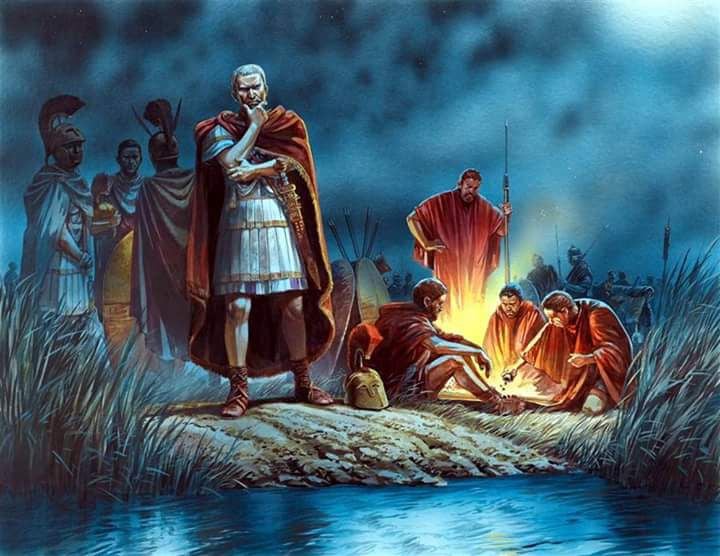
c. 60 BC – 44 BC
Burebista conquests
Burebista conquers territories from south Germany to Thrace, reaching the coast of the Aegean sea.
From around 61 BC Burebista began to lead a series of campaigns of conquest against neighbouring tribes and clans. In 60/59 BC he defeated and conquered the Boii, who were led by Critasiros, and the Taurisci tribes dwelling in the Middle Danube, in modern Bohemia and Slovakia. The Boii had established a tribal presence in the areas now occupied by eastern Austria and south-western Slovakia and Hungary sometime in 75–50 BC. The Boii extended their influence eastward towards modern day Bratislava, Slovakia around 64–63 BC. It is these Boii tribes east of the Alps that came into conflict with the Dacians and were heavily defeated in 50–40 BC.
These conquests were followed by the destruction of the Bastarnae peoples. Similarly, Burebista conquered a tribe that Strabo describes as living among the Illyrians and Thracians – most likely the Scordisci – while simultaneously conducting raids throughout Thrace, Roman Macedonia, and Illyria.
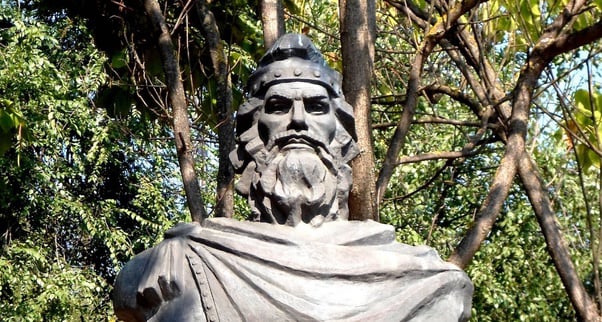
c. 63 BC
The Siege of Jerusalem leads to the conquest of Judea by the Romans
The siege of Jerusalem (63 BC) occurred during Pompey the Great's campaigns in the East, shortly after his successful conclusion of the Third Mithridatic War. Pompey had been asked to intervene in a dispute over inheritance to the throne of the Hasmonean Kingdom, which turned into a war between Hyrcanus II and Aristobulus II. His conquest of Jerusalem, however, spelled the end of Jewish independence and the incorporation of Judea as a client kingdom of the Roman Republic.
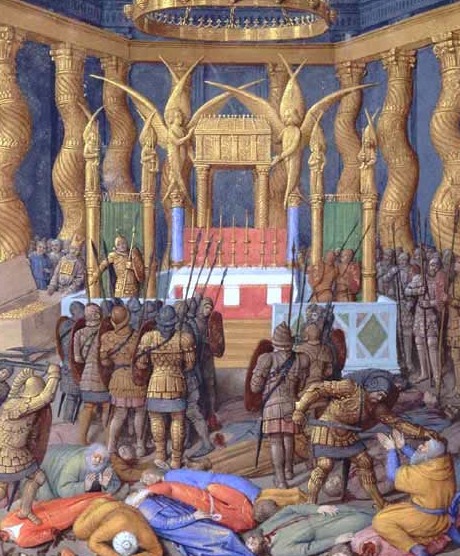
c. 82 BC
Burebista becomes the king of Dacia
Burebista (Boerebista), a contemporary of Julius Caesar, ruled Geto-Dacian tribes between 82 BC and 44 BC. He thoroughly reorganised the army and attempted to raise the moral standard and obedience of the people by persuading them to cut their vines and give up drinking wine. During his reign, the limits of the Dacian Kingdom were extended to their maximum. The Bastarnae and Boii were conquered, and even the Greek towns of Olbia and Apollonia on the Black Sea (Pontus Euxinus) recognized Burebista's authority. In 53 BC, Caesar stated that the Dacian territory was on the eastern border of the Hercynian Forest.
Burebista suppressed the indigenous minting of coinages by four major tribal groups, adopting imported or copied Roman denarii as a monetary standard. During his reign, Burebista transferred Geto-Dacians capital from Argedava to Sarmizegetusa Regia. For at least one and a half centuries, Sarmizegetusa was the Dacians' capital and reached its peak under King Decebalus. The Dacians appeared so formidable that Caesar contemplated an expedition against them, which his death in 44 BC prevented. In the same year, Burebista was murdered, and the kingdom was divided into four (later five) parts under separate rulers.
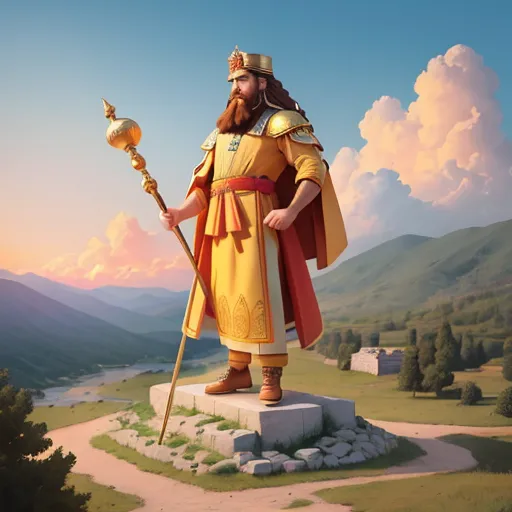
100 BC – 300 AD
Bantu peoples
The earliest Bantu settlements in the Swahili coast appear on the archaeological record in Kwale County in Kenya, Misasa in Tanzania and Ras Hafun in Somalia.
The Bantu peoples are an ethnolinguistic grouping of approximately 400 distinct native African ethnic groups who speak Bantu languages. The languages are native to 24 countries spread over a vast area from Central Africa to Southeast Africa and into Southern Africa.

100 BC – 100 AD
Carbon steel
Bantu speaking communities in the great lakes region of Africa develop iron forging techniques that enable them to produce carbon steel.
Carbon steel is a steel with carbon content from about 0.05 up to 2.1 percent by weight. The definition of carbon steel from the American Iron and Steel Institute (AISI) states:
- no minimum content is specified or required for chromium, cobalt, molybdenum, nickel, niobium, titanium, tungsten, vanadium, zirconium, or any other element to be added to obtain a desired alloying effect;
- the specified minimum for copper does not exceed 0.40%;
- or the specified maximum for any of the following elements does not exceed the percentages noted: manganese 1.65%; silicon 0.60%; copper 0.60%.
The term carbon steel may also be used in reference to steel which is not stainless steel; in this use carbon steel may include alloy steels. High carbon steel has many different uses such as milling machines, cutting tools (such as chisels) and high strength wires. These applications require a much finer microstructure, which improves the toughness.
As the carbon content percentage rises, steel has the ability to become harder and stronger through heat treating; however, it becomes less ductile. Regardless of the heat treatment, a higher carbon content reduces weldability. In carbon steels, the higher carbon content lowers the melting point.

c. 100 BC
Chola dynasty rises in prominence
The Chola dynasty was a Tamil dynasty originating from southern India. At its height, it ruled over the Chola Empire, an expansive maritime empire. The earliest datable references to the Chola are from inscriptions dated to the 3rd century BCE during the reign of Ashoka of the Maurya empire. The Chola empire was at its peak and achieved imperialism under the Medieval Cholas in the mid-9th century CE. As one of the Three Crowned Kings of Tamilakam, along with the Chera and Pandya, the dynasty continued to govern over varying territories until the 13th century CE.
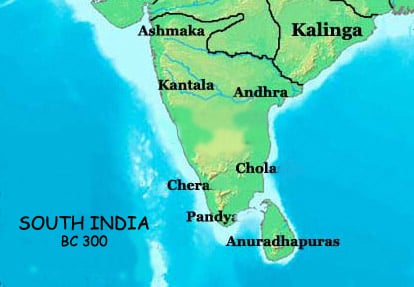
111 BC
First Era of Northern Domination
First Chinese domination of Việtnam in the form of the Nanyue Kingdom.
The First Era of Northern Domination refers to the period of Vietnamese history during which present-day northern Vietnam was under the rule of the Han dynasty and the Xin dynasty. It is considered the first of four periods of Chinese rule over Vietnam, and the first of the three in which were almost continuous and was referred to as Bắc thuộc ("Northern Domination").
In 111 BC, a militarily powerful Han dynasty conquered Nanyue during its expansion southward and incorporated what is today northern Vietnam, together with much of modern Guangdong and Guangxi, into the burgeoning Han empire.
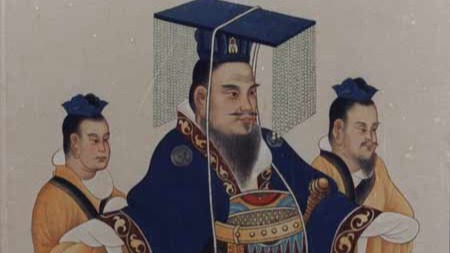
121 BC
Gaul
Roman armies enter Gaul for the first time.
Gaul (Latin: Gallia) was a region of Western Europe first clearly described by the Romans, encompassing present-day France, Belgium, Luxembourg, and parts of Switzerland, the Netherlands, Germany, and Northern Italy. It covered an area of 494,000 km (191,000 sq mi). According to Julius Caesar, who took control of the region on behalf of the Roman Republic, Gaul was divided into three parts: Gallia Celtica, Belgica, and Aquitania.
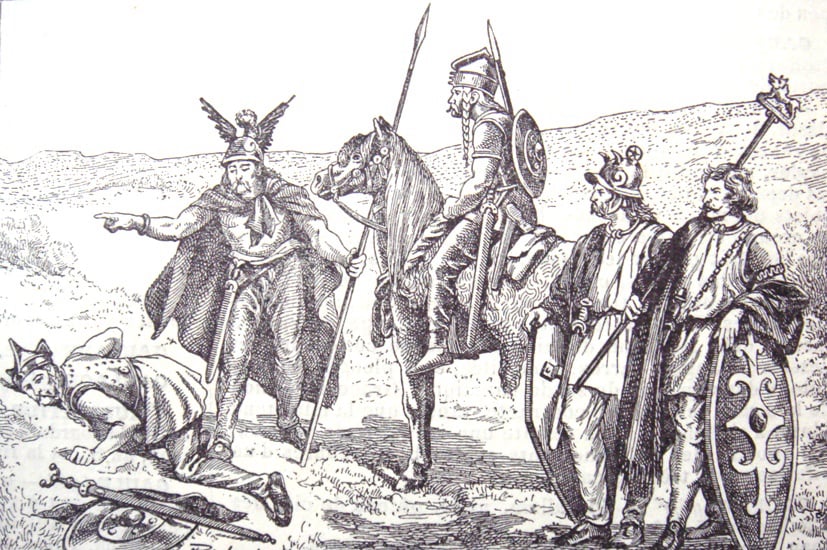
c. 145 BC
Indo-Greek Kingdom
Eucratides I dies; Greco-Bactrian Kingdom collapses. Remnants move southwards to form the Indo-Greek Kingdom.
The Indo-Greek Kingdom, or Graeco-Indian Kingdom, also known historically as the Yavana Kingdom (Yavanarajya), was a Hellenistic-era Greek kingdom covering various parts of modern-day Afghanistan, Pakistan and northwestern India. This kingdom was in existence from c. 200 BC to c. 10 AD.
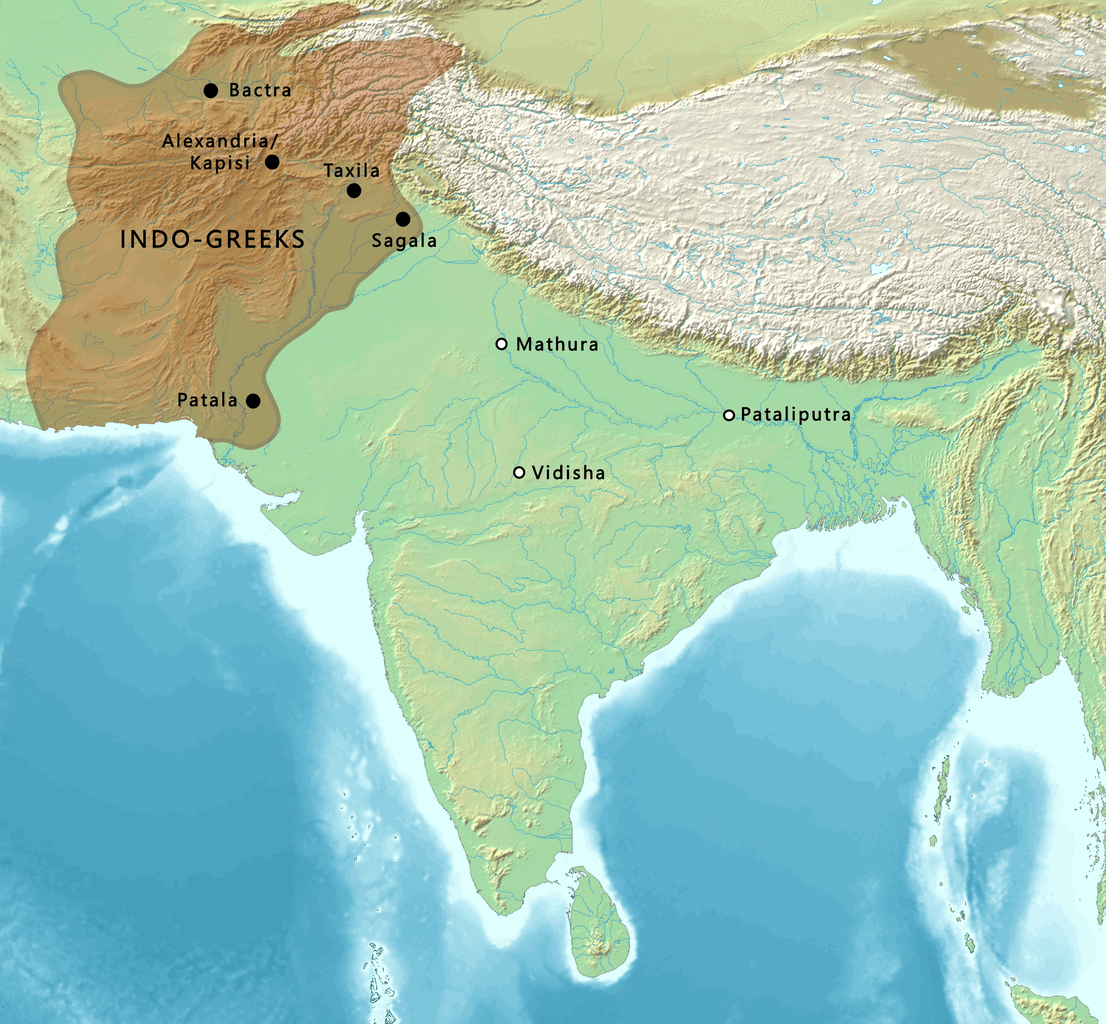
146 BC
Roman conquest of Greece
Greece in the Roman era describes the Roman conquest of the territory of the modern nation-state of Greece as well as that of the Greek people and the areas they inhabited and ruled historically. It covers the periods when Greece was dominated first by the Roman Republic and then by the Roman Empire. In the history of Greece, the Roman era began with the Corinthian defeat in the Battle of Corinth in 146 BC. However, before the Achaean War, the Roman Republic had been steadily gaining control of mainland Greece by defeating the Kingdom of Macedon in a series of conflicts known as the Macedonian Wars. The Fourth Macedonian War ended at the Battle of Pydna in 148 BC with the defeat of the Macedonian royal pretender Andriscus.
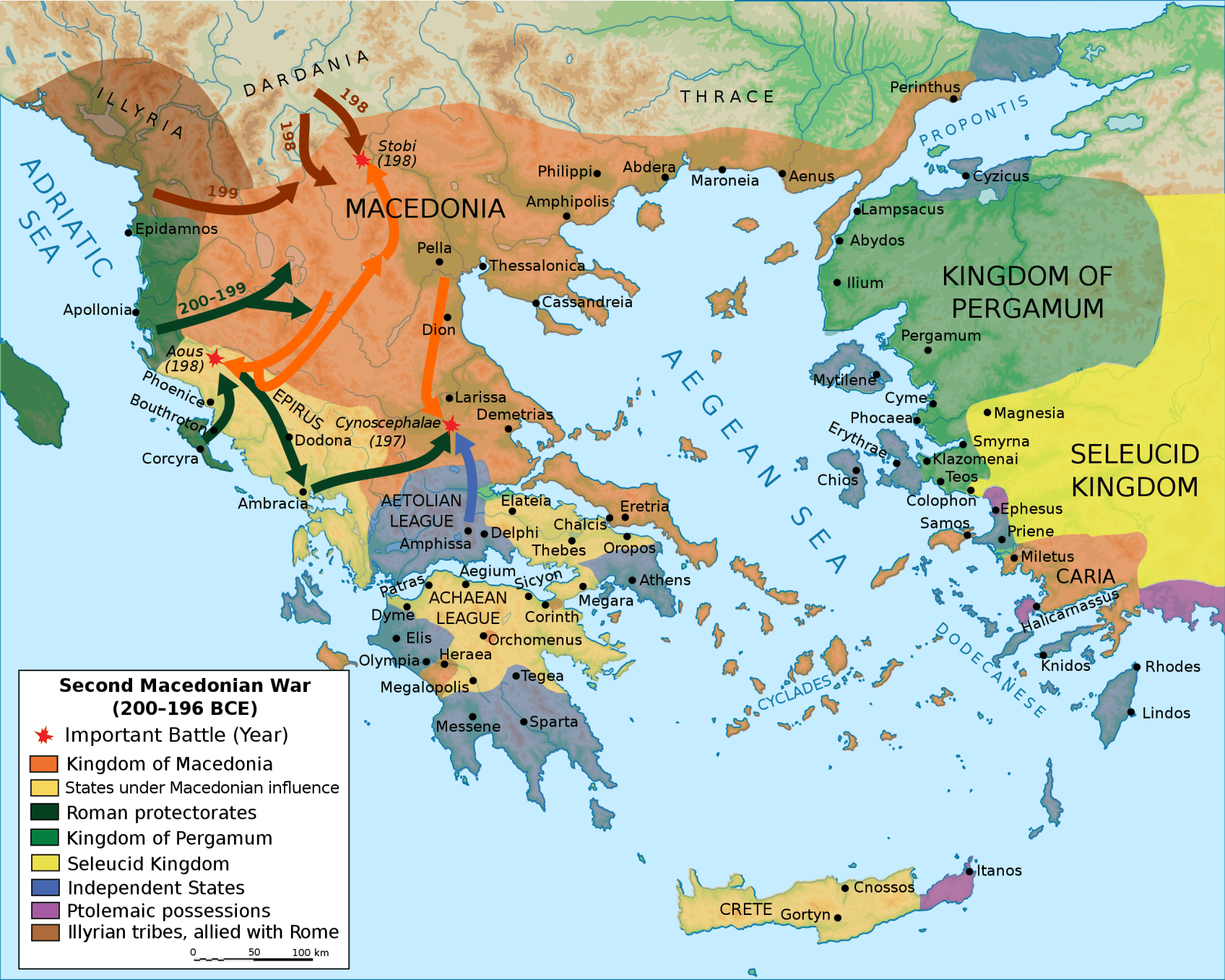
149 BC – 146 BC
Third Punic War
Third Punic War between Rome and Carthage. War ends with the complete destruction of Carthage, allowing Rome to conquer modern day Tunisia and Libya.
The Third Punic War (149–146 BC) was the third and last of the Punic Wars fought between Carthage and Rome. The war was fought entirely within Carthaginian territory, in what is now northern Tunisia. When the Second Punic War ended in 201 BC one of the terms of the peace treaty prohibited Carthage from waging war without Rome's permission. Rome's ally, King Masinissa of Numidia, exploited this to repeatedly raid and seize Carthaginian territory with impunity. In 149 BC Carthage sent an army, under Hasdrubal, against Masinissa, the treaty notwithstanding. The campaign ended in disaster as the Battle of Oroscopa ended with a Carthaginian defeat and the surrender of the Carthaginian army. Anti-Carthaginian factions in Rome used the illicit military action as a pretext to prepare a punitive expedition.
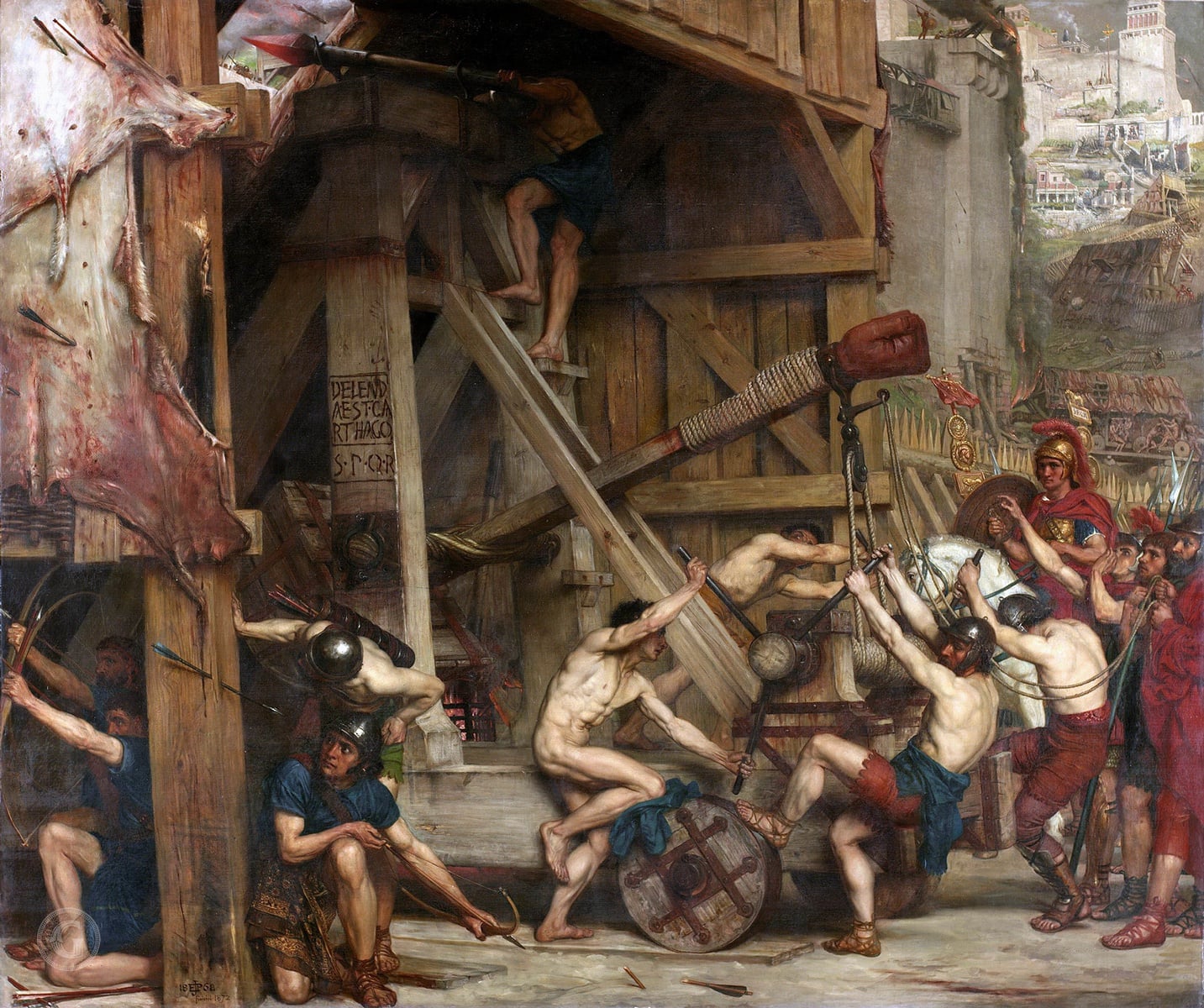
167 BC – 160 BC
Maccabean Revolt
The Maccabean Revolt (Hebrew: מרד החשמונאים) was a Jewish rebellion led by the Maccabees against the Seleucid Empire and against Hellenistic influence on Jewish life. The main phase of the revolt lasted from 167 to 160 BCE and ended with the Seleucids in control of Judea, but conflict between the Maccabees, Hellenized Jews, and the Seleucids continued until 134 BCE, with the Maccabees eventually attaining independence.
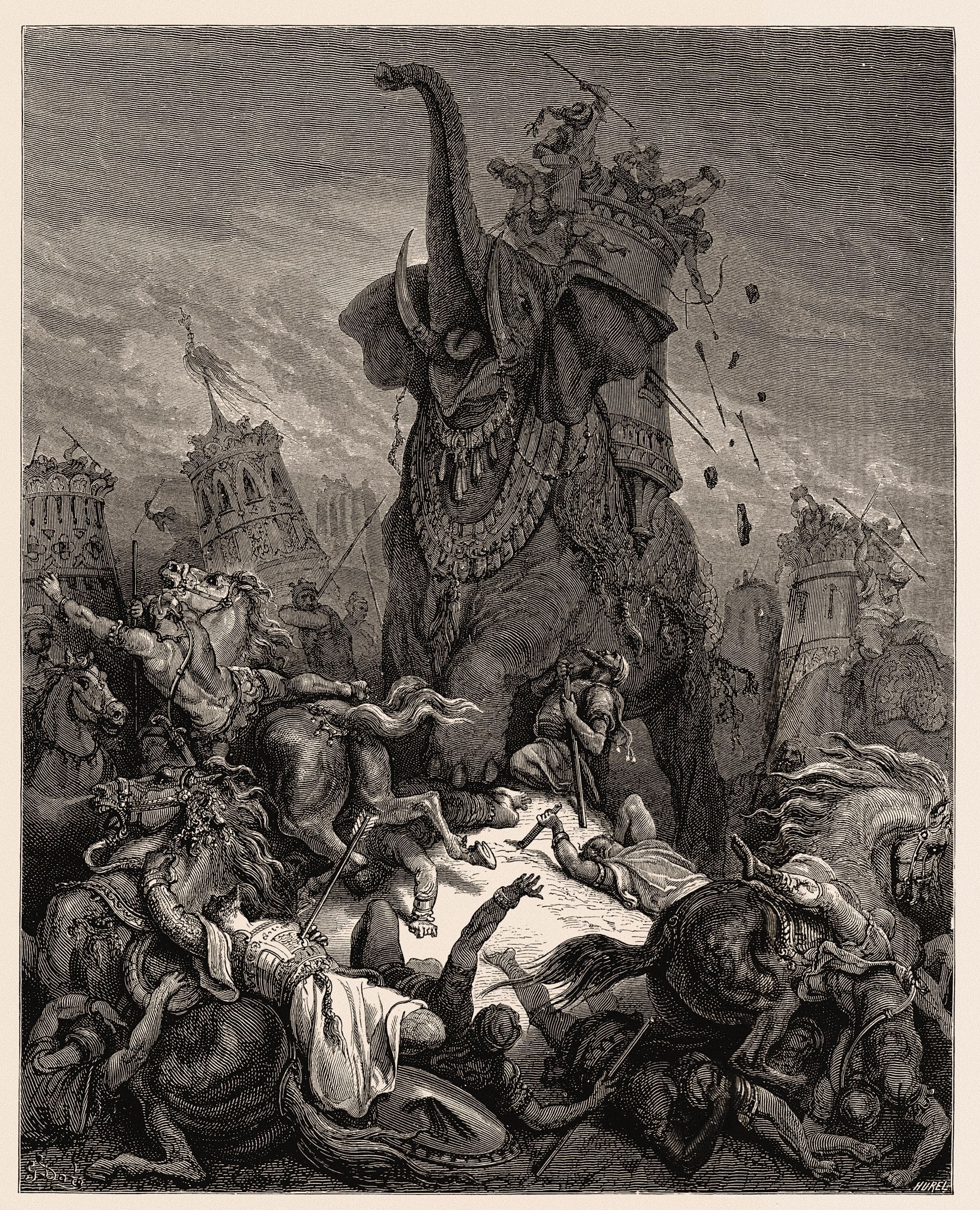
185 BC
Shunga Empire
The Shunga dynasty (IAST: Śuṅga) was the seventh ruling dynasty of Magadha and controlled most of the northern Indian subcontinent from around 187 to 73 BCE. The dynasty was established by Pushyamitra, after taking the throne of Magadha from the Mauryas. The Shunga Empire's capital was Pataliputra, but later emperors such as Bhagabhadra also held court at Besnagar (modern Vidisha) in eastern Malwa. This dynasty is also responsible for successfully fighting and resisting the Greeks in Shunga-Greek War.
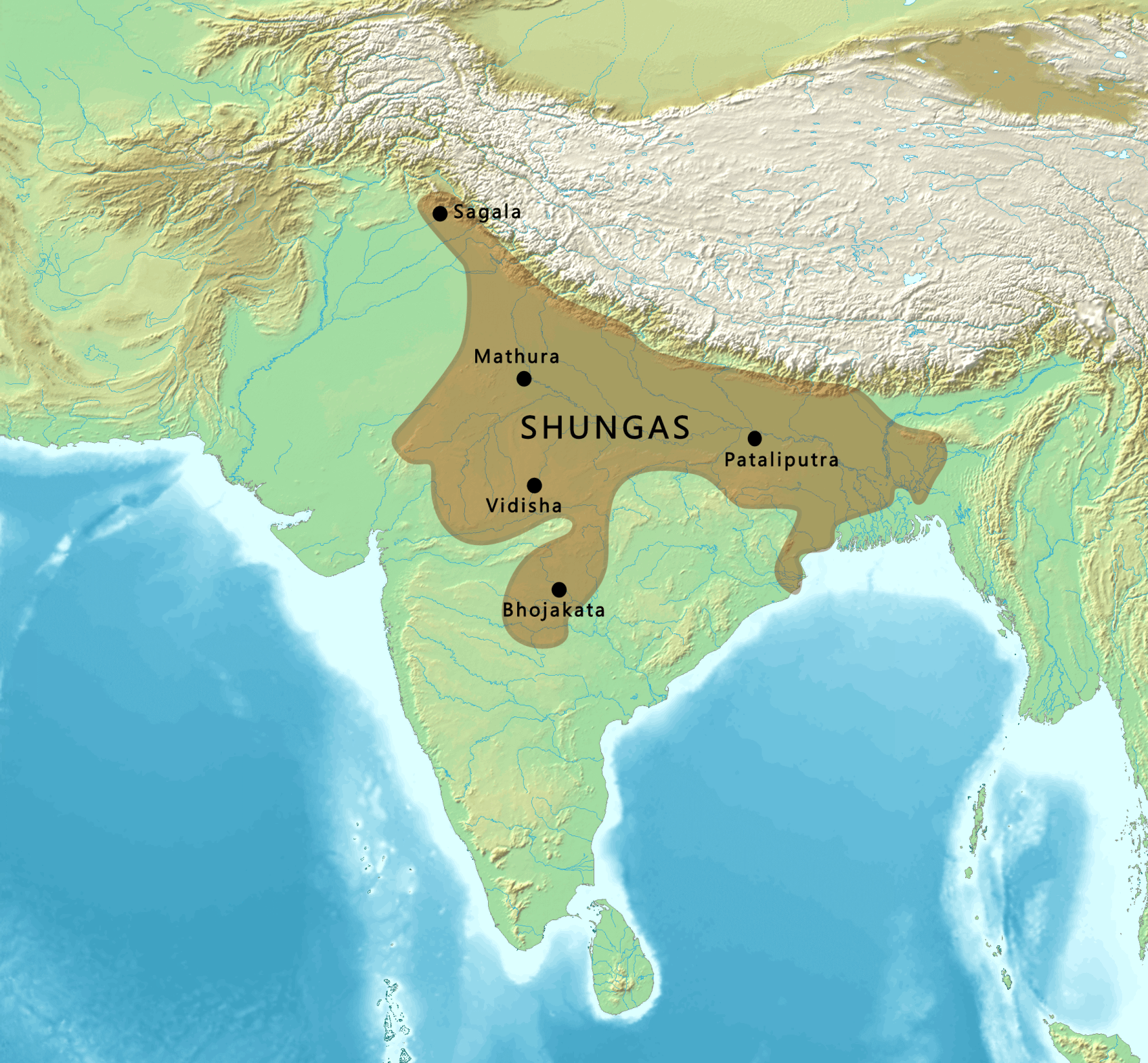
c. 200 BC
Chera dynasty
The Chera dynasty was a Sangam age Tamil dynasty who unified various regions of the western coast and western ghats in southern India to form the early Chera empire. The dynasty, known as one of the Three Crowned Kings of Tamilakam alongside the Chola and Pandya, has been documented as early as the 4th to 3rd centuries BCE. Their governance extended over diverse territories until the 12th century CE.
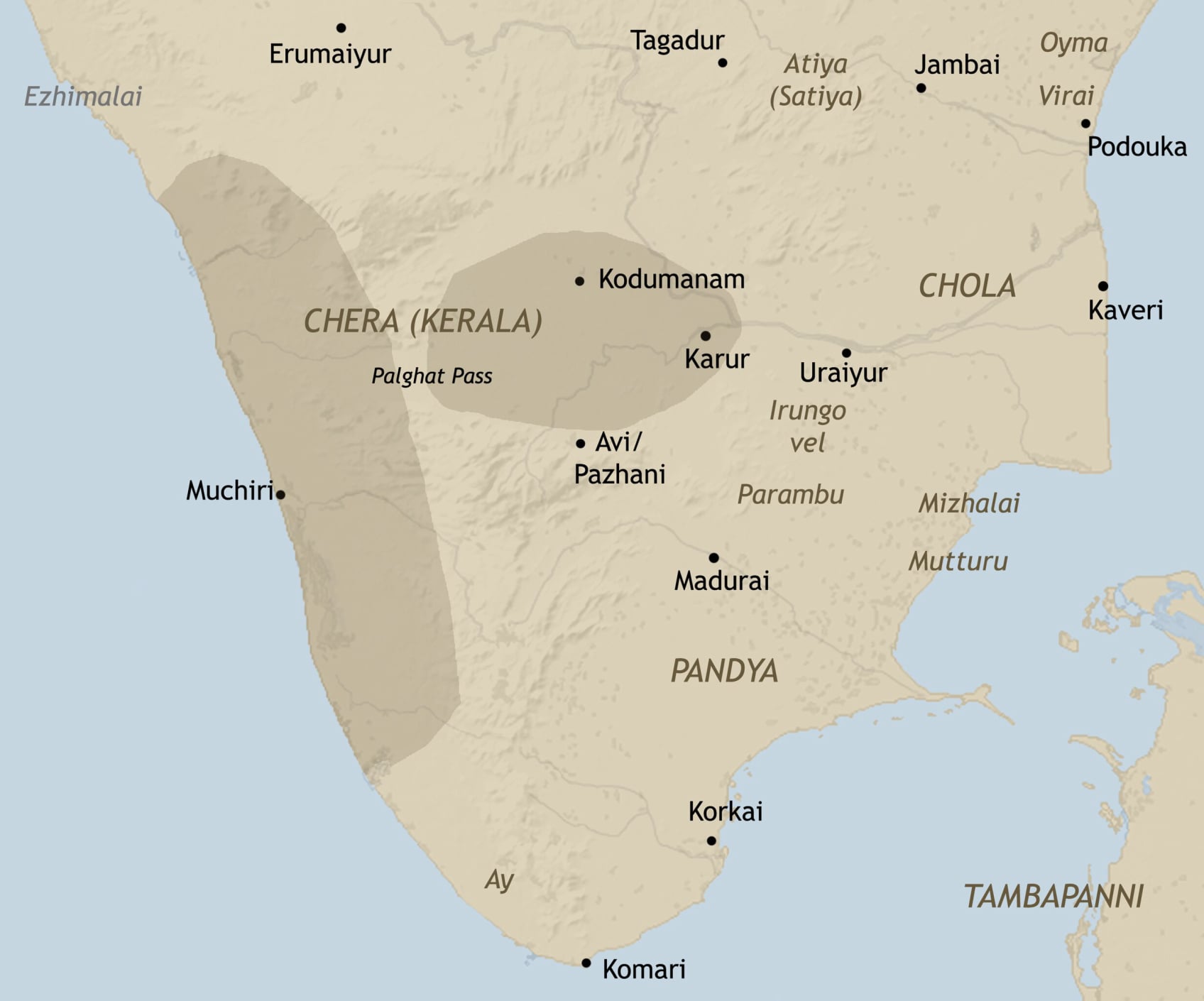
200 BC
Paper is invented in the Han dynasty
The papermaking process developed in east Asia, probably China, at least as early as 105 CE, by the Han court eunuch Cai Lun, although the earliest archaeological fragments of paper derive from the 2nd century BCE in China. The modern pulp and paper industry is global, with China leading its production and the United States following.
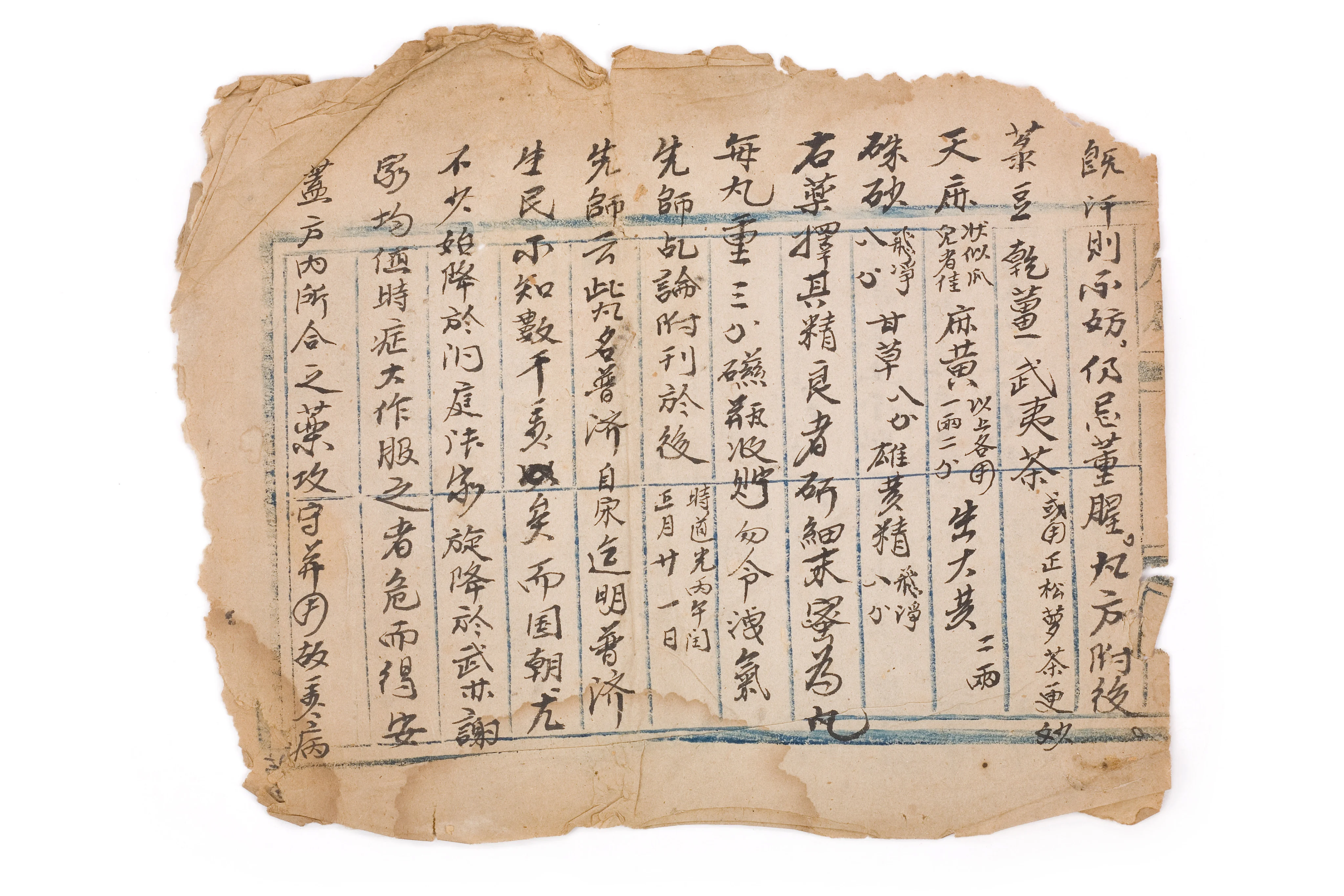
200 BC
El Mirador
El Mirador, largest early Maya city, flourishes.
El Mirador (which translates as "the lookout", "the viewpoint", or "the belvedere") is a large pre-Columbian Middle and Late Preclassic (1000 BC – 250 AD) Maya settlement, located in the north of the modern department of El Petén, Guatemala. It is part of the Mirador-Calakmul Karst Basin of northern Guatemala.
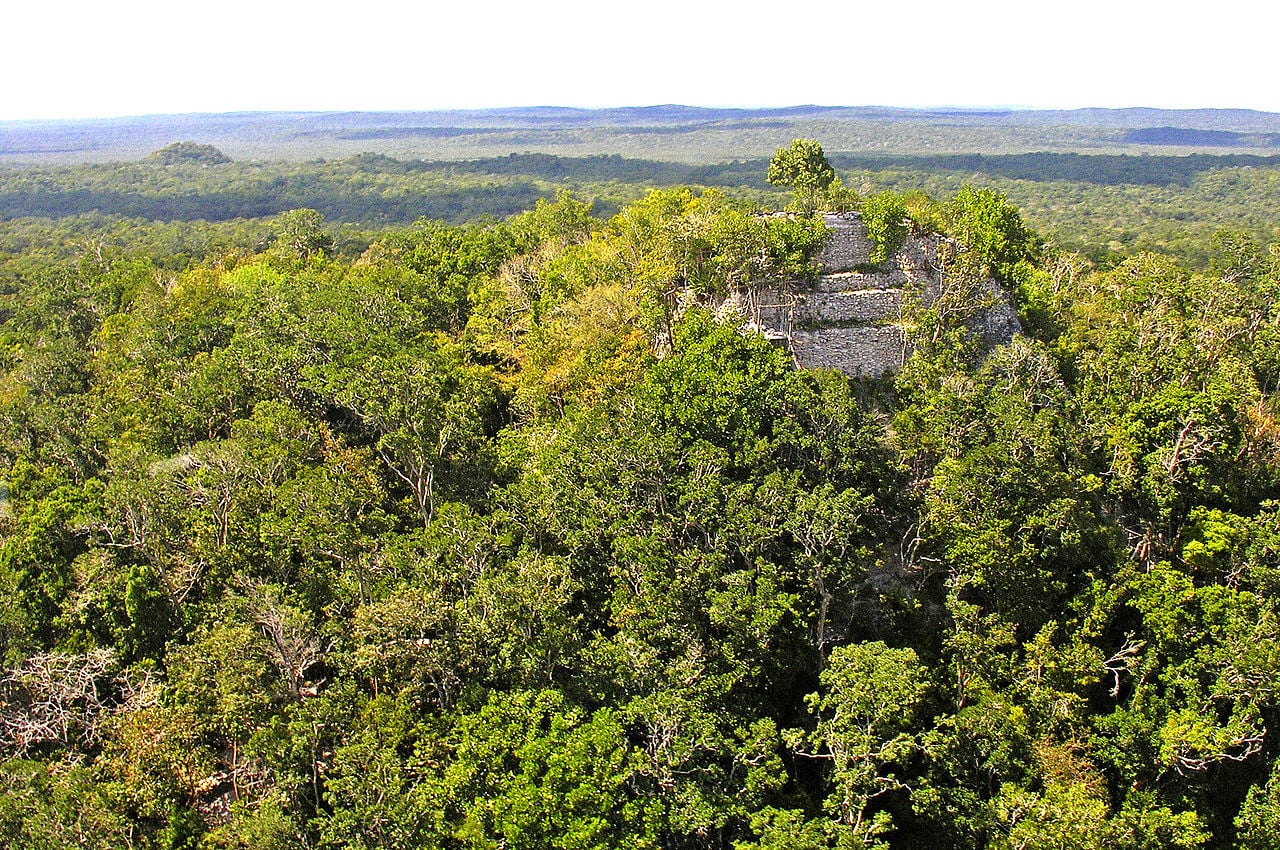
202 BC
Battle of Zama
Scipio Africanus defeats Hannibal at Battle of Zama.
The Battle of Zama was fought in 202 BC in what is now Tunisia between a Roman army commanded by Scipio Africanus and a Carthaginian army commanded by Hannibal. The battle was part of the Second Punic War and resulted in such a severe defeat for the Carthaginians that they capitulated, while Hannibal was forced into exile. The Roman army of approximately 30,000 men was outnumbered by the Carthaginians who fielded either 40,000 or 50,000; the Romans were stronger in cavalry, but the Carthaginians had 80 war elephants.
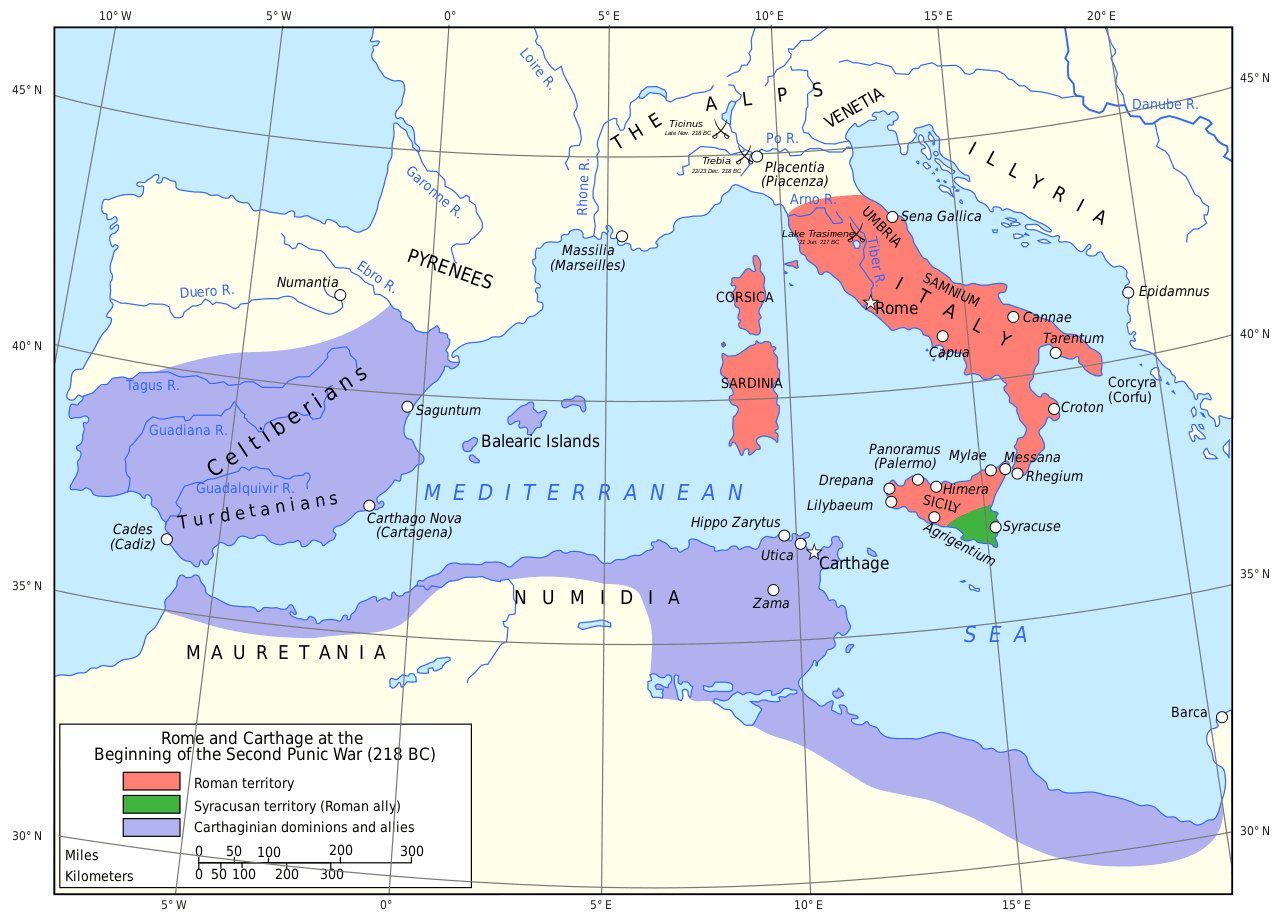
206 BC
Han dynasty
Han dynasty established in China, after the death of Qin Shi Huang; China in this period officially becomes a Confucian state and opens trading connections with the West, i.e. the Silk Road.
The Han dynasty (traditional Chinese: 漢朝; simplified Chinese: 汉朝; pinyin: Hàncháo) was an imperial dynasty of China (202 BC – 9 AD, 25–220 AD), established by Liu Bang and ruled by the House of Liu. The dynasty was preceded by the short-lived Qin dynasty (221–207 BC) and a warring interregnum known as the Chu–Han contention (206–202 BC), and it was succeeded by the Three Kingdoms period (220–280 AD). The dynasty was briefly interrupted by the Xin dynasty (9–23 AD) established by usurping regent Wang Mang, and is thus separated into two periods—the Western Han (202 BC – 9 AD) and the Eastern Han (25–220 AD). Spanning over four centuries, the Han dynasty is considered a golden age in Chinese history, and it has influenced the identity of the Chinese civilization ever since. Modern China's majority ethnic group refer to themselves as the "Han people" or "Han Chinese". The spoken Sinitic language and written Chinese are referred to respectively as the "Han language" and "Han characters".
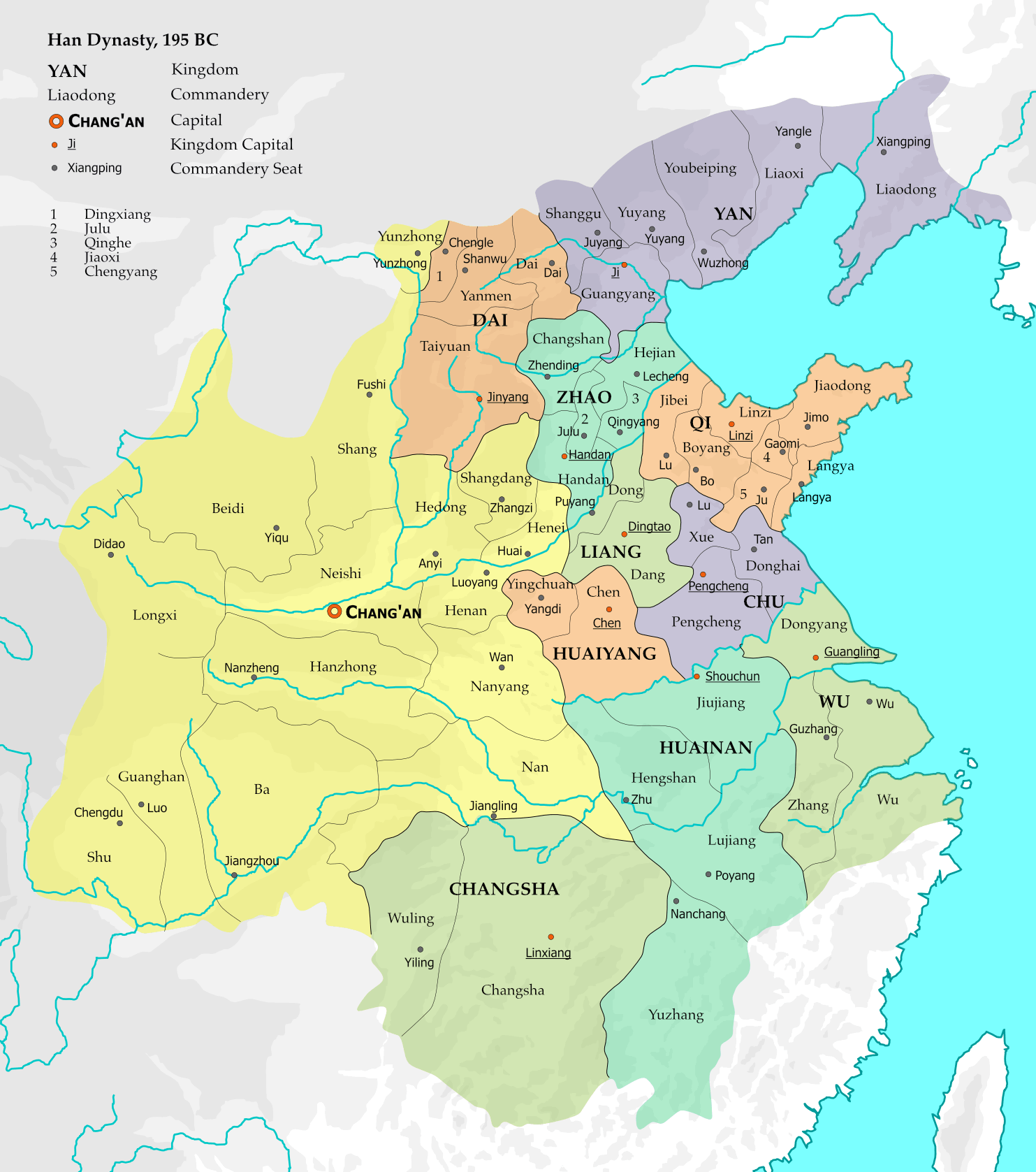
207 BC
Nanyue
Kingdom of Nanyue extends from Guangzhou to North Việt Nam.
Nanyue (Chinese: 南越 or 南粵; pinyin: Nányuè; Jyutping: Naam4 Jyut6; lit. 'Southern Yue', Vietnamese: Nam Việt, Zhuang: Namz Yied), was an ancient kingdom founded by the Chinese general Zhao Tuo, whose family (known in Vietnamese as the Triệu dynasty) continued to rule until 111 BC. Nanyue's geographical expanse covered the modern Chinese subdivisions of Guangdong, Guangxi, Hainan, Hong Kong, Macau, southern Fujian and central to northern Vietnam. Zhao Tuo, then Commander of Nanhai Commandery of the Qin dynasty, established Nanyue in 204 BC after the collapse of the Qin dynasty. At first, it consisted of the commanderies of Nanhai, Guilin, and Xiang.
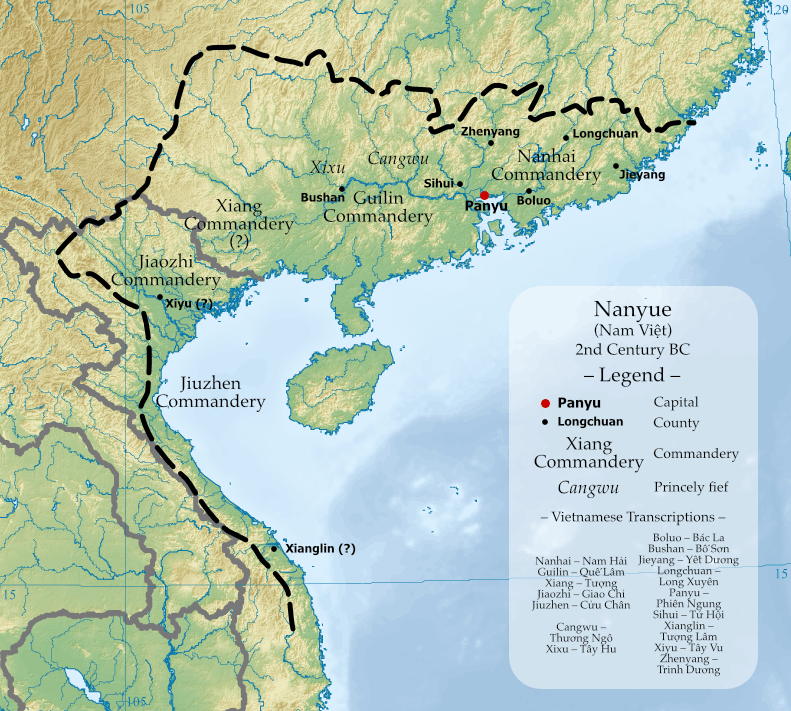
216 BC
Battle of Cannae
The Battle of Cannae was a key engagement of the Second Punic War between the Roman Republic and Carthage, fought on 2 August 216 BC near the ancient village of Cannae in Apulia, southeast Italy. The Carthaginians and their allies, led by Hannibal, surrounded and practically annihilated a larger Roman and Italian army under the consuls Lucius Aemilius Paullus and Gaius Terentius Varro. It is regarded as one of the greatest tactical feats in military history and one of the worst defeats in Roman history, and it cemented Hannibal's reputation as one of antiquity's greatest tacticians.
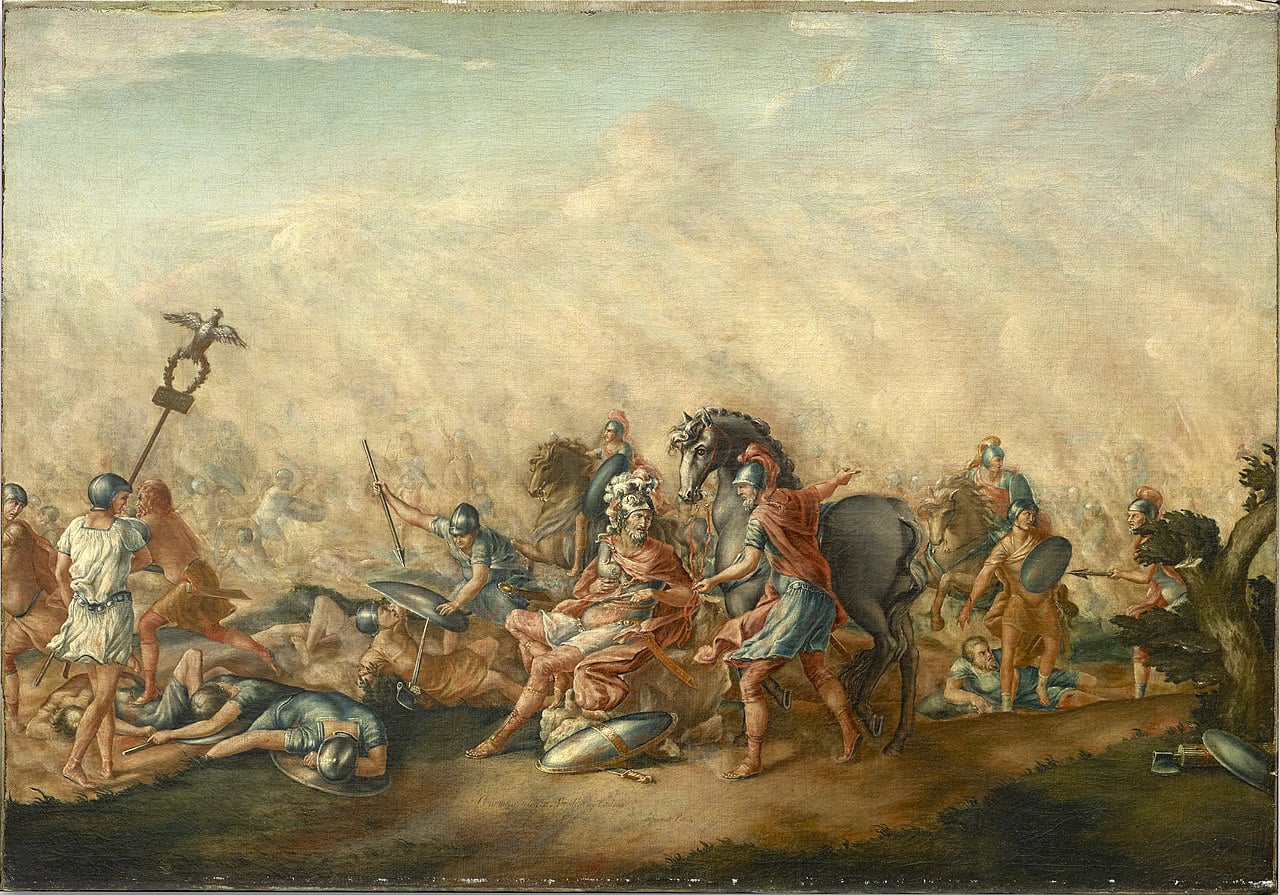
221 BC
Qin Shi Huang
Qin Shi Huang unifies China, end of Warring States period; marking the beginning of Imperial rule in China which lasts until 1912. Construction of the Great Wall by the Qin dynasty begins.
Qin Shi Huang (Chinese: 秦始皇, pronunciation; February 259 – 12 July 210 BC) was the founder of the Qin dynasty and the first Emperor of China. Rather than maintain the title of "king" (王) borne by the previous Shang and Zhou rulers, he assumed the invented title of "emperor" (皇帝), which would see continuous use by monarchs in China for the next two millennia.
Born in Handan, the capital of Zhao, as Ying Zheng (嬴政) or Zhao Zheng (趙政), his parents were King Zhuangxiang of Qin and Lady Zhao. The wealthy merchant Lü Buwei assisted him in succeeding his father as the king of Qin, after which he became King Zheng of Qin. By 221 BC, he had conquered all the other warring states and unified all of China, and he ascended the throne as China's first emperor. During his reign, his generals greatly expanded the size of the Chinese state: campaigns south of Chu permanently added the Yue lands of Hunan and Guangdong to the Sinosphere, and campaigns in Inner Asia conquered the Ordos Loop from the nomadic Xiongnu, although the Xiongnu later rallied under Modu Chanyu.
Qin Shi Huang also worked with his minister Li Si to enact major economic and political reforms aimed at the standardization of the diverse practices of the earlier Chinese states. He is traditionally said to have banned and burned many books and executed scholars. His public works projects included the incorporation of diverse state walls into a single Great Wall of China and a massive new national road system, as well as his city-sized mausoleum guarded by a life-sized Terracotta Army. He ruled until his death in 210 BC, during his fifth tour of eastern China.
Qin Shi Huang has often been portrayed as a tyrant and strict Legalist, characterizations that stem in part from the scathing assessments of the succeeding Han dynasty. Since the mid-20th century, scholars have began questioning this evaluation, inciting considerable discussion on the actual nature of his policies and reforms. Regardless, according to the sinologist Michael Loewe "few would contest the view that the achievements of his reign have exercised a paramount influence on the whole of China's subsequent history, marking the start of an epoch that closed in 1911".
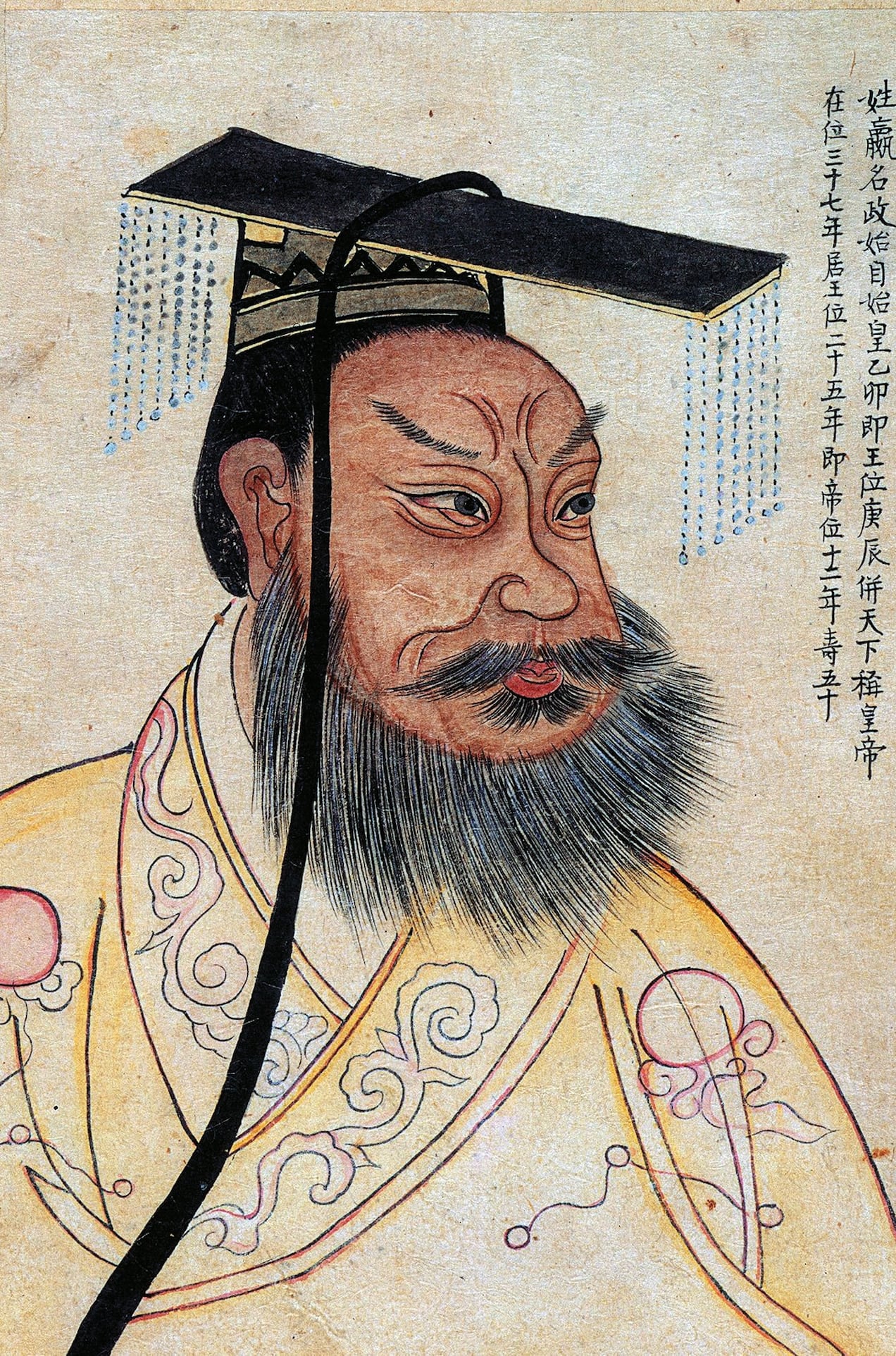
230 BC
Satavahana dynasty
The Satavahanas (Sādavāhana or Sātavāhana, IAST: Sātavāhana), also referred to as the Andhras (also Andhra-bhṛtyas or Andhra-jatiyas) in the Puranas, were an ancient Indian dynasty based in the Deccan region. Most modern scholars believe that the Satavahana rule began in the late second century BCE and lasted until the early third century CE, although some assign the beginning of their rule to as early as the 3rd century BCE based on the Puranas, but uncorroborated by archaeological evidence. The Satavahana kingdom mainly comprised the present-day Andhra Pradesh, Telangana, and Maharashtra. At different times, their rule extended to parts of modern Gujarat, Madhya Pradesh, and Karnataka. The dynasty had different capital cities at different times, including Pratishthana (Paithan) and Amaravati (Dharanikota).
The origin of the dynasty is uncertain, but according to the Puranas, their first king overthrew the Kanva dynasty. In the post-Maurya era, the Satavahanas established peace in the Deccan region and resisted the onslaught of foreign invaders. In particular their struggles with the Saka (Western Satraps) went on for a long time. The dynasty reached its zenith under the rule of Gautamiputra Satakarni and his successor Vasisthiputra Pulamavi. The kingdom had fragmented into smaller states by the early 3rd century CE.
The Satavahanas were early issuers of Indian state coinage struck with images of their rulers. They formed a cultural bridge and played a vital role in trade and the transfer of ideas and culture to and from the Indo-Gangetic Plain to the southern tip of India.
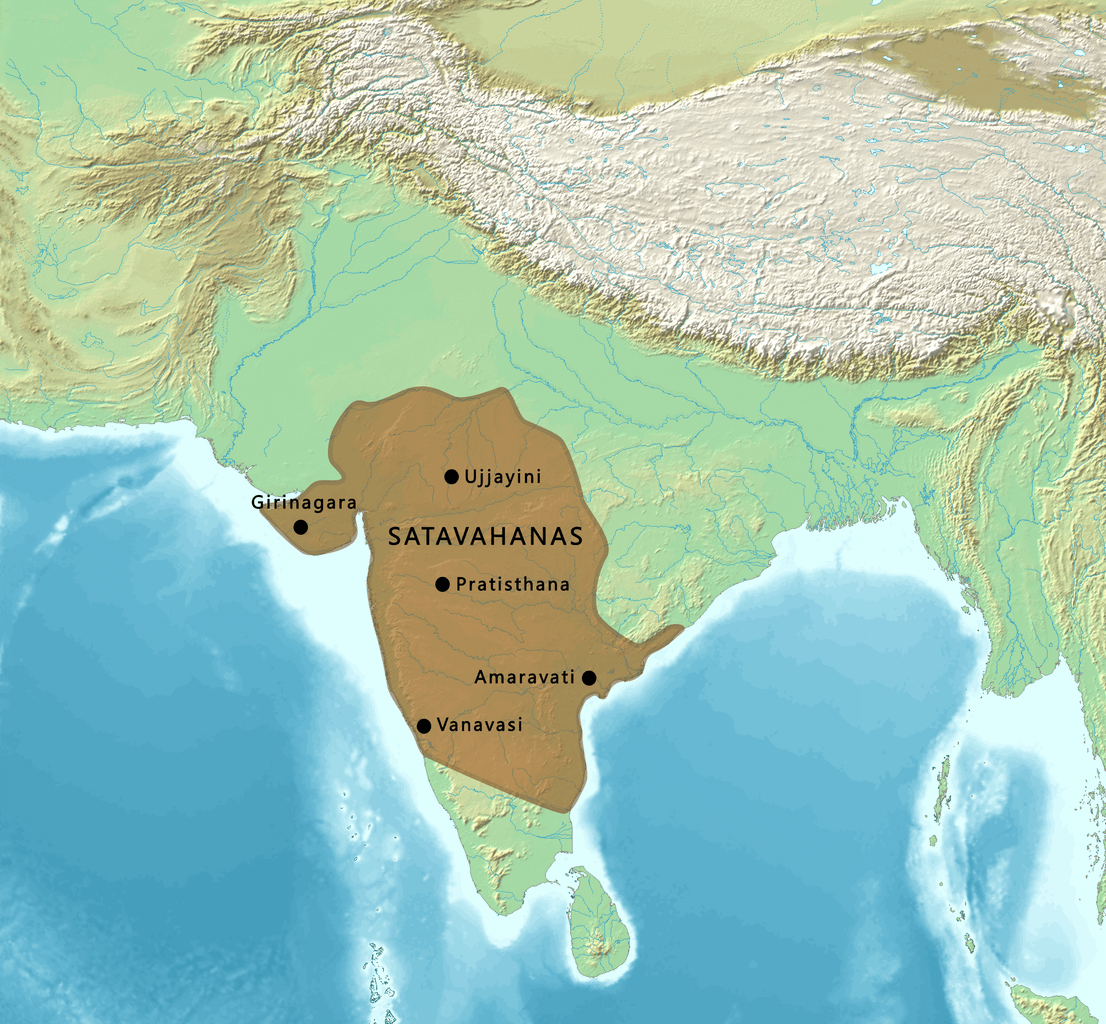
232 BC
Death of Emperor Ashoka; Decline of the Mauryan Empire
According to the Sri Lankan tradition, Ashoka died during his 37th regnal year, which suggests that he died around 232 BCE.
According to the Ashokavadana, the emperor fell severely ill during his last days. He started using state funds to make donations to the Buddhist sangha, prompting his ministers to deny him access to the state treasury. Ashoka then started donating his personal possessions, but was similarly restricted from doing so. On his deathbed, his only possession was the half of a myrobalan fruit, which he offered to the sangha as his final donation. Such legends encourage generous donations to the sangha and highlight the role of the kingship in supporting the Buddhist faith.
Legend states that during his cremation, his body burned for seven days and nights.
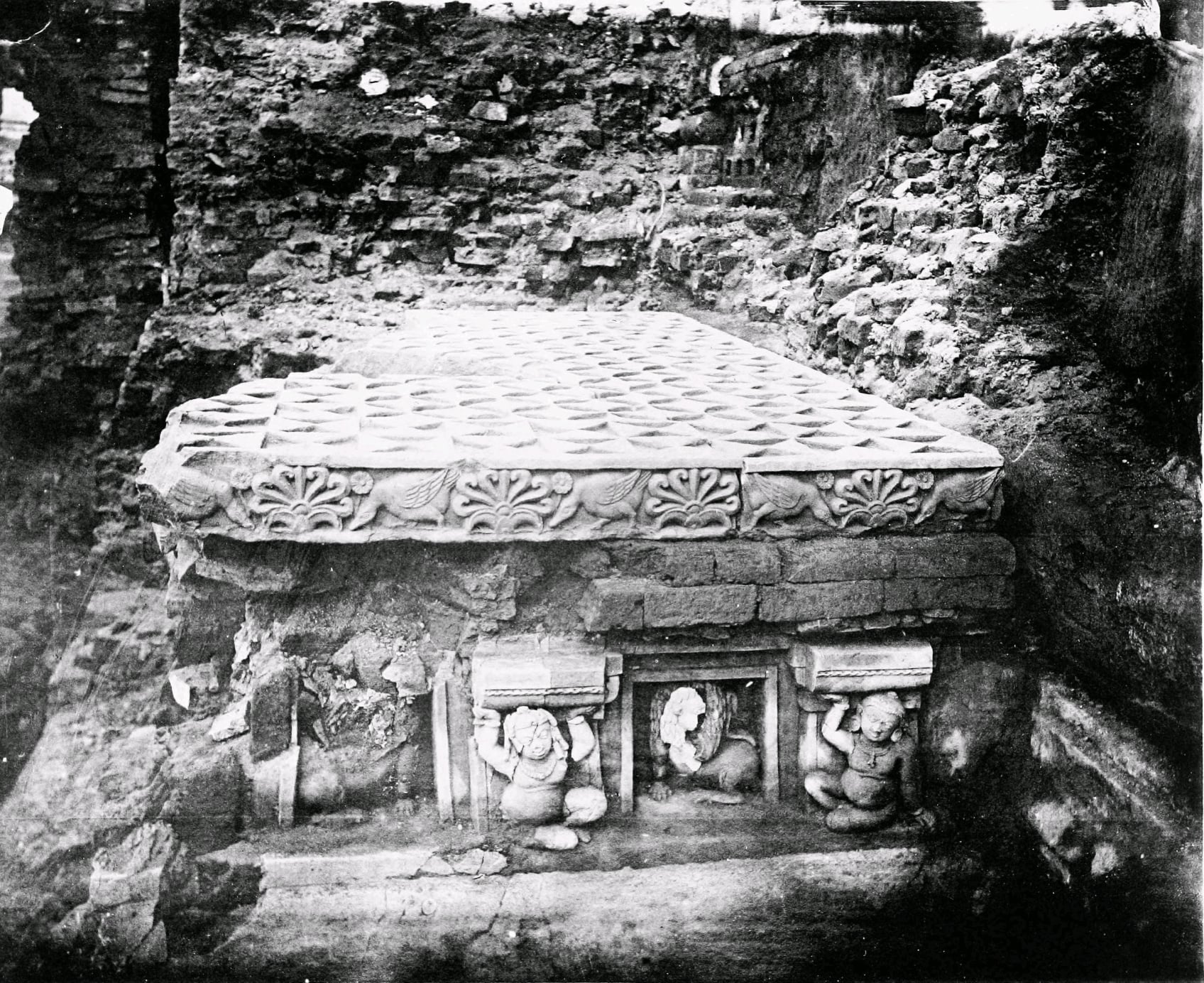
250 BC
Parthia
Rise of Parthia (Ashkâniân), the second native dynasty of ancient Persia.
Parthia (Old Persian: 𐎱𐎼𐎰𐎺 Parθava; Parthian: 𐭐𐭓𐭕𐭅 Parθaw; Middle Persian: 𐭯𐭫𐭮𐭥𐭡𐭥 Pahlaw) is a historical region located in northeastern Greater Iran. It was conquered and subjugated by the empire of the Medes during the 7th century BC, was incorporated into the subsequent Achaemenid Empire under Cyrus the Great in the 6th century BC, and formed part of the Hellenistic Seleucid Empire after the 4th-century BC conquests of Alexander the Great. The region later served as the political and cultural base of the Eastern Iranian Parni people and Arsacid dynasty, rulers of the Parthian Empire (247 BC – 224 AD). The Sasanian Empire, the last state of pre-Islamic Iran, also held the region and maintained the seven Parthian clans as part of their feudal aristocracy.
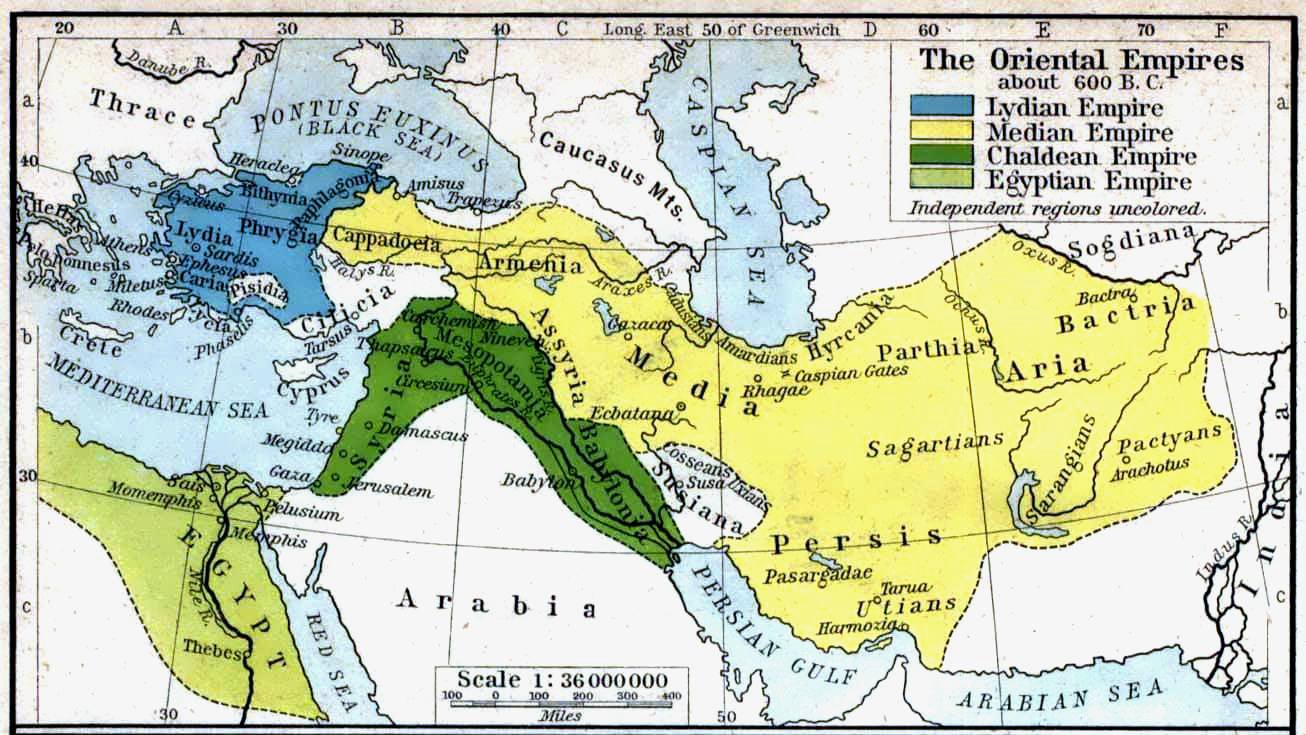
255 BC
Mahinda
Ashoka sends a Buddhist missionary led by his son who was Mahinda Thero (Buddhist monk) to Sri Lanka (then Lanka) Mahinda (Buddhist monk).
Mahinda (Sinhala: මිහිඳු මහරහතන් වහන්සේ) (285 BCE – 205 BCE) was an Indian Buddhist monk depicted in Buddhist sources as bringing Buddhism to Sri Lanka. He was the first-born son and Prince of the third Mauryan Emperor Ashoka The Great from his wife and Empress Devi and the elder brother of Princess Sanghamitra.
Mahinda was sent as a Buddhist missionary to the Anuradhapura Kingdom in Sri Lanka. Mahinda attained arhatship and resided at Mihintale. He played an important role in proliferating Buddhism throughout the Indian subcontinent.

257 BC
An Dương Vương takes over Việt Nam (then Kingdom of Âu Lạc)
An Dương Vương (personal name Thục Phán, was the founding king and the only ruler of the kingdom of Âu Lạc, an ancient state centered in the Red River Delta. As the leader of the Âu Việt tribes, he defeated the last Hùng king of the state of Văn Lang and united its people – known as the Lạc Việt – with his people, the Âu Việt. An Dương Vương fled and committed suicide after the war with Nanyue forces in 179 BCE.
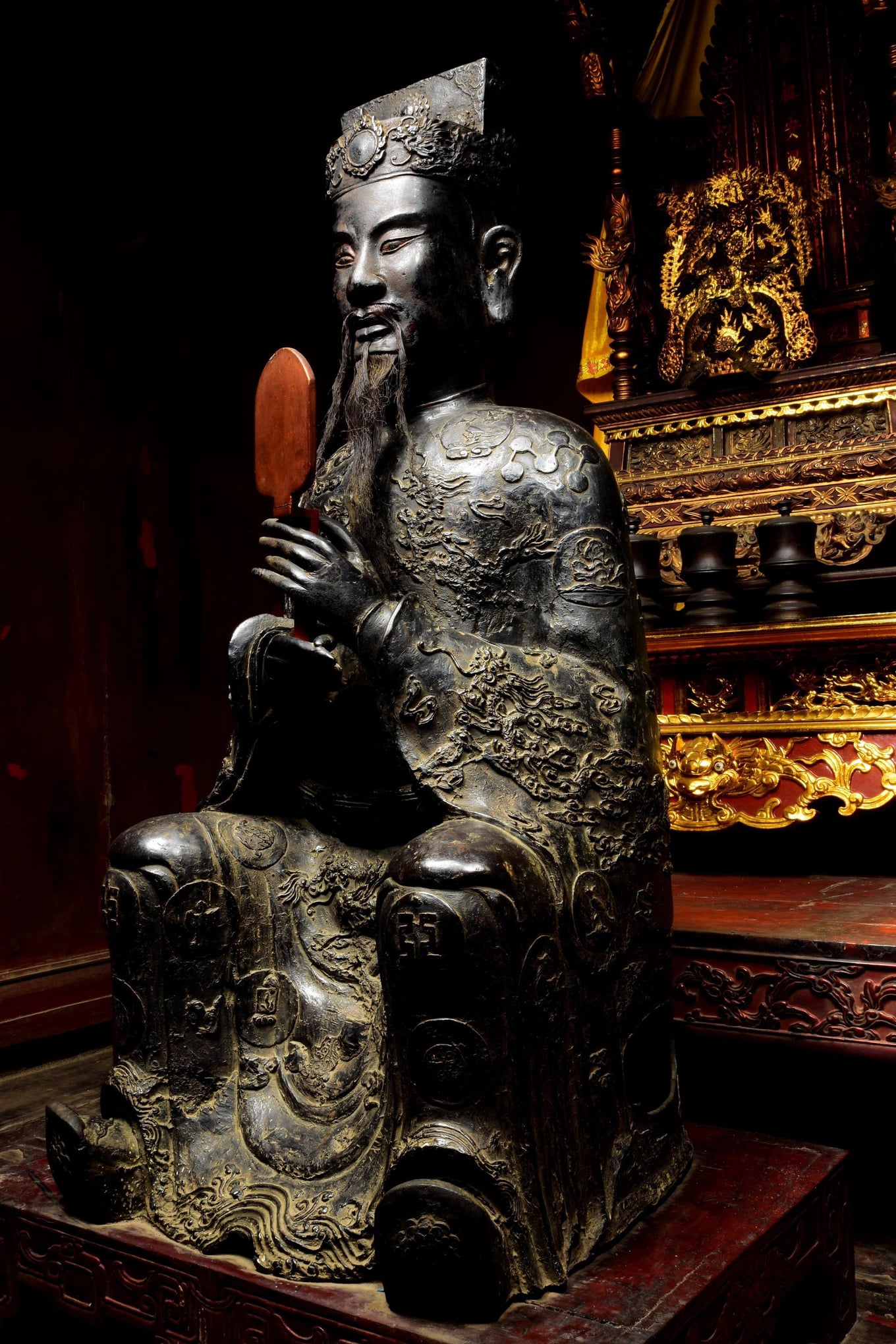
261 BC
Kalinga War
The Kalinga War (ended c. 261 BCE) was fought in ancient India between the Maurya Empire under Ashoka and Kalinga, an independent feudal kingdom located on the east coast, in the present-day state of Odisha and northern parts of Andhra Pradesh. It is presumed that the battle was fought on Dhauli hills in Dhauli which is situated on the banks of Daya River. The Kalinga War was one of the largest and deadliest battles in Indian history.
This is the only major war Ashoka fought after his accession to the throne, and marked the close of the empire-building and military conquests of ancient India that began with the Mauryan Emperor Chandragupta Maurya. The war cost nearly 250,000 lives.
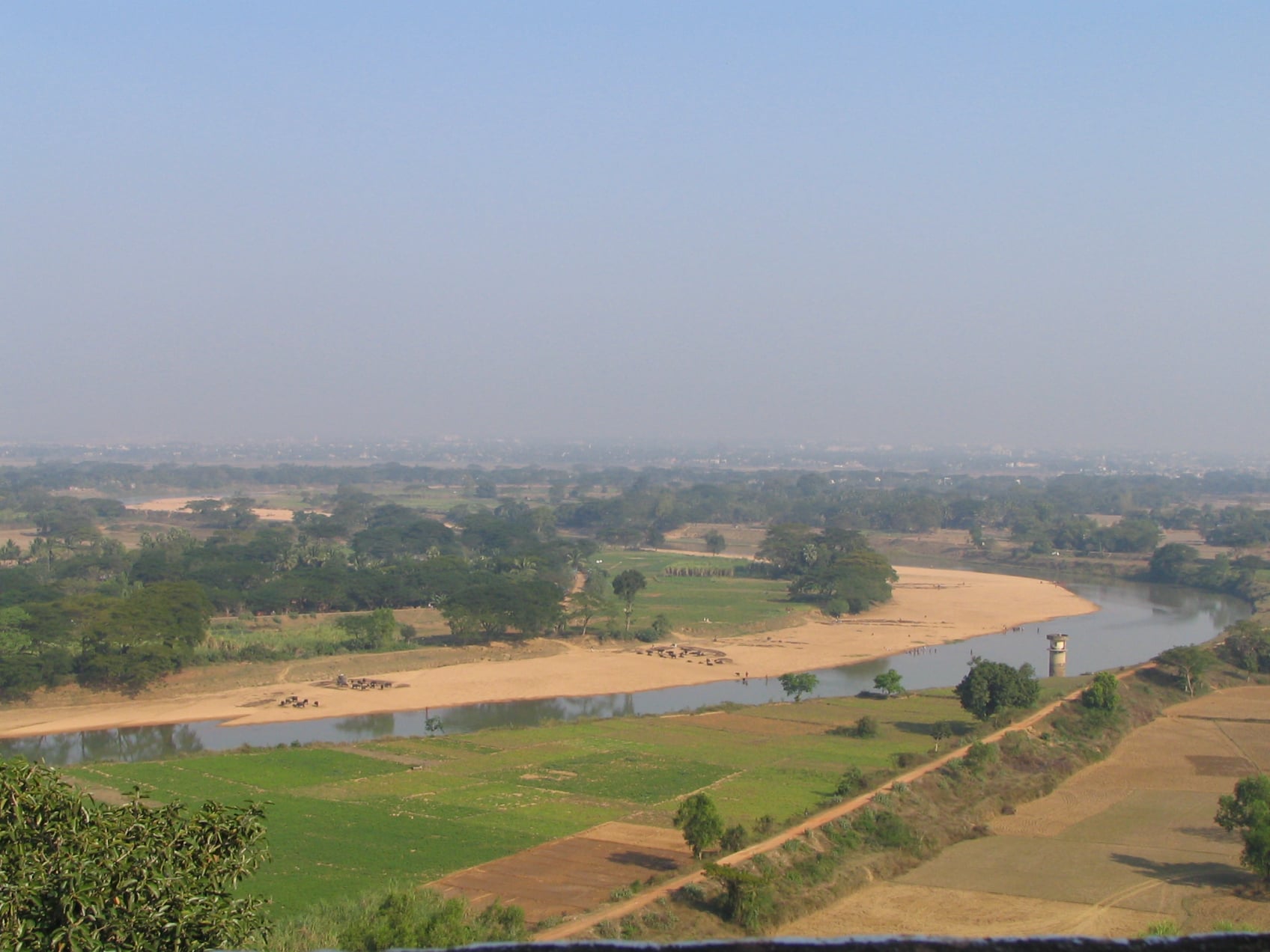
273 BC
Ashoka becomes the emperor of the Maurya Empire
Ashoka (Sanskrit pronunciation: [ɐˈɕo:kɐ], IAST: Aśoka; c. 304 – 232 BCE), popularly known as Ashoka the Great, was the third Mauryan Emperor of Magadha in the Indian subcontinent during c. 268 to 232 BCE. His empire covered the largest part of the Indian subcontinent, stretching from present-day Afghanistan in the west to present-day Bangladesh in the east, with its capital at Pataliputra. A patron of Buddhism, he is credited with playing an important role in the spread of Buddhism across ancient Asia.
Ashoka's edicts state that during his eighth regnal year (c. 260 BCE), he conquered Kalinga after a brutal war. Ashoka subsequently devoted himself to the propagation of "dhamma" or righteous conduct, the major theme of the edicts. Ashoka's edicts suggest that a few years after the Kalinga War, he was gradually drawn towards Buddhism. The Buddhist legends credit Ashoka with establishing a large number of stupas, patronising the Third Buddhist council, supporting Buddhist missionaries, making generous donations to the sangha.
Ashoka's existence as a historical emperor had almost been forgotten, but since the decipherment of sources written in Brahmi script in the 19th century, Ashoka holds a reputation as one of the greatest Indian emperors. The emblem of the modern Republic of India is an adaptation of the Lion Capital of Ashoka. Ashoka's wheel, the Ashoka Chakra is adopted at the centre of the National Flag of India.
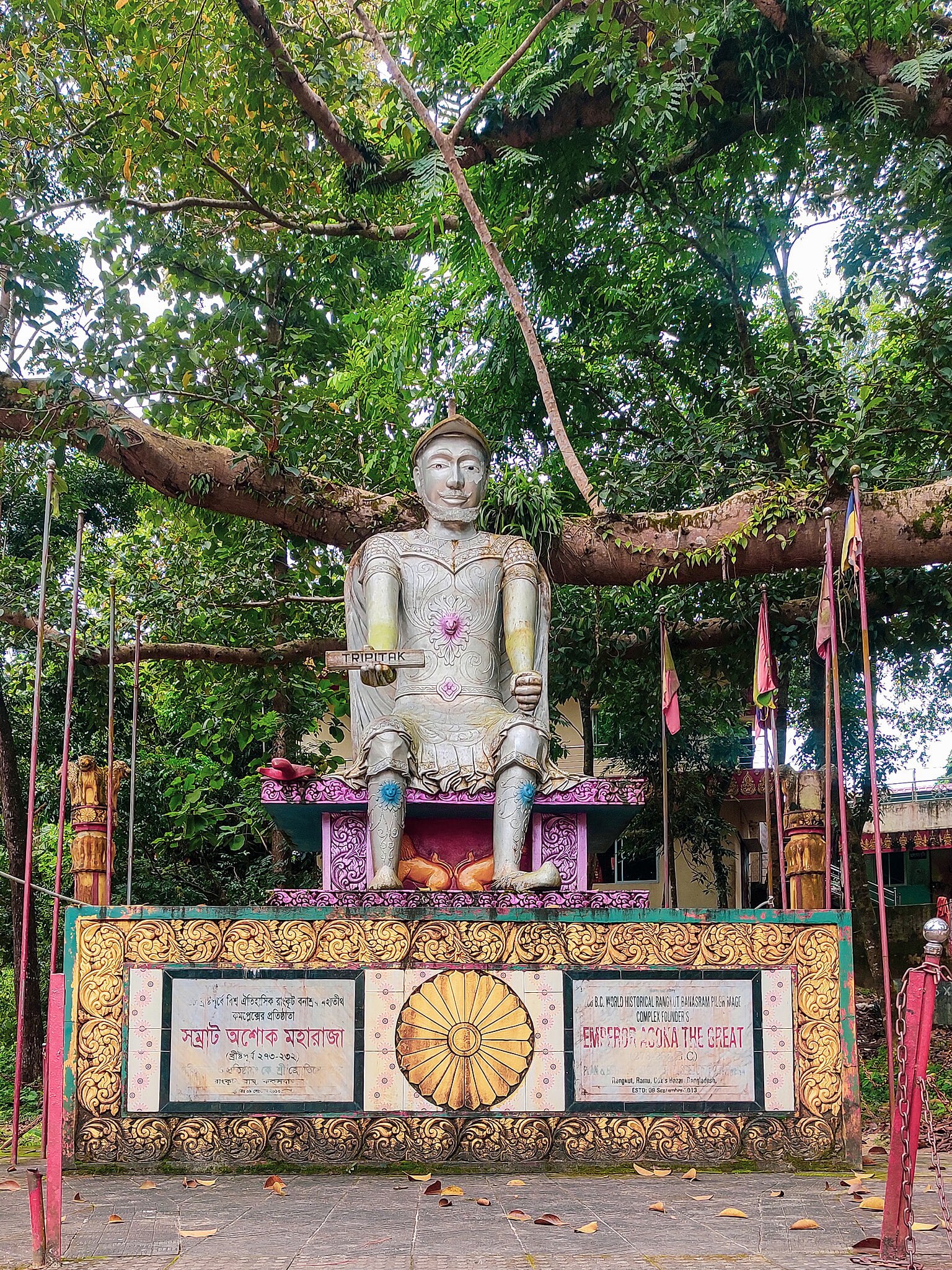
300 BC
Great Pyramid of Cholula
Construction of the Great Pyramid of Cholula, the world's largest pyramid by volume (the Great Pyramid of Giza built 2560 BC Egypt stands 146.5 meters, making it 91.5 meters taller), begins in Cholula, Puebla, Mexico.
The Great Pyramid of Cholula, also known as Tlachihualtepetl (Nahuatl for "made-by-hand mountain"), is a complex located in Cholula, Puebla, Mexico. It is the largest archaeological site of a pyramid (temple) in the world, as well as the largest pyramid by volume known to exist in the world today. The adobe brick pyramid stands 25 metres (82 ft) above the surrounding plain, which is significantly shorter than the Great Pyramid of Giza's height of 146.6 metres (481 ft), but much wider, measuring 300 by 315 metres (984 by 1,033 ft) in its final form, compared to the Great Pyramid's base dimensions of 230.3 by 230.3 metres (756 by 756 ft). The pyramid is a temple that traditionally has been viewed as having been dedicated to the god Quetzalcoatl. The architectural style of the building was linked closely to that of Teotihuacan in the Valley of Mexico, although influence from the Gulf Coast is evident as well, especially from El Tajín.
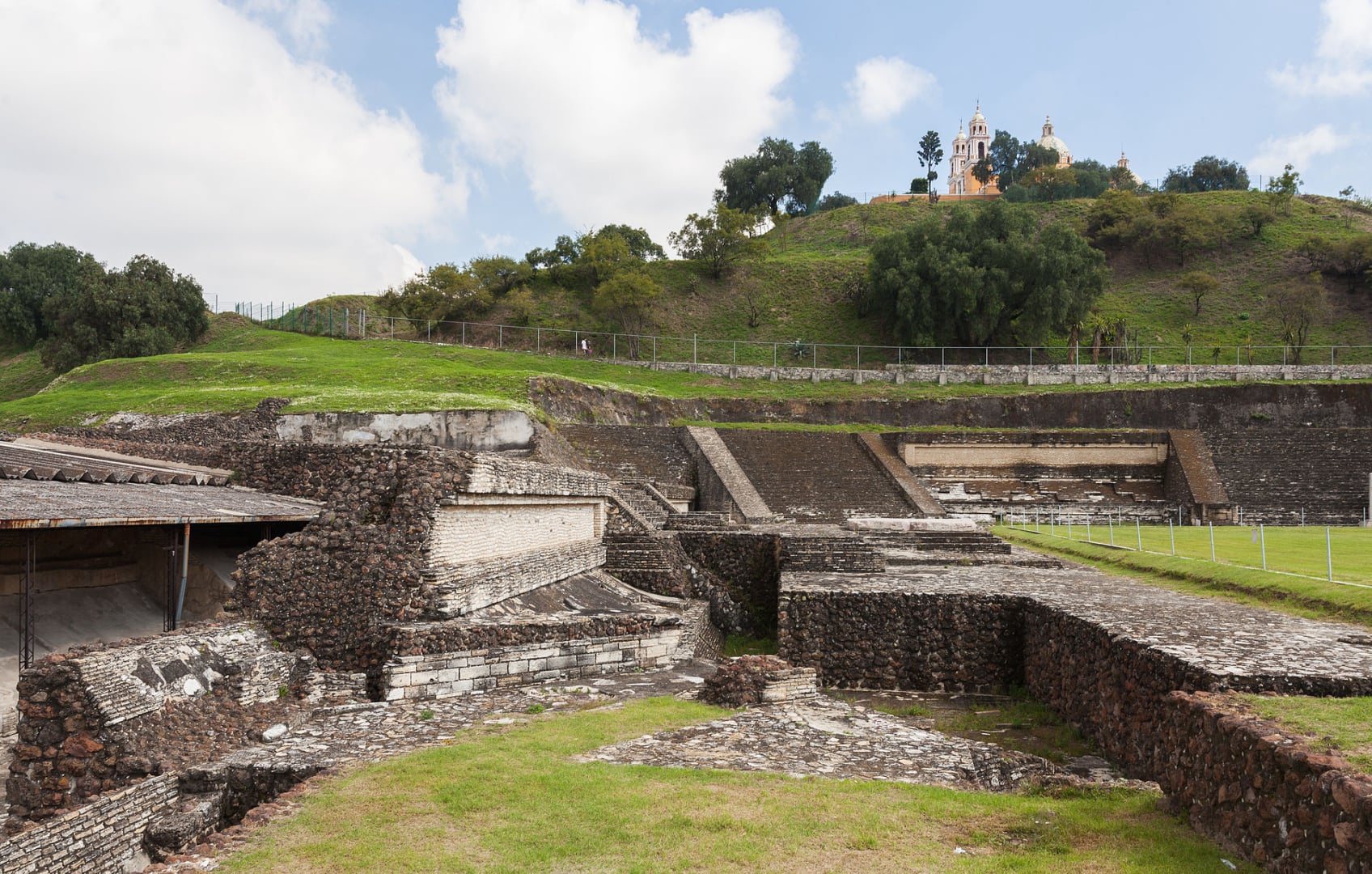
300 BC
Chola Empire forms in South India
The Chola Empire, which is often referred to as the Imperial Cholas, was a medieval Indian, thalassocratic empire that was established by the Pottapi branch of the Chola dynasty that rose to prominence during the middle of the ninth century and united southern India under their rule.
The power and the prestige the Cholas had among political powers in South, Southeast, and East Asia at its peak is evident in their expeditions to the Ganges, naval raids on cities of the Srivijaya Empire on the island of Sumatra, and their repeated embassies to China. The Chola fleet represented the peak of ancient Indian maritime capacity. Around 1070, the Cholas began to lose almost all of their overseas territories but the later Cholas (1070–1279) continued to rule portions of southern India. The Chola empire went into decline at the beginning of the 13th century with the rise of the Pandyan dynasty, which ultimately caused the Chola's downfall.
The Cholas established a centralized form of government and a disciplined bureaucracy. Their patronage of Tamil literature and their zeal for building temples resulted in some of the greatest works of Tamil literature and architecture. The Chola kings were avid builders, and regarded temples in their kingdoms as both places of worship and of economic activity. A prime example of Chola architecture is Brihadisvara temple at Thanjavur, a UNESCO World Heritage Site, which the Rajaraja commissioned in 1010. They were also well known for their patronage of art. The development of the sculpting technique used in Chola bronzes of Hindu deities that were built using a lost wax process, was pioneered in their time. The Chola tradition of art spread, and influenced the architecture and art of Southeast Asia.
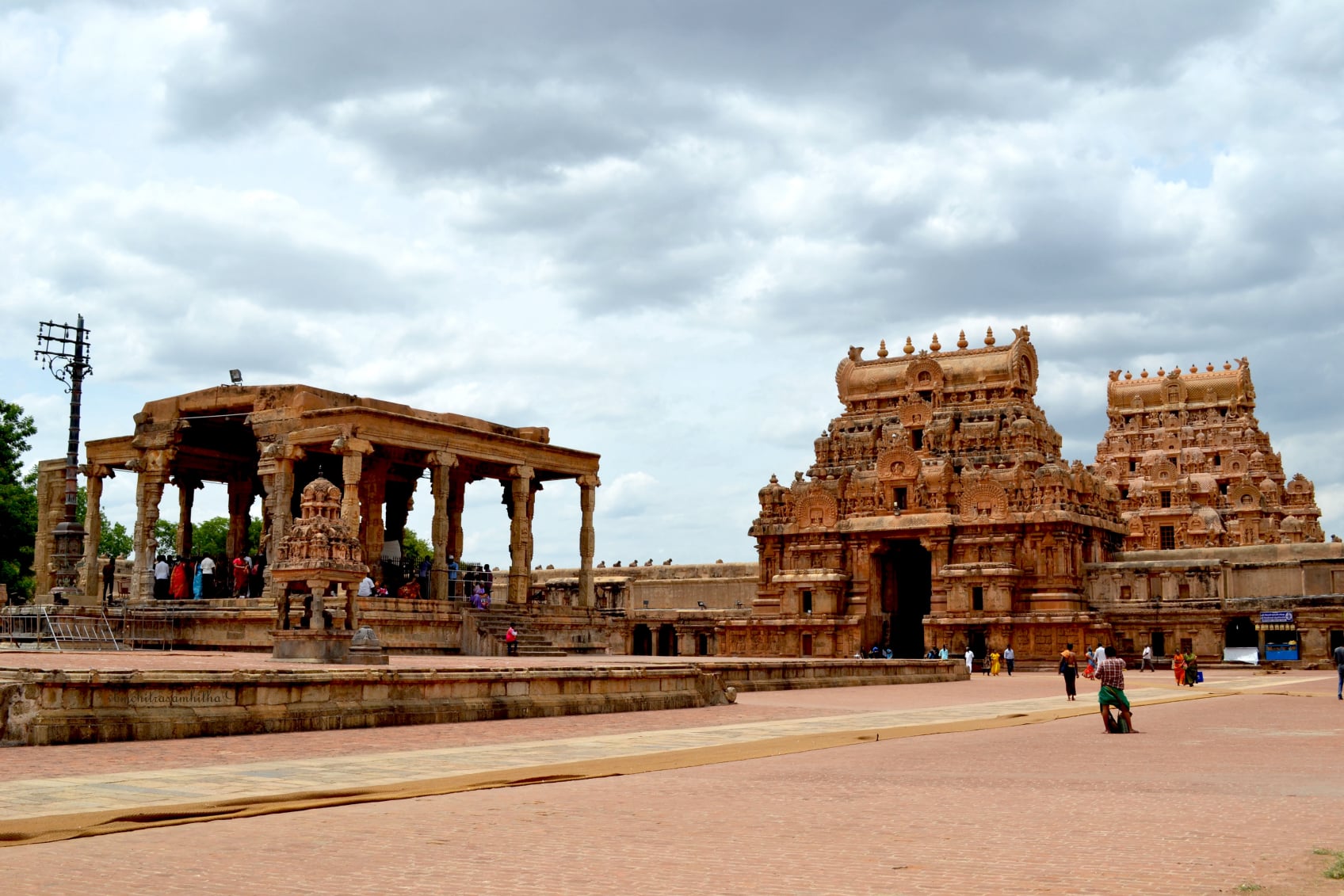
300 BC
Sangam literature
Sangam literature (Tamil: சங்க இலக்கியம், Canka ilakkiyam) period in the history of ancient southern India (known as the Tamilakam).
The Sangam literature (Tamil: சங்க இலக்கியம், caṅka ilakkiyam) historically known as 'the poetry of the noble ones' (Tamil: சான்றோர் செய்யுள், Cāṉṟōr ceyyuḷ) connotes the ancient Tamil literature and is the earliest known literature of South India. The Tamil tradition and legends link it to three literary gatherings around Madurai and Kapāṭapuram: the first over 4,440 years, the second over 3,700 years, and the third over 1,850 years before the beginning of the common era. Scholars consider this Tamil tradition-based chronology as ahistorical and mythical. Most scholars suggest the historical Sangam literature era spanned from c. 300 BCE to 300 CE, while others variously place this early classical Tamil literature period a bit later and more narrowly but all before 300 CE. According to Kamil Zvelebil, a Tamil literature and history scholar, the most acceptable range for the Sangam literature is 100 BCE to 250 CE, based on the linguistic, prosodic and quasi-historic allusions within the texts and the colophons.
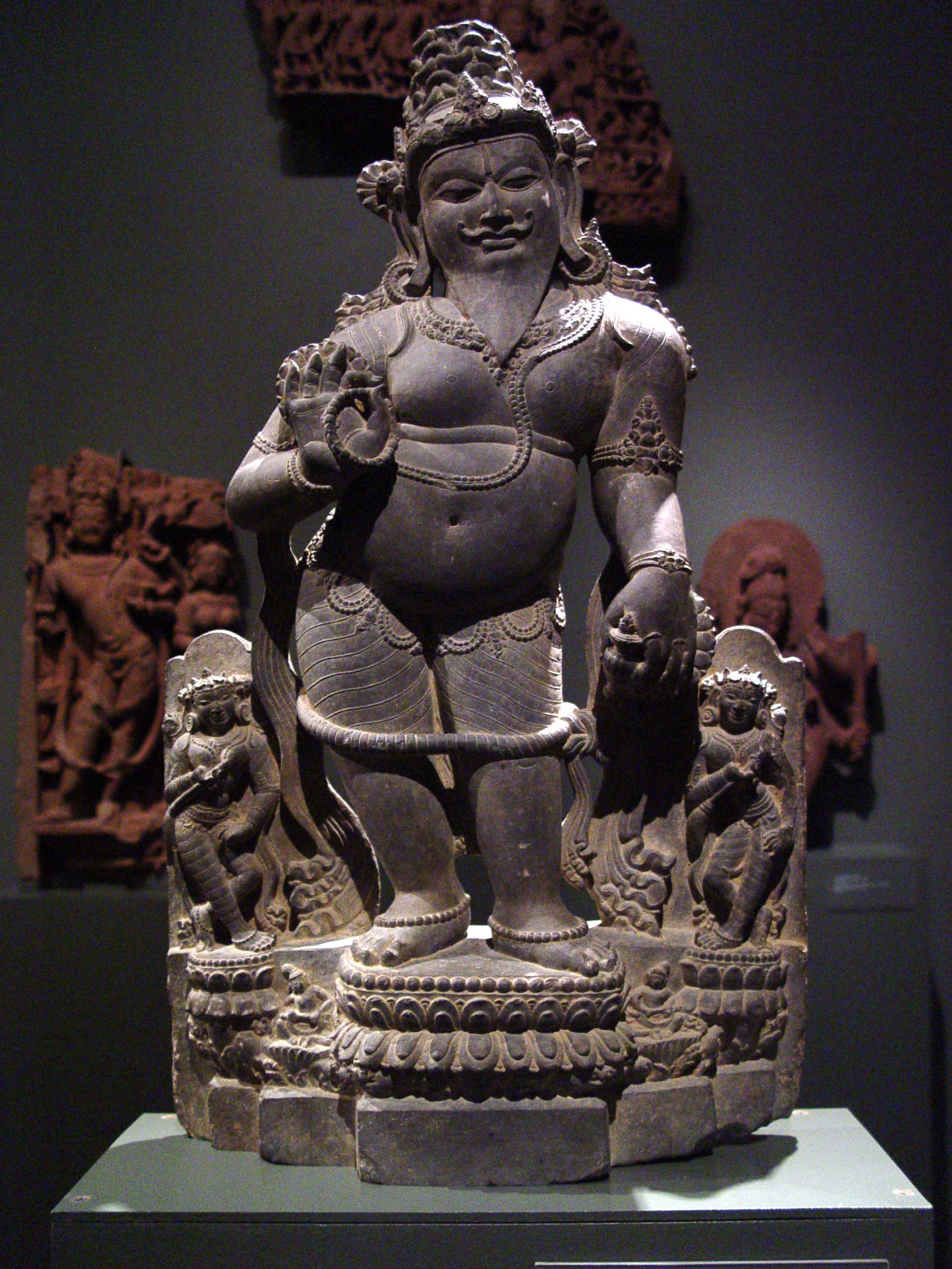
c. 300 BC
Pingala uses zero and binary numeral system
Acharya Pingala (Sanskrit: पिङ्गल, romanized: Piṅgala; c. 3rd–2nd century BCE) was an ancient Indian poet and mathematician, and the author of the Chandaḥśāstra (Sanskrit: छन्दःशास्त्र, lit. 'A Treatise on Prosody'), also called the Pingala-sutras (Sanskrit: पिङ्गलसूत्राः, romanized: Piṅgalasūtrāḥ, lit. 'Pingala's Threads of Knowledge'), the earliest known treatise on Sanskrit prosody.
The Chandaḥśāstra is a work of eight chapters in the late Sūtra style, not fully comprehensible without a commentary. It has been dated to the last few centuries BCE. In the 10th century CE, Halayudha wrote a commentary elaborating on the Chandaḥśāstra. According to some historians Maharshi Pingala was the brother of Pāṇini, the famous Sanskrit grammarian, considered the first descriptive linguist. Another think tank identifies him as Patanjali, the 2nd century CE scholar who authored Mahabhashya.
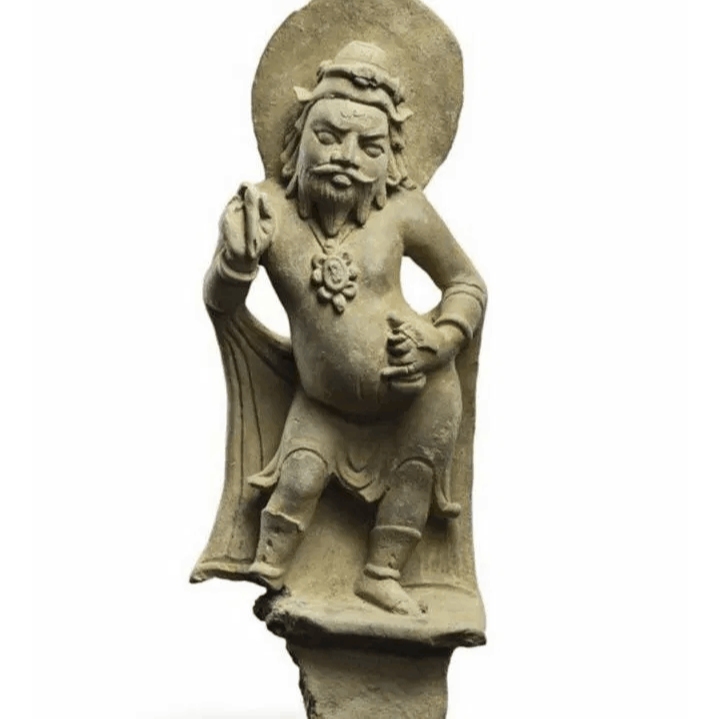
c. 300 BC
Completion of Euclid's Elements
The Elements (Greek: Στοιχεῖα Stoikheîa) is a mathematical treatise consisting of 13 books attributed to the ancient Greek mathematician Euclid c. 300 BC. It is a collection of definitions, postulates, propositions (theorems and constructions), and mathematical proofs of the propositions. The books cover plane and solid Euclidean geometry, elementary number theory, and incommensurable lines. Elements is the oldest extant large-scale deductive treatment of mathematics. It has proven instrumental in the development of logic and modern science, and its logical rigor was not surpassed until the 19th century.
Euclid's Elements has been referred to as the most successful and influential textbook ever written. It was one of the very earliest mathematical works to be printed after the invention of the printing press and has been estimated to be second only to the Bible in the number of editions published since the first printing in 1482, the number reaching well over one thousand. For centuries, when the quadrivium was included in the curriculum of all university students, knowledge of at least part of Euclid's Elements was required of all students. Not until the 20th century, by which time its content was universally taught through other school textbooks, did it cease to be considered something all educated people had read.
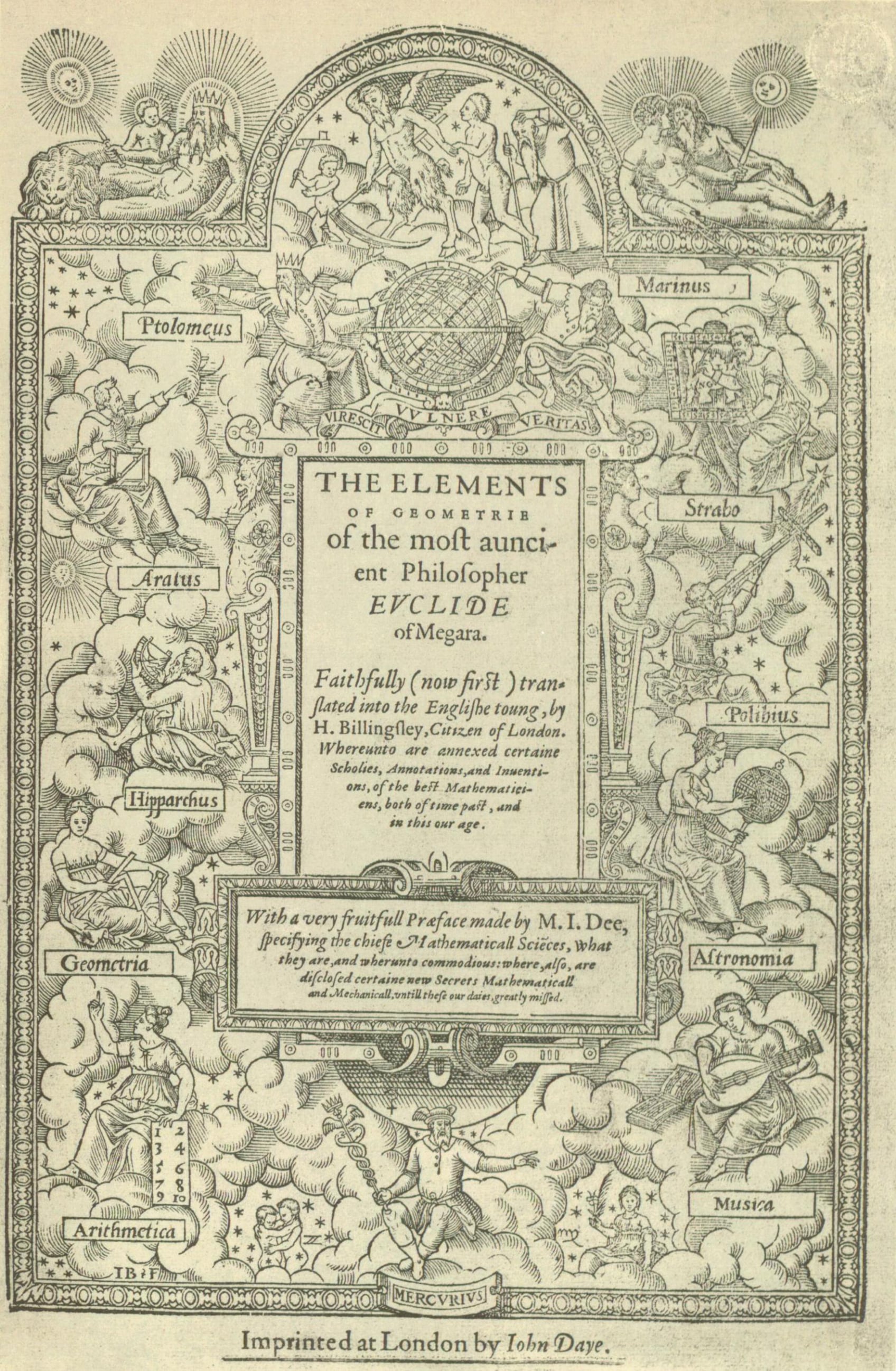
305 BC
Chandragupta Maurya Southern conquest
Chandragupta Maurya seizes the satrapies of Paropamisadae (Kabul), Aria (Herat), Arachosia (Qanadahar) and Gedrosia (Baluchistan) from Seleucus I Nicator, the Macedonian satrap of Babylonia, in return for 500 elephants.
Chandragupta sent 500 war elephants to Seleucus, which played a key role in Seleucus' victory at the Battle of Ipsus. In addition to this treaty, Seleucus dispatched Megasthenes as an ambassador to Chandragupta's court, and later Antiochos sent Deimakos to his son Bindusara at the Maurya court at Patna.
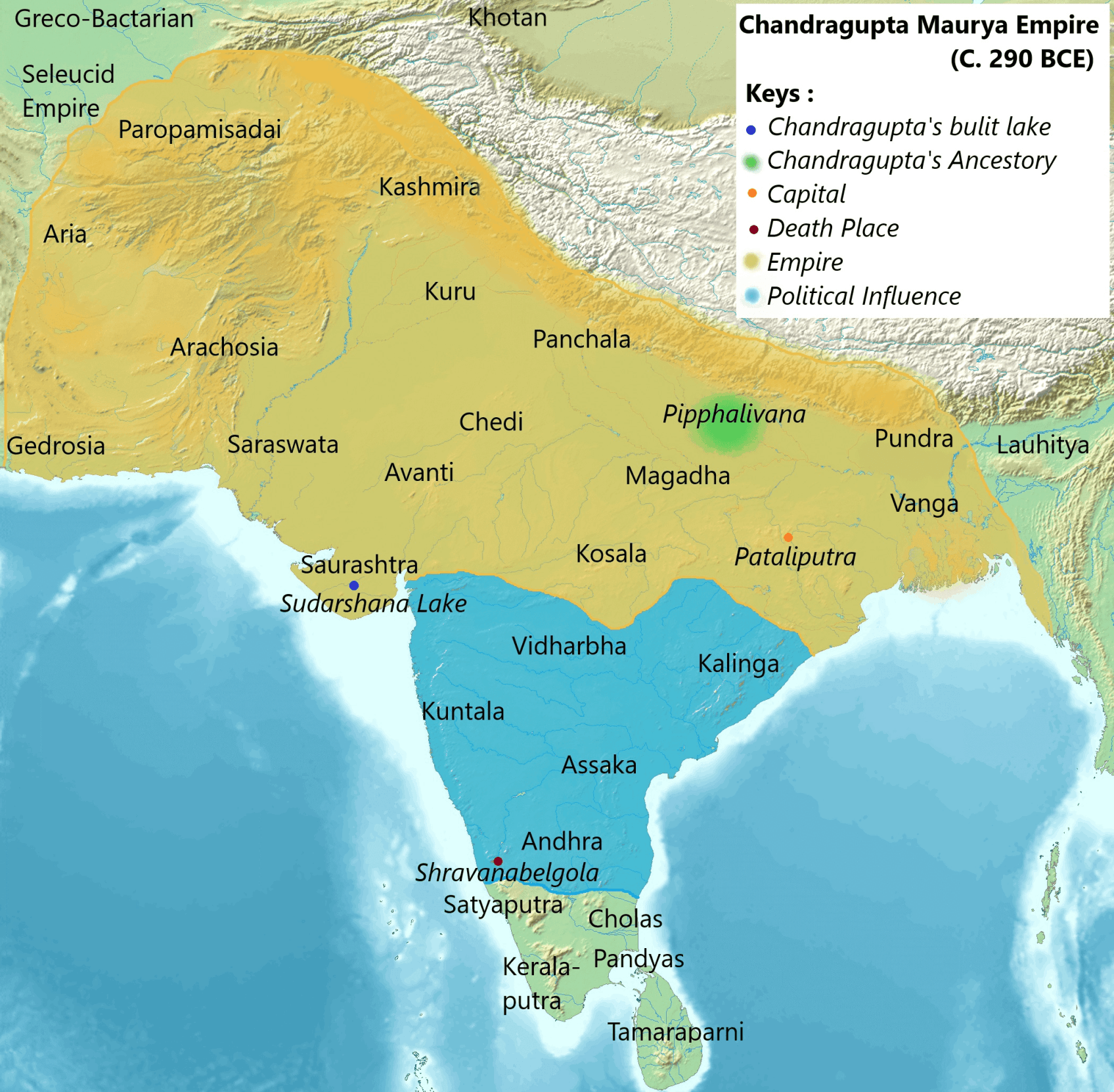
321 BC
Seleucid Empire
The Seleucid Empire (lit. 'Kingdom of the Seleucids') was a Greek power in West Asia during the Hellenistic period. It was founded in 312 BC by the Macedonian general Seleucus I Nicator, following the division of the Macedonian Empire founded by Alexander the Great, and ruled by the Seleucid dynasty until its annexation by the Roman Republic under Pompey in 63 BC.
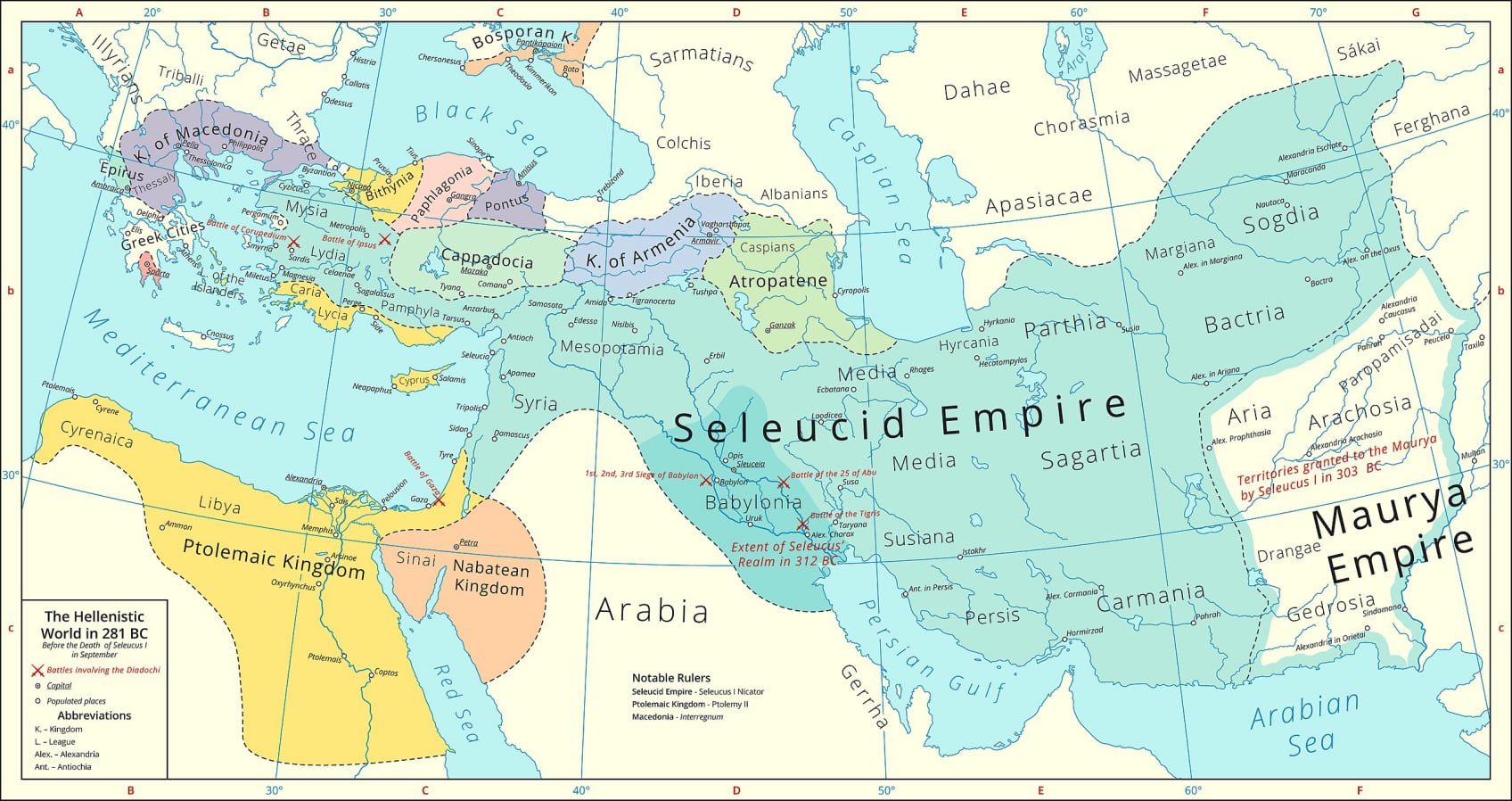
321 BC
Chandragupta Maurya
Chandragupta Maurya overthrows the Nanda dynasty of Magadha.
Greco-Roman writer Plutarch stated, in his Life of Alexander, that the Nanda king was so unpopular that had Alexander tried, he could have easily conquered India. After Alexander ended his campaign and left, Chandragupta's army conquered the Nanda capital Pataliputra around 322 BCE with Chanakya's counsel.
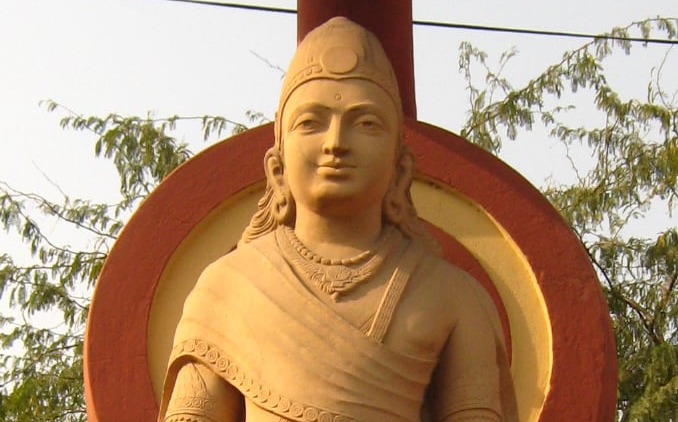
322 BC
Death of Aristotle
Near the end of his life, Alexander and Aristotle became estranged over Alexander's relationship with Persia and Persians. A widespread tradition in antiquity suspected Aristotle of playing a role in Alexander's death, but the only evidence of this is an unlikely claim made some six years after the death. Following Alexander's death, anti-Macedonian sentiment in Athens was rekindled. In 322 BC, Demophilus and Eurymedon the Hierophant reportedly denounced Aristotle for impiety, prompting him to flee to his mother's family estate in Chalcis, on Euboea, at which occasion he was said to have stated: "I will not allow the Athenians to sin twice against philosophy" – a reference to Athens's trial and execution of Socrates. He died in Chalcis, Euboea of natural causes later that same year, having named his student Antipater as his chief executor and leaving a will in which he asked to be buried next to his wife.
![By Charles Laplante [fr] "That most enduring of romantic images, Aristotle tutoring the future conqueror Alexander". 1866](assets/images/alexander-and-aristotle-870x696.jpg)
323 BC
Death of Alexander the Great at Babylon
On either 10 or 11 June 323 BC, Alexander died in the palace of Nebuchadnezzar II, in Babylon, at age 32. There are two different versions of Alexander's death, differing slightly in details. Plutarch's account is that roughly 14 days before his death, Alexander entertained admiral Nearchus and spent the night and next day drinking with Medius of Larissa. Alexander developed a fever, which worsened until he was unable to speak. The common soldiers, anxious about his health, were granted the right to file past him as he silently waved at them. In the second account, Diodorus recounts that Alexander was struck with pain after downing a large bowl of unmixed wine in honour of Heracles followed by 11 days of weakness; he did not develop a fever, instead dying after some agony. Arrian also mentioned this as an alternative, but Plutarch specifically denied this claim.
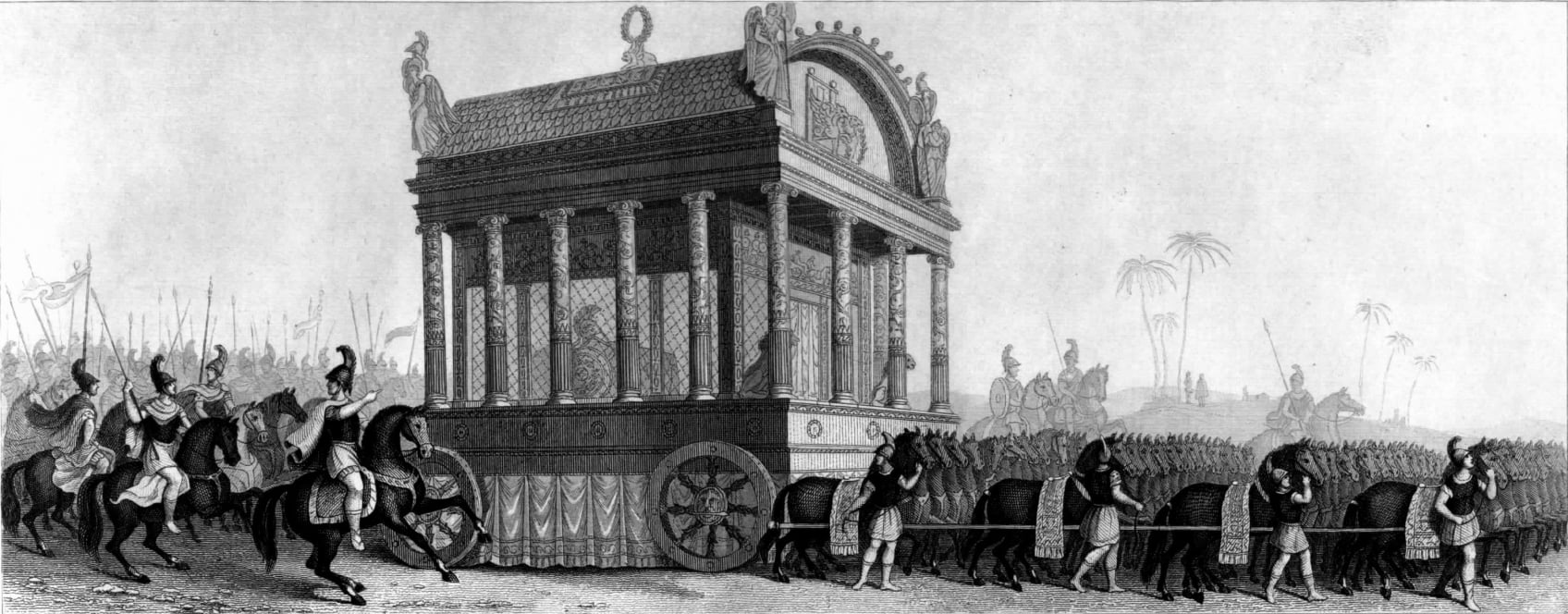
326 BC
Battle of the Hydaspes
Alexander the Great defeats Indian king Porus in the Battle of the Hydaspes River.
The Battle of the Hydaspes also known as Battle of Jhelum, or First Battle of Jhelum, was fought between Alexander the Great and Porus in May of 326 BC. It took place on the banks of the Hydaspes River in Punjab, as part of Alexander's Indian campaign. In what was possibly their most costly engagement, the Macedonian army secured a decisive victory over the Pauravas and captured Porus. Large areas of Punjab were subsequently absorbed into the Macedonian Empire; Porus was reinstated as the region's ruler after Alexander, having developed a newfound respect for the fierce resistance put up by Porus and his army, appointed him as a satrap.
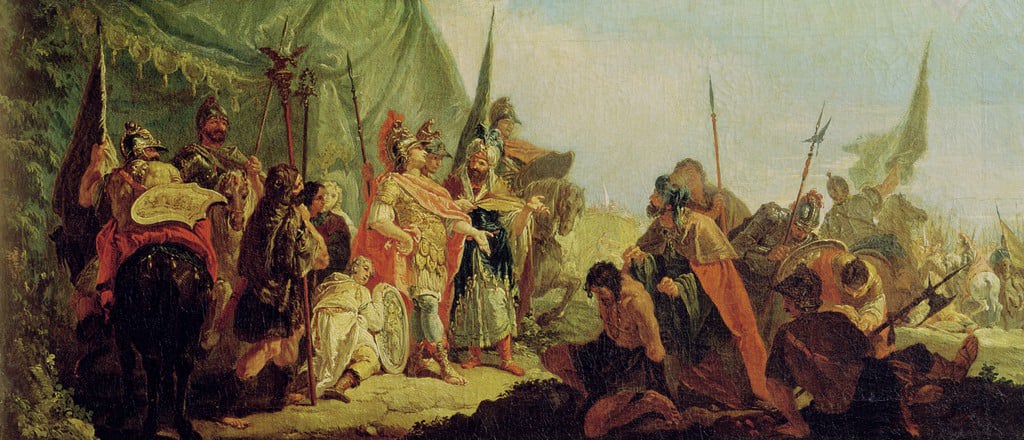
331 BC
Battle of Gaugamela
Alexander the Great defeats Darius III of Persia in the Battle of Gaugamela, completing his conquest of Persia.
The Battle of Gaugamela (lit. 'the Camel's House'), also called the Battle of Arbela (Ἄρβηλα, Árbēla), took place in 331 BC between the forces of the Army of Macedon under Alexander the Great and the Persian Army under King Darius III. It was the second and final battle between the two kings, and is considered to be the final blow to the Achaemenid Empire, resulting in its complete conquest by Alexander.
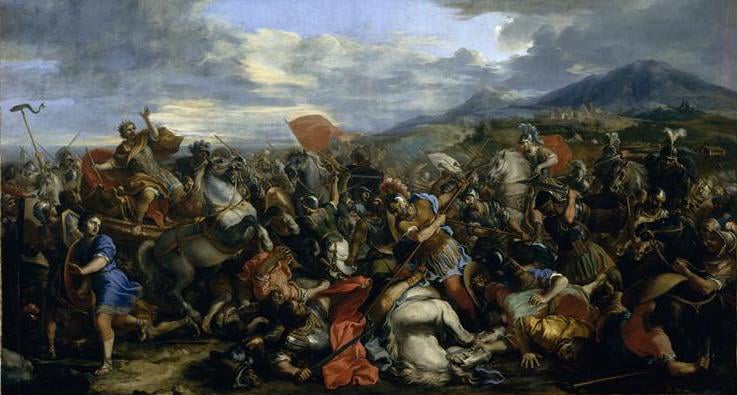
370 BC
Death of Democritus
Although many anecdotes about Democritus' life survive, their authenticity cannot be verified and modern scholars doubt their accuracy. Democritus was said to be born in the city of Abdera in Thrace, an Ionian colony of Teos. Ancient accounts of his life have claimed that he lived to a very old age, with some writers claiming that he was over a hundred years old at the time of his death.
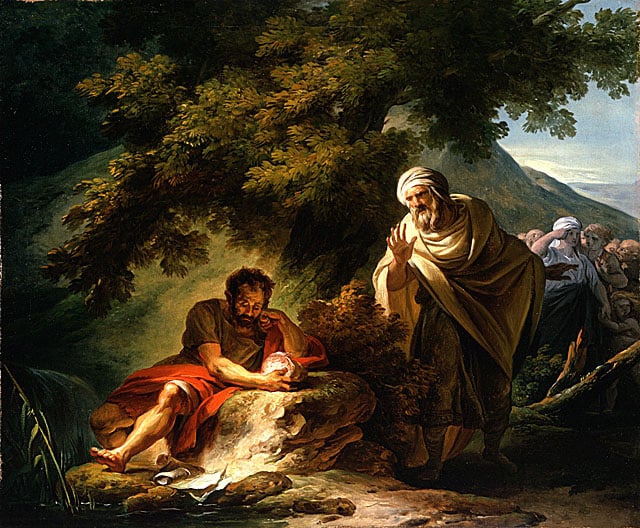
384 BC
Birth of Aristotle
Aristotle (384–322 BC) was an Ancient Greek philosopher and polymath. His writings cover a broad range of subjects spanning the natural sciences, philosophy, linguistics, economics, politics, psychology, and the arts. As the founder of the Peripatetic school of philosophy in the Lyceum in Athens, he began the wider Aristotelian tradition that followed, which set the groundwork for the development of modern science.
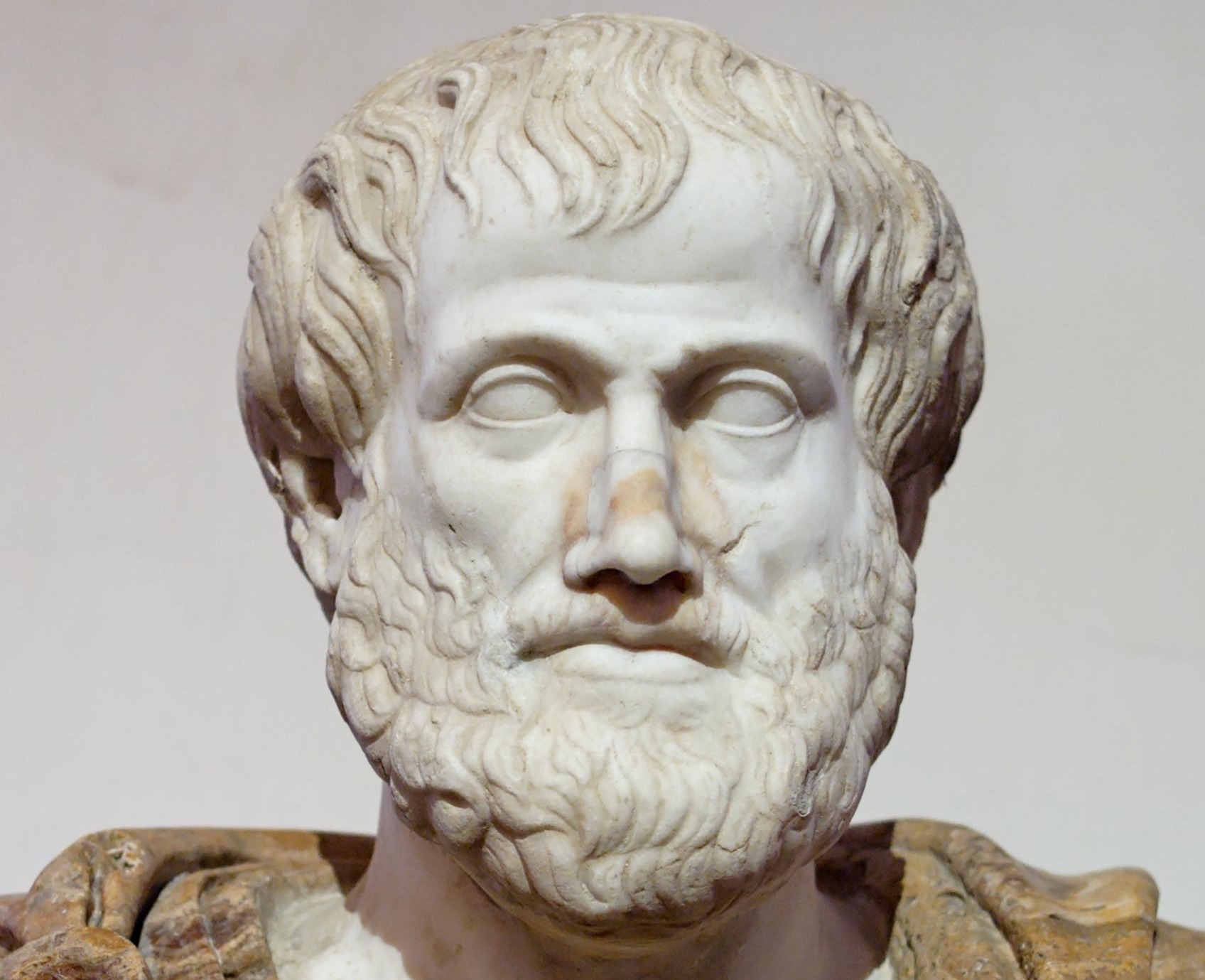
399 BC
Death of Socrates
The death of Socrates is presented in the Platonic diaologue the Phaedo, in which Socrates and his friends discuss the immortality of the soul before Socrates drinks the hemlock poison given to him for his execution.
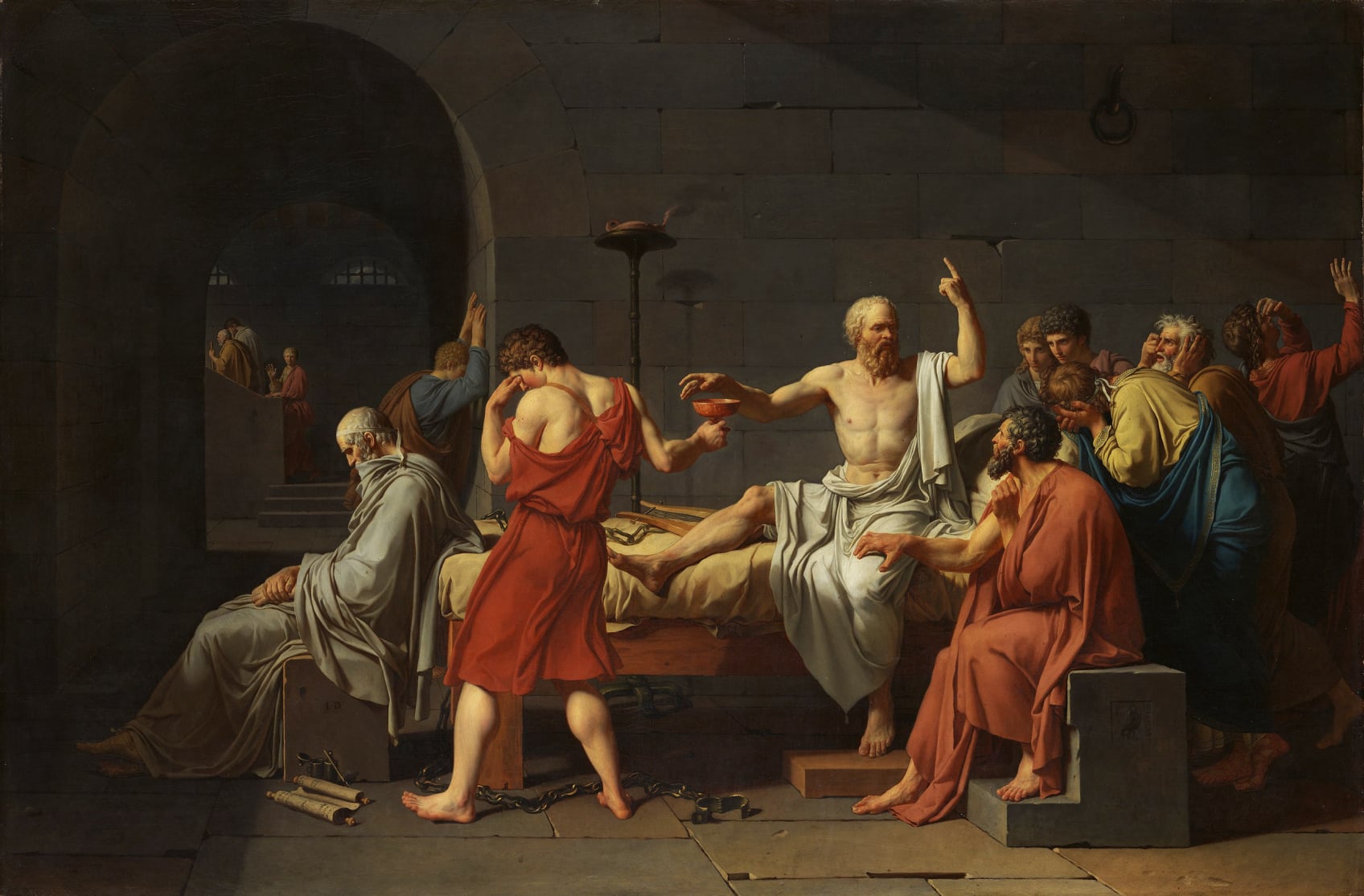
c. 400 BC
Garamantes
Rise of the Garamantes as an irrigation-based desert state in the Fezzan region of Libya.
The Garamantes were ancient peoples, who may have descended from Berber tribes, Toubou tribes, and Saharan pastoralists that settled in the Fezzan region by at least 1000 BC and established a civilization that flourished until its end in the late 7th century AD. The Garamantes first emerged as a major regional power in the mid-2nd century AD and established a kingdom that spanned roughly 180,000 km (70,000 sq mi) in the Fezzan region of southern Libya. Their growth and expansion was based on a complex and extensive qanat irrigation system (Berber: foggaras), which supported a strong agricultural economy and a large population. They subsequently developed the first urban society in a major desert that was not centered on a river system; their largest town, Garama, had a population of around four thousand, with an additional six thousand living in surrounding suburban areas. At its pinnacle, the Garamantian kingdom established and maintained a "standard of living far superior to that of any other ancient Saharan society" and was composed of "brilliant farmers, resourceful engineers, and enterprising merchants who produced a remarkable civilization."
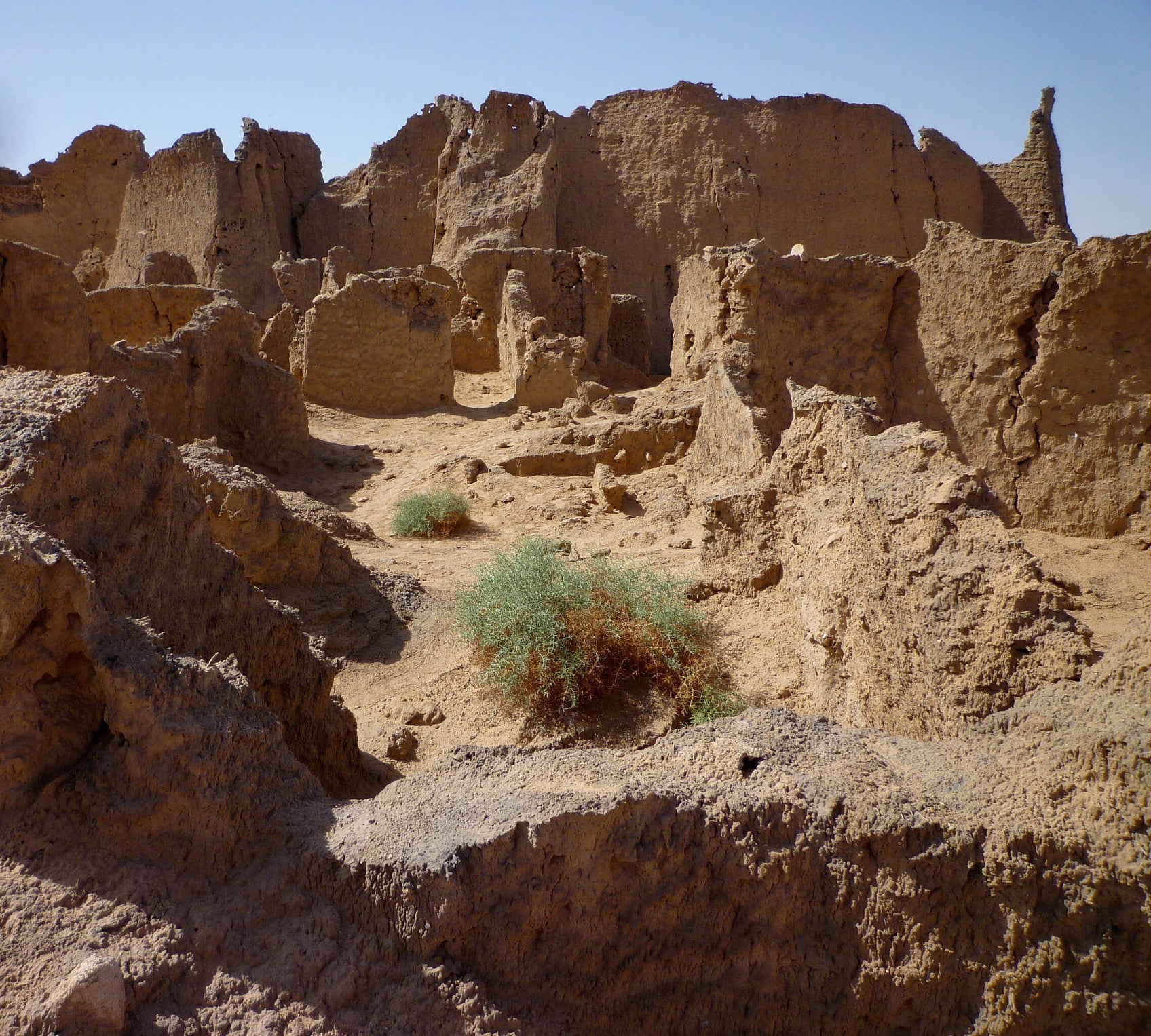
400 BC
Zapotec culture flourishes around city of Monte Albán
Monte Albán is a large pre-Columbian archaeological site in the Santa Cruz Xoxocotlán Municipality in the southern Mexican state of Oaxaca (17.043° N, 96.767°W). The site is located on a low mountainous range rising above the plain in the central section of the Valley of Oaxaca, where the latter's northern Etla, eastern Tlacolula, and southern Zimatlán and Ocotlán (or Valle Grande) branches meet. The present-day state capital Oaxaca City is located approximately 9 km (6 mi) east of Monte Albán.
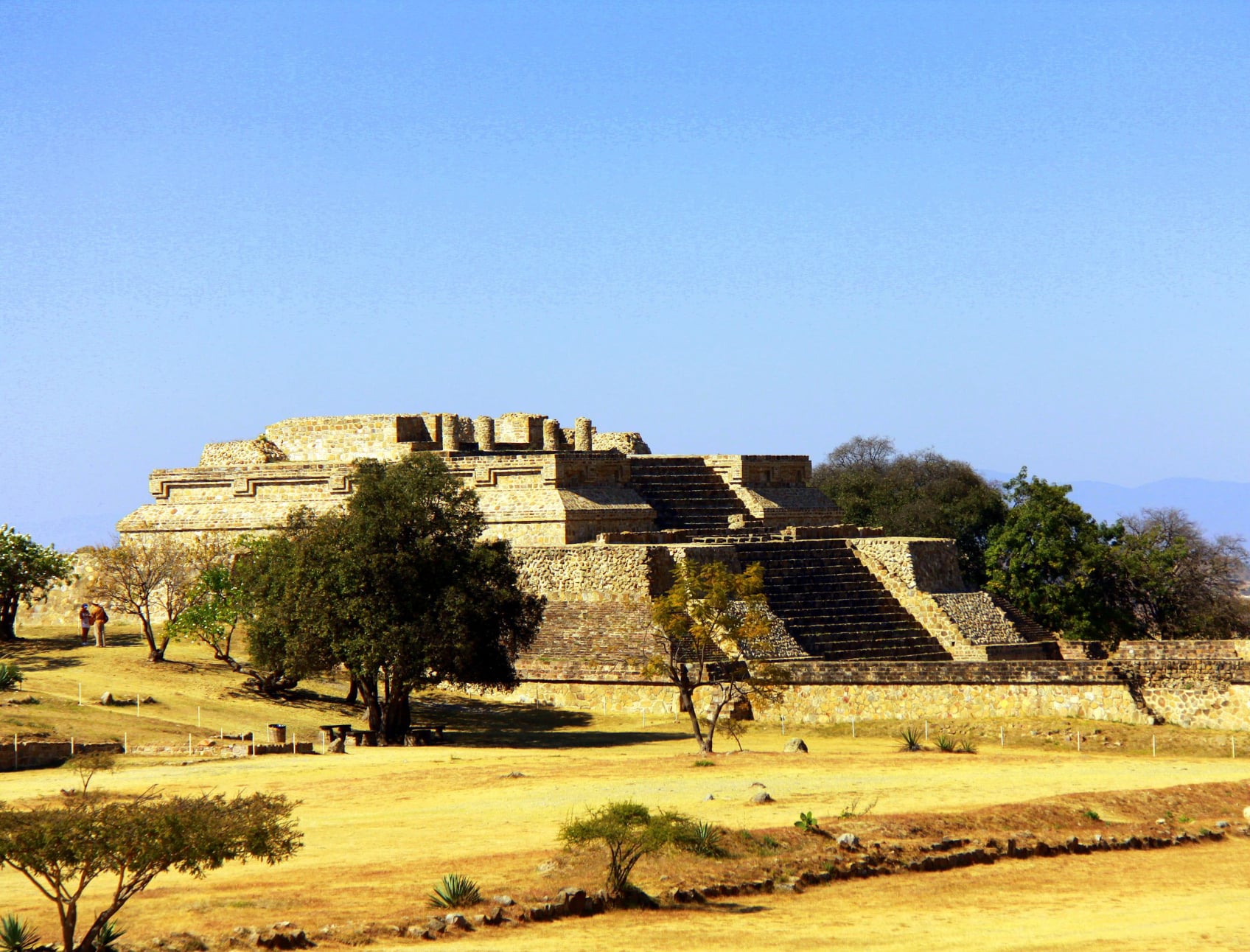
404 BC
End of the Peloponnesian War
Facing starvation and disease from the prolonged siege, Athens surrendered in 404 BC, and its allies soon surrendered as well. The democrats at Samos, loyal to the bitter last, held on slightly longer, and were allowed to flee with their lives. The surrender stripped Athens of its walls, its fleet, and all of its overseas possessions. Corinth and Thebes demanded that Athens should be destroyed and all its citizens should be enslaved. However, the Spartans announced their refusal to destroy a city that had done a good service at a time of greatest danger to Greece, and took Athens into their own system. Athens was "to have the same friends and enemies" as Sparta.
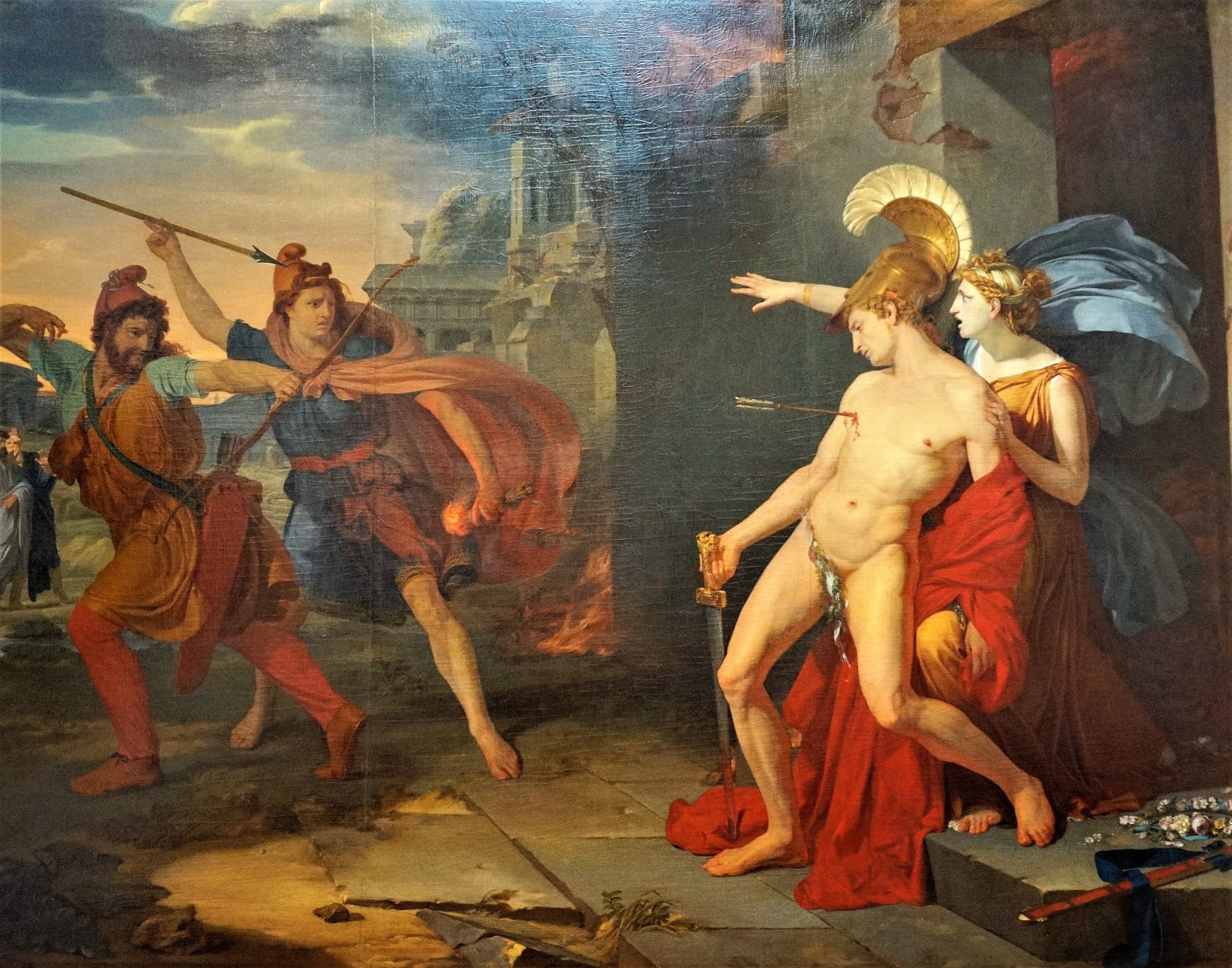
424 BC
Nanda dynasty comes to power in Magadha
The Nanda dynasty was the fifth ruling dynasty of Magadha in northern Indian subcontinent during the fourth century BCE and possibly also during the fifth century BCE. The Nandas overthrew the Shaishunaga dynasty, and expanded the empire to include a larger part of northern India. Ancient sources differ considerably regarding the names of the Nanda kings and the duration of their rule, but based on the Buddhist tradition recorded in the Mahāvaṃsa, they appear to have ruled during c. 345–322 BCE, although some theories date the start of their rule to fifth century BCE.
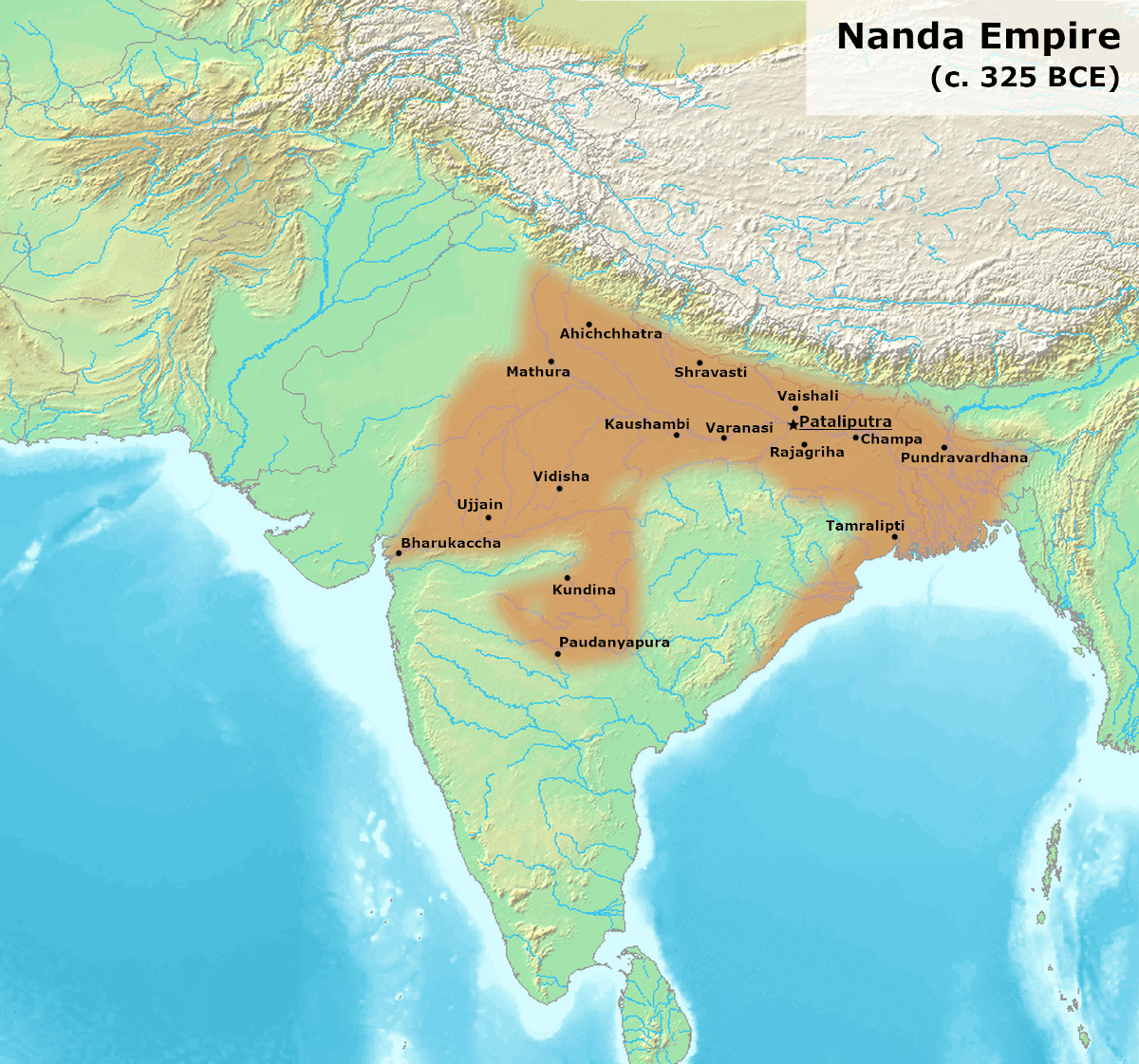
427 BC
Birth of Plato
Plato (born Aristocles; c. 427 – 348 BC) was an ancient Greek philosopher of the Classical period who is considered a top thinker in Philosophy. Plato founded the Academy, a philosophical school in Athens where Plato taught the doctrines that would later become known as Platonism. The philosopher was an innovator of the written dialogue and dialectic forms in philosophy. He was a system-builder. He also raised problems for what became all the major areas of both theoretical philosophy and practical philosophy.
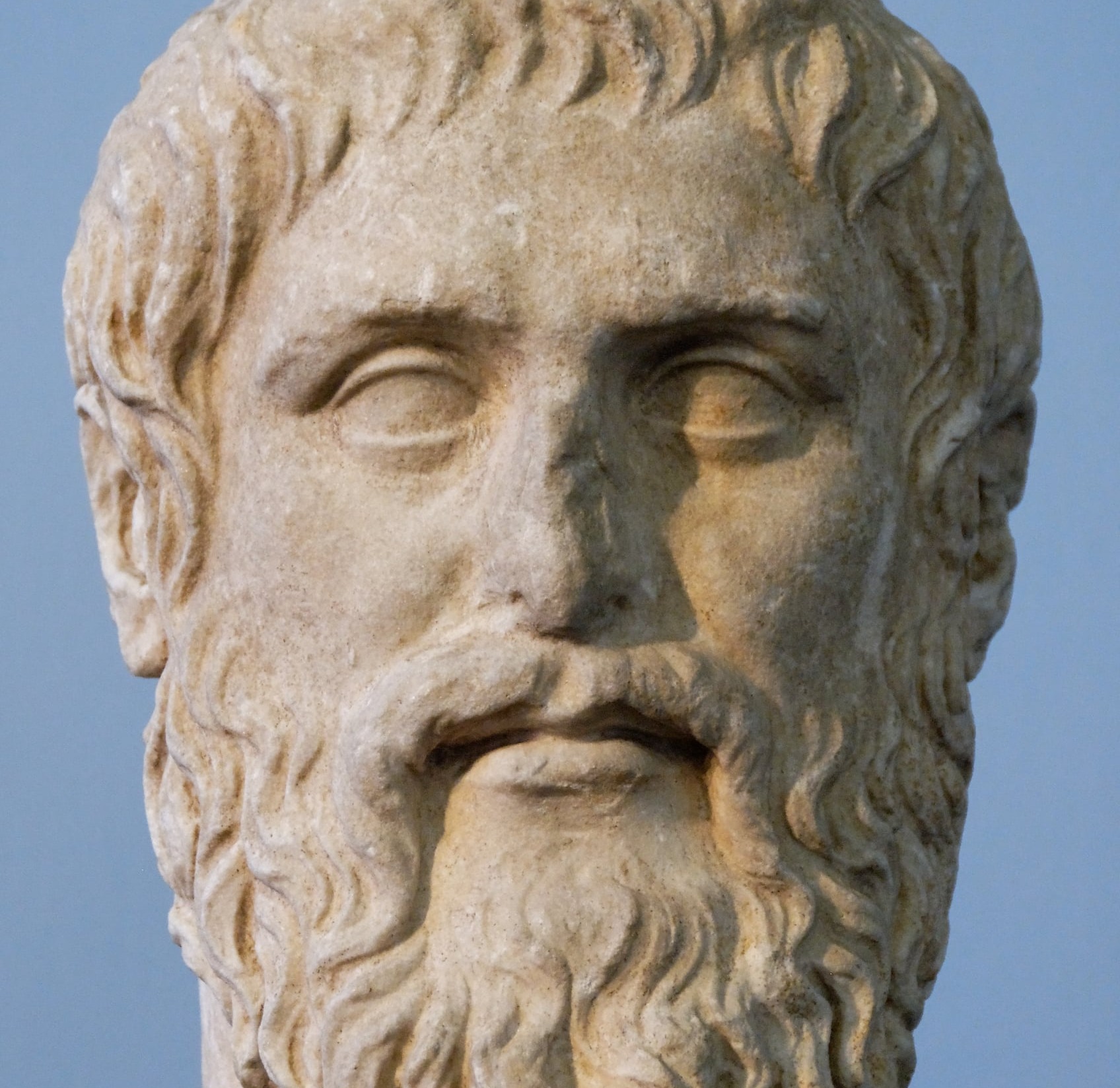
429 BC
Sophocles's play Oedipus Rex is first performed
Oedipus Rex, also known by its Greek title, Oedipus Tyrannus, or Oedipus the King, is an Athenian tragedy by Sophocles that was first performed around 429 BC. Originally, to the ancient Greeks, the title was simply Oedipus (Οἰδίπους), as it is referred to by Aristotle in the Poetics. It is thought to have been renamed Oedipus Tyrannus to distinguish it from Oedipus at Colonus, a later play by Sophocles. In antiquity, the term "tyrant" referred to a ruler with no legitimate claim to rule, but it did not necessarily have a negative connotation.
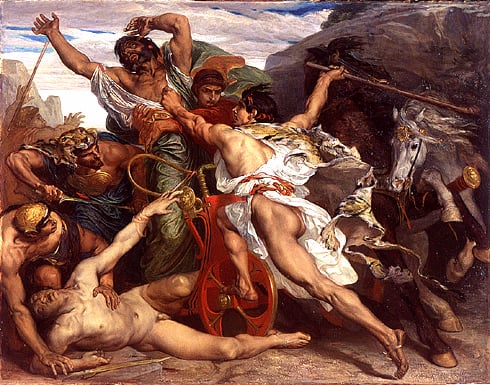
431 BC
Beginning of the Peloponnesian War between the Greek city-states
The Peloponnesian War (431–404 BC) was an ancient Greek war fought between Athens and Sparta and their respective allies for the hegemony of the Greek world. The war remained undecided for a long time, until the decisive intervention of the Persian Empire in support of Sparta. Led by Lysander, the Spartan fleet, built with Persian subsidies, finally defeated Athens and started a period of Spartan hegemony over Greece.
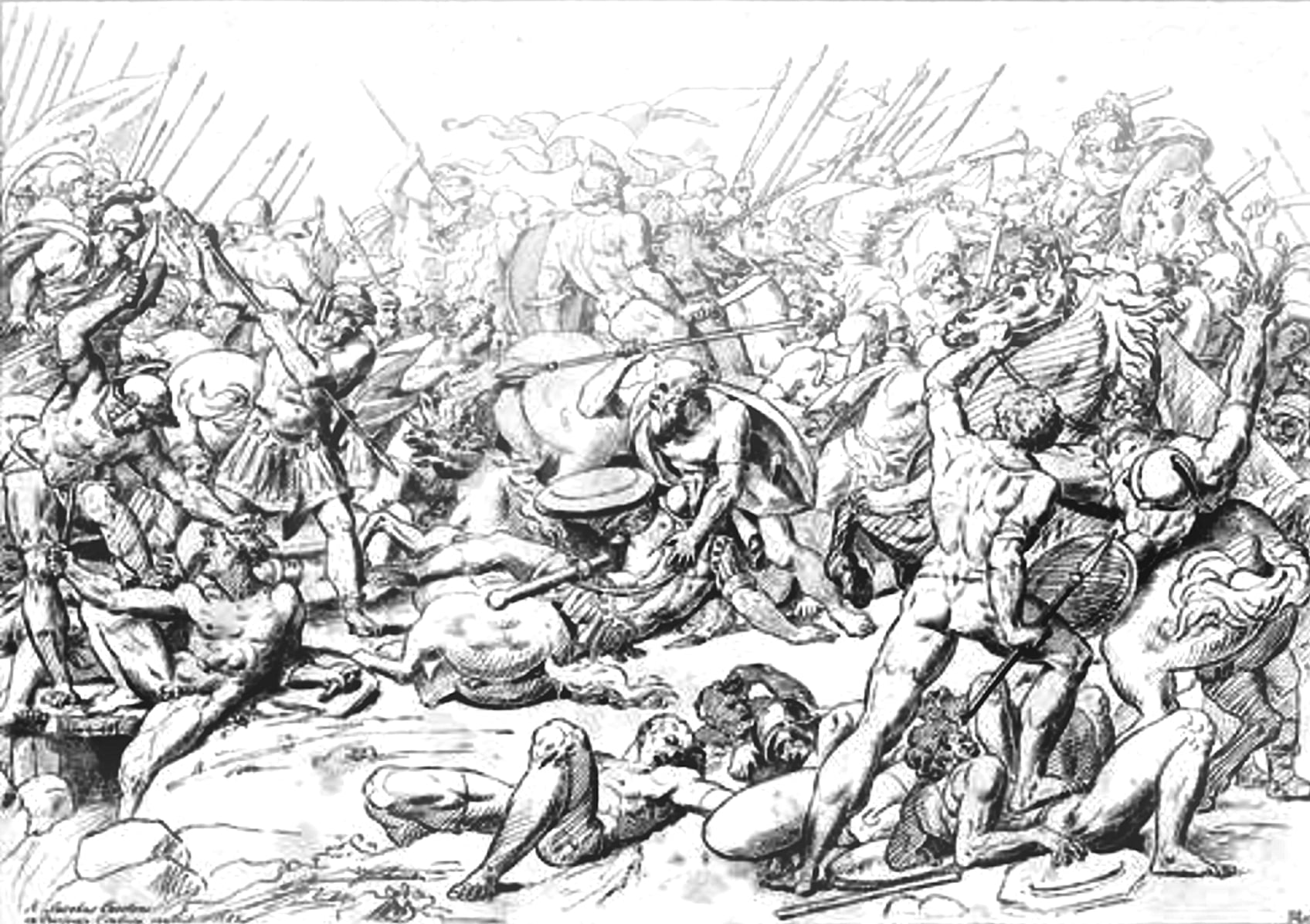
432 BC
Construction of the Parthenon is completed
The Parthenon is a former temple on the Athenian Acropolis, Greece, that was dedicated to the goddess Athena during the fifth century BC. Its decorative sculptures are considered some of the high points of classical Greek art, an enduring symbol of Ancient Greece, democracy and Western civilization.
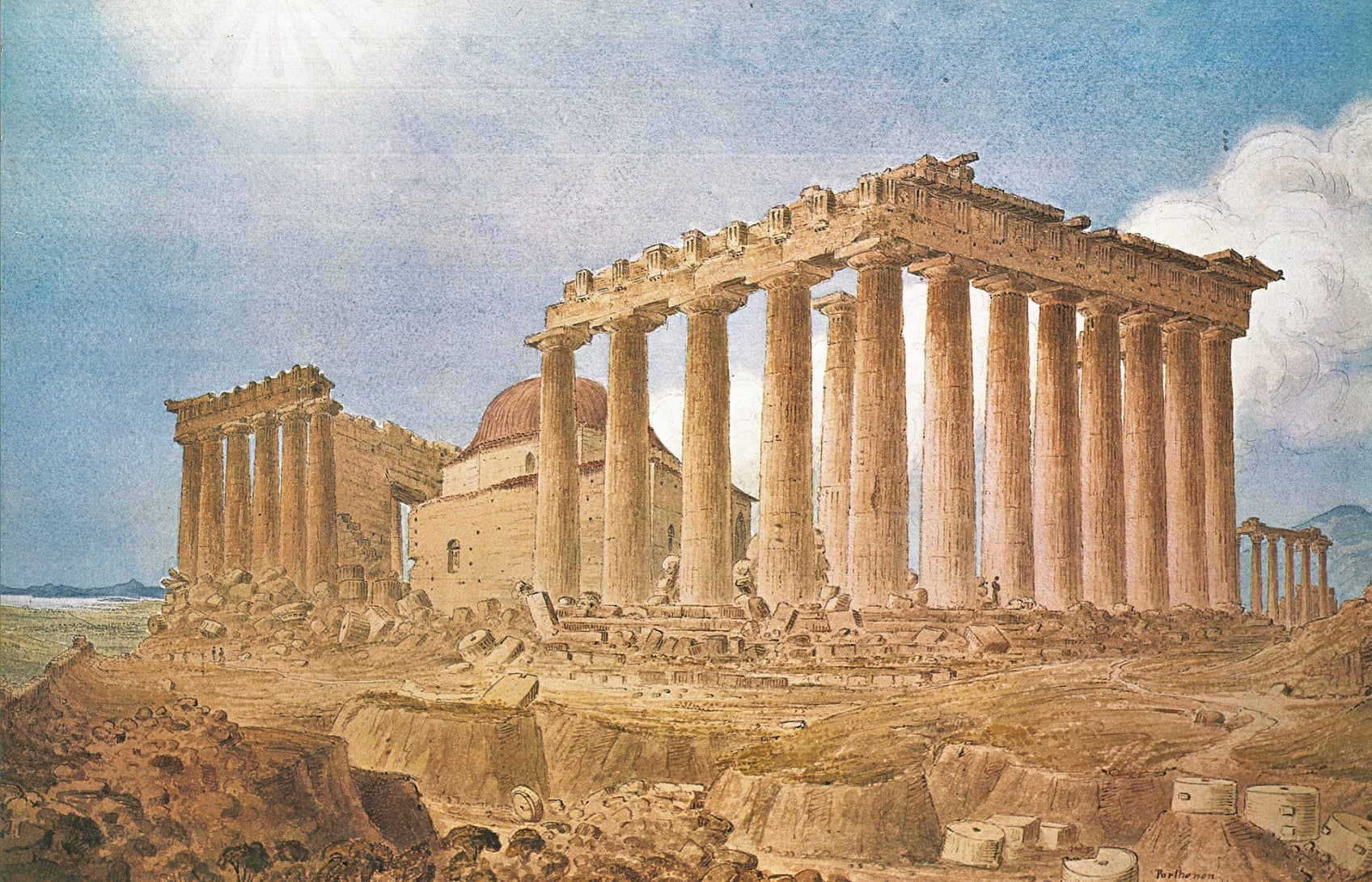
447 BC
Building of the Parthenon at Athens started
The Parthenon is a former temple on the Athenian Acropolis, Greece, that was dedicated to the goddess Athena during the fifth century BC. Its decorative sculptures are considered some of the high points of classical Greek art, an enduring symbol of Ancient Greece, democracy and Western civilization.
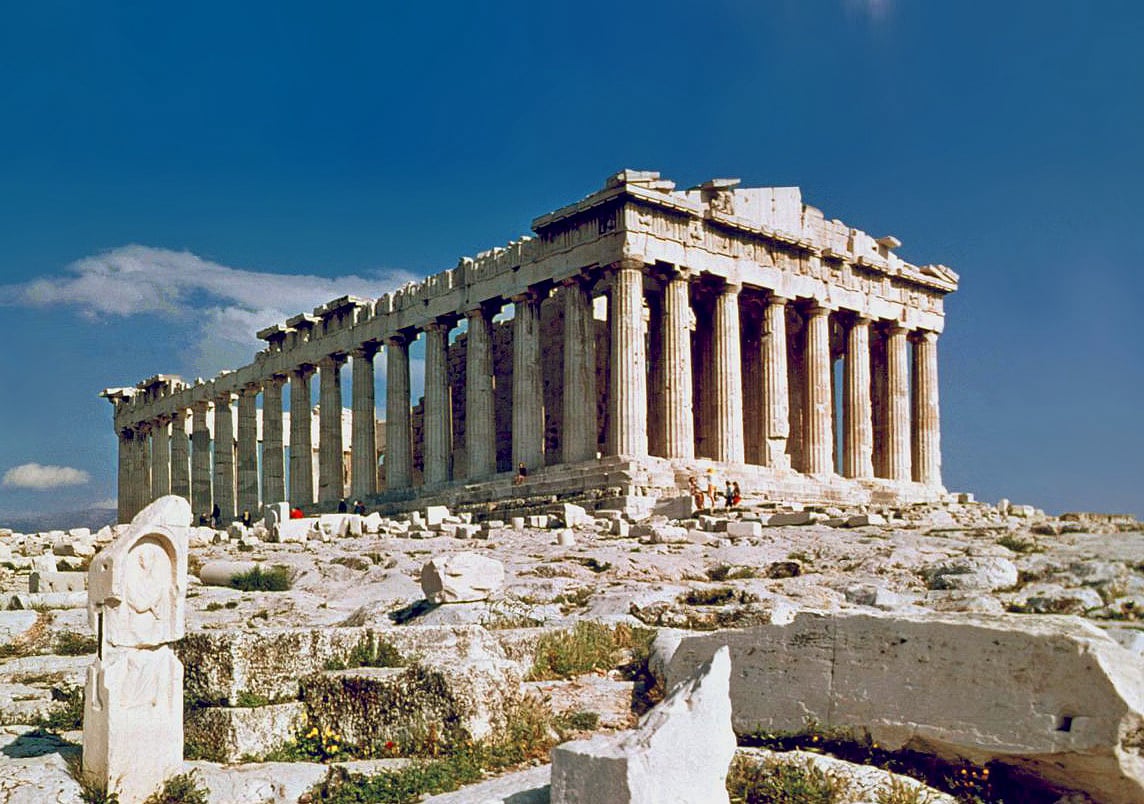
449 BC
The Greco-Persian Wars end
The Greco-Persian Wars (also often called the Persian Wars) were a series of conflicts between the Achaemenid Empire and Greek city-states that started in 499 BC and lasted until 449 BC. The collision between the fractious political world of the Greeks and the enormous empire of the Persians began when Cyrus the Great conquered the Greek-inhabited region of Ionia in 547 BC. Struggling to control the independent-minded cities of Ionia, the Persians appointed tyrants to rule each of them. This would prove to be the source of much trouble for the Greeks and Persians alike.
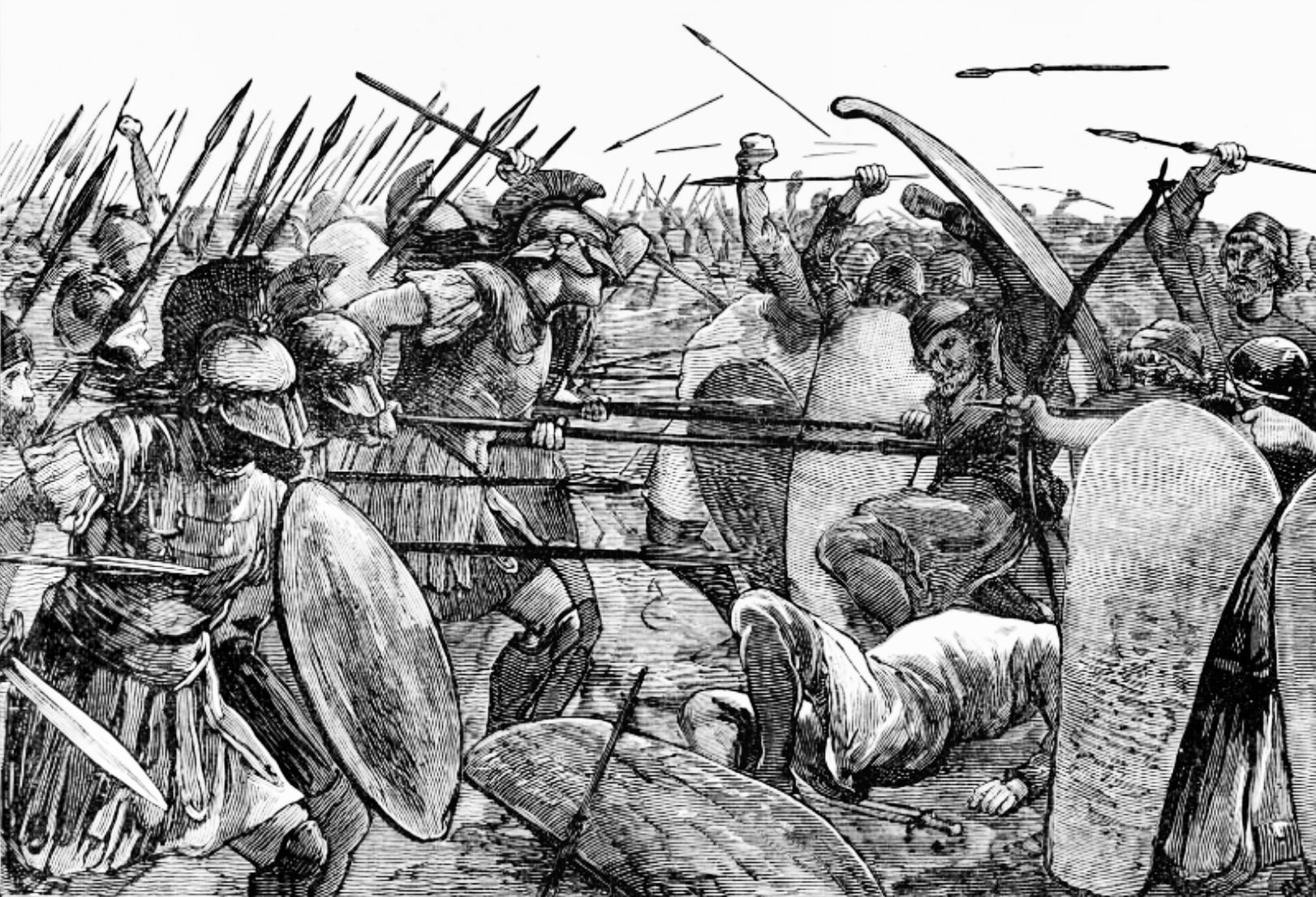
458 BC
Oresteia
The Oresteia by Aeschylus, the only surviving trilogy of ancient Greek plays, is performed.
The Oresteia (Ancient Greek: Ὀρέστεια) is a trilogy of Greek tragedies written by Aeschylus in the 5th century BCE, concerning the murder of Agamemnon by Clytemnestra, the murder of Clytemnestra by Orestes, the trial of Orestes, the end of the curse on the House of Atreus and the pacification of the Furies (also called Erinyes or Eumenides).
The Oresteia trilogy consists of three plays: Agamemnon, The Libation Bearers, and The Eumenides. It shows how the Greek gods interacted with the characters and influenced their decisions pertaining to events and disputes. The only extant example of an ancient Greek theatre trilogy, the Oresteia won first prize at the Dionysia festival in 458 BCE. The principal themes of the trilogy include the contrast between revenge and justice, as well as the transition from personal vendetta to organized litigation. Oresteia originally included a satyr play, Proteus (Πρωτεύς), following the tragic trilogy, but all except a single line of Proteus has been lost.
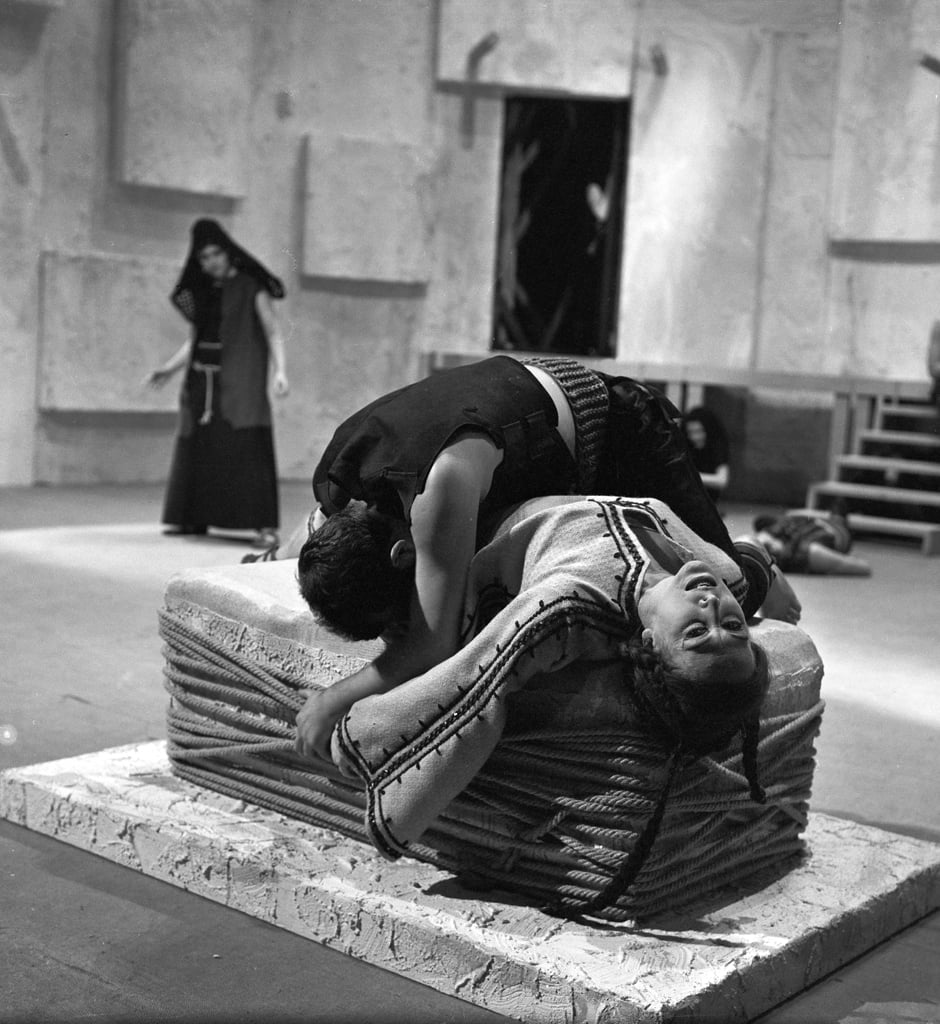
460 BC
Birth of Democritus
Democritus (Greek: Δημόκριτος, Dēmókritos, meaning "chosen of the people"; c. 460 – c. 370 BC) was an Ancient Greek pre-Socratic philosopher from Abdera, primarily remembered today for his formulation of an atomic theory of the universe.
None of Democritus' original work has survived, except through second-hand references. Many of these references come from Aristotle, who viewed him as an important rival in the field of natural philosophy.
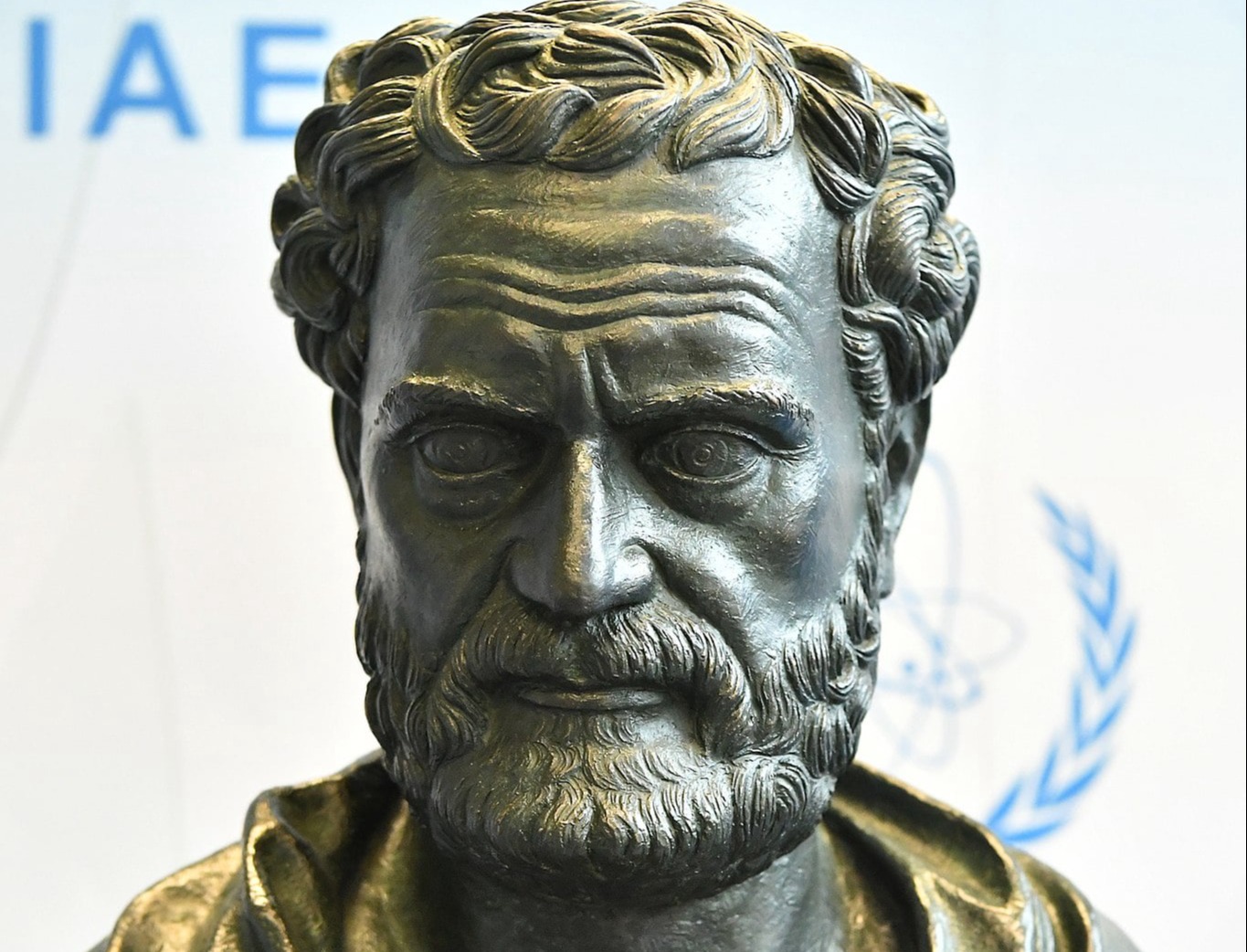
465 BC
Murder of Xerxes I
In August 465 BC, Artabanus, the commander of the royal bodyguard and the most powerful official in the Persian court, assassinated Xerxes with the help of a eunuch, Aspamitres. Although the Hyrcanian Artabanus bore the same name as the famed uncle of Xerxes, his rise to prominence was due to his popularity in religious quarters of the court and harem intrigues. He put his seven sons in key positions and had a plan to dethrone the Achaemenids.
Greek historians give differing accounts of events. According to Ctesias (in Persica 20), Artabanus then accused the Crown Prince Darius, Xerxes's eldest son, of the murder and persuaded another of Xerxes's sons, Artaxerxes, to avenge the patricide by killing Darius. But according to Aristotle (in Politics 5.1311b), Artabanus killed Darius first and then killed Xerxes. After Artaxerxes discovered the murder, he killed Artabanus and his sons. Participating in these intrigues was the general Megabyzus, whose decision to switch sides probably saved the Achaemenids from losing their control of the Persian throne.
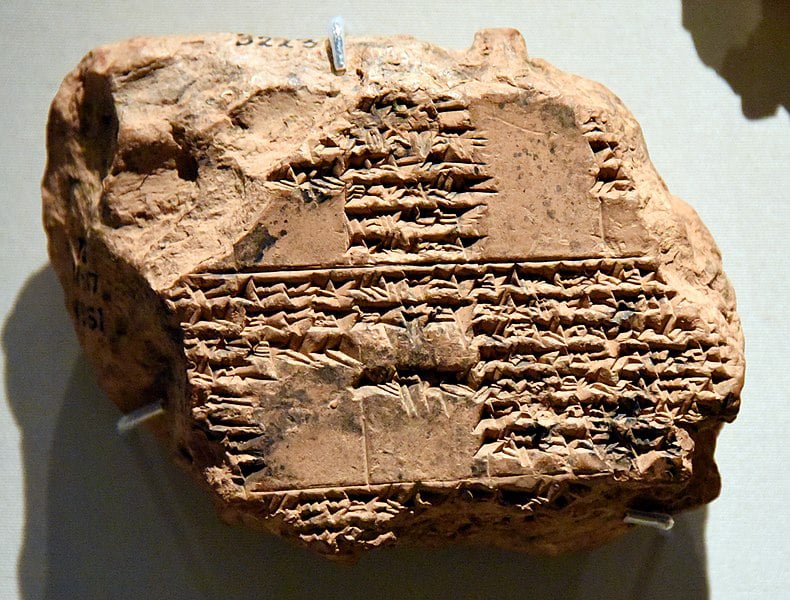
470 BC / 469 BC
Birth of Socrates
Socrates (Greek: Σωκράτης; c. 470–399 BC) was a Greek philosopher from Athens who is credited as the founder of Western philosophy and among the first moral philosophers of the ethical tradition of thought. An enigmatic figure, Socrates authored no texts and is known mainly through the posthumous accounts of classical writers, particularly his students Plato and Xenophon. These accounts are written as dialogues, in which Socrates and his interlocutors examine a subject in the style of question and answer; they gave rise to the Socratic dialogue literary genre. Contradictory accounts of Socrates make a reconstruction of his philosophy nearly impossible, a situation known as the Socratic problem. Socrates was a polarizing figure in Athenian society. In 399 BC, he was accused of impiety and corrupting the youth. After a trial that lasted a day, he was sentenced to death. He spent his last day in prison, refusing offers to help him escape.
Plato's dialogues are among the most comprehensive accounts of Socrates to survive from antiquity. They demonstrate the Socratic approach to areas of philosophy including epistemology and ethics. The Platonic Socrates lends his name to the concept of the Socratic method, and also to Socratic irony. The Socratic method of questioning, or elenchus, takes shape in dialogue using short questions and answers, epitomized by those Platonic texts in which Socrates and his interlocutors examine various aspects of an issue or an abstract meaning, usually relating to one of the virtues, and find themselves at an impasse, completely unable to define what they thought they understood. Socrates is known for proclaiming his total ignorance; he used to say that the only thing he was aware of was his ignorance, seeking to imply that the realization of our ignorance is the first step in philosophizing.
Socrates exerted a strong influence on philosophers in later antiquity and has continued to do so in the modern era. He was studied by medieval and Islamic scholars and played an important role in the thought of the Italian Renaissance, particularly within the humanist movement. Interest in him continued unabated, as reflected in the works of Søren Kierkegaard and Friedrich Nietzsche. Depictions of Socrates in art, literature, and popular culture have made him a widely known figure in the Western philosophical tradition.
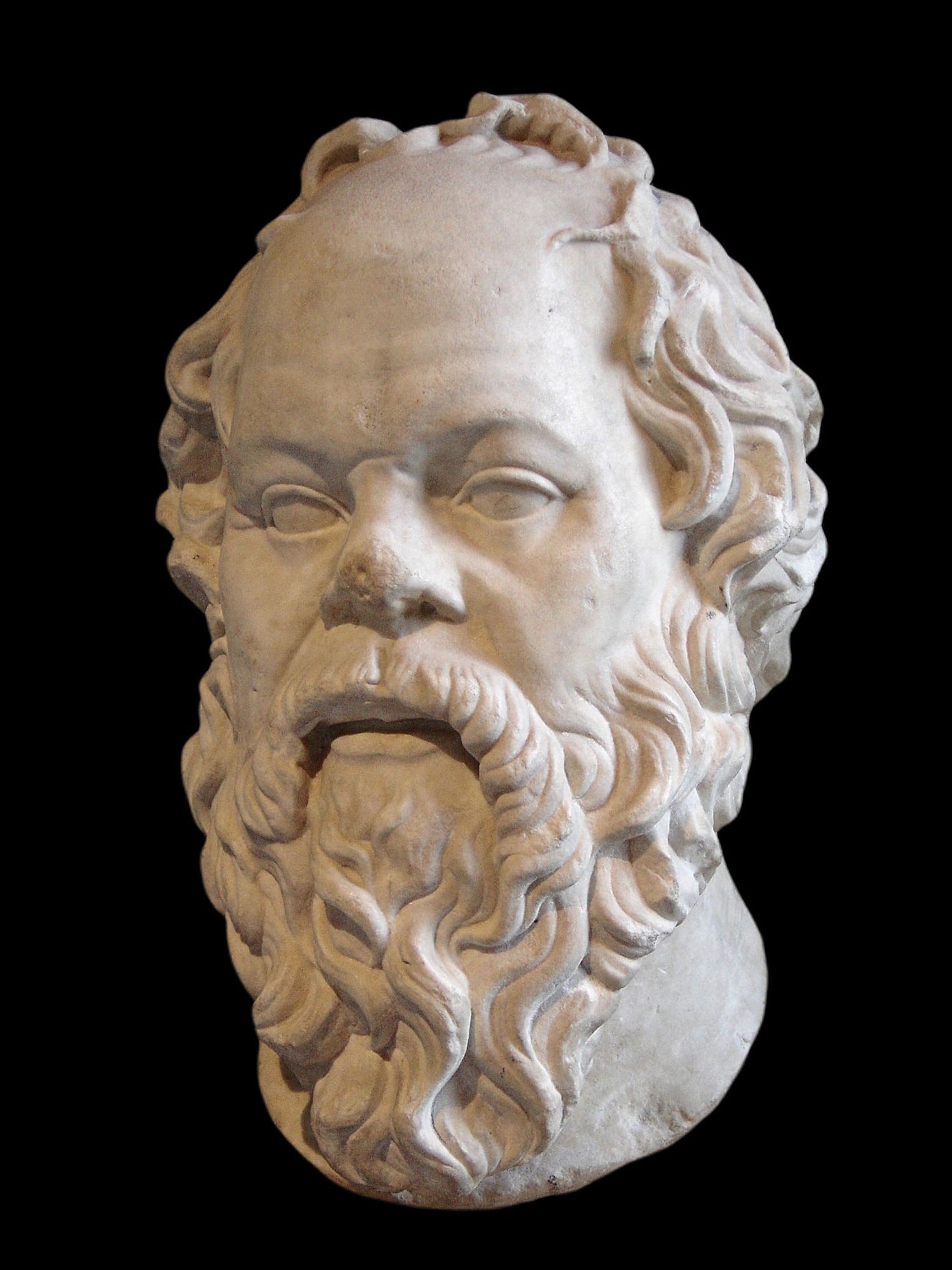
475 BC
Warring States period
The Warring States period (traditional Chinese: 戰國時代; simplified Chinese: 战国时代; pinyin: Zhànguó Shídài) was an era in ancient Chinese history characterized by warfare, as well as bureaucratic and military reforms and consolidation. It followed the Spring and Autumn period and concluded with the Qin wars of conquest that saw the annexation of all other contender states, which ultimately led to the Qin state's victory in 221 BC as the first unified Chinese empire, under the Qin dynasty.
Although different scholars point toward different dates ranging from 481 BC to 403 BC as the true beginning of the Warring States, Sima Qian's choice of 475 BC is the most often cited. The Warring States era also overlaps with the second half of the Eastern Zhou period, though the Chinese sovereign, known as the king of Zhou, ruled merely as a figurehead.
The "Warring States period" derives its name from the Record of the Warring States, a work compiled early in the Han dynasty.
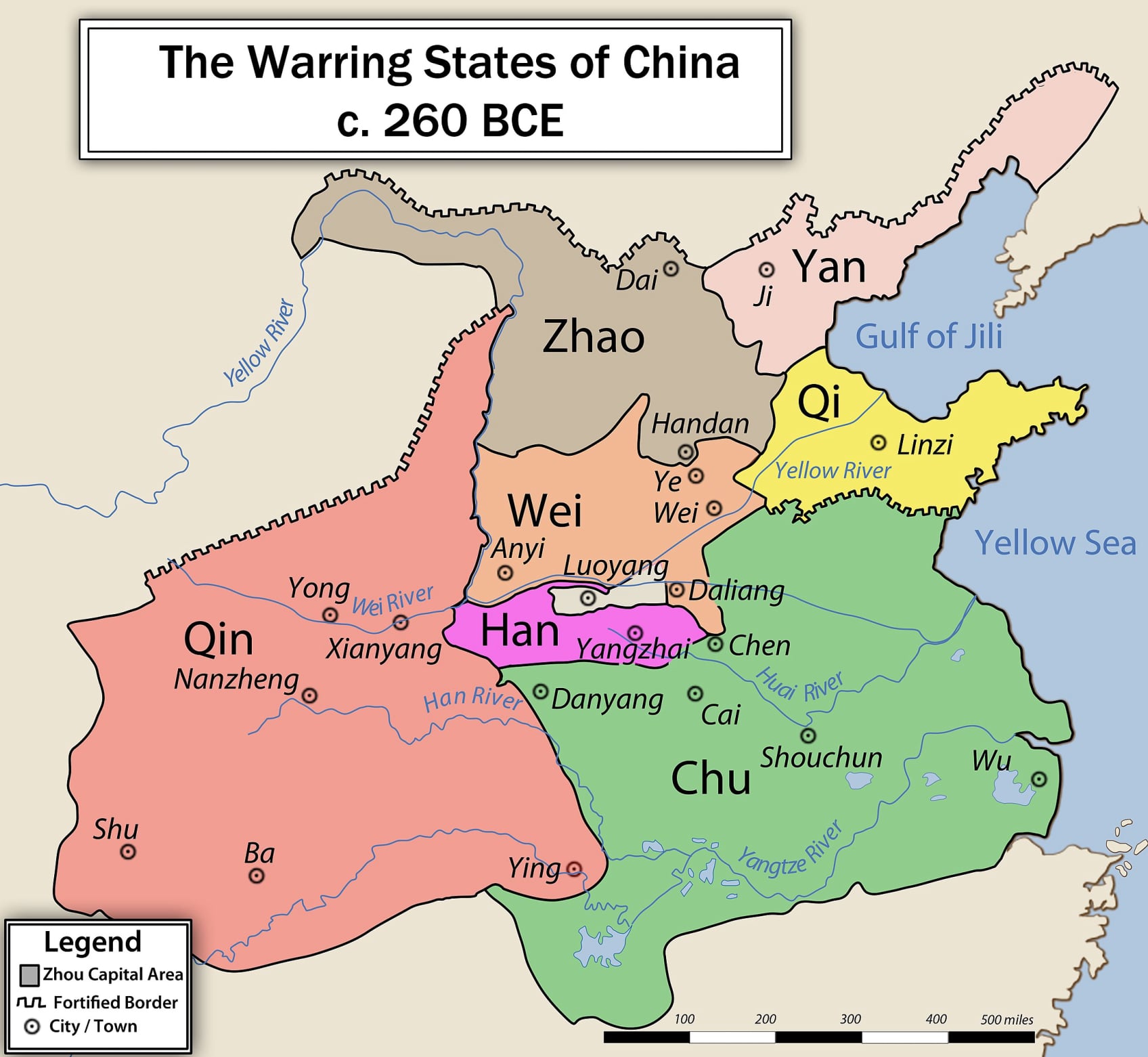
479 BC
Death of Confucius
According to the Zuozhuan, Confucius returned home to his native Lu when he was 68, after he was invited to do so by Ji Kangzi, the chief minister of Lu. The Analects depict him spending his last years teaching 72 or 77 disciples and transmitting the old wisdom via a set of texts called the Five Classics.
During his return, Confucius sometimes acted as an advisor to several government officials in Lu, including Ji Kangzi, on matters including governance and crime.
Burdened by the loss of both his son and his favorite disciples, he died at the age of 71 or 72 from natural causes. Confucius was buried in Kong Lin cemetery which lies in the historical part of Qufu in the Shandong Province. The original tomb erected there in memory of Confucius on the bank of the Sishui River had the shape of an axe. In addition, it has a raised brick platform at the front of the memorial for offerings such as sandalwood incense and fruit.
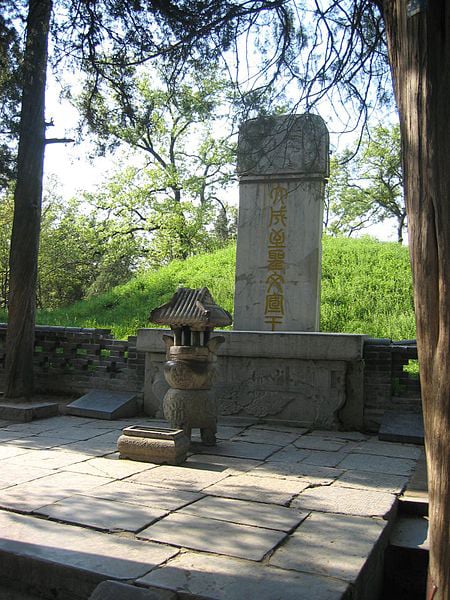
480 BC
Persian invasion of Greece by Xerxes I; Battles of Thermopylae and Salamis
From 483 BC, Xerxes prepared his expedition: The Xerxes Canal was dug through the isthmus of the peninsula of Mount Athos, provisions were stored in the stations on the road through Thrace, and two pontoon bridges later known as Xerxes' Pontoon Bridges were built across the Hellespont. Soldiers of many nationalities served in the armies of Xerxes from all over his multi-ethnic massive Eurasian-sized empire and beyond, including the Assyrians, Phoenicians, Babylonians, Egyptians, Jews, Macedonians, European Thracians, Paeonians, Achaean Greeks, Ionians, Aegean islanders, Aeolians, Greeks from Pontus, Colchians, Sindhis and many more.
According to the Greek historian Herodotus, Xerxes's first attempt to bridge the Hellespont ended in failure when a storm destroyed the flax and papyrus cables of the bridges. In retaliation, Xerxes ordered the Hellespont (the strait itself) whipped three hundred times, and had fetters thrown into the water. Xerxes's second attempt to bridge the Hellespont was successful. The Carthaginian invasion of Sicily deprived Greece of the support of the powerful monarchs of Syracuse and Agrigentum; ancient sources assume Xerxes was responsible, modern scholarship is skeptical. Many smaller Greek states, moreover, took the side of the Persians, especially Thessaly, Thebes and Argos. Xerxes was victorious during the initial battles.
Xerxes set out in the spring of 480 BC from Sardis with a fleet and army which Herodotus estimated was roughly one million strong along with 10,000 elite warriors named the Immortals. More recent estimates place the Persian force at around 60,000 combatants.
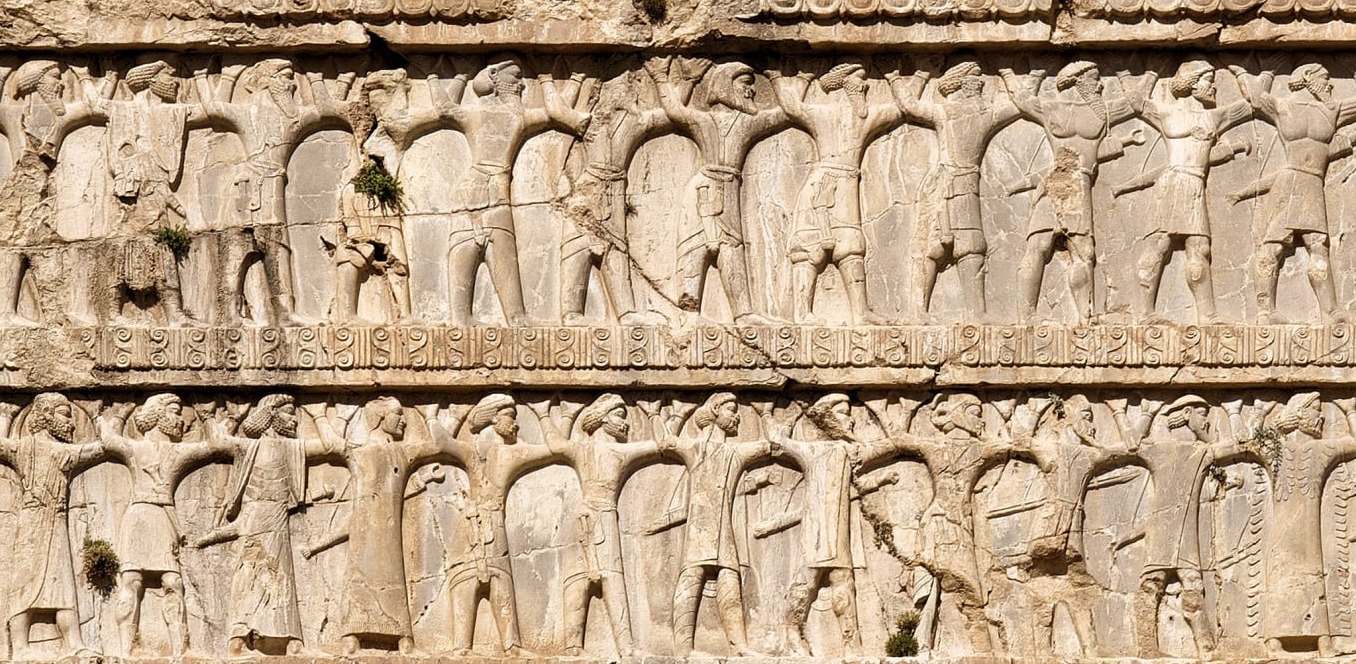
483 BC
Death of Gautama Buddha
He died in Kushinagar, attaining parinirvana. The Buddha has since been venerated by numerous religions and communities across Asia.
A couple of centuries after his death, he came to be known by the title Buddha, which means 'Awakened One' or 'Enlightened One'. His teachings were compiled by the Buddhist community in the Vinaya, his codes for monastic practice, and the Sutta Piṭaka, a compilation of teachings based on his discourses. These were passed down in Middle Indo-Aryan dialects through an oral tradition. Later generations composed additional texts, such as systematic treatises known as Abhidharma, biographies of the Buddha, collections of stories about his past lives known as Jataka tales, and additional discourses, i.e., the Mahayana sutras.
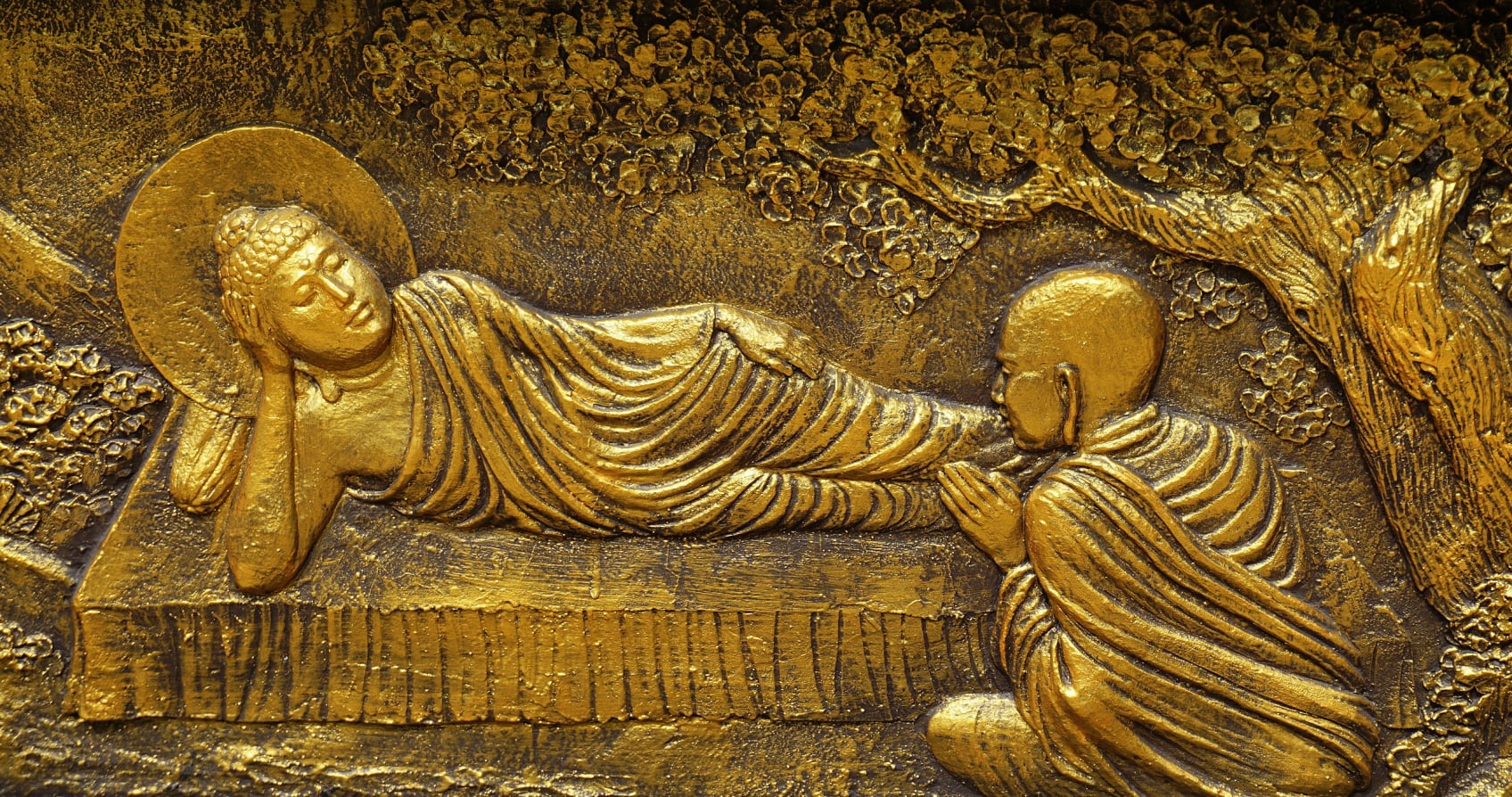
490 BC
Battle of Marathon
The Battle of Marathon took place in 490 BC during the first Persian invasion of Greece. It was fought between the citizens of Athens, aided by Plataea, and a Persian force commanded by Datis and Artaphernes. The battle was the culmination of the first attempt by Persia, under King Darius I, to subjugate Greece. The Greek army inflicted a crushing defeat on the more numerous Persians, marking a turning point in the Greco-Persian Wars.
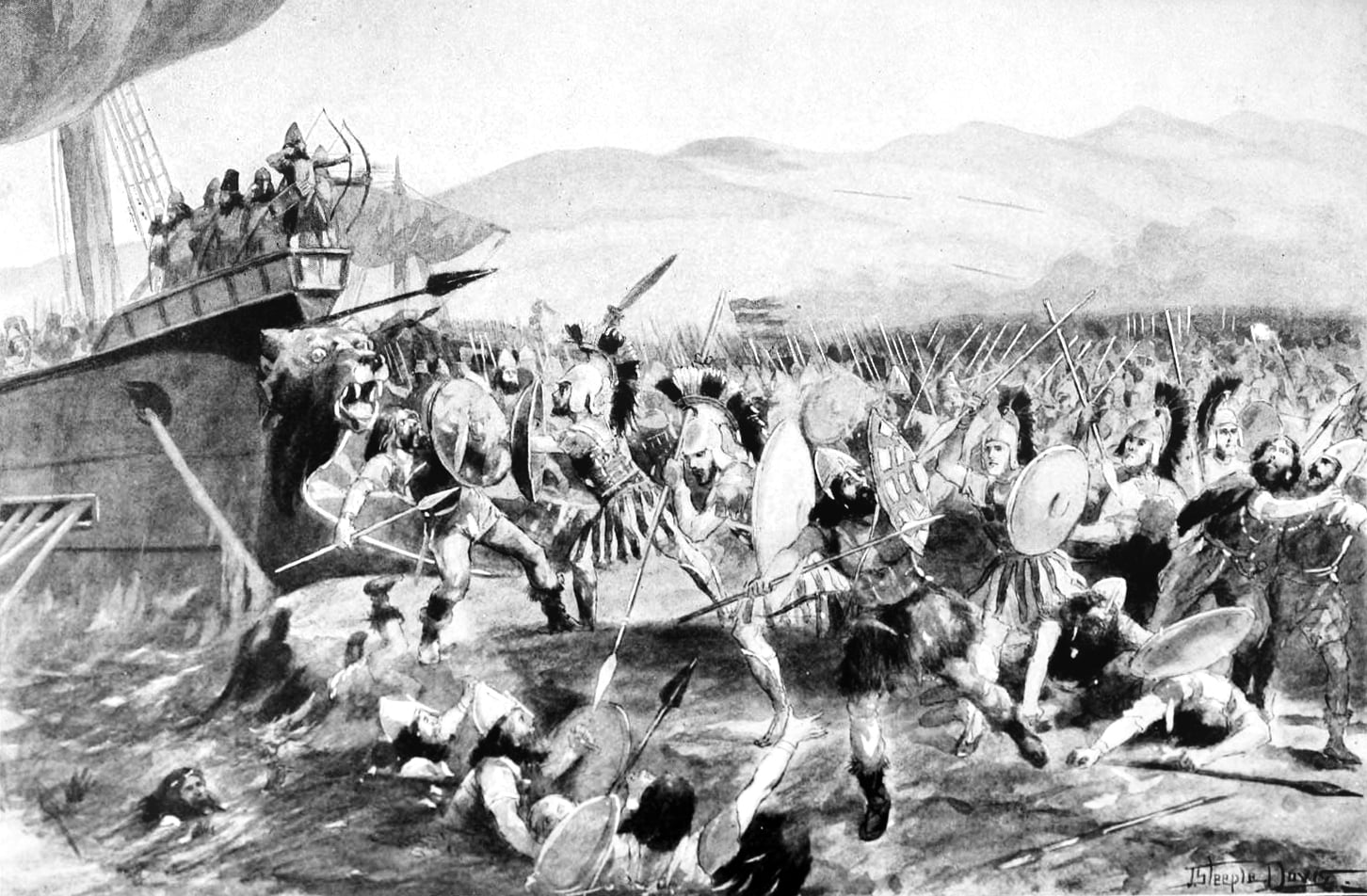
499 BC
Greco-Persian Wars
King Aristagoras of Miletus incites all of Hellenic Asia Minor to rebel against the Persian Empire, beginning the Greco-Persian Wars.
The Greco-Persian Wars (also often called the Persian Wars) were a series of conflicts between the Achaemenid Empire and Greek city-states that started in 499 BC and lasted until 449 BC. The collision between the fractious political world of the Greeks and the enormous empire of the Persians began when Cyrus the Great conquered the Greek-inhabited region of Ionia in 547 BC. Struggling to control the independent-minded cities of Ionia, the Persians appointed tyrants to rule each of them. This would prove to be the source of much trouble for the Greeks and Persians alike.
In 499 BC, the tyrant of Miletus, Aristagoras, embarked on an expedition to conquer the island of Naxos, with Persian support; however, the expedition was a debacle and, preempting his dismissal, Aristagoras incited all of Hellenic Asia Minor into rebellion against the Persians. This was the beginning of the Ionian Revolt, which would last until 493 BC, progressively drawing more regions of Asia Minor into the conflict. Aristagoras secured military support from Athens and Eretria, and in 498 BC these forces helped to capture and burn the Persian regional capital of Sardis. The Persian king Darius the Great vowed to have revenge on Athens and Eretria for this act. The revolt continued, with the two sides effectively stalemated throughout 497–495 BC. In 494 BC, the Persians regrouped and attacked the epicenter of the revolt in Miletus. At the Battle of Lade, the Ionians suffered a decisive defeat, and the rebellion collapsed, with the final embers being stamped out the following year.
Seeking to secure his empire from further revolts and from the interference of the mainland Greeks, Darius embarked on a scheme to conquer Greece and to punish Athens and Eretria for the burning of Sardis. The first Persian invasion of Greece began in 492 BC, with the Persian general Mardonius successfully re-subjugating Thrace and Macedon before several mishaps forced an early end to the rest of the campaign. In 490 BC a second force was sent to Greece, this time across the Aegean Sea, under the command of Datis and Artaphernes. This expedition subjugated the Cyclades, before besieging, capturing and razing Eretria. However, while en route to attack Athens, the Persian force was decisively defeated by the Athenians at the Battle of Marathon, ending Persian efforts for the time being.
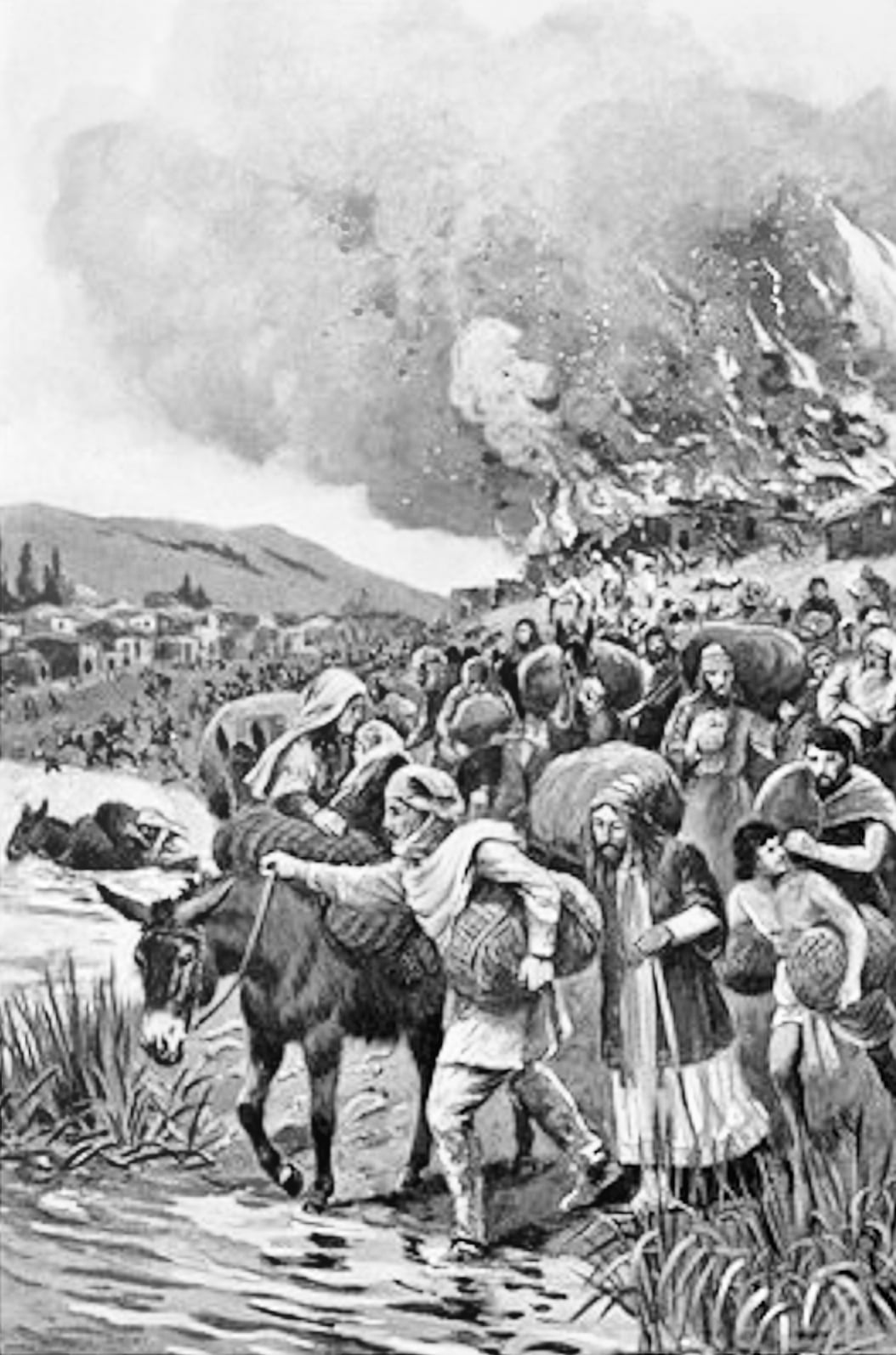
500 BC
Aṣṭādhyāyī
Panini standardizes the grammar and morphology of Sanskrit in the text Ashtadhyayi. Panini's standardized Sanskrit is known as Classical Sanskrit.
The Aṣṭādhyāyī (Sanskrit: [ɐ.ʂʈaː.ˈdʰjaː.jiː]) is a grammar that describes a form of an early Indo-Aryan language: Sanskrit.
Authored by Sanskrit philologist and scholar Pāṇini and dated to around 500 BCE, it describes the language as current in his time, specifically the dialect and register of an élite of model speakers, referred to by Pāṇini himself as śiṣṭa. The work also accounts both for some features specific to the older Vedic form of the language, as well as certain dialectal features current in the author's time.
The Aṣṭādhyāyī employs a derivational system to describe the language, where real speech is derived from posited abstract utterances formed by means of affixes added to bases under certain conditions.
The Aṣṭādhyāyī is supplemented by three ancillary texts: akṣarasamāmnāya, dhātupāṭha and gaṇapāṭha.

508 BC
Athenian democracy instituted at the Republic of Athens
Athenian democracy developed around the 6th century BC in the Greek city-state (known as a polis) of Athens, comprising the city of Athens and the surrounding territory of Attica. Although Athens is the most famous ancient Greek democratic city-state, it was not the only one, nor was it the first; multiple other city-states adopted similar democratic constitutions before Athens. By the late 4th century BC, as many as half of the over one thousand existing Greek cities might have been democracies. Athens practiced a political system of legislation and executive bills. Participation was open to adult, free male citizens (i.e., not a metic, women or slaves.) The metics probably constituted no more than 30 percent of the total adult population.
Solon (in 594 BC), Cleisthenes (in 508–07 BC), and Ephialtes (in 462 BC) contributed to the development of Athenian democracy. Cleisthenes broke up the unlimited power of the nobility by organizing citizens into ten groups based on where they lived, rather than on their wealth. The longest-lasting democratic leader was Pericles. After his death, Athenian democracy was twice briefly interrupted by oligarchic revolutions in 411 and 404 BC, towards the end of the Peloponnesian War. It was modified somewhat after it was restored under Eucleides; the most detailed accounts of the system are of this fourth-century modification, rather than the Periclean system. Democracy was suppressed by the Macedonians in 322 BC. The Athenian institutions were later revived, but how close they were to a real democracy is debatable.
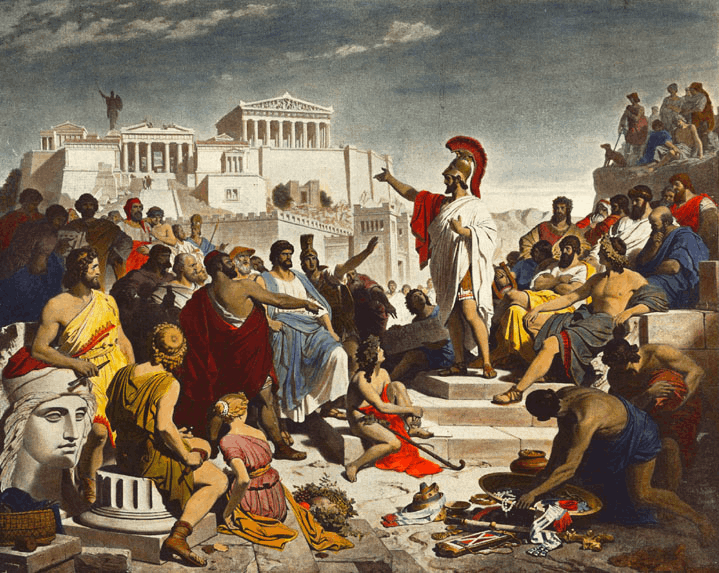
509 BC
Roman Republic
Expulsion of Lucius Tarquinius Superbus, founding of Roman Republic (traditional date).
The Roman Republic (Latin: Res publica Romana [ˈreːs ˈpuːblɪka roːˈmaːna]) was the era of classical Roman civilization beginning with the overthrow of the Roman Kingdom (traditionally dated to 509 BC) and ending in 27 BC with the establishment of the Roman Empire. During this period, Rome's control expanded from the city's immediate surroundings to hegemony over the entire Mediterranean world.
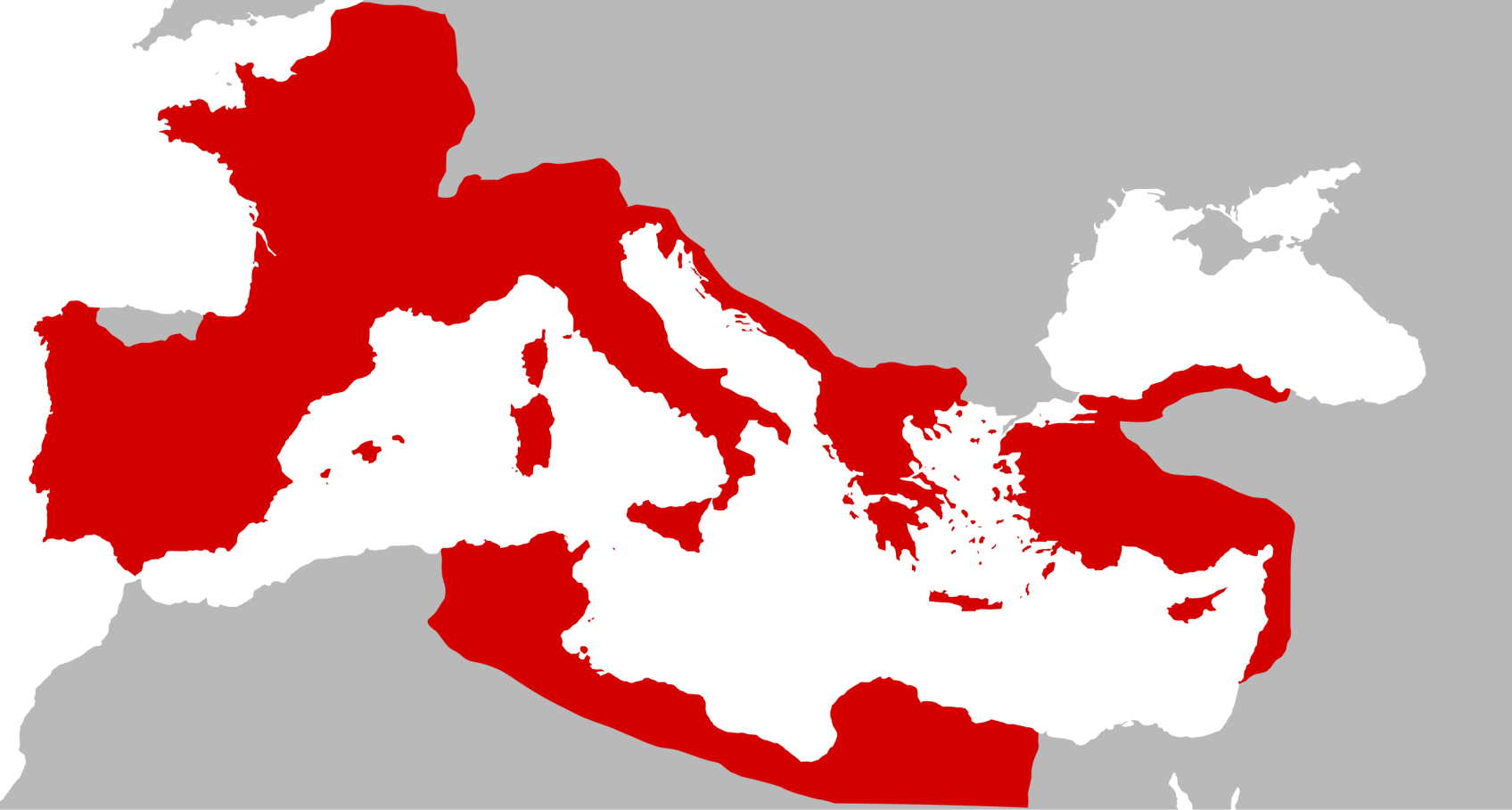
c. 512 BC
Darius the Great
Darius I (Darius the Great) of Persia, subjugates eastern Thrace, Macedonia submits voluntarily, and annexes the Libyan Kingdom, Persian Empire at largest extent.
Darius I (Old Persian: 𐎭𐎠𐎼𐎹𐎺𐎢𐏁 Dārayavaʰuš; Greek: Δαρεῖος Dareios; c. 550 – 486 BCE), commonly known as Darius the Great, was a Persian ruler who served as the third King of Kings of the Achaemenid Empire, reigning from 522 BCE until his death in 486 BCE. He ruled the empire at its territorial peak, when it included much of Western Asia, parts of the Balkans (Thrace–Macedonia and Paeonia) and the Caucasus, most of the Black Sea's coastal regions, Central Asia, the Indus Valley in the far east, and portions of North Africa and Northeast Africa including Egypt (Mudrâya), eastern Libya, and coastal Sudan.
Darius ascended the throne by overthrowing the Achaemenid monarch Bardiya (or Smerdis), who he claimed was in fact an imposter named Gaumata. The new king met with rebellions throughout the empire but quelled each of them; a major event in Darius's life was his expedition to subjugate Greece and punish Athens and Eretria for their participation in the Ionian Revolt. Although his campaign ultimately resulted in failure at the Battle of Marathon, he succeeded in the re-subjugation of Thrace and expanded the Achaemenid Empire through his conquests of Macedonia, the Cyclades, and the island of Naxos.
Darius organized the empire by dividing it into administrative provinces, each governed by a satrap. He organized Achaemenid coinage as a new uniform monetary system, and he made Aramaic a co-official language of the empire alongside Persian. He also put the empire in better standing by building roads and introducing standard weights and measures. Through these changes, the Achaemenid Empire became centralized and unified. Darius undertook other construction projects throughout his realm, primarily focusing on Susa, Pasargadae, Persepolis, Babylon, and Egypt. He had an inscription carved upon a cliff-face of Mount Behistun to record his conquests, which would later become important evidence of the Old Persian language.
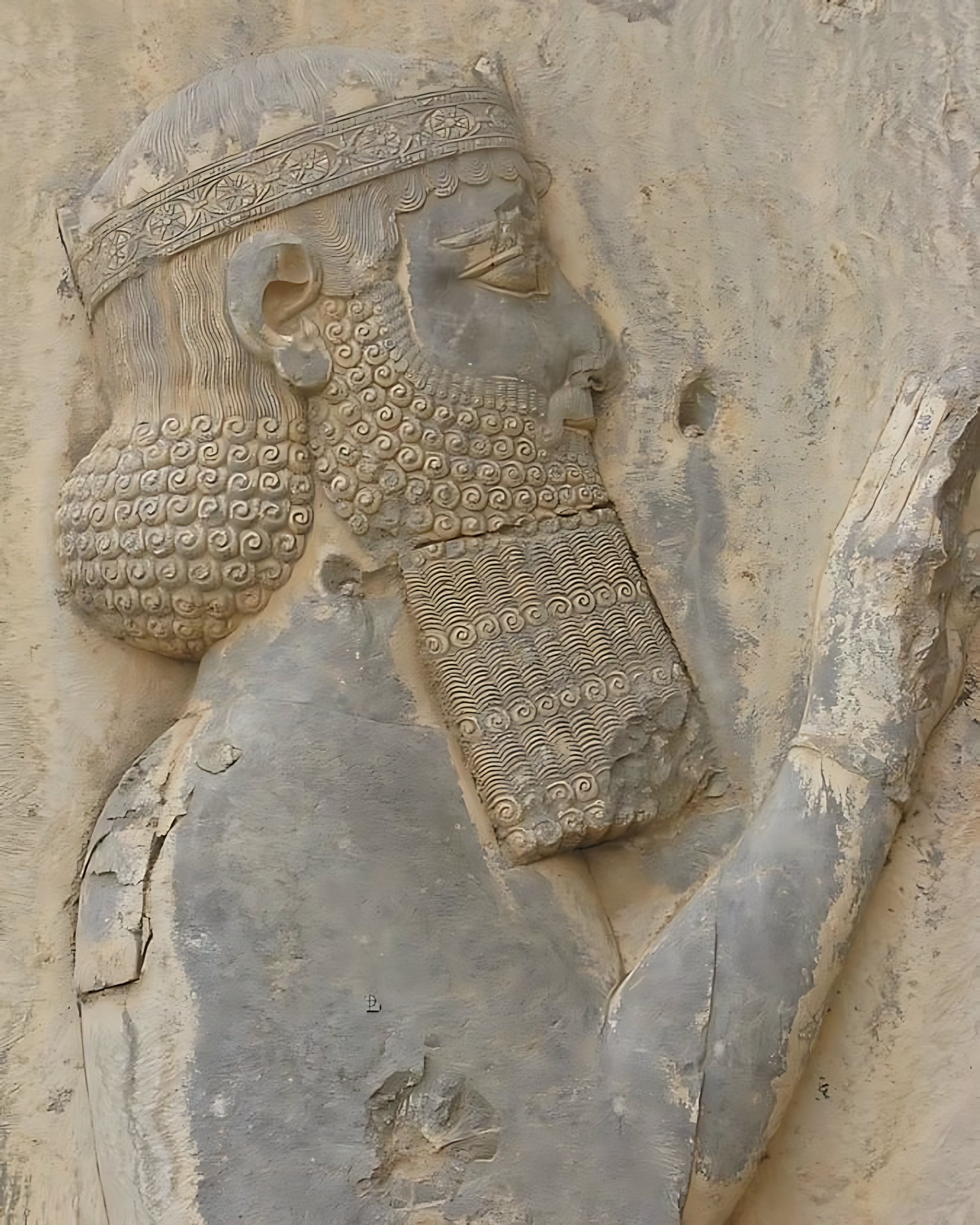
525 BC
Cambyses II of Persia conquers Ancient Egypt
Cambyses II (Old Persian: 𐎣𐎲𐎢𐎪𐎡𐎹, romanized: Kaᵐbūjiya) was the second King of Kings of the Achaemenid Empire from 530 to 522 BC. He was the son and successor of Cyrus the Great (r. 550 – 530 BC) and his mother was Cassandane.
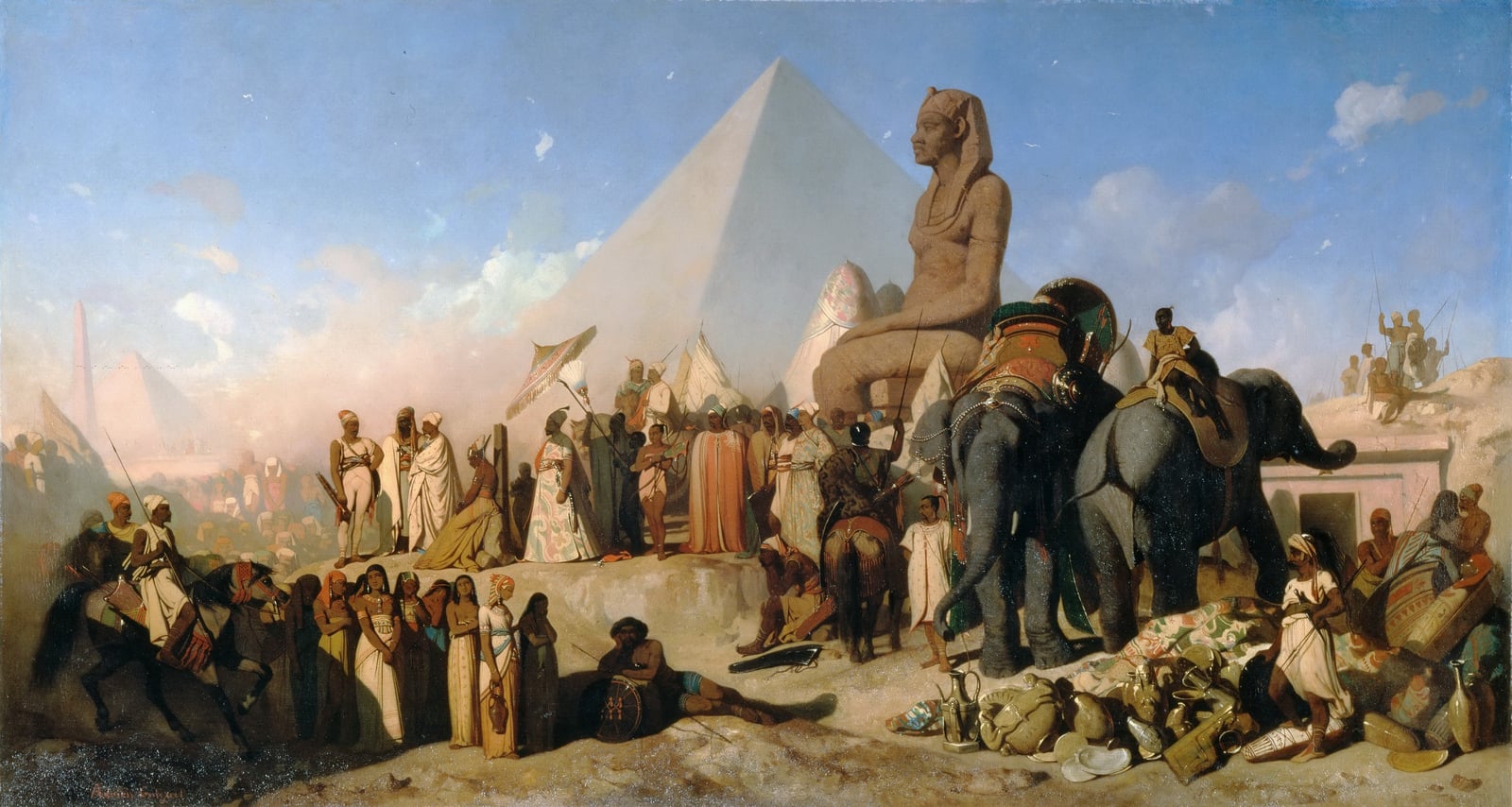
529 BC
Death of Cyrus the Great
The details of Cyrus's death vary by account. Ctesias, in his Persica, has the longest account, which says Cyrus met his death while putting down resistance from the Derbices infantry, aided by other Scythian archers and cavalry, plus Indians and their war-elephants. According to him, this event took place northeast of the headwaters of the Syr Darya. The account of Herodotus from his Histories provides the second-longest detail, in which Cyrus met his fate in a fierce battle with the Massagetae, a Scythian tribal confederation from the southern deserts of Khwarezm and Kyzyl Kum in the southernmost portion of the Eurasian Steppe regions of modern-day Kazakhstan and Uzbekistan, following the advice of Croesus to attack them in their own territory. The Massagetae were related to the Scythians in their dress and mode of living; they fought on horseback and on foot. In order to acquire her realm, Cyrus first sent an offer of marriage to their ruler, the empress Tomyris, a proposal she rejected.
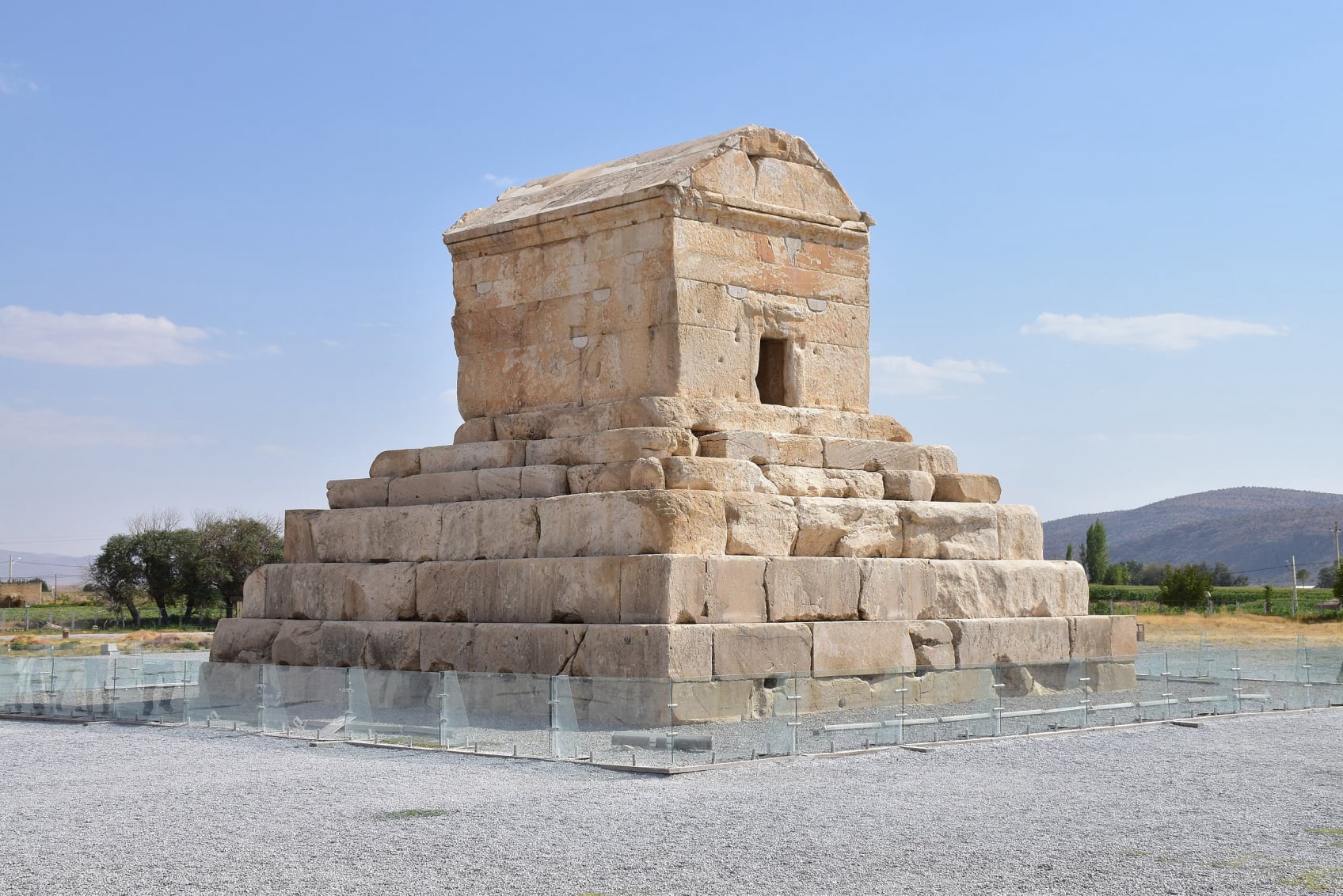
539 BC
Neo-Babylonian Empire
The fall of the Neo-Babylonian Empire and liberation of the Jews by Cyrus the Great.
The Neo-Babylonian Empire or Second Babylonian Empire, historically known as the Chaldean Empire, was the last polity ruled by monarchs native to Mesopotamia. Beginning with the coronation of Nabopolassar as the King of Babylon in 626 BC and being firmly established through the fall of the Assyrian Empire in 612 BC, the Neo-Babylonian Empire was conquered by the Achaemenid Persian Empire in 539 BC, marking the collapse of the Chaldean dynasty less than a century after its founding.
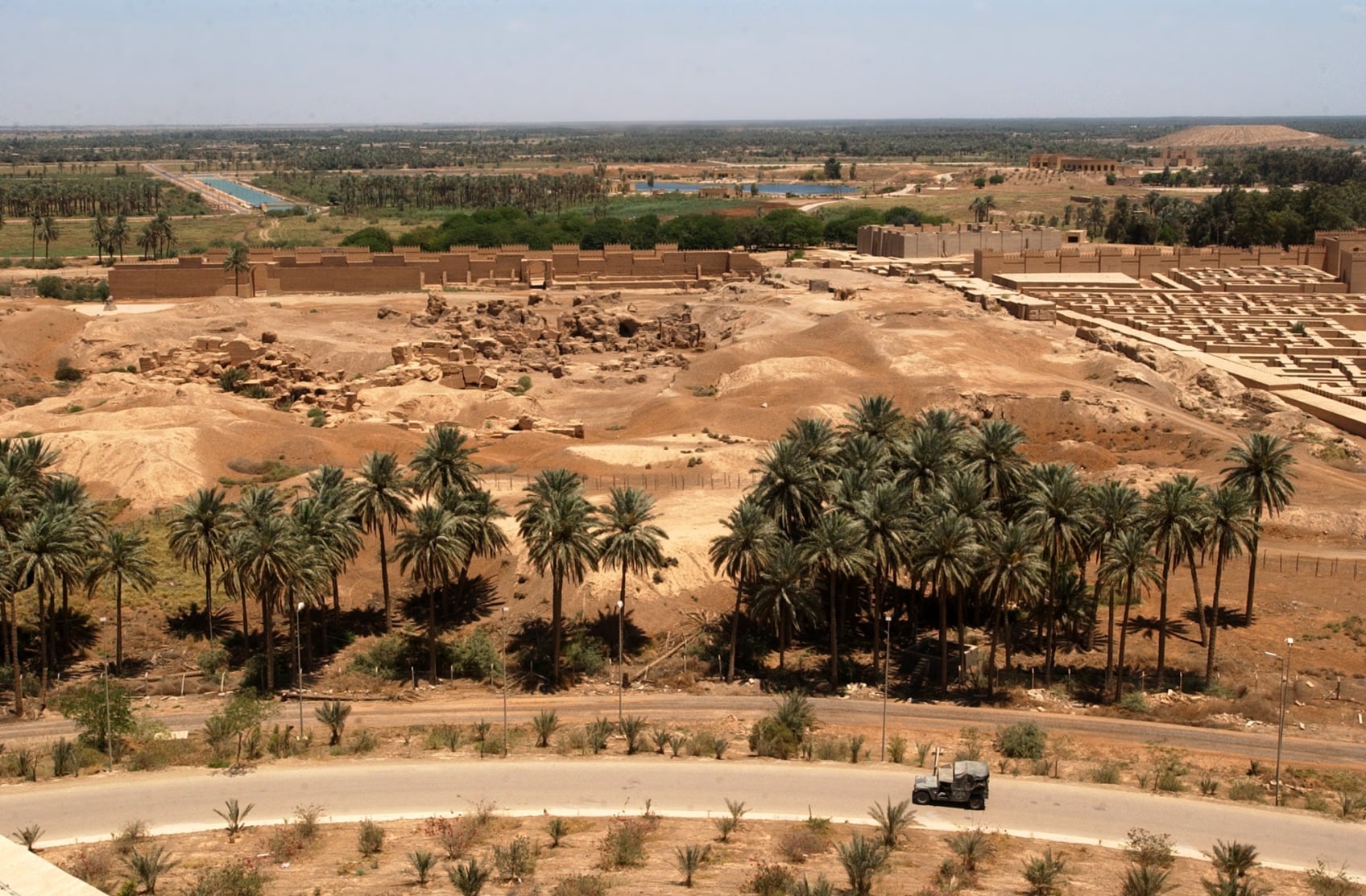
544 BC
Rise of Magadha as the dominant power under Bimbisara
Magadha also called the Kingdom of Magadha or the Magadha Empire, was a kingdom and empire, and one of the sixteen Mahajanapadas, 'Great Kingdoms' of the Second Urbanization, based in southern Bihar in the eastern Ganges Plain, in Ancient India. Magadha was ruled by the Brihadratha dynasty, the Haryanka dynasty (544–413 BCE), the Shaishunaga dynasty (413–345 BCE), the Nanda dynasty (345–322 BCE), the Mauryan dynasty (322–184 BCE), the Shunga dynasty (184–73 BCE) and the Kanva dynasty (73–28 BCE). It lost much of it territories after being defeated by the Satavahanas of Deccan in 28 BC and was reduced to a small principality around Pataliputra. Under the Mauryas, Magadha became a pan-Indian empire, covering large swaths of the Indian subcontinent and Afghanistan.
Magadha played an important role in the development of Jainism and Buddhism. It was the core of four of northern India's greatest empires, the Nanda Empire (c. 345 – c. 322 BCE), Maurya Empire (c. 322–185 BCE), Shunga Empire (c. 185–78 BCE) and Gupta Empire (c. 319–550 CE). The Pala Empire also ruled over Magadha and maintained a royal camp in Pataliputra.
The Pithipatis of Bodh Gaya referred to themselves as Magadhādipati and ruled in parts of Magadha until the 13th century.
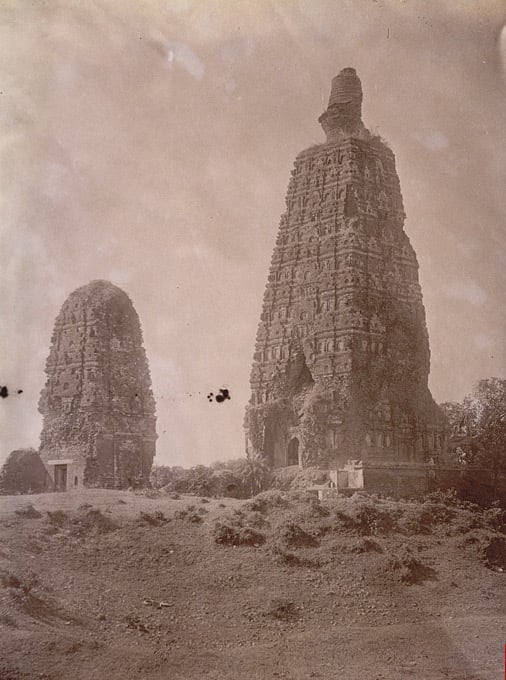
546 BC
Cyrus the Great overthrows Croesus, King of Lydia
Croesus (Lydian: 𐤨𐤭𐤬𐤥𐤦𐤮𐤠𐤮 Krowisas; Phrygian: Akriaewais; Ancient Greek: Κροῖσος, romanized: Kroisos; Latin: Croesus; reigned: c. 585 – c. 546 BC) was the king of Lydia, who reigned from 585 BC until his defeat by the Persian king Cyrus the Great in 547 or 546 BC. According to Herodotus, he reigned 14 years. Croesus was renowned for his wealth; Herodotus and Pausanias noted that his gifts were preserved at Delphi. The fall of Croesus had a profound effect on the Greeks, providing a fixed point in their calendar. "By the fifth century at least", J. A. S. Evans has remarked, "Croesus had become a figure of myth, who stood outside the conventional restraints of chronology."
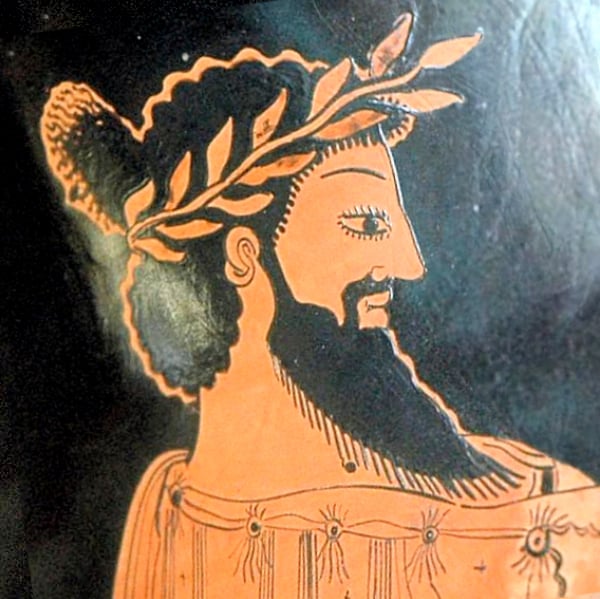
549 BC
Mahavira, founder of Jainism, is born
Mahavira (Devanagari: महावीर, Mahāvīra), also known as Vardhamana (Devanagari: वर्धमान, Vardhamāna), was the 24th Tirthankara (supreme preacher) of Jainism. He was the spiritual successor of the 23rd Tirthankara Parshvanatha. Mahavira was born in the early 6th century BCE into a royal Jain family of ancient India. His mother's name was Trishala and his father's name was Siddhartha. They were lay devotees of Parshvanatha. Mahavira abandoned all worldly possessions at the age of about 30 and left home in pursuit of spiritual awakening, becoming an ascetic. Mahavira practiced intense meditation and severe austerities for twelve and a half years, after which he attained Kevala Jnana (omniscience). He preached for 30 years and attained moksha (liberation) in the 6th century BCE, although the year varies by sect.
Mahavira taught that observance of the vows of ahimsa (non-violence), satya (truth), asteya (non-stealing), brahmacharya (chastity), and aparigraha (non-attachment) are necessary for spiritual liberation. He taught the principles of Anekantavada (many-sided reality): syadvada and nayavada. Mahavira's teachings were compiled by Indrabhuti Gautama (his chief disciple) as the Jain Agamas. The texts, transmitted orally by Jain monks, are believed to have been largely lost by about the 1st century CE.
Mahavira is usually depicted in a sitting or standing meditative posture, with the symbol of a lion beneath him. His earliest iconography is from archaeological sites in the North Indian city of Mathura, and is dated from between the 1st century BCE and the 2nd century CE. His birth is celebrated as Mahavir Janma Kalyanak and his nirvana (salvation) and also his first shishya of Gautama Swami is observed by Jains as Diwali.
Historically, Mahavira, who revived and preached Jainism in ancient India, was an older contemporary of Gautama Buddha. Jains celebrate Mahavir Janma Kalyanak every year on the 13th day of the Indian Calendar month of Chaitra.
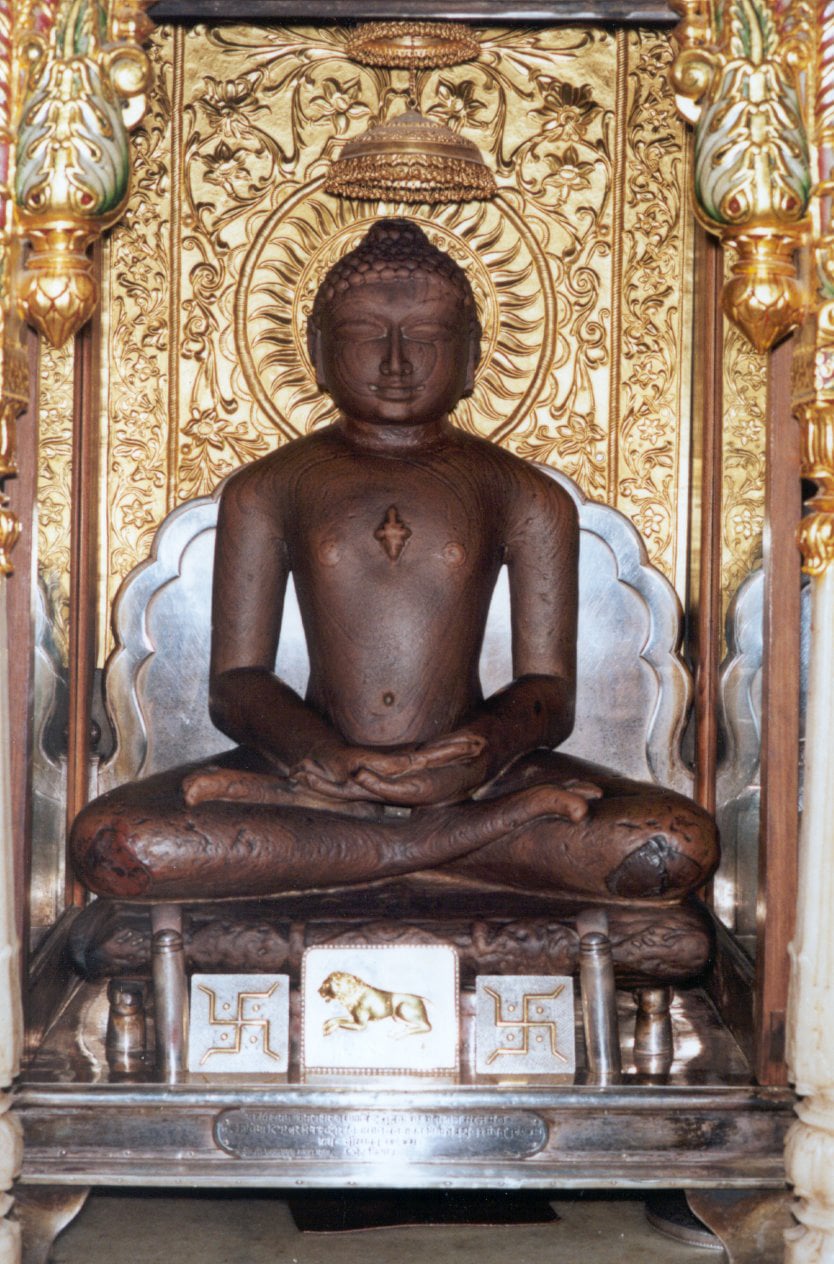
550 BC
Foundation of the Achaemenid Empire by Cyrus the Great
The Achaemenid Empire or Achaemenian Empire, also known as the First Persian Empire (Old Persian: 𐎧𐏁𐏂, Xšāça, lit. 'The Empire' or 'The Kingdom'), was the ancient Iranian empire founded by Cyrus the Great of the Achaemenid dynasty in 550 BC. Based in modern-day Iran, it was the largest empire by that point in history, spanning a total of 5.5 million square kilometres (2.1 million square miles). The empire spanned from the Balkans and Egypt in the west, West Asia as the base, the majority of Central Asia to the northeast, and parts of South Asia (the Indus Valley in what is present-day Pakistan) to the southeast.
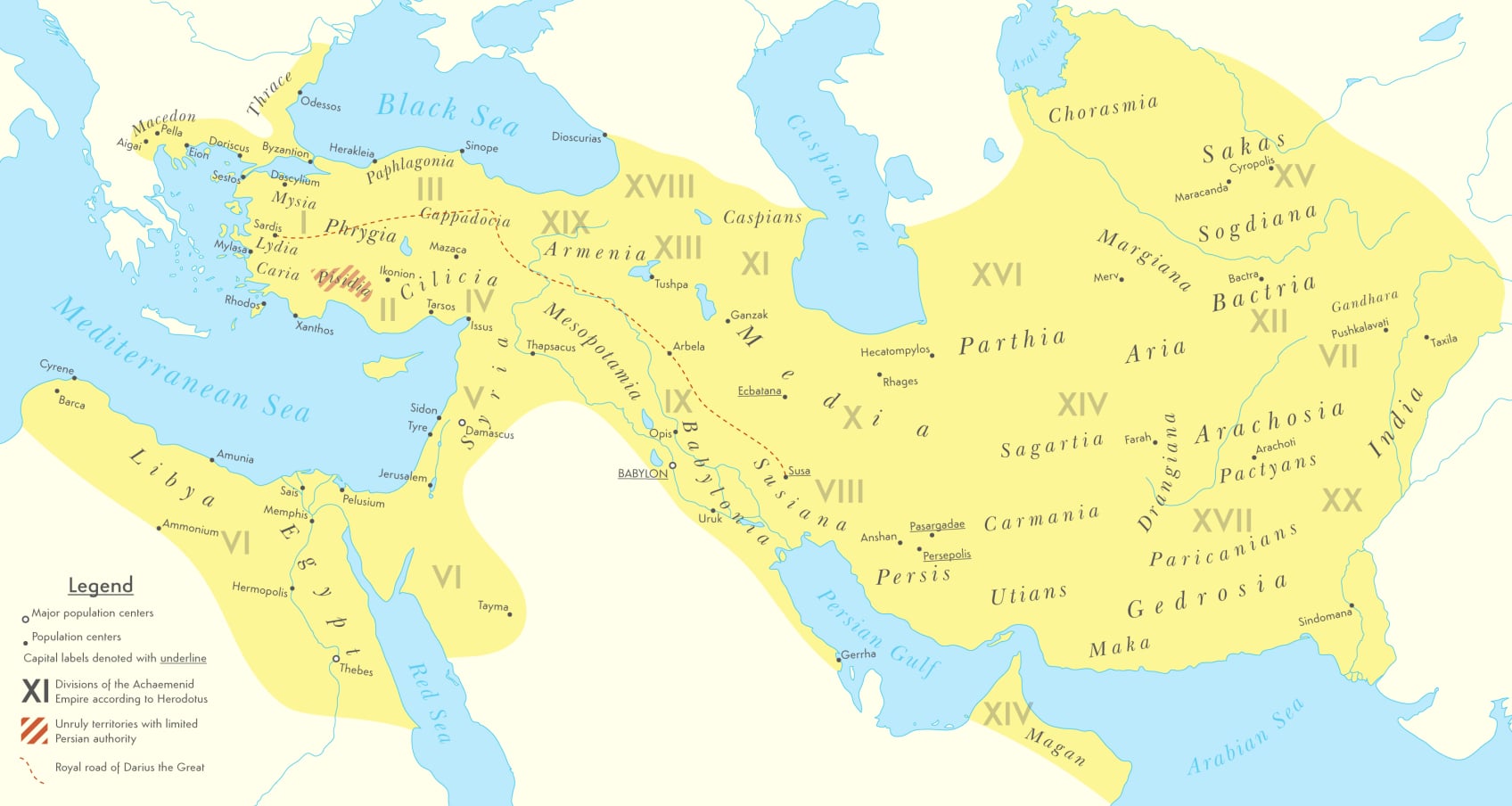
551 BC
Confucius, founder of Confucianism, is born
Confucius (孔子; pinyin: Kǒngzǐ; lit. 'Master Kong'; c. 551 – c. 479 BCE), born Kong Qiu (孔丘) was a Chinese philosopher of the Spring and Autumn period who is traditionally considered the paragon of Chinese sages. Confucius's teachings and philosophy underpin the East Asian culture and society, and remain influential across China and East Asia to this day. His philosophical teachings, called Confucianism, emphasized personal and governmental morality, correctness of social relationships, justice, kindness, sincerity, and a ruler's responsibilities to lead by virtue.
Confucius considered himself a transmitter for the values of earlier periods which he claimed had been abandoned in his time. He advocated for filial piety, endorsing strong family loyalty, ancestor veneration, the respect of elders by their children and of husbands by their wives. Confucius recommended a robust family unit as the cornerstone for an ideal government. He championed the Silver Rule, or a negative form of the Golden Rule, advising, "Do not do unto others what you do not want done to yourself."
The time of Confucius's life saw a rich diversity of thought, and was a formative period in China's intellectual history. His ideas gained in prominence during the Warring States period, but experienced setback immediately following the Qin conquest. Under Emperor Wu of Han, Confucius's ideas received official sanction, with affiliated works becoming mandatory readings for career paths leading to officialdom. During the Tang and Song dynasties, Confucianism developed into a system known in the West as Neo-Confucianism, and later as New Confucianism. From ancient dynasties to the modern era, Confucianism has integrated into the Chinese social fabric and way of life.
Traditionally, Confucius is credited with having authored or edited many of the ancient texts including all of the Five Classics. However, modern scholars exercise caution in attributing specific assertions to Confucius himself, for at least some of the texts and philosophy associated with him were of a more ancient origin. Aphorisms concerning his teachings were compiled in the Analects, but not until many years after his death.
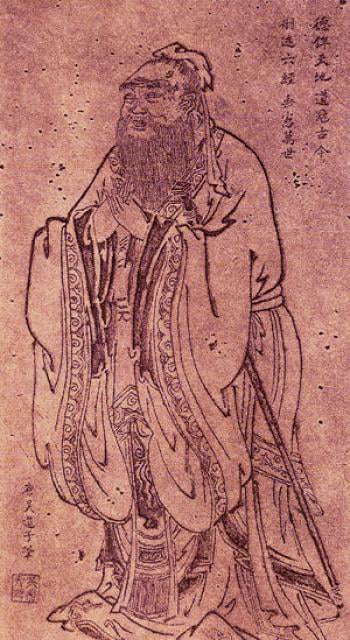
563 BC
The Buddha
Siddhartha Gautama (Buddha), founder of Buddhism is born as a prince of the Shakya clan, which ruled parts of Magadha, one of the Mahajanapadas.
Siddhartha Gautama, most commonly referred to as the Buddha ('the awakened'), was a wandering ascetic and religious teacher who lived in South Asia during the 6th or 5th century BCE and founded Buddhism.
According to Buddhist tradition, he was born in Lumbini, in what is now Nepal, to royal parents of the Shakya clan, but renounced his home life to live as a wandering ascetic (Sanskrit: śramaṇa). After leading a life of mendicancy, asceticism, and meditation, he attained enlightenment at Bodh Gaya in what is now India. The Buddha thereafter wandered through the lower Indo-Gangetic Plain, teaching and building a monastic order. He taught a Middle Way between sensual indulgence and severe asceticism, leading to Nirvana, that is, freedom from ignorance, craving, rebirth, and suffering. His teachings are summarized in the Noble Eightfold Path, a training of the mind that includes ethical training and kindness toward others, and meditative practices such as sense restraint, mindfulness, and jhana/dhyana (meditation proper). He died in Kushinagar, attaining parinirvana. The Buddha has since been venerated by numerous religions and communities across Asia.
A couple of centuries after his death, he came to be known by the title Buddha, which means 'Awakened One' or 'Enlightened One'. His teachings were compiled by the Buddhist community in the Vinaya, his codes for monastic practice, and the Sutta Piṭaka, a compilation of teachings based on his discourses. These were passed down in Middle Indo-Aryan dialects through an oral tradition. Later generations composed additional texts, such as systematic treatises known as Abhidharma, biographies of the Buddha, collections of stories about his past lives known as Jataka tales, and additional discourses, i.e., the Mahayana sutras.
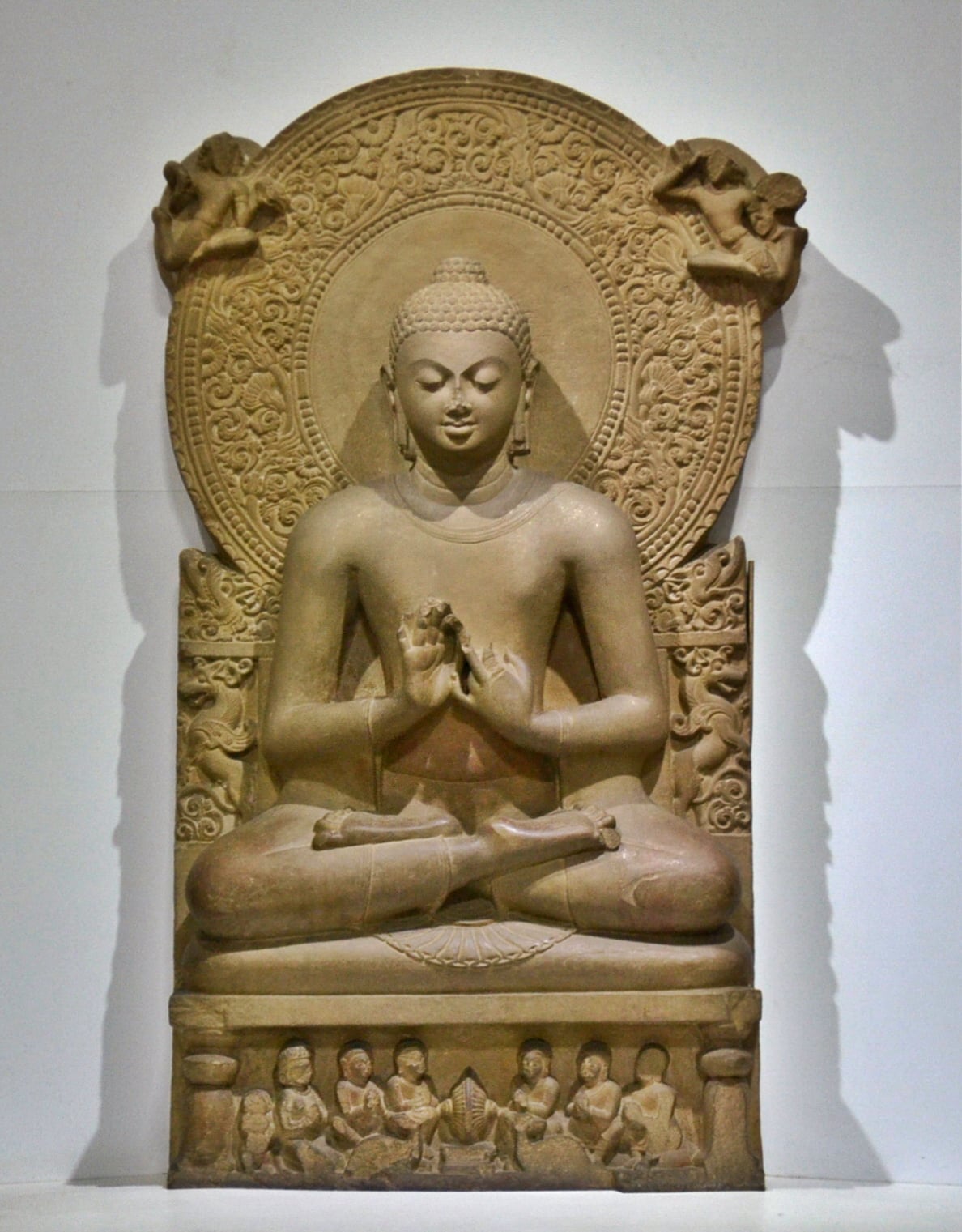
c. 600 BC
Rise of the Sao civilization near Lake Chad
The Sao civilization (also called So) flourished in Central Africa from ca. the 6th century BCE or 5th century BCE to as late as the 16th century AD. The Sao lived by the Chari River basin in territory that later became part of Cameroon and Chad. They are the earliest civilization to have left clear traces of their presence in the territory of modern Cameroon. Sometime around the 16th century, conversion to Islam changed the cultural identity of the former Sao. Today, several ethnic groups of northern Cameroon and southern Chad, but particularly the Sara and Kotoko, claim descent from the civilization of the Sao.
The Sao civilization is hypothesized to have descended from the earlier Gajiganna culture of Lake Chad, which dated from about the 18th to the 9th century BCE, eventually taking Sao form between the 11th and 4th centuries BCE, such that, by the end of the first millennium BCE, Sao presence was well established around Lake Chad and near the Chari River. The city-states of the Sao reached their apex sometime between the ninth and fifteenth centuries CE.
Although some scholars estimate that the Sao civilization south of Lake Chad lasted until the fourteenth or fifteenth century, the majority opinion is that it ceased to exist as a separate culture sometime in the 16th century after the expansion of the Bornu Empire. The Kotoko are the inheritors of the former city states of the Sao.

600 BC
Zapotec civilization
Evidence of writing system appears in Oaxaca used by the Zapotec civilization.
The Zapotec civilization (Be'ena'a (Zapotec) "The People"; c. 700 BC–1521 AD) was an indigenous pre-Columbian civilization that flourished in the Valley of Oaxaca in Mesoamerica. Archaeological evidence shows that their culture originated at least 2,500 years ago. The Zapotec archaeological site at the ancient city of Monte Albán has monumental buildings, ball courts, magnificent tombs and grave goods, including finely worked gold jewelry. Monte Albán was one of the first major cities in Mesoamerica. It was the center of a Zapotec state that dominated much of the territory which today is known as the Mexican state of Oaxaca.
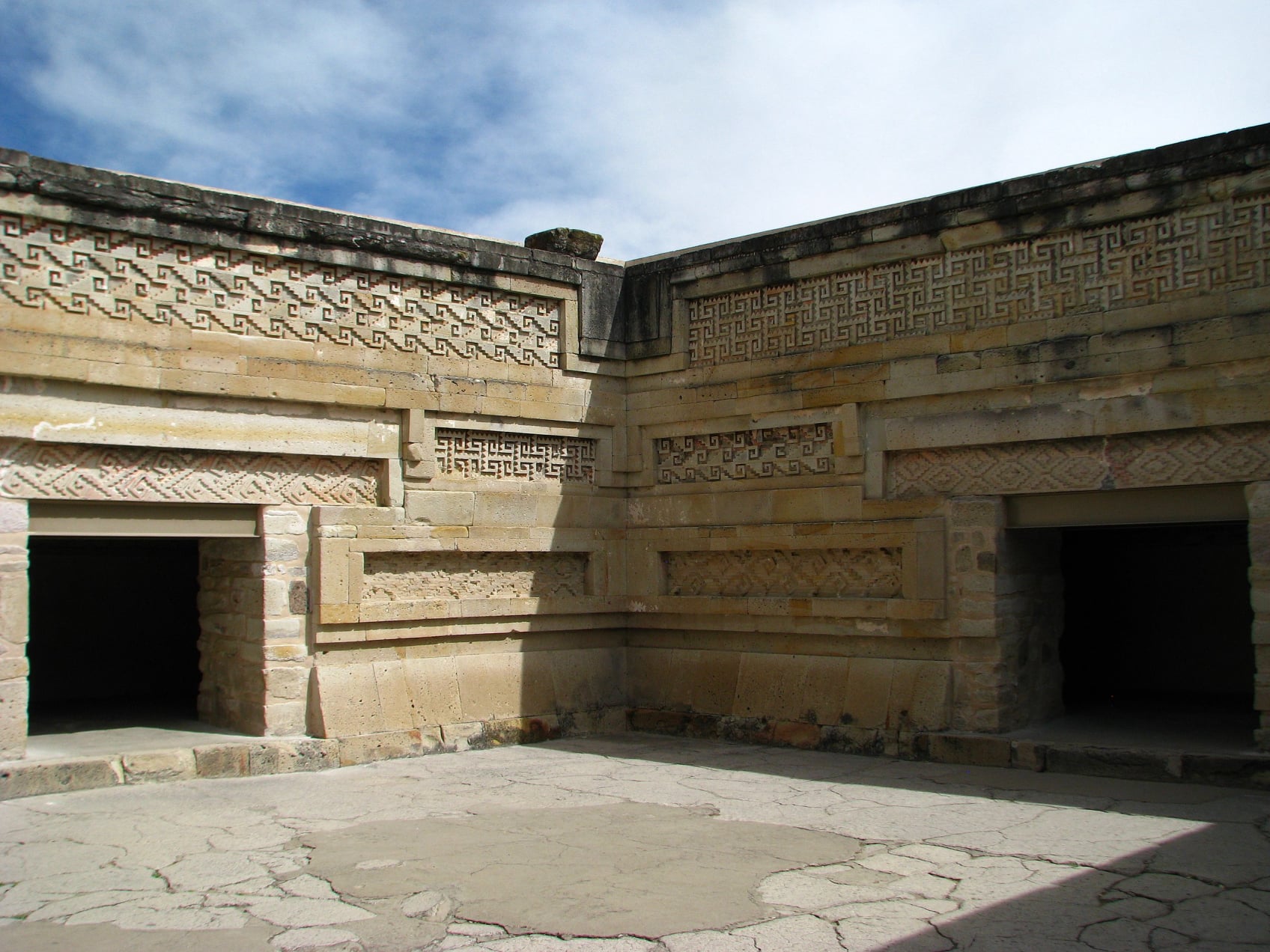
600 BC
Mahajanapadas
Sixteen Mahajanapadas ("Great Realms" or "Great Kingdoms") emerge in India.
The Mahājanapadas (lit. 'Great Janapadas') were sixteen kingdoms or aristocratic republics that existed in ancient India from the sixth to fourth centuries BCE, during the second urbanisation period.
The 6th–5th centuries BCE are often regarded as a major turning point in early Indian history. During this period, India's first large cities since the demise of the Indus Valley civilization arose. It was also the time of the rise of sramana movements (including Buddhism and Jainism), which challenged the religious orthodoxy of the Vedic period.
Two of the Mahājanapadas were most probably gaṇasaṅghas (aristocratic republics), and others had forms of monarchy. Ancient Buddhist texts like the Anguttara Nikaya make frequent reference to sixteen great kingdoms and republics that had developed and flourished in a belt stretching from Gandhara in the northwest to Anga in the eastern part of the Indian subcontinent. They included parts of the trans-Vindhyan region, and all had developed prior to the rise of Buddhism in India.
Archaeologically, this period has been identified as corresponding in part to the Northern Black Polished Ware culture.
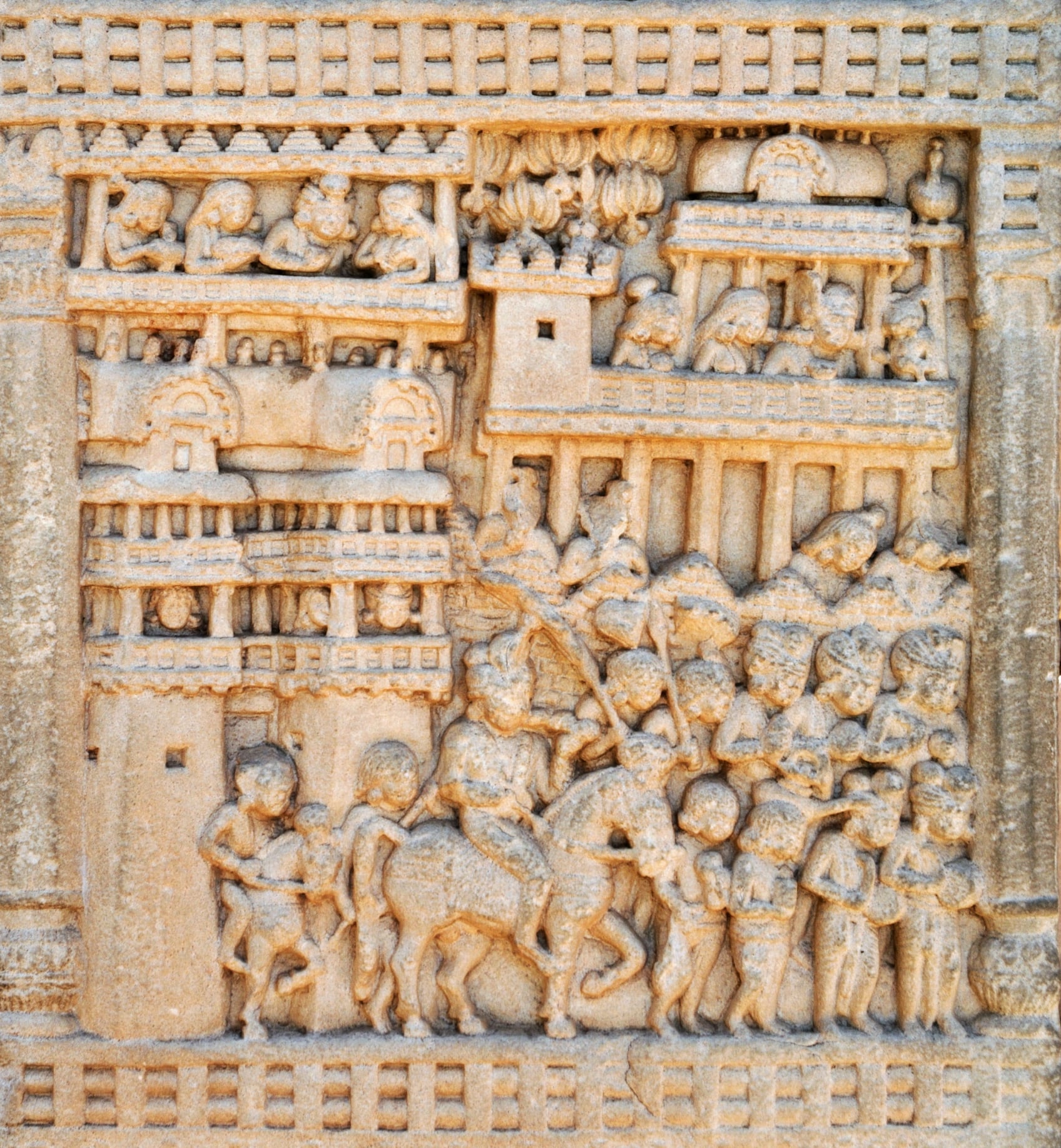
600 BC
Pandyan kingdom is founded in South India
The Pandyan dynasty, also referred to as the Pandyas of Madurai, was an ancient Tamil dynasty of South India, and among the four great kingdoms of Tamilakam, the other three being the Pallavas, the Cholas and the Cheras. Existing since at least the 4th to 3rd centuries BCE, the dynasty passed through two periods of imperial dominance, the 6th to 10th centuries CE, and under the 'Later Pandyas' (13th to 14th centuries CE). Under Jatavarman Sundara Pandyan I and Maravarman Kulasekara Pandyan I, the Pandyas ruled extensive territories including regions of present-day South India and northern Sri Lanka through vassal states subject to Madurai.
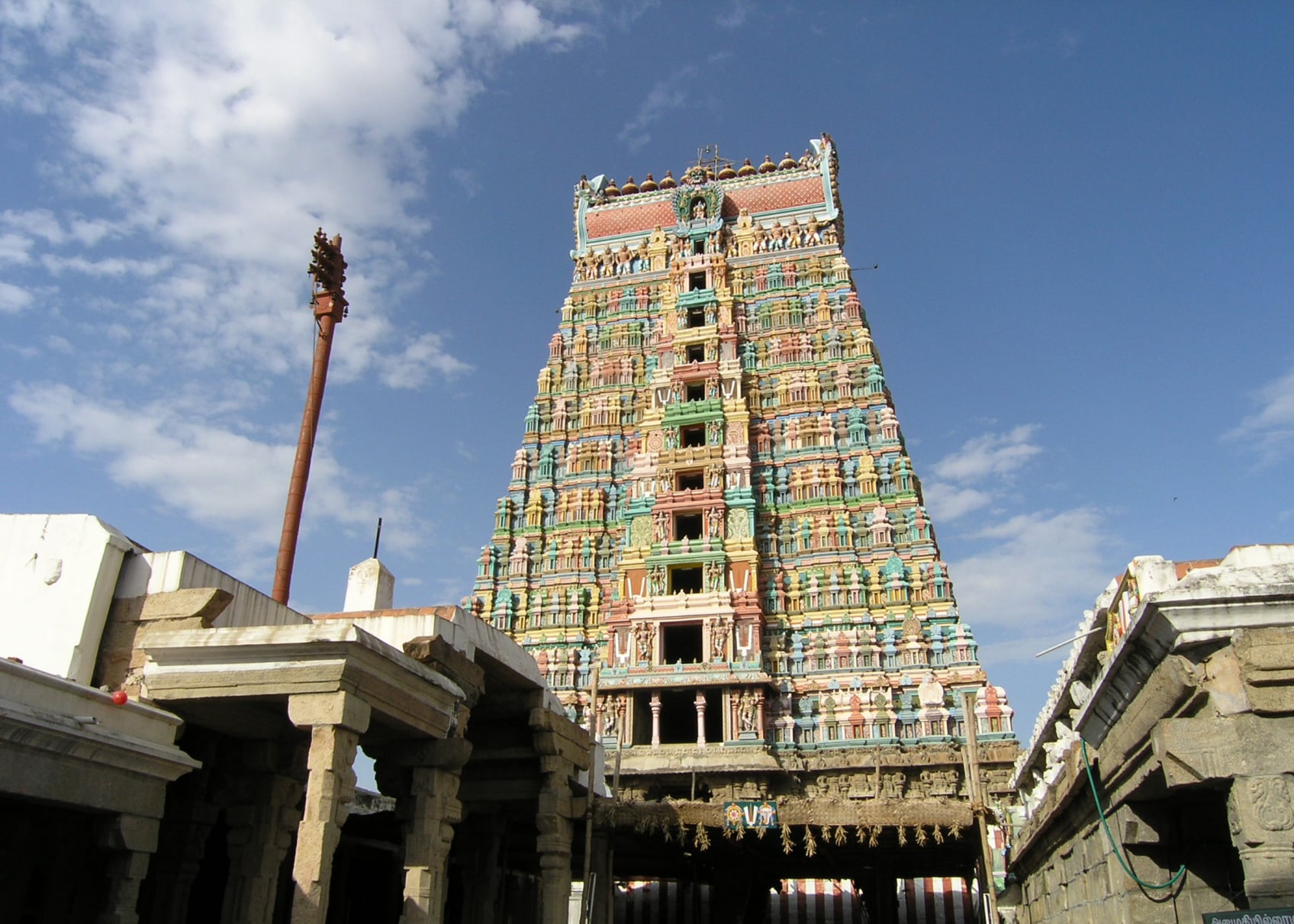
612 BC
Nineveh
An alliance between the Babylonians, Medes, and Scythians succeeds in destroying Nineveh and causing subsequent fall of the Assyrian empire.
The greatness of Nineveh was short-lived. In around 627 BC, after the death of its last great king Ashurbanipal, the Neo-Assyrian Empire began to unravel through a series of bitter civil wars between rival claimants for the throne, and in 616 BC Assyria was attacked by its own former vassals, the Babylonians, Chaldeans, Medes, Persians, Scythians and Cimmerians. In about 616 BC Kalhu was sacked, the allied forces eventually reached Nineveh, besieging and sacking the city in 612 BC, following bitter house-to-house fighting, after which it was razed. Most of the people in the city who could not escape to the last Assyrian strongholds in the north and west were either massacred or deported out of the city and into the countryside where they founded new settlements. Many unburied skeletons were found by the archaeologists at the site. The Assyrian Empire then came to an end by 605 BC, the Medes and Babylonians dividing its colonies between themselves.
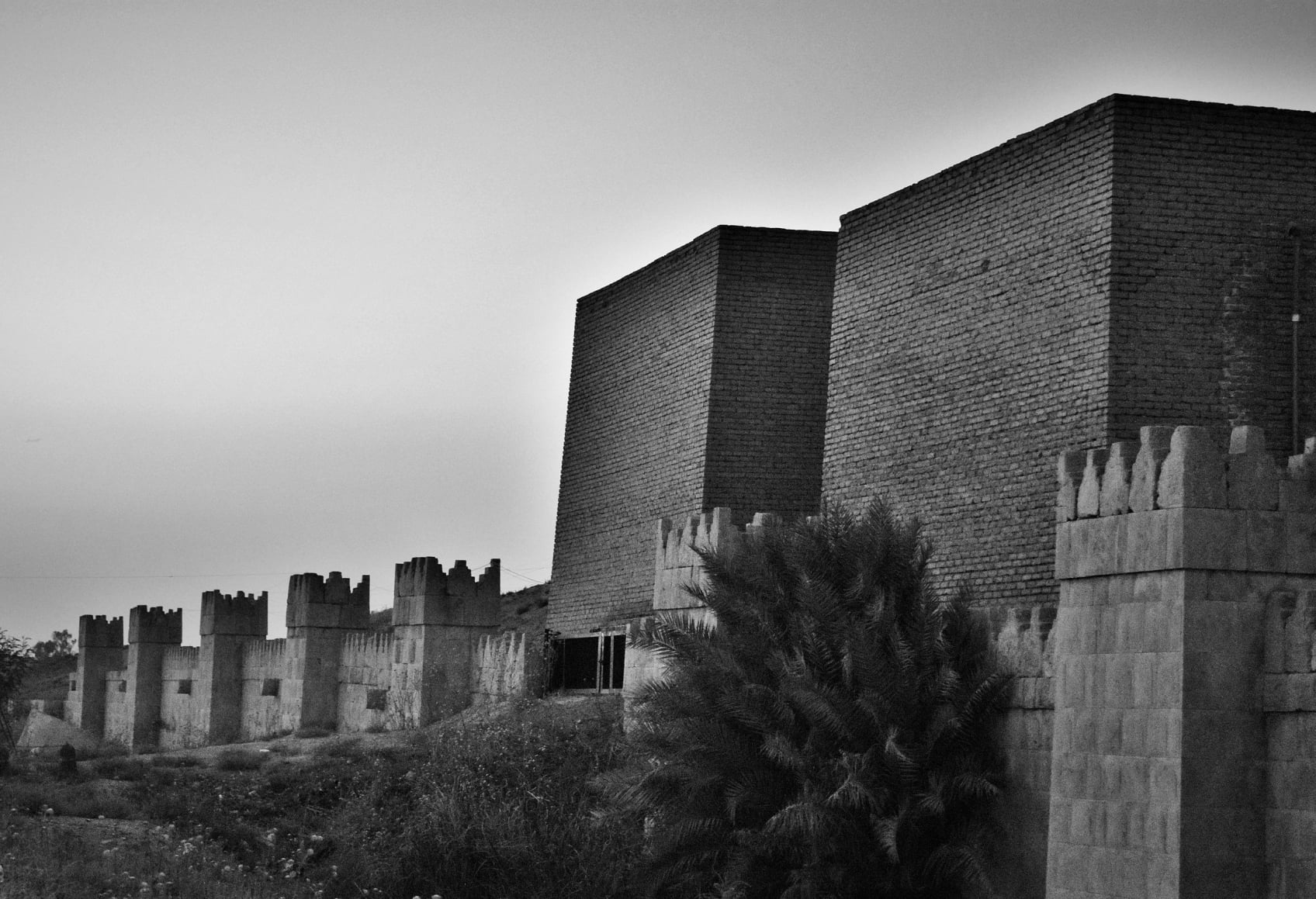
650 BC – 550 BC
Urewe
The Urewe culture dominates the African Great Lakes region. It was one of Africa's oldest iron smelting centres.
The Urewe culture developed and spread in and around the Lake Victoria region of Africa during the African Iron Age. The culture's earliest dated artefacts are located in the Kagera Region of Tanzania, and it extended as far west as the Kivu region of the Democratic Republic of the Congo, as far east as the Nyanza and Western provinces of Kenya, and north into Uganda, Rwanda and Burundi. Sites from the Urewe culture date from the Early Iron Age, from the 5th century BC to the 6th century AD. The Urewe people certainly did not disappear, and the continuity of institutional life was never completely broken. One of the most striking things about the Early Iron Age pots and smelting furnaces is that some of them were discovered at sites that the local people still associate with royalty, and still more significant is the continuity of language.
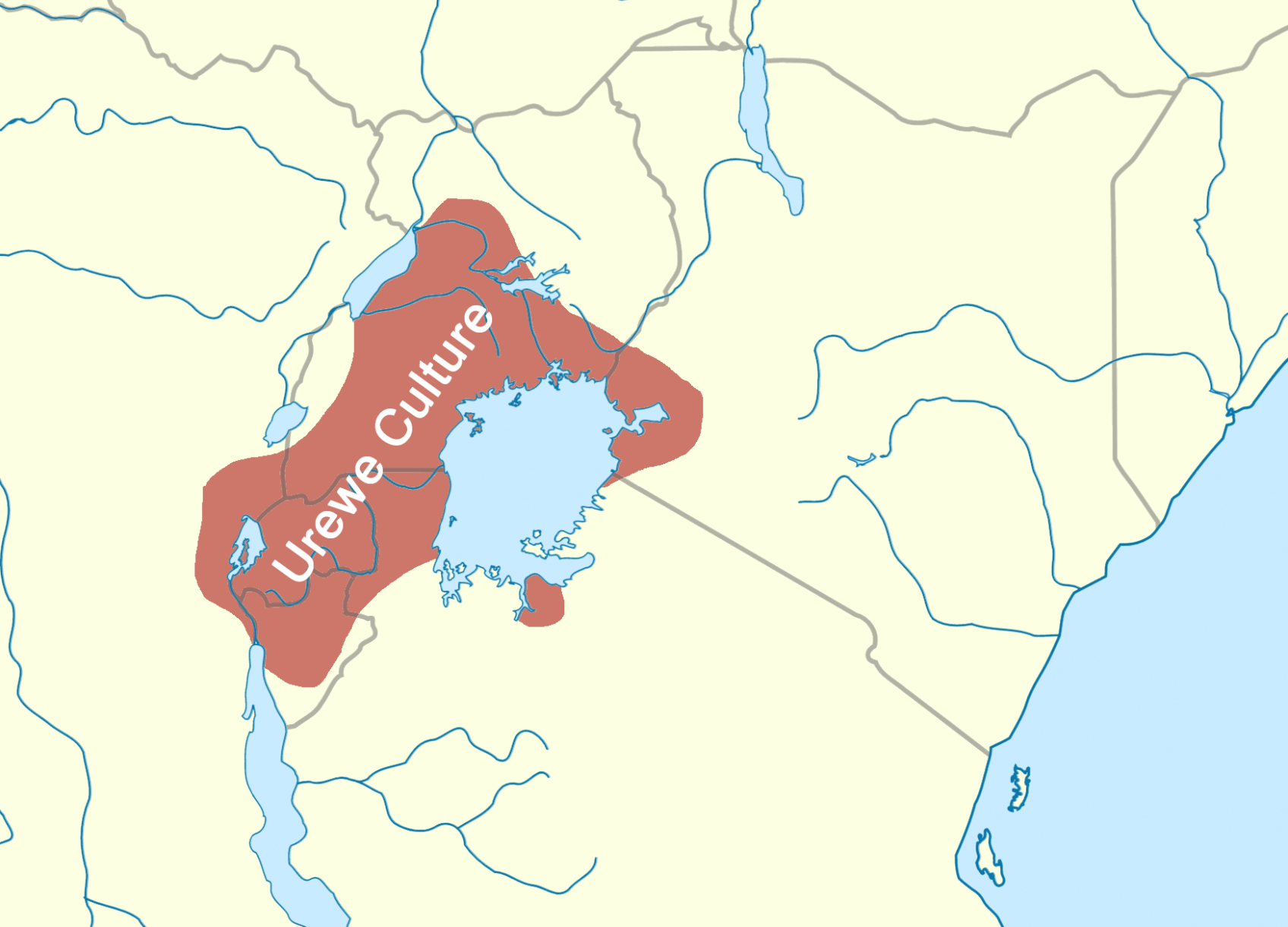
653 BC
Rise of Achaemenid dynasty
The Achaemenid Empire or Achaemenian Empire, also known as the First Persian Empire, was the ancient Iranian empire founded by Cyrus the Great of the Achaemenid dynasty in 550 BC. Based in modern-day Iran, it was the largest empire by that point in history, spanning a total of 5.5 million square kilometres (2.1 million square miles). The empire spanned from the Balkans and Egypt in the west, West Asia as the base, the majority of Central Asia to the northeast, and parts of South Asia (the Indus Valley in what is present-day Pakistan) to the southeast.
Around the 7th century BC, the region of Persis in the southwestern portion of the Iranian plateau was settled by the Persians. From Persis, Cyrus rose and defeated the Median Empire as well as Lydia and the Neo-Babylonian Empire, marking the formal establishment of a new imperial polity under the Achaemenid dynasty.
In the modern era, the Achaemenid Empire has been recognized for its imposition of a successful model of centralized bureaucratic administration, its multicultural policy, building complex infrastructure such as road systems and an organized postal system, the use of official languages across its territories, and the development of civil services, including its possession of a large, professional army. Its advancements inspired the implementation of similar styles of governance by a variety of later empires.
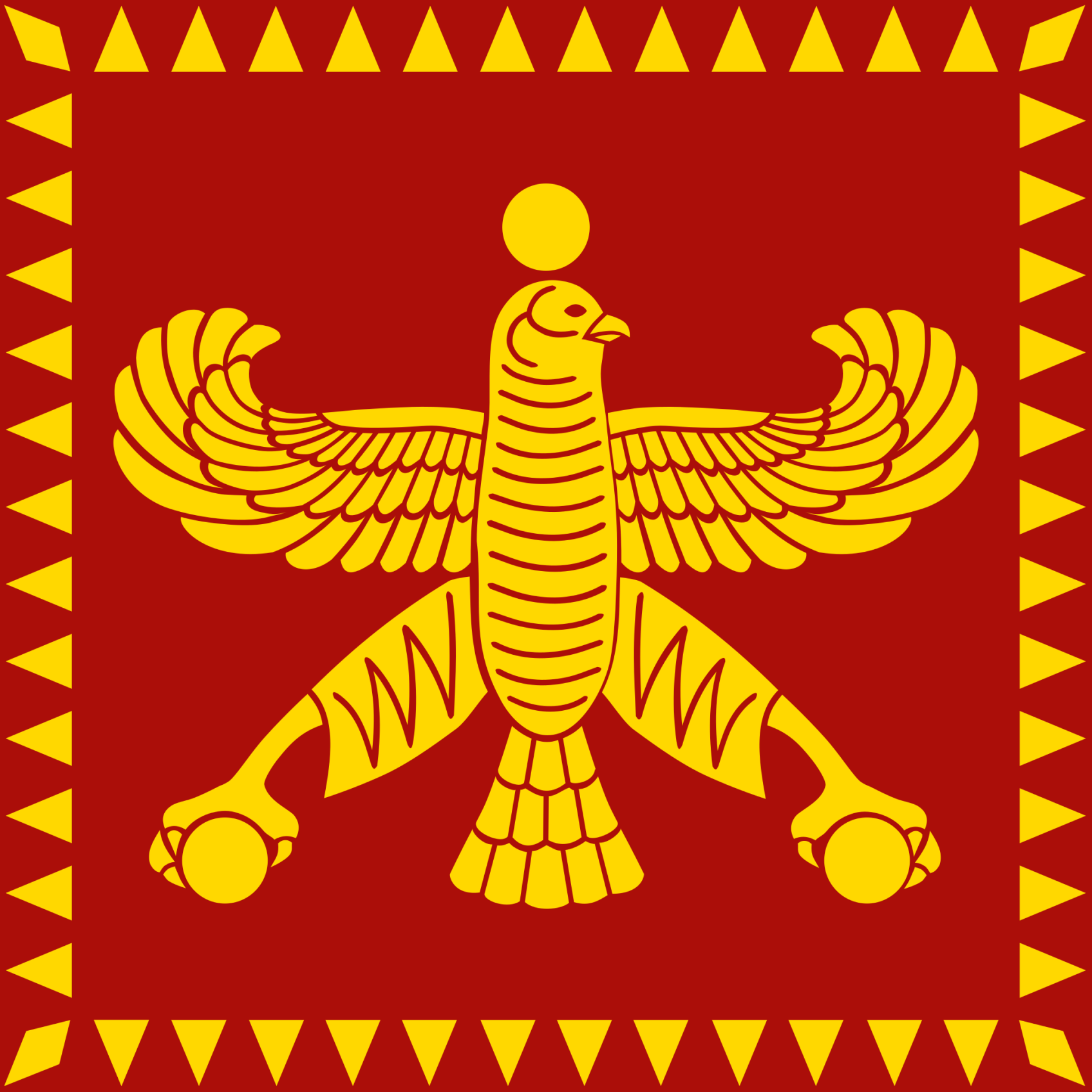
700 BC
Marib Dam
The construction of Marib Dam in Arabia Felix, in modern Saudi Arabia and Yemen.
The Marib Dam (Arabic: سَدّ مَأْرِب Sadd Ma'rib, or سُدّ مَأْرِب Sudd Ma'rib) is a modern dam blocking the wadi or valley of Adhanah (أَذَنَة, also Dhanah ذَنَة) in the Balaq Hills, located in the Ma'rib Governorate in Yemen. The current dam was built in the 1980s and is close to the ruins of the ancient dam, first built in the 8th century BC. It was one of the engineering wonders of the ancient world and a central part of the Sabaean and Himyarite kingdoms around Ma'rib.
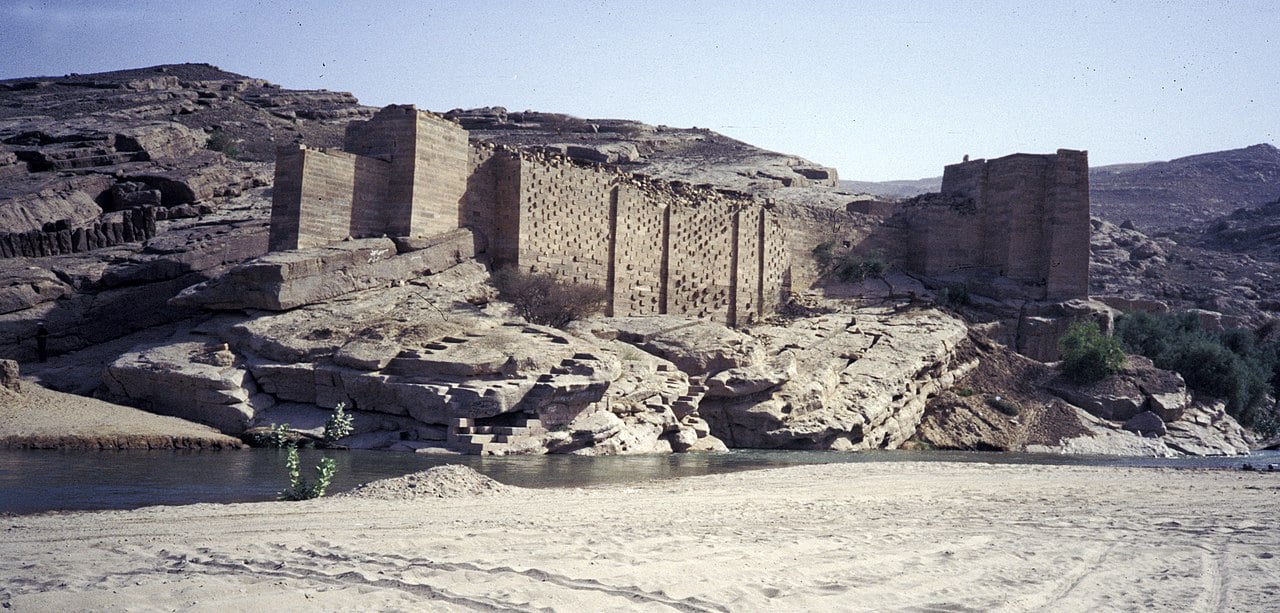
728 BC
Rise of the Median Empire
Media (in Old Persian: Māda; in Greek: Mēdía; in Akkadian: Mādāya) was a political entity centered in Ecbatana, that lasted from the 7th century BCE until the mid-6th century BCE. It is believed that they have dominated a significant portion of the Iranian plateau, preceding the powerful Achaemenid Empire. The frequent interference of the Assyrians in the Zagros region led to the process of unifying the Median tribes. By 612 BCE, the Medes became strong enough to overthrow the declining Assyrian Empire in alliance with the Babylonians. However, contemporary scholarship tends to be skeptical about the existence of a united Median "kingdom" or "state", at least for most of the 7th century BCE.
According to classical historiography, Media emerged as one major power of the ancient Near East after the collapse of Assyria. Under Cyaxares (r. 625–585 BCE), the kingdom's borders were expanded to the east and west through the subjugation of neighboring peoples, such as the Persians and Armenians. Media's territorial expansion led to the formation of the first Iranian empire, which at its height would have exercised authority over more than two million square kilometers, stretching from the eastern banks of the Halys River in Anatolia to Central Asia. In this period, the Median Empire was one of the great powers in the ancient Near East alongside Babylon, Lydia, and Egypt. During his reign, Astyages (r. 585–550 BCE) worked to strengthen and centralize the Median state, going against the will of tribal nobility, which may have contributed to the kingdom's downfall. In 550 BCE, the Median capital, Ecbatana, was conquered by the Persian king Cyrus II, marking the beginning of the Achaemenid Empire.
While it is generally accepted that the Medes played a significant role in the ancient Near East after the fall of Assyria, historians debate the existence of a Median empire or even a kingdom. Some scholars accept the existence of a powerful and organized empire that would have influenced the political structures of the later Achaemenid Empire. Others argue that the Medes formed a loose confederation of tribes rather than a centralized state.
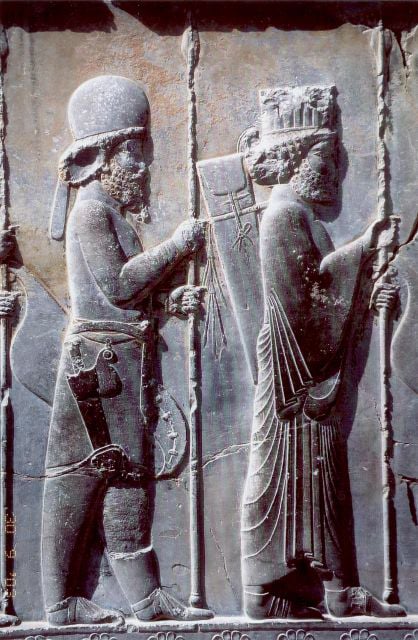
745 BC
Tiglath-Pileser III
Tiglath-Pileser III (Neo-Assyrian cuneiform: Tukultī-apil-Ešarra, meaning "my trust belongs to the son of Ešarra"; Biblical Hebrew: תִּגְלַת פִּלְאֶסֶר Tīglaṯ Pīlʾeser) was the king of the Neo-Assyrian Empire from 745 BC to his death in 727. One of the most prominent and historically significant Assyrian kings, Tiglath-Pileser ended a period of Assyrian stagnation, introduced numerous political and military reforms and more than doubled the lands under Assyrian control. Because of the massive expansion and centralization of Assyrian territory and establishment of a standing army, some researchers consider Tiglath-Pileser's reign to mark the true transition of Assyria into an empire. The reforms and methods of control introduced under Tiglath-Pileser laid the groundwork for policies enacted not only by later Assyrian kings but also by later empires for millennia after his death.
The circumstances of Tiglath-Pileser's rise to the throne are not clear. Because ancient Assyrian sources give conflicting accounts concerning Tiglath-Pileser's lineage and there are records of a revolt at around the time of his accession, many historians have concluded that Tiglath-Pileser was a usurper, who seized the throne from his predecessor Ashur-nirari V, who was either his brother or his father. Other historians postulate that the evidence could just as easily be interpreted as Tiglath-Pileser inheriting the throne through legitimate means and the debate remains unresolved.
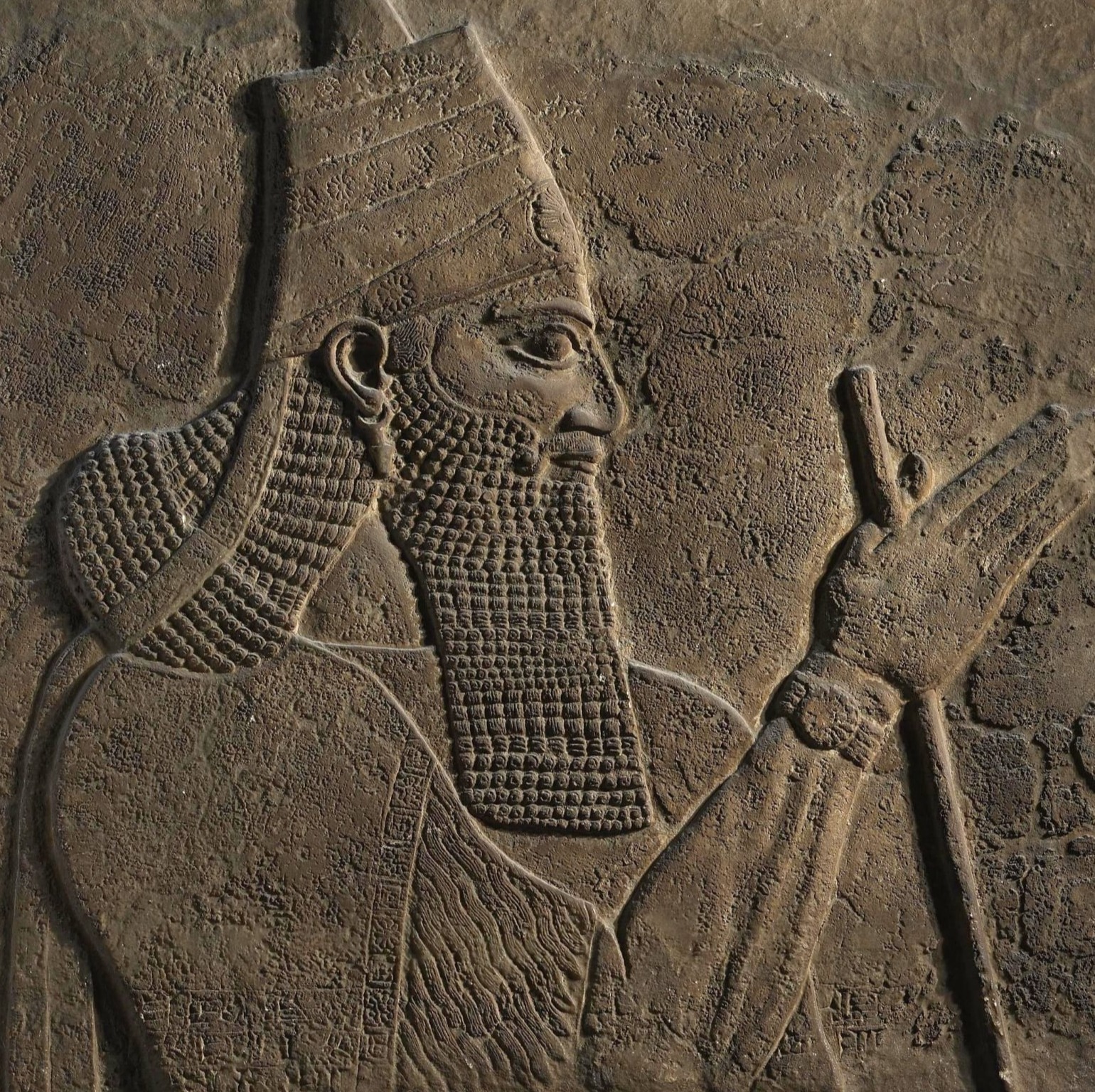
753 BC
Founding of Rome (traditional date)
In modern historiography, ancient Rome encompasses the founding of the Italian city of Rome in the 8th century BC, the Roman Kingdom (753–509 BC), Roman Republic (509–27 BC), Roman Empire (27 BC– 395 AD), and the collapse of the Western Roman Empire in the 5th century AD.
Ancient Rome began as an Italic settlement, traditionally dated to 753 BC, beside the River Tiber in the Italian Peninsula. The settlement grew into the city and polity of Rome, and came to control its neighbours through a combination of treaties and military strength. It eventually controlled the Italian Peninsula, assimilated the Greek culture of southern Italy (Magna Grecia) and the Etruscan culture, becoming a dominant power in the Mediterranean region and parts of Europe. It was among the largest empires in the ancient world, with an estimated 50 to 90 million inhabitants, roughly 20% of the world's population at the time. It covered around 5 million square kilometres (1.9 million square miles) at its height in AD 117.
The Roman state evolved from an elective monarchy to a classical republic and then to an increasingly autocratic semi-elective military dictatorship during the Empire. Through conquest, cultural, and linguistic assimilation, at its height it controlled the North African coast, Egypt, Southern Europe, and most of Western Europe, the Balkans, Crimea, and much of the Middle East, including Anatolia, Levant, and parts of Mesopotamia and Arabia. It is often grouped into classical antiquity together with ancient Greece, and their similar cultures and societies are known as the Greco-Roman world.
Ancient Roman civilisation has contributed to modern language, religion, society, technology, law, politics, government, warfare, art, literature, architecture, and engineering. Rome professionalised and expanded its military and created a system of government called res publica, the inspiration for modern republics such as the United States and France. It achieved impressive technological and architectural feats, such as the empire-wide construction of aqueducts and roads, as well as more grandiose monuments and facilities.
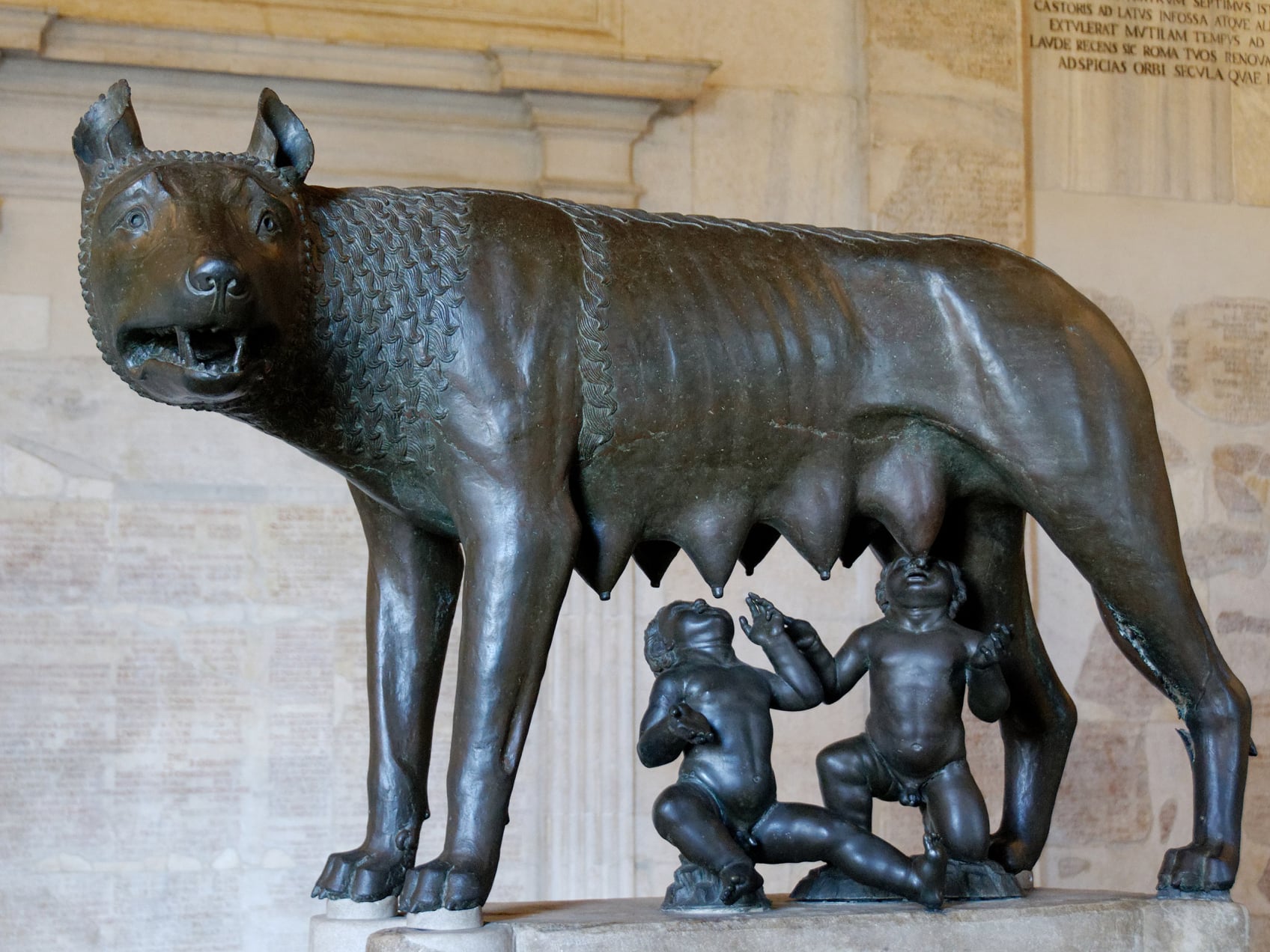
771 BC
Spring and Autumn period
Spring and Autumn period begins in China; Zhou dynasty's power is diminishing; the era of the Hundred Schools of Thought.
The Spring and Autumn period or Chunqiu (Chinese: 春秋) in Chinese history lasted from approximately 770 to 481 BCE (or later) which corresponds roughly to the first half of the Eastern Zhou period. The period's name derives from the Spring and Autumn Annals, a chronicle of the state of Lu between 722 and 481 BCE, which tradition associates with Confucius (551–479 BCE). During this period, royal control over the various local polities eroded as regional lords increasingly exercised political autonomy, negotiating their own alliances, waging wars amongst themselves, up to defying the king's court in Luoyi. The gradual Partition of Jin, one of the most powerful states, is generally considered to mark the end of the Spring and Autumn period and the beginning of the Warring States period.

776 BC
First recorded Ancient Olympic Games
The ancient Olympic Games (Ancient Greek: τὰ Ὀλύμπια, ta Olympia) were a series of athletic competitions among representatives of city-states and were one of the Panhellenic Games of Ancient Greece. They were held at the Panhellenic religious sanctuary of Olympia, in honor of Zeus, and the Greeks gave them a mythological origin. The originating Olympic Games are traditionally dated to 776 BC. The games were held every four years, or Olympiad, which became a unit of time in historical chronologies. They continued to be celebrated when Greece came under Roman rule in the 2nd century BC. Their last recorded celebration was in AD 393, under the emperor Theodosius I, but archaeological evidence indicates that some games were still held after this date. The games likely came to an end under Theodosius II, possibly in connection with a fire that burned down the temple of the Olympian Zeus during his reign.
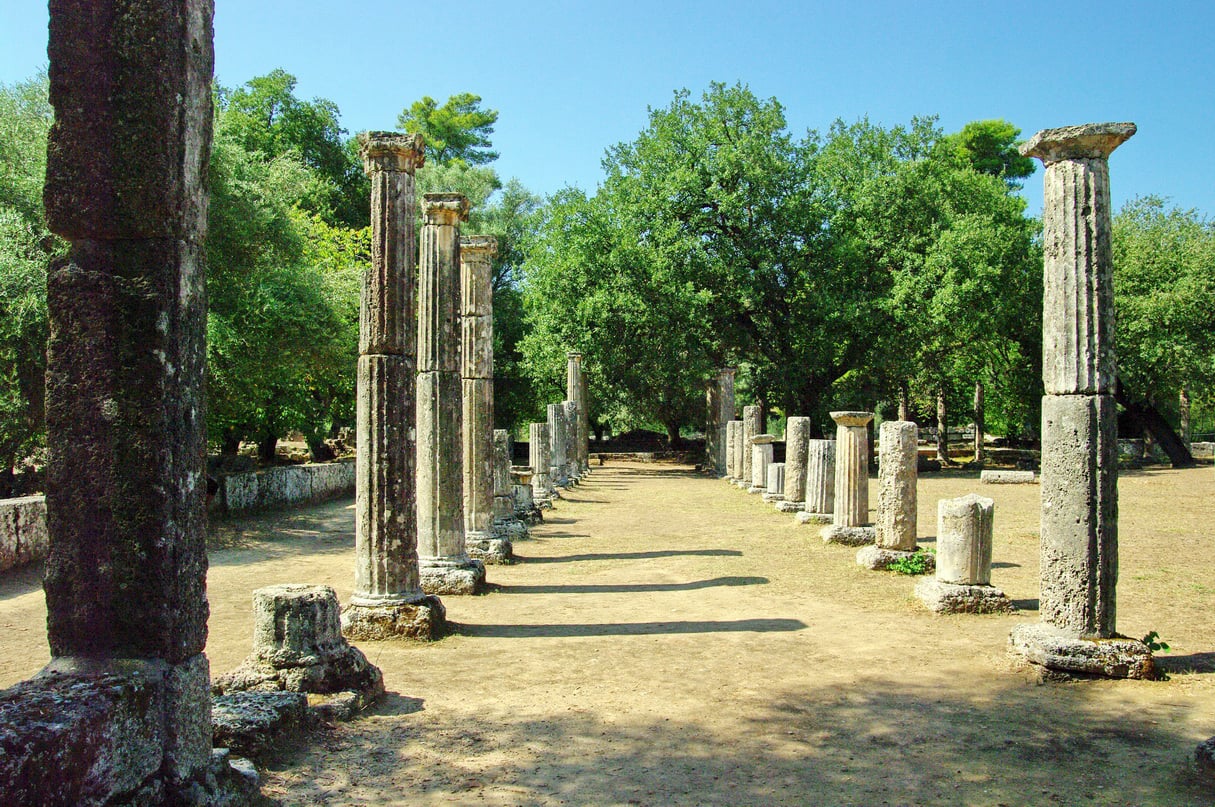
c. 785 BC
Rise of the Kingdom of Kush
The Kingdom of Kush, also known as the Kushite Empire, or simply Kush, was an ancient kingdom in Nubia, centered along the Nile Valley in what is now northern Sudan and southern Egypt.
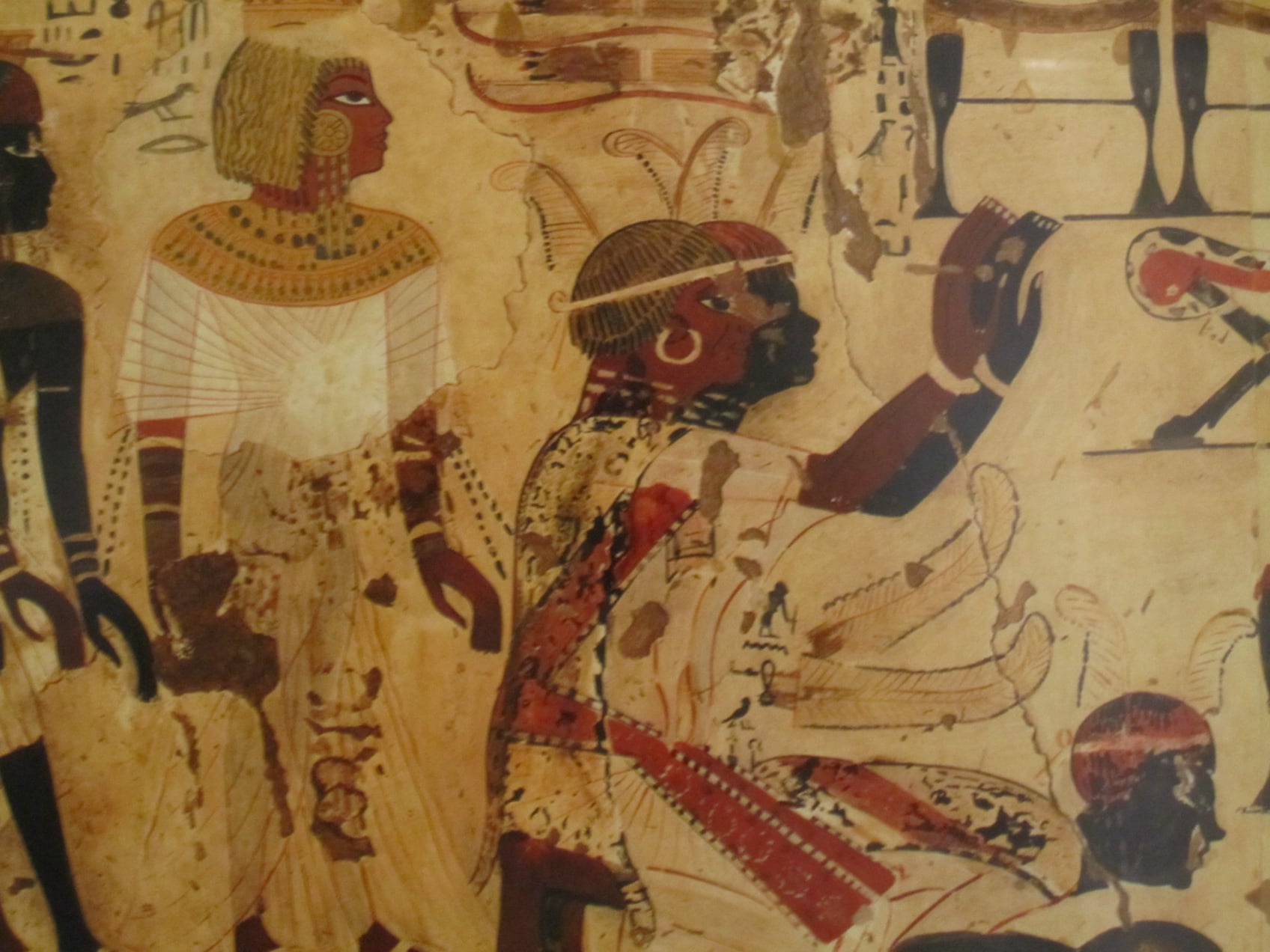
788 BC
Iron Age begins in Sungai Batu (Old Kedah)
Sungai Batu is an archaeological site in Kuala Muda District, Kedah, Malaysia.
Among these ruins are the remains of stone buildings and what may be a boat. Remains from the smelting of iron, including a large clay furnace, have also been found. The site covers approximately 3.9 km (1.5 sq mi).
Arthur Demarest of the Vanderbilt Institute of Mesoamerica commented that the city most likely gained power because "any civilization that has iron will win the war because they have efficient tools".

800 BC
Rise of Greek city-states
Ancient Greece (Greek: Ἑλλάς, romanized: Hellás) was a northeastern Mediterranean civilization, existing from the Greek Dark Ages of the 12th–9th centuries BC to the end of classical antiquity (c. 600 AD), that comprised a loose collection of culturally and linguistically related city-states and other territories. Most of these regions were officially unified only once, for 13 years, under Alexander the Great's empire from 336 to 323 BC. In Western history, the era of classical antiquity was immediately followed by the Early Middle Ages and the Byzantine period.
Three centuries after the Late Bronze Age collapse of Mycenaean Greece, Greek urban poleis began to form in the 8th century BC, ushering in the Archaic period and the colonization of the Mediterranean Basin. This was followed by the age of Classical Greece, from the Greco-Persian Wars to the 5th to 4th centuries BC, and which included the Golden Age of Athens. The conquests of Alexander the Great spread Hellenistic civilization from the western Mediterranean to Central Asia. The Hellenistic period ended with the conquest of the eastern Mediterranean world by the Roman Republic, and the annexation of the Roman province of Macedonia in Roman Greece, and later the province of Achaea during the Roman Empire.
Classical Greek culture, especially philosophy, had a powerful influence on ancient Rome, which carried a version of it throughout the Mediterranean and much of Europe. For this reason, Classical Greece is generally considered the cradle of Western civilization, the seminal culture from which the modern West derives many of its founding archetypes and ideas in politics, philosophy, science, and art.

814 BC
Foundation of Carthage
Foundation of Carthage by the Phoenicians in today known Tunisia.
Carthage was founded by Phoenicians coming from Tyre, probably initially as a station in the metal trade with the southern Iberian Peninsula. The city's name in Punic, Qart-Ḥadašt (𐤒𐤓𐤕 𐤇𐤃𐤔𐤕), means "New City". There is a tradition in some ancient sources, such as Philistos of Syracuse, for an "early" foundation date of around 1215 BC—before the fall of Troy in 1180 BC. However, Timaeus, a Greek historian from Sicily c. 300 BC, places the foundation of Carthage in 814 BC, which is the date generally accepted by modern historians. Legend, including Virgil's Aeneid, assigns the founding of the city to Queen Dido. Carthage would grow into a multi-ethnic empire spanning North Africa, Sardinia, Sicily, Malta, the Balearic Islands, and southern Iberia, but would ultimately be destroyed by Rome in the Punic Wars (264–146 BC) before being rebuilt as a Roman city.
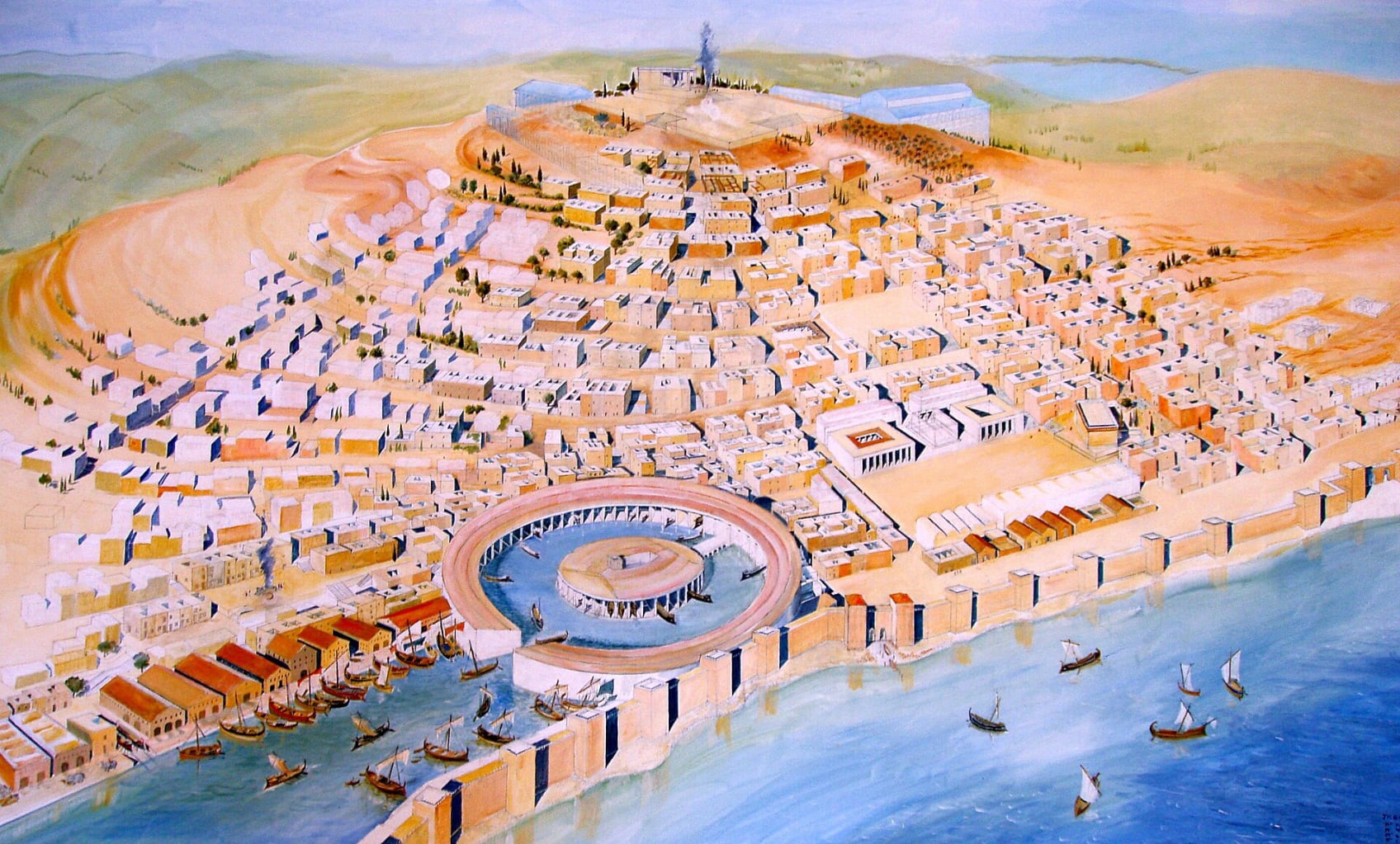
890 BC
Iliad and the Odyssey
Approximate date for the composition of the Iliad and the Odyssey.
The Iliad is one of two major ancient Greek epic poems attributed to Homer. It is one of the oldest extant works of literature still widely read by modern audiences. As with the Odyssey, the poem is divided into 24 books and was written in dactylic hexameter. It contains 15,693 lines in its most widely accepted version. Set towards the end of the Trojan War, a ten-year siege of the city of Troy by a coalition of Mycenaean Greek states, the poem depicts significant events in the siege's final weeks. In particular, it depicts a fierce quarrel between King Agamemnon and a celebrated warrior, Achilles. It is a central part of the Epic Cycle. The Iliad is often regarded as the first substantial piece of European literature.
The Iliad and the Odyssey were likely written down in Homeric Greek, a literary mixture of Ionic Greek and other dialects, probably around the late 8th or early 7th century BC. Homer's authorship was infrequently questioned in antiquity, but contemporary scholarship predominantly assumes that the Iliad and the Odyssey were composed independently and that the stories formed as part of a long oral tradition. The poem was performed by professional reciters of Homer known as rhapsodes.
Critical themes in the poem include kleos (glory), pride, fate and wrath. Despite being predominantly known for its tragic and serious themes, the poem also contains instances of comedy and laughter. The poem is frequently described as a masculine or heroic epic, especially compared with the Odyssey. It contains detailed descriptions of ancient war instruments and battle tactics, and fewer female characters. The Olympian gods also play a major role in the poem, aiding their favoured warriors on the battlefield and intervening in personal disputes. Their characterisation in the poem humanised them for Ancient Greek audiences, giving a concrete sense of their cultural and religious tradition. In terms of formal style, the poem's repetitions and use of similes and epithets are often explored by scholars.

1000 BC
Bantu expansion
The second stream of Bantu expansion reaches the great lakes region of Africa, creating a major population centre.
The Bantu expansion is a hypothesis about the history of the major series of migrations of the original Proto-Bantu-speaking group, which spread from an original nucleus around West-Central Africa. In the process, the Proto-Bantu-speaking settlers displaced, eliminated or absorbed pre-existing hunter-gatherer and pastoralist groups that they encountered.
There is linguistic evidence for this expansion – a great many of the languages which are spoken across sub-Equatorial Africa are remarkably similar to each other, suggesting the common cultural origin of their original speakers. The linguistic core of the Bantu languages, which comprise a branch of the Atlantic-Congo language family, was located in the southern regions of Cameroon. Genetic evidence also indicates that there was a large human migration from the central Africa, with varying levels of admixture with local population.
The expansion is believed to have taken place in at least two waves, between about 4,000 and 2,000 years ago (approximately 2,000 BC to AD 1). Linguistic analysis suggests that the expansion proceeded in two directions: the first went across or along the Northern border of the Congo forest region (towards East Africa), and the second – and possibly others – went south along Africa's Atlantic coast into what is now the Republic of the Congo, Gabon, Cameroon, Democratic Republic of the Congo, and Angola, or inland along the many south-to-north flowing rivers of the Congo River system. The expansion reached South Africa, probably as early as AD 300.

1000 BC
Nok culture begins in West Africa
The Nok culture is a population whose material remains are named after the Ham village of Nok in southern Kaduna State of Nigeria, where their terracotta sculptures were first discovered in 1928. The Nok people and the Gajiganna people may have migrated from the Central Sahara, along with pearl millet and pottery, diverged prior to arriving in the northern region of Nigeria, and thus, settled in their respective locations in the region of Gajiganna and Nok. Nok people may have also migrated from the West African Sahel to the region of Nok. Nok culture may have emerged in 1500 BCE and continued to persist until 1 BCE.
Nok people may have developed terracotta sculptures, through large-scale economic production, as part of a complex funerary culture that may have included practices such as feasting. The earliest Nok terracotta sculptures may have developed in 900 BCE. Some Nok terracotta sculptures portray figures wielding slingshots, as well as bows and arrows, which may be indicative of Nok people engaging in the hunting, or trapping, of undomesticated animals. A Nok sculpture portrays two individuals, along with their goods, in a dugout canoe. Both of the anthropomorphic figures in the watercraft are paddling. The Nok terracotta depiction of a dugout canoe may indicate that Nok people used dugout canoes to transport cargo, along tributaries (e.g., Gurara River) of the Niger River, and exchanged them in a regional trade network. The Nok terracotta depiction of a figure with a seashell on its head may indicate that the span of these riverine trade routes may have extended to the Atlantic coast. In the maritime history of Africa, there is the earlier Dufuna canoe, which was constructed approximately 8000 years ago in the northern region of Nigeria; as the second earliest form of water vessel known in Sub-Saharan Africa, the Nok terracotta depiction of a dugout canoe was created in the central region of Nigeria during the first millennium BCE.
Latter artistic traditions of West Africa – Bura of Niger (3rd century CE – 10th century CE), Koma of Ghana (7th century CE – 15th century CE), Igbo-Ukwu of Nigeria (9th century CE – 10th century CE), Jenne-Jeno of Mali (11th century CE – 12th century CE), and Ile Ife of Nigeria (11th century CE – 15th century CE) – may have been shaped by the earlier West African clay terracotta tradition of the Nok culture. Nok settlement sites are often found on mountaintops. Iron metallurgy may have independently developed in the Nok culture between 750 BCE and 550 BCE.
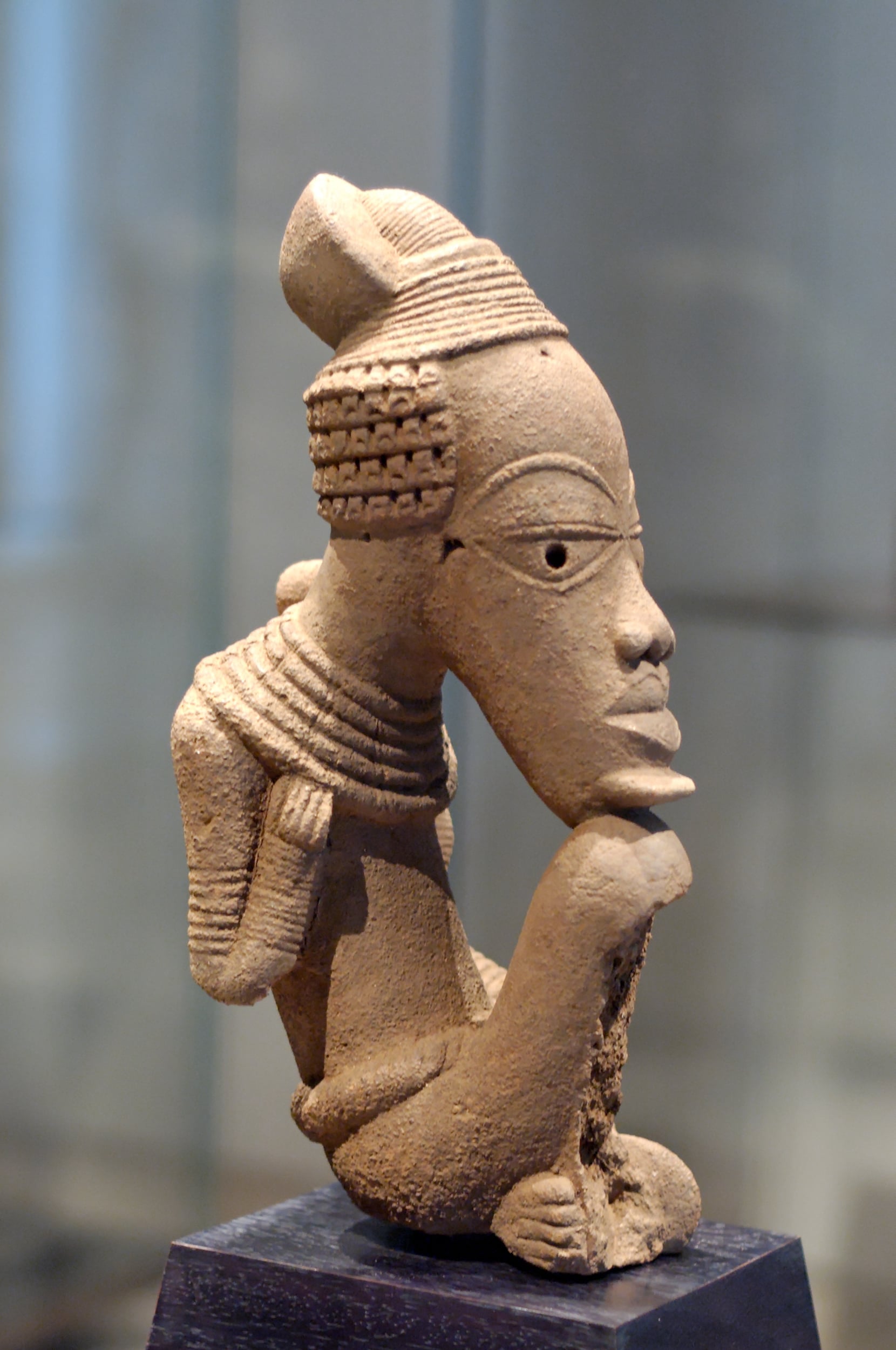
1046 BC
Zhou dynasty
The Zhou force (led by King Wu of Zhou) overthrow the last king of Shang dynasty; Zhou dynasty established in China.
The Zhou dynasty was a royal dynasty of China (1046 BC – 256 BC) that followed the Shang dynasty. Having lasted 789 years, the Zhou dynasty was the longest dynastic regime in Chinese history. The military control of ancient China by the royal house, surnamed Ji, lasted from 1046 until 771 BC for a period known as the Western Zhou, and the political sphere of influence it created continued well into the Eastern Zhou period for another 500 years. The establishment date of 1046 BC is supported by the Xia–Shang–Zhou Chronology Project and David Pankenier, but David Nivison and Edward L. Shaughnessy date the establishment to 1045 BC.
During the Zhou dynasty, centralized power decreased throughout the Spring and Autumn period until the Warring States period in the last two centuries of the dynasty. In the latter period, the Zhou court had little control over its constituent states that were at war with each other until the Qin state consolidated power and formed the Qin dynasty in 221 BC. The Zhou dynasty had formally collapsed only 35 years earlier, although the dynasty had only nominal power at that point.
This period of Chinese history produced what many consider the zenith of Chinese bronzeware making.[8] The latter period of the Zhou dynasty is also famous for the beginnings of three major Chinese philosophies: Confucianism, Taoism and Legalism. The Zhou dynasty also spans the period in which the written script evolved from the oracle script and bronze script into the seal script, and then finally into an almost-modern form with the use of an archaic clerical script that emerged during the late Warring States period.
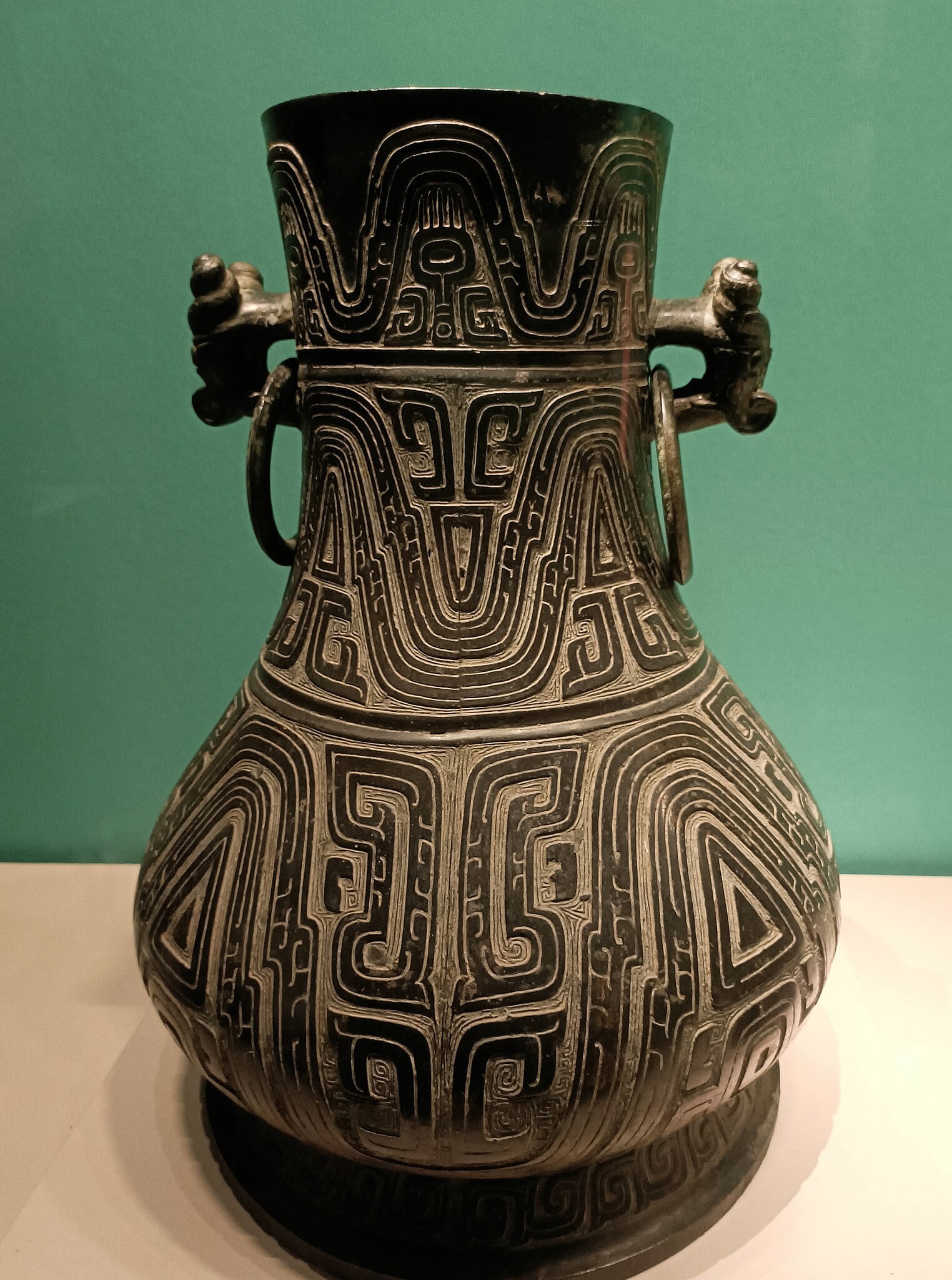
1050 BC
The Phoenician alphabet is created
The Phoenician alphabet is an alphabet (more specifically, an abjad) known in modern times from the Canaanite and Aramaic inscriptions found across the Mediterranean region. The name comes from the Phoenician civilization.
The Phoenician alphabet is also called the Early Linear script (in a Semitic context, not connected to Minoan writing systems), because it is an early development of the Proto- or Old Canaanite or Proto-Sinaitic script, into a linear, purely alphabetic script, also marking the transfer from a multi-directional writing system, where a variety of writing directions occurred, to a regulated horizontal, right-to-left script. Its immediate predecessor, the Proto-Canaanite, Old Canaanite or Proto-Sinaitic script, used in the final stages of the Late Bronze Age, first in either Egypt or Canaan and then in the Syro-Hittite kingdoms, is the oldest fully matured alphabet, and it was derived from Egyptian hieroglyphs.
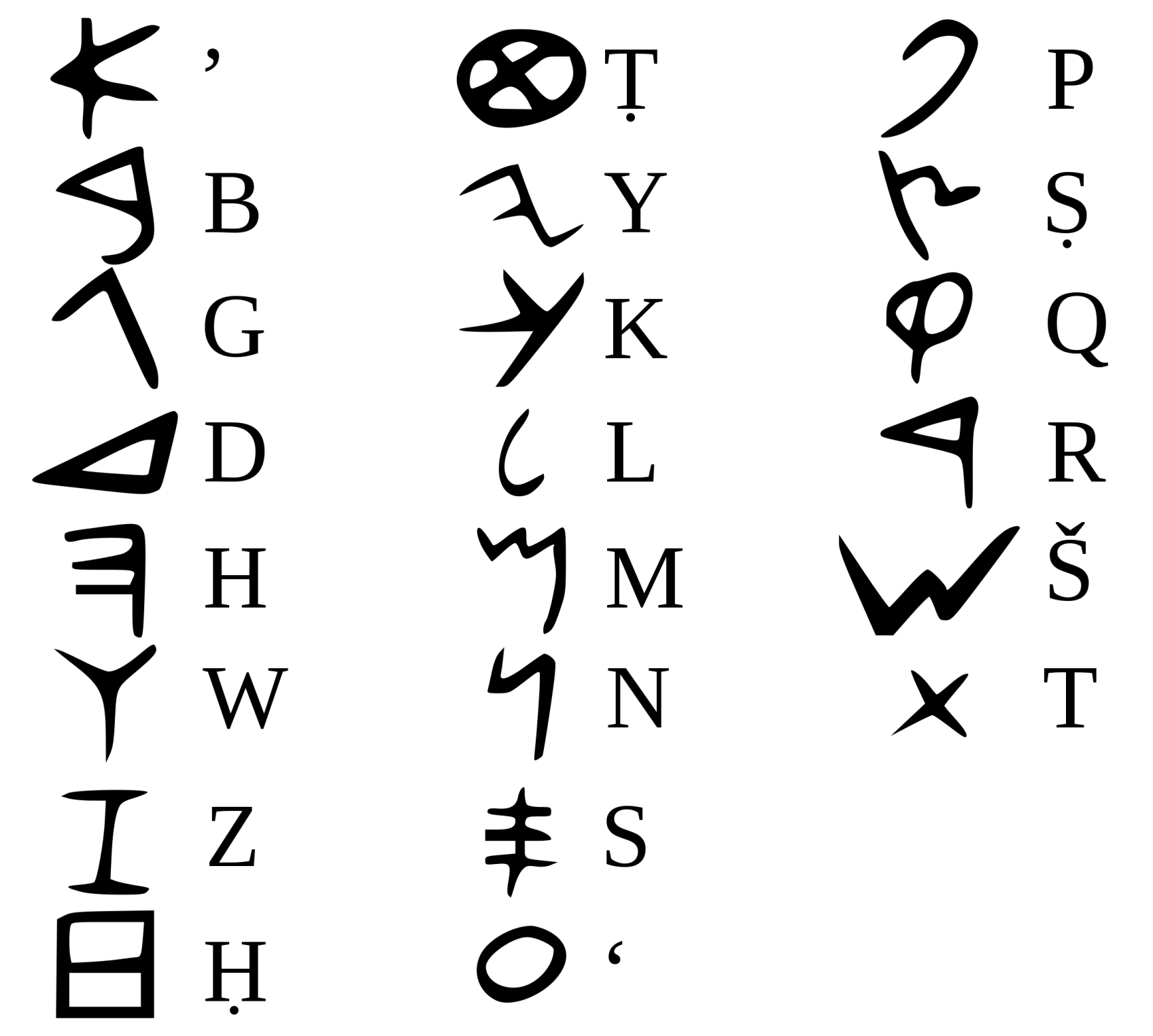
1100 BC
Use of Iron spreads
Iron is a chemical element; it has symbol Fe (from Latin ferrum 'iron') and atomic number 26. It is a metal that belongs to the first transition series and group 8 of the periodic table. It is, by mass, the most common element on Earth, forming much of Earth's outer and inner core. It is the fourth most common element in the Earth's crust, being mainly deposited by meteorites in its metallic state.

c. 1180 BC
Disintegration of Hittite Empire
The Hittites were an Anatolian Indo-European people who formed one of the first major civilizations of Bronze Age West Asia. Possibly originating from beyond the Black Sea, they settled in modern day Turkey in the early 2nd millennium BC. The Hittites formed a series of polities in north-central Anatolia, including the kingdom of Kussara (before 1750 BC), the Kanesh or Nesha kingdom (c. 1750–1650 BC), and an empire centered on Hattusa (around 1650 BC). Known in modern times as the Hittite Empire, it reached its height during the mid-14th century BC under Šuppiluliuma I, when it encompassed most of Anatolia and parts of the northern Levant and Upper Mesopotamia.
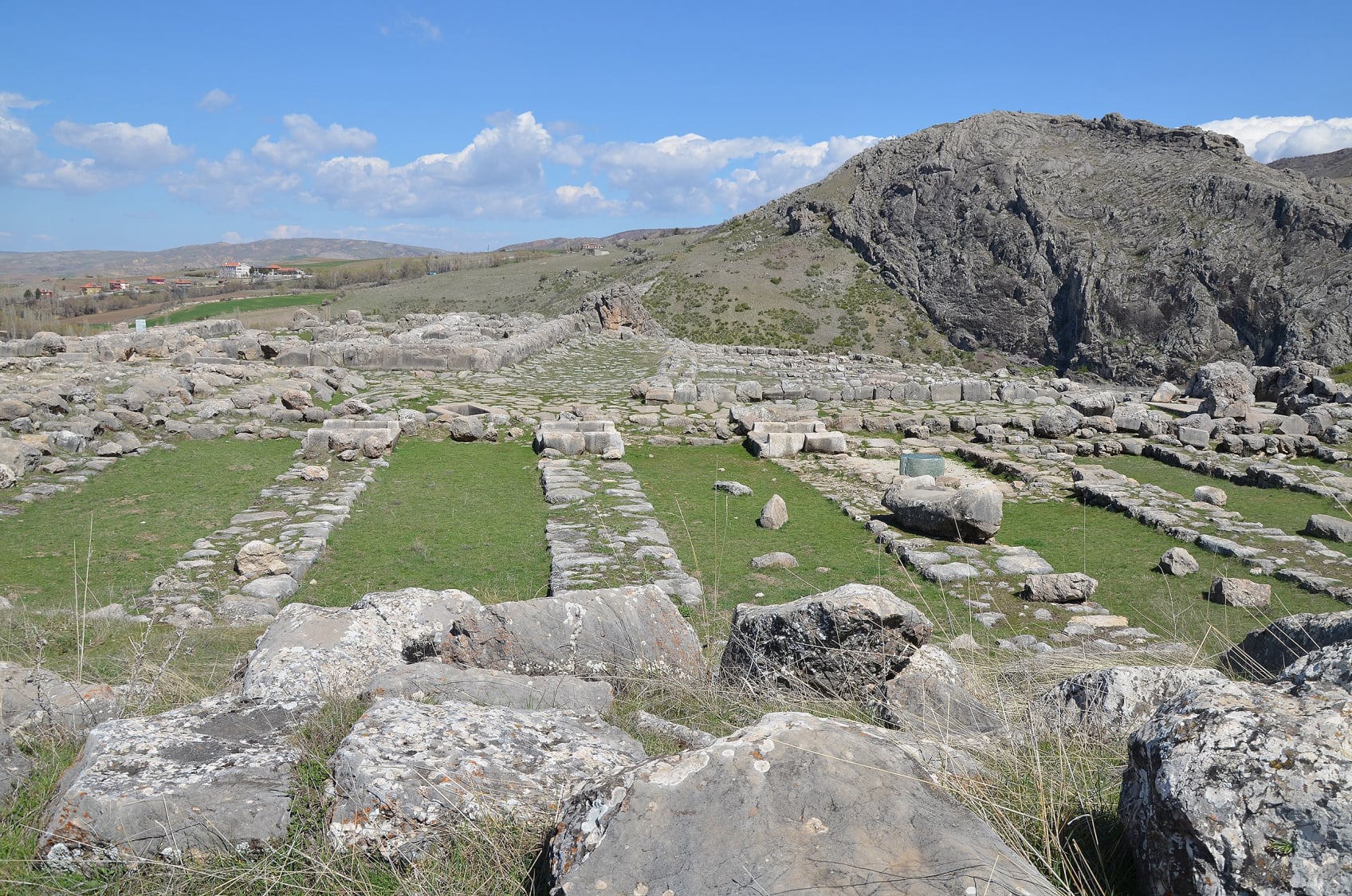
1200 BC – 1150 BC
Late Bronze Age collapse
The Late Bronze Age collapse was a time of widespread societal collapse during the 12th century BCE associated with environmental change, mass migration, and the destruction of cities. The collapse affected a large area of the Eastern Mediterranean (North Africa and Southeast Europe) and the Near East, in particular Egypt, eastern Libya, the Balkans, the Aegean, Anatolia, and, to a lesser degree, the Caucasus. It was sudden, violent, and culturally disruptive for many Bronze Age civilizations, and it brought a sharp economic decline to regional powers, notably ushering in the Greek Dark Ages.
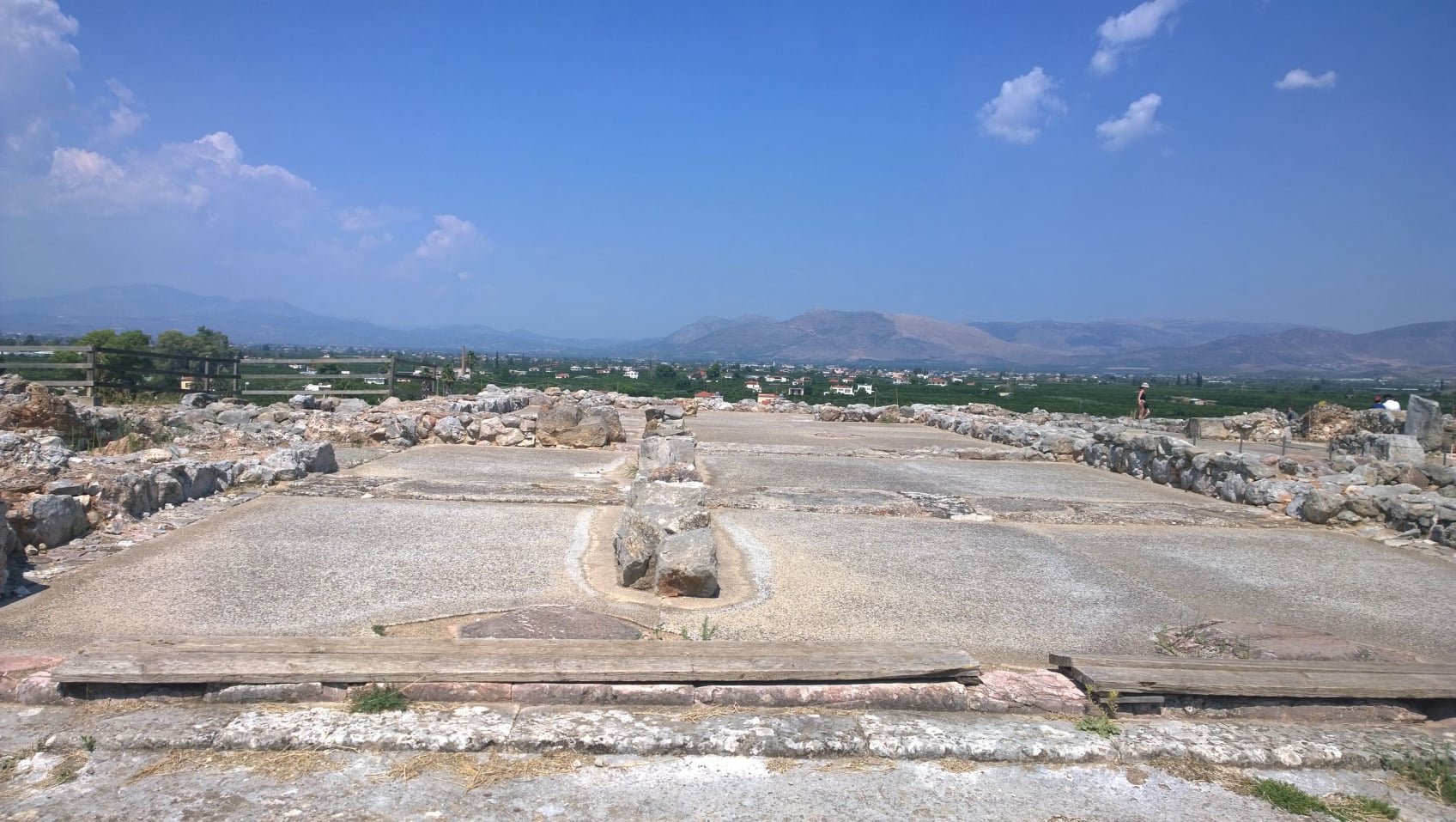
1200 BC
The Hallstatt culture begins.
The Hallstatt culture was the predominant Western and Central European archaeological culture of the Late Bronze Age (Hallstatt A, Hallstatt B) from the 12th to 8th centuries BC and Early Iron Age Europe (Hallstatt C, Hallstatt D) from the 8th to 6th centuries BC, developing out of the Urnfield culture of the 12th century BC (Late Bronze Age) and followed in much of its area by the La Tène culture. It is commonly associated with Proto-Celtic speaking populations.
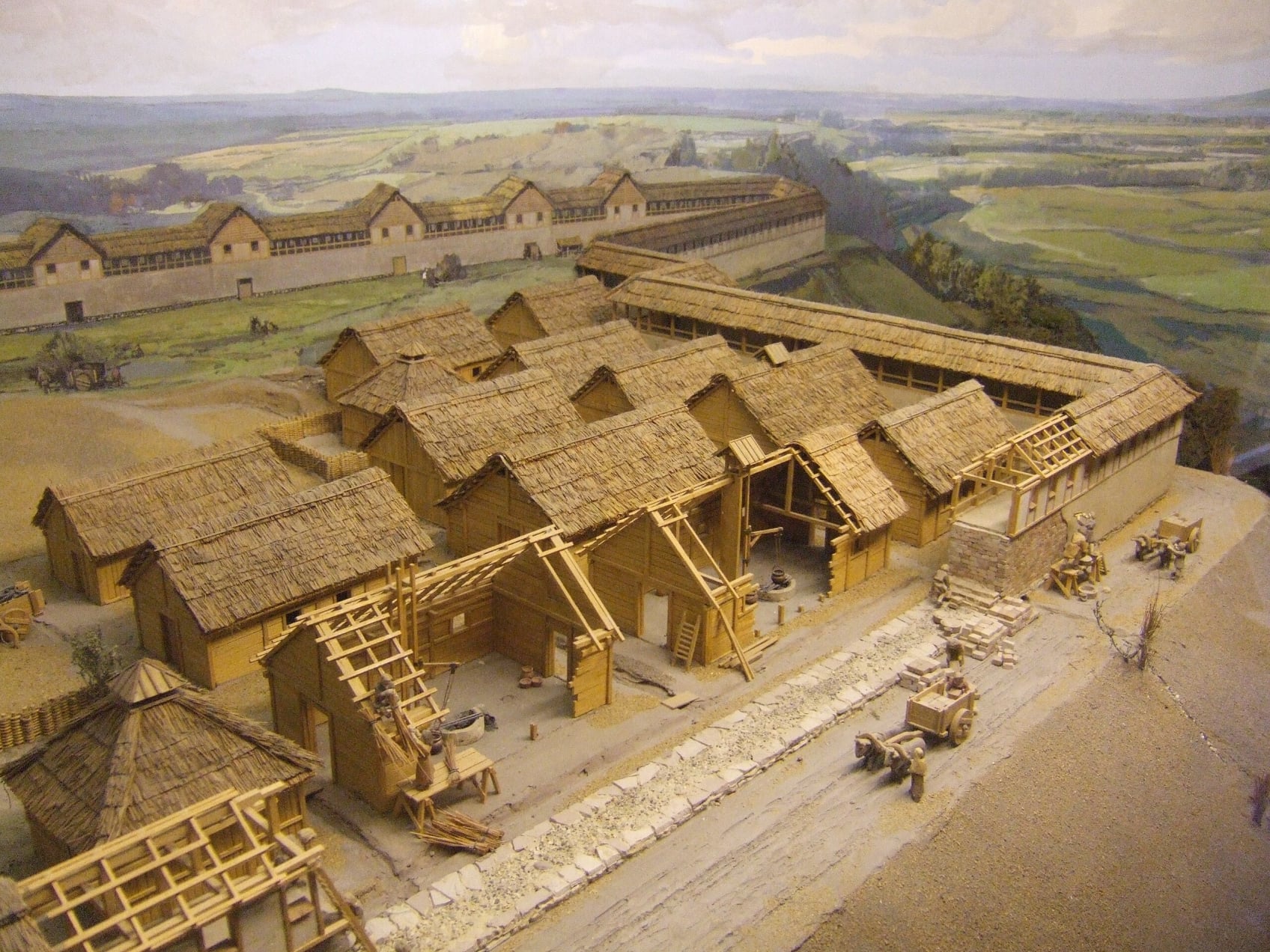
c. 1400 BC
Oldest known song with notation.
The Hurrian songs are a collection of music inscribed in cuneiform on clay tablets excavated from the ancient Amorite-Canaanite city of Ugarit, a headland in northern Syria, which date to approximately 1400 BC. One of these tablets, which is nearly complete, contains the Hurrian Hymn to Nikkal (also known as the Hurrian cult hymn or "a zaluzi to the gods," or simply "h.6"), making it the oldest surviving substantially complete work of notated music in the world. While the composers' names of some of the fragmentary pieces are known, h.6 is an anonymous work.
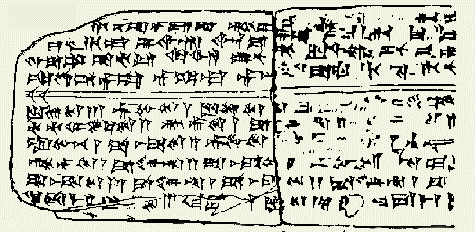
1500 BC – 400 BC
Olmecs
Olmec civilization flourishes in Pre-Columbian Mexico, during Mesoamerica's Formative period.
The Olmecs were the earliest known major Mesoamerican civilization. Following a progressive development in Soconusco, they occupied the tropical lowlands of the modern-day Mexican states of Veracruz and Tabasco. It has been speculated that the Olmecs derived in part from the neighboring Mokaya or Mixe–Zoque cultures.
The Olmecs flourished during Mesoamerica's formative period, dating roughly from as early as 1200 BCE to about 400 BCE. Pre-Olmec cultures had flourished since about 2500 BCE, but by 1200 BCE, early Olmec culture had emerged, centered on the San Lorenzo Tenochtitlán site near the coast in southeast Veracruz. They were the first Mesoamerican civilization and laid many of the foundations for the civilizations that followed. Among other "firsts", the Olmec appeared to practice ritual bloodletting and played the Mesoamerican ballgame, hallmarks of nearly all subsequent Mesoamerican societies. The aspect of the Olmecs most familiar now is their artwork, particularly the colossal heads. The Olmec civilization was first defined through artifacts which collectors purchased on the pre-Columbian art market in the late 19th and early 20th centuries. Olmec artworks are considered among ancient America's most striking.
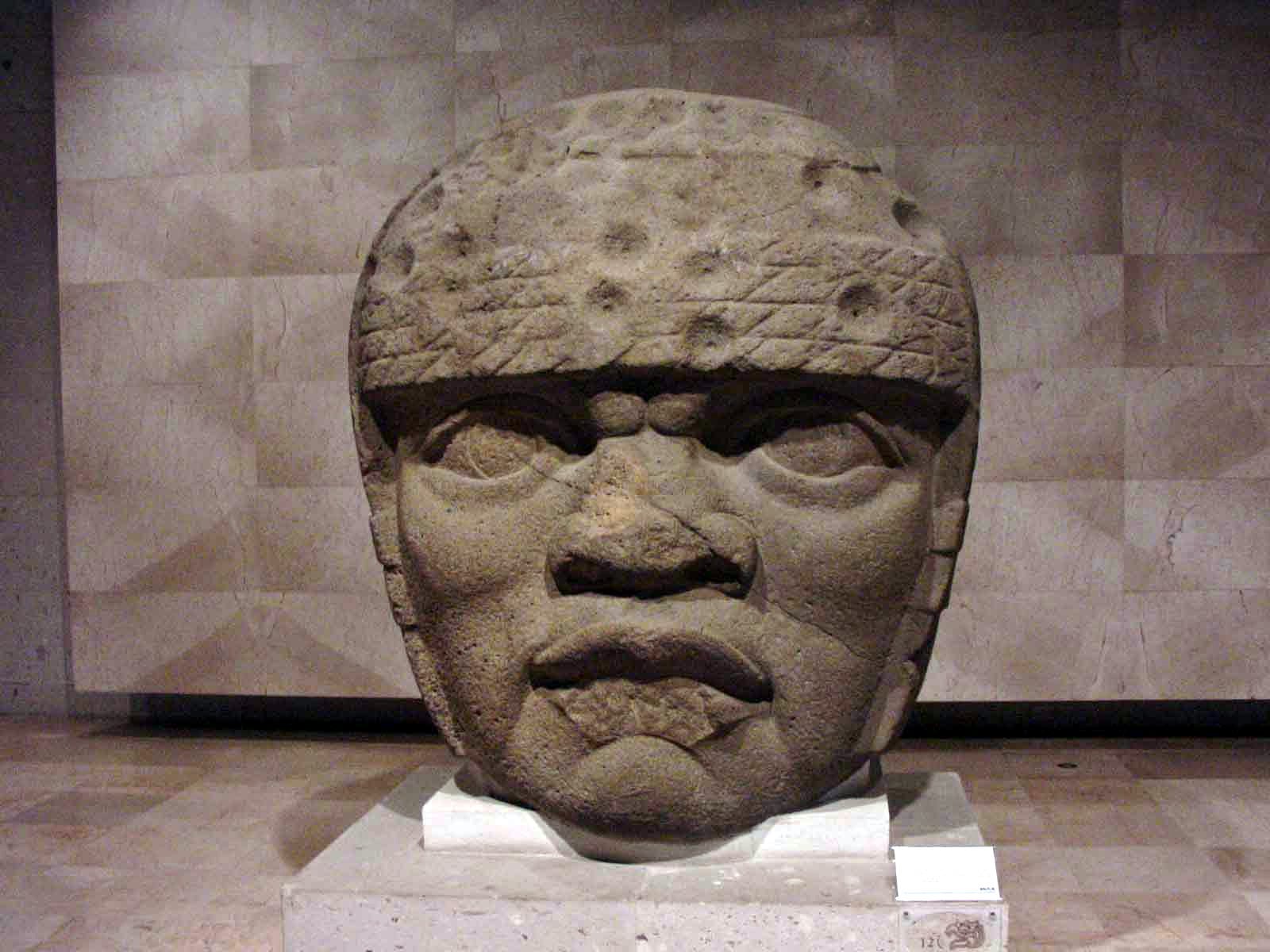
1500 BC
Composition of the Rigveda is completed.
The Rigveda or Rig Veda (Sanskrit: ऋग्वेद ṛgveda, from ṛc "praise" and veda "knowledge") is an ancient Indian collection of Vedic Sanskrit hymns (sūktas). It is one of the four sacred canonical Hindu texts (śruti) known as the Vedas. Only one Shakha of the many survive today, namely the Śakalya Shakha. Much of the contents contained in the remaining Shakhas are now lost or are not available in the public forum. Rigveda Samhita was composed in the northwestern region of the Indian subcontinent (present day India, Afghanistan and Pakistan).
The Rigveda is the oldest known Vedic Sanskrit text. Its early layers are among the oldest extant texts in any Indo-European language. The sounds and texts of the Rigveda have been orally transmitted since the 2nd millennium BCE. Philological and linguistic evidence indicates that the bulk of the Rigveda Samhita was composed in the northwestern region of the Indian subcontinent (see Rigvedic rivers), most likely between c. 1500 and 1000 BCE, although a wider approximation of c. 1900–1200 BCE has also been given.
The text is layered, consisting of the Samhita, Brahmanas, Aranyakas and Upanishads. The Rigveda Samhita is the core text and is a collection of 10 books (maṇḍalas) with 1,028 hymns (sūktas) in about 10,600 verses (called ṛc, eponymous of the name Rigveda). In the eight books – Books 2 through 9 – that were composed the earliest, the hymns predominantly discuss cosmology, rites required to earn the favour of the gods, and rituals, as well as praise deities. The more recent books (Books 1 and 10) in part also deal with philosophical or speculative questions, virtues such as dāna (charity) in society, questions about the origin of the universe and the nature of the divine, and other metaphysical issues in their hymns.
Some of its verses continue to be recited during Hindu prayer and celebration of rites of passage (such as weddings), making it probably the world's oldest religious text in continued use.
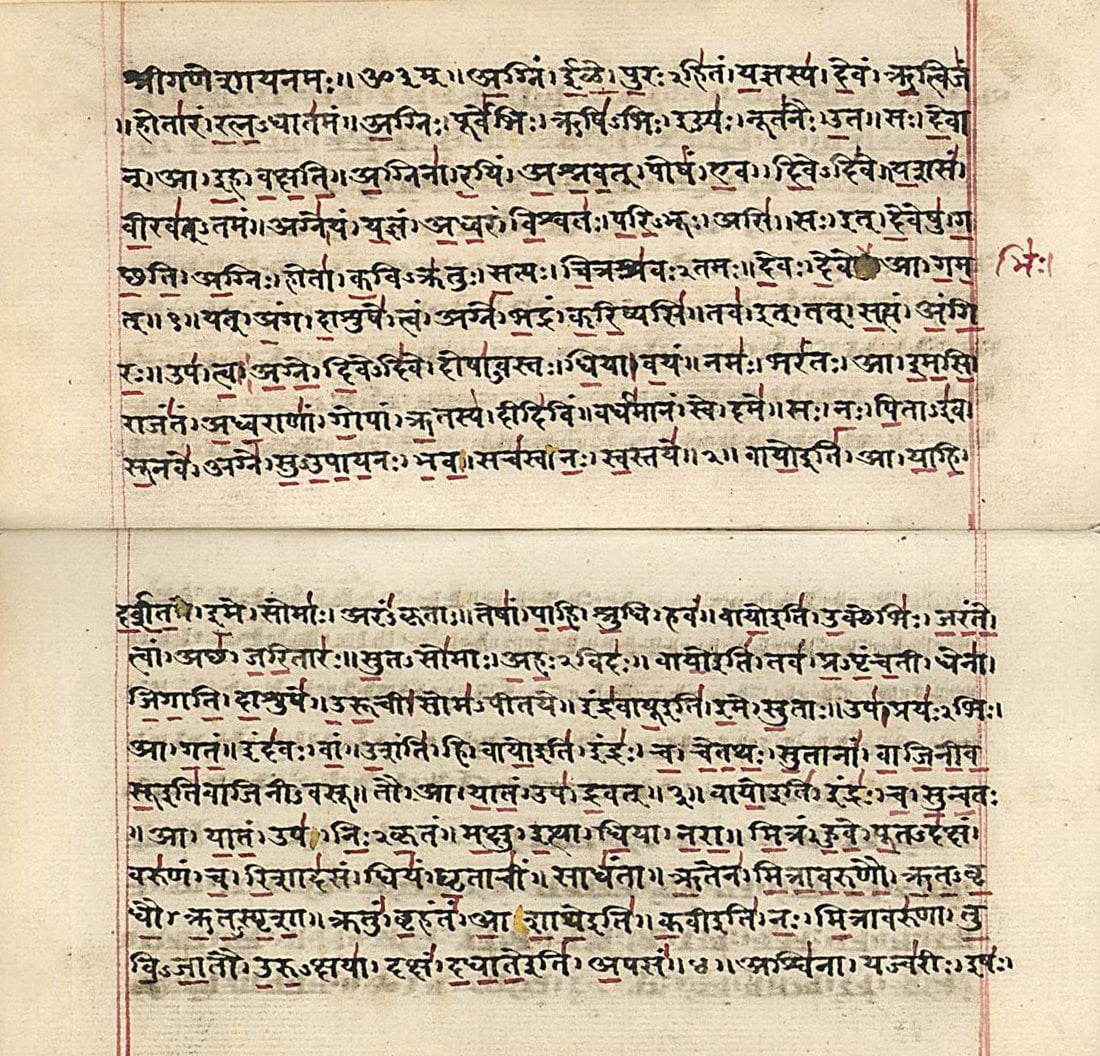
c. 1550 BC
The New Kingdom begins in Egypt.
The New Kingdom, also referred to as the Egyptian Empire, was the ancient Egyptian nation between the 16th century BC and the 11th century BC. This period of ancient Egyptian history covers the Eighteenth, Nineteenth, and Twentieth Dynasties. Through radiocarbon dating, the establishment of the New Kingdom has been placed between 1570 BC and 1544 BC. The New Kingdom followed the Second Intermediate Period and was succeeded by the Third Intermediate Period. It was the most prosperous time for the Egyptian people and marked the peak of Egypt's power.
In 1845, the concept of a "New Kingdom" as one of three "golden ages" was coined by German scholar Baron von Bunsen; the original definition would evolve significantly throughout the 19th and 20th centuries. The later part of this period, under the Nineteenth Dynasty (1295–1189 BC) and the Twentieth Dynasty (1189–1069 BC), is also known as the Ramesside period. It is named after the eleven pharaohs who took the name Ramesses, after Ramesses I, the founder of the Nineteenth Dynasty.
Possibly as a result of the foreign rule of the Hyksos during the Second Intermediate Period, the New Kingdom saw a historic expansion into the Levant, thus marking Egypt's greatest territorial extent. Similarly, in response to attacks by the Kushites, who led raids into Egypt during the Second Intermediate Period, the rulers of the New Kingdom felt compelled to expand far into Nubia and to hold wider territories in the Near East, particularly on the Levantine frontier.
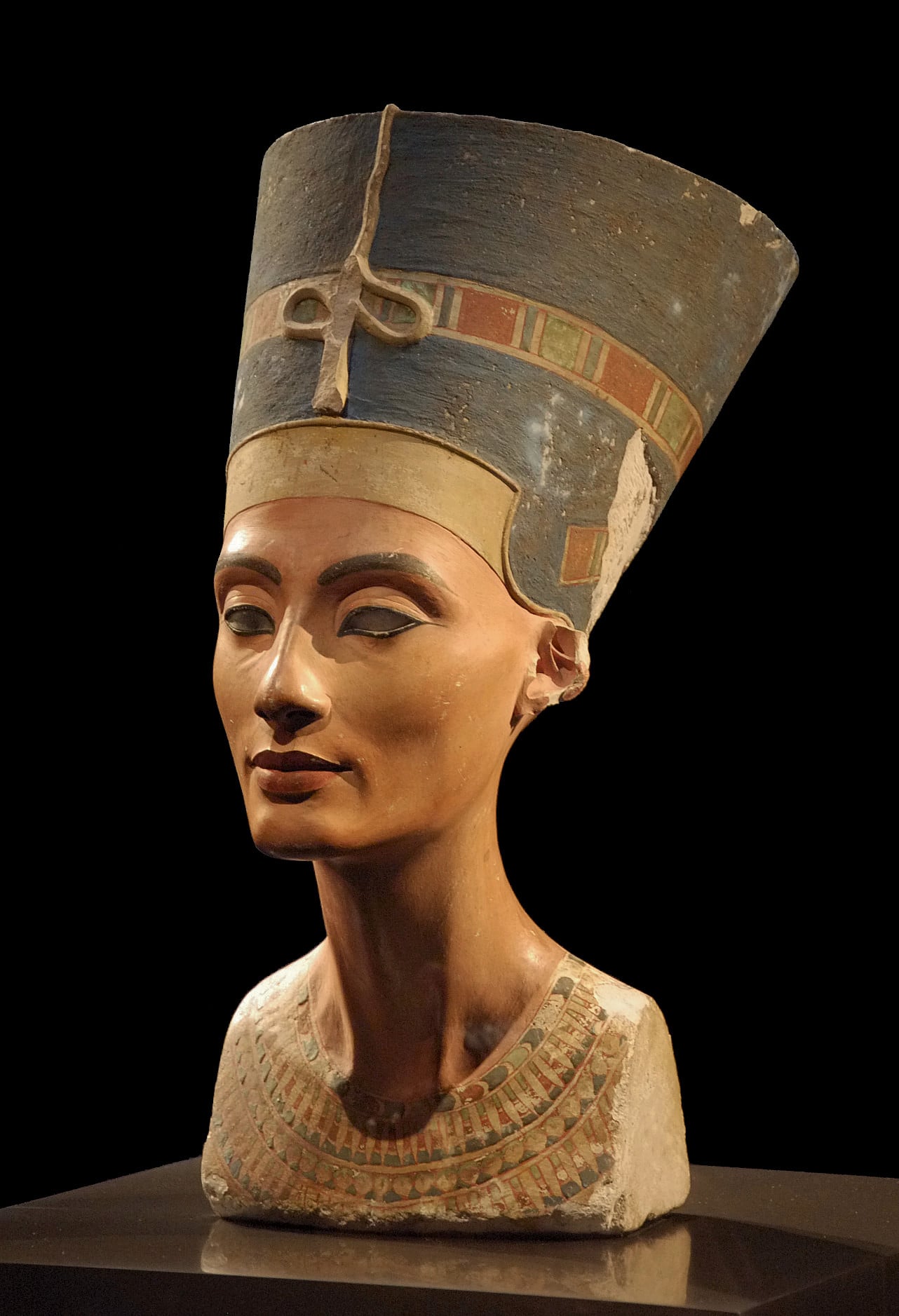
1600 BC
Shang dynasty
The Shang dynasty (Chinese: 商朝; pinyin: Shāng cháo), also known as the Yin dynasty (Chinese: 殷代; pinyin: Yīn dài), was a Chinese royal dynasty that ruled in the Yellow River valley during the second millennium BC, traditionally succeeding the Xia dynasty and followed by the Western Zhou dynasty. The classic account of the Shang comes from texts such as the Book of Documents, Bamboo Annals and Records of the Grand Historian. Modern scholarship dates the dynasty between the 16th to 11th centuries BC, with more agreement surrounding the end date than beginning date.
The Shang dynasty is the earliest dynasty of traditional Chinese history firmly supported by archaeological evidence. Excavation at the last Shang capital Yinxu, near modern-day Anyang, uncovered eleven major royal tombs and the foundations of palaces and ritual sites, containing weapons of war and remains from both animal and human sacrifices. Tens of thousands of bronze, jade, stone, bone, and ceramic artifacts have been found.
The Anyang site has yielded the earliest known body of Chinese writing, mostly divinations inscribed on oracle bones – turtle shells, ox scapulae, or other bones. More than 20,000 were discovered in the initial scientific excavations during the 1920s and 1930s, and over four times as many have been found since. The inscriptions provide critical insight into many topics from the politics, economy, and religious practices to the art and medicine of this early stage of Chinese civilization.
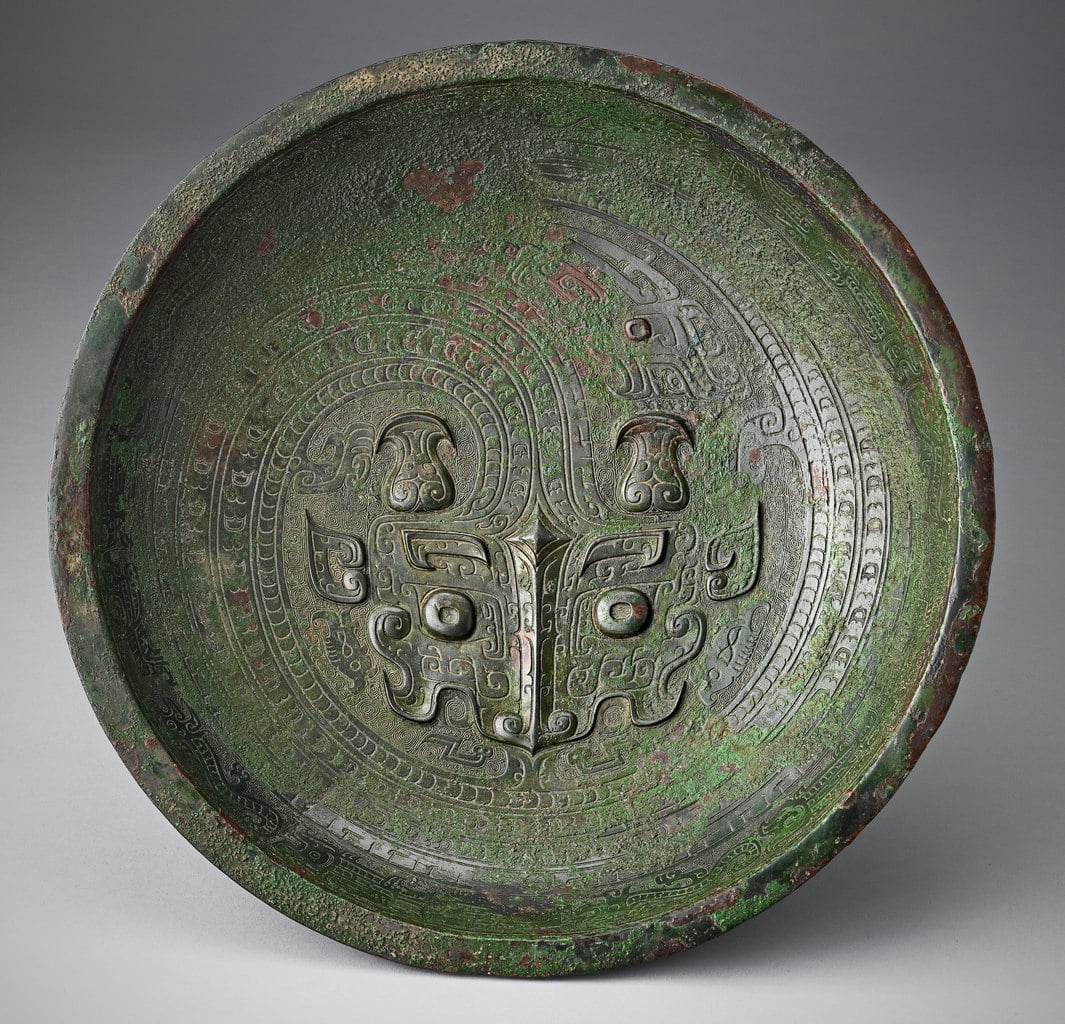
1600 BC
Minoan eruption
Minoan eruption destroys Akrotiri and causes damage to some Minoan sites in eastern Crete.
The Minoan eruption was a catastrophic volcanic eruption that devastated the Aegean island of Thera (also called Santorini) circa 1600 BCE. It destroyed the Minoan settlement at Akrotiri, as well as communities and agricultural areas on nearby islands and the coast of Crete with subsequent earthquakes and paleotsunamis. With a Volcanic Explosivity Index (VEI) of between 6 and 7, it resulted in the ejection of approximately 28–41 km (6.7–9.8 cu mi) of dense-rock equivalent (DRE), the eruption was one of the largest volcanic events in human history. Since tephra from the Minoan eruption serves as a marker horizon in nearly all archaeological sites in the Eastern Mediterranean, its precise date is of high importance and has been fiercely debated among archaeologists and volcanologists for decades, without coming to a definite conclusion.
Although there are no clear ancient records of the eruption, its plume and volcanic lightning may have been described in the Egyptian Tempest Stele. The Chinese Bamboo Annals reported unusual yellow skies and summer frost at the beginning of the Shang dynasty, which may have been a consequence of volcanic winter (similar to 1816, the Year Without a Summer, after the 1815 eruption of Mount Tambora).
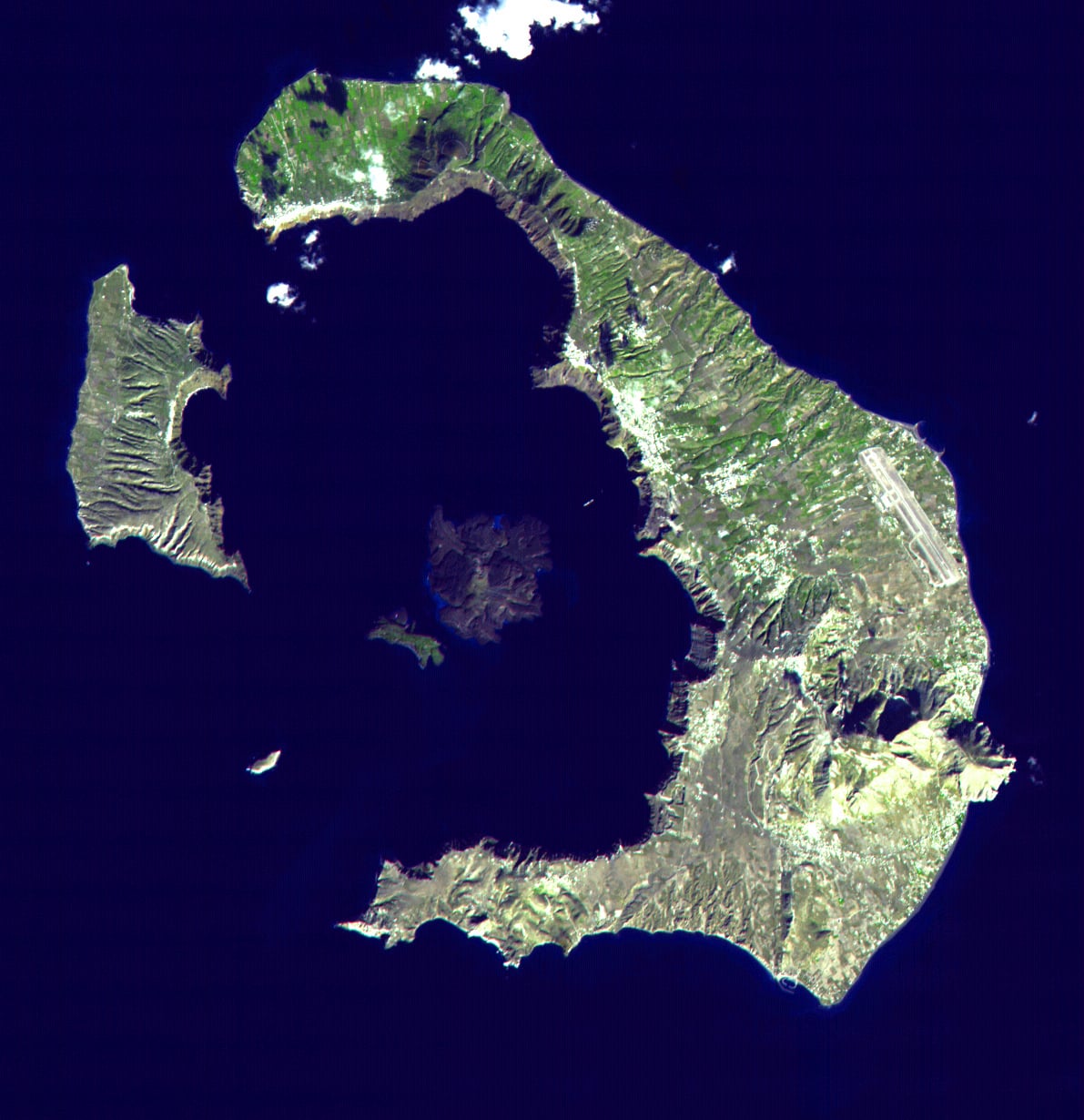
1700 BC
Cemetery H culture
Indus Valley Civilization comes to an end but is continued by the Cemetery H culture; The beginning of Poverty Point culture in North America.
The Cemetery H culture was a Bronze Age culture in the Punjab region in the northern part of the Indian subcontinent, from about 1900 BCE until about 1300 BCE. It is regarded as a regional form of the late phase of the Harappan (Indus Valley) civilisation (alongside the Jhukar culture of Sindh and Rangpur culture of Gujarat), but also as the manifestation of a first wave of Indo-Aryan migrations, predating the migrations of the proto-Rig Vedic people.
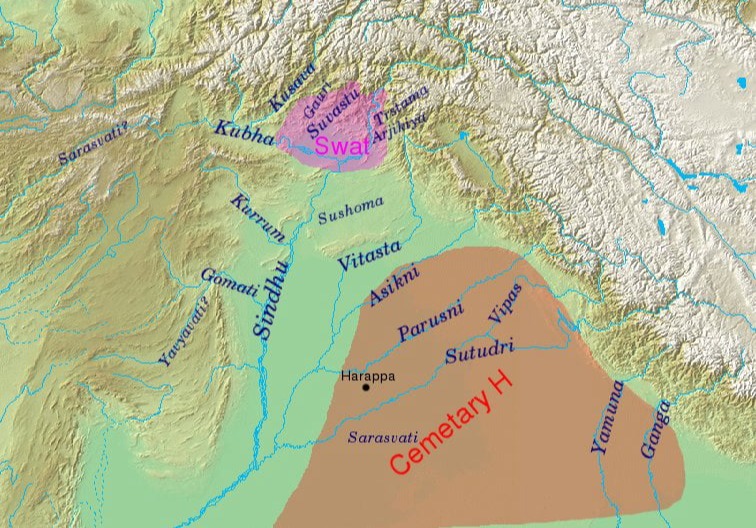
1700 BC – 1400 BC
The Proto-Sinaitic script is the oldest alphabet created in Egypt.
The earliest Proto-Sinaitic inscriptions are mostly dated to between the mid-19th (early date) and the mid-16th (late date) century BC.
The principal debate is between an early date, around 1850 BC, and a late date, around 1550 BC. The choice of one or the other date decides whether it is proto-Sinaitic or proto-Canaanite, and by extension locates the invention of the alphabet in Egypt or Canaan respectively.
However, the discovery of the two Wadi el-Hol inscriptions near the Nile River suggests that the script originated in Egypt. The evolution of Proto-Sinaitic and the small number of Proto-Canaanite inscriptions from the Bronze Age is based on rather scant epigraphic evidence; it is only with the Bronze Age collapse and the rise of new Semitic kingdoms in the Levant that Proto-Canaanite is clearly attested (Byblos inscriptions 10th–8th century BC, Khirbet Qeiyafa inscription c. 10th century BC).
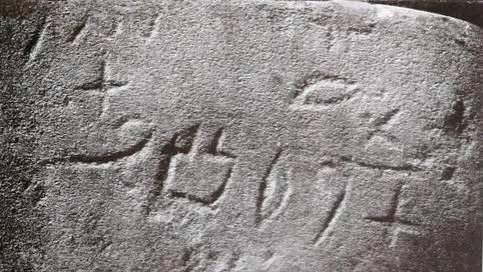
c. 1750 BC
Mycenaean civilization begins in mainland Greece.
Mycenaean Greece (or the Mycenaean civilization) was the last phase of the Bronze Age in Ancient Greece, spanning the period from approximately 1750 to 1050 BC. It represents the first advanced and distinctively Greek civilization in mainland Greece with its palatial states, urban organization, works of art, and writing system. The Mycenaeans were mainland Greek peoples who were likely stimulated by their contact with insular Minoan Crete and other Mediterranean cultures to develop a more sophisticated sociopolitical culture of their own. The most prominent site was Mycenae, after which the culture of this era is named. Other centers of power that emerged included Pylos, Tiryns, and Midea in the Peloponnese, Orchomenos, Thebes, and Athens in Central Greece, and Iolcos in Thessaly. Mycenaean settlements also appeared in Epirus, Macedonia, on islands in the Aegean Sea, on the south-west coast of Asia Minor, and on Cyprus, while Mycenaean-influenced settlements appeared in the Levant and Italy.
The Mycenaean Greeks introduced several innovations in the fields of engineering, architecture and military infrastructure, while trade over vast areas of the Mediterranean was essential for the Mycenaean economy. Their syllabic script, Linear B, offers the first written records of the Greek language, and their religion already included several deities that can also be found in the Olympic pantheon. Mycenaean Greece was dominated by a warrior elite society and consisted of a network of palace-centered states that developed rigid hierarchical, political, social, and economic systems. At the head of this society was the king, known as a wanax.
Mycenaean Greece perished with the collapse of Bronze Age culture in the eastern Mediterranean, to be followed by the Greek Dark Ages, a recordless transitional period leading to Archaic Greece where significant shifts occurred from palace-centralized to decentralized forms of socio-economic organization (including the extensive use of iron). Various theories have been proposed for the end of this civilization, among them the Dorian invasion or activities connected to the "Sea Peoples". Additional theories such as natural disasters and climatic changes have also been suggested. The Mycenaean period became the historical setting of much ancient Greek literature and mythology, including the Trojan Epic Cycle.
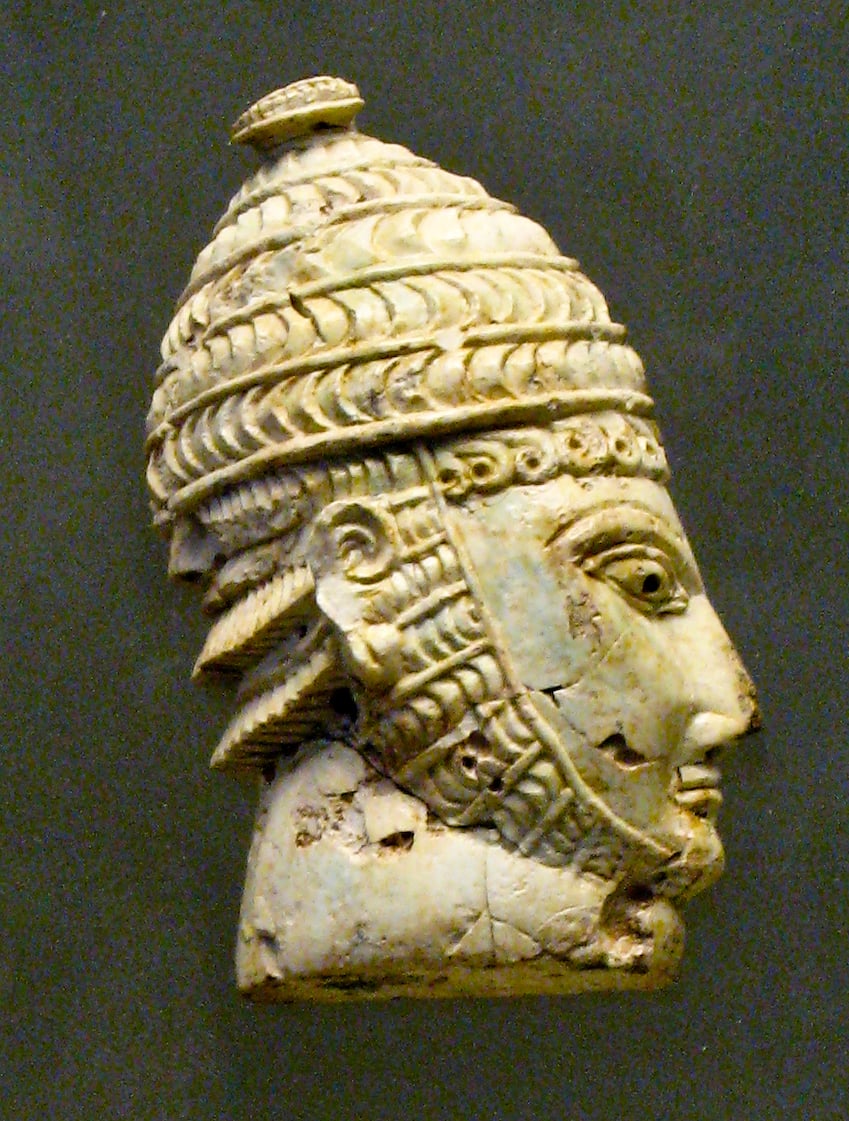
1780 BC
Oldest Record of Hammurabi's Code.
The Code of Hammurabi is a Babylonian legal text composed during 1755–1750 BC. It is the longest, best-organized, and best-preserved legal text from the ancient Near East. It is written in the Old Babylonian dialect of Akkadian, purportedly by Hammurabi, sixth king of the First Dynasty of Babylon. The primary copy of the text is inscribed on a basalt stele 2.25 m (7 ft 4+1⁄2 in) tall.
The stele was rediscovered in 1901 at the site of Susa in present-day Iran, where it had been taken as plunder six hundred years after its creation. The text itself was copied and studied by Mesopotamian scribes for over a millennium. The stele now resides in the Louvre Museum.
The top of the stele features an image in relief of Hammurabi with Shamash, the Babylonian sun god and god of justice. Below the relief are about 4,130 lines of cuneiform text: one fifth contains a prologue and epilogue in poetic style, while the remaining four fifths contain what are generally called the laws. In the prologue, Hammurabi claims to have been granted his rule by the gods "to prevent the strong from oppressing the weak". The laws are casuistic, expressed as "if ... then" conditional sentences. Their scope is broad, including, for example, criminal law, family law, property law, and commercial law.
Modern scholars responded to the Code with admiration at its perceived fairness and respect for the rule of law, and at the complexity of Old Babylonian society. There was also much discussion of its influence on the Mosaic Law. Scholars quickly identified lex talionis—the "eye for an eye" principle—underlying the two collections. Debate among Assyriologists has since centred around several aspects of the Code: its purpose, its underlying principles, its language, and its relation to earlier and later law collections.
Despite the uncertainty surrounding these issues, Hammurabi is regarded outside Assyriology as an important figure in the history of law and the document as a true legal code. The U.S. Capitol has a relief portrait of Hammurabi alongside those of other historic lawgivers. There are replicas of the stele in numerous institutions, including the headquarters of the United Nations in New York City and the Pergamon Museum in Berlin.
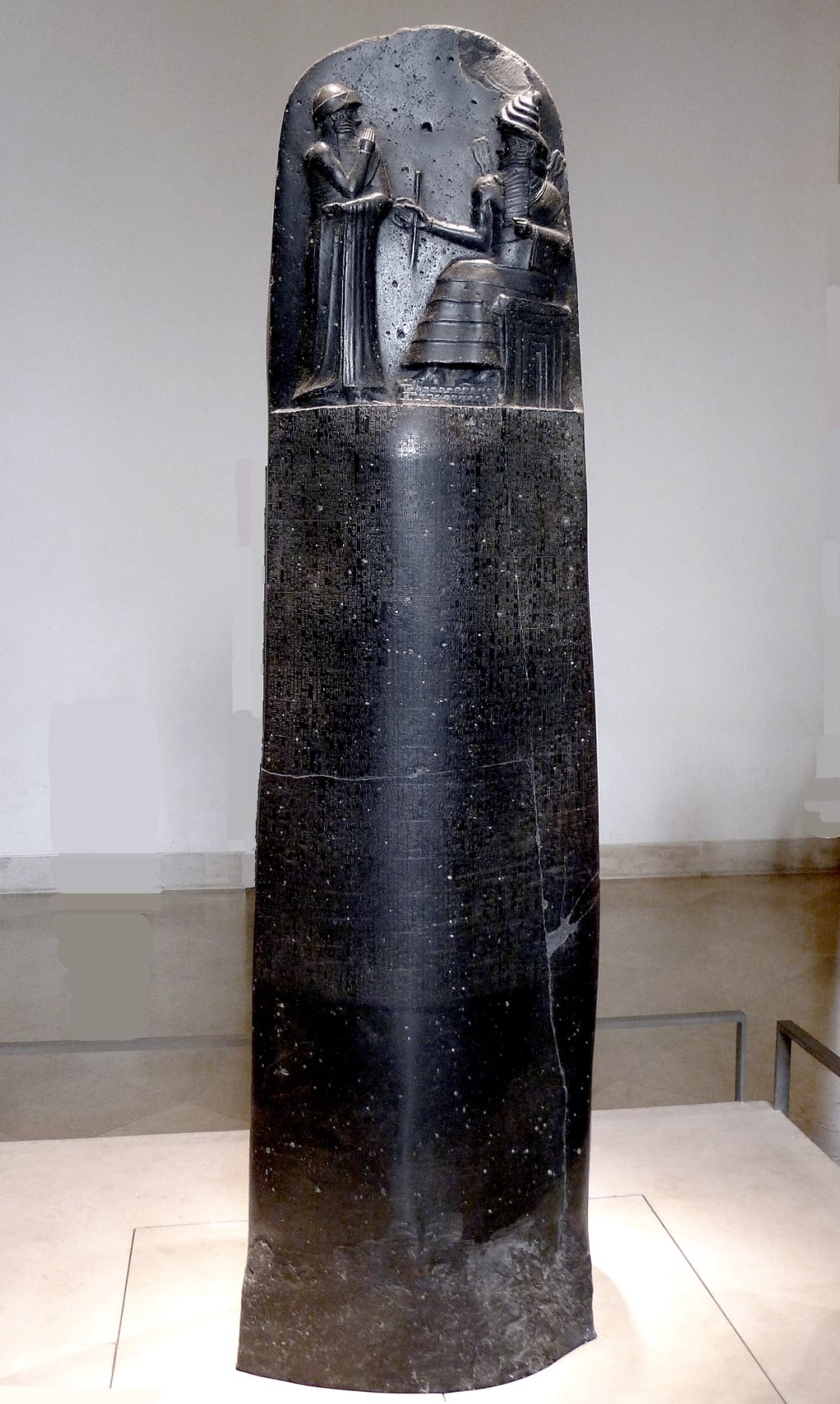
1800 BC
Epic of Gilgamesh
The Old Babylonian Epic of Gilgamesh constitutes the earliest complete version of that narrative.
The Epic of Gilgameshis an epic poem from ancient Mesopotamia. The literary history of Gilgamesh begins with five Sumerian poems about Bilgamesh (Sumerian for "Gilgamesh"), king of Uruk, dating from the Third Dynasty of Ur (c. 2100 BC). These independent stories were later used as source material for a combined epic in Akkadian. The first surviving version of this combined epic, known as the "Old Babylonian" version, dates back to the 18th century BC and is titled after its incipit, Shūtur eli sharrī ("Surpassing All Other Kings"). Only a few tablets of it have survived. The later Standard Babylonian version compiled by Sîn-lēqi-unninni dates from the 13th to the 10th centuries BC and bears the incipit Sha naqba īmuru ("He who Saw the Abyss", lit. '"He who Sees the Unknown"'). Approximately two-thirds of this longer, twelve-tablet version have been recovered. Some of the best copies were discovered in the library ruins of the 7th-century BC Assyrian king Ashurbanipal.
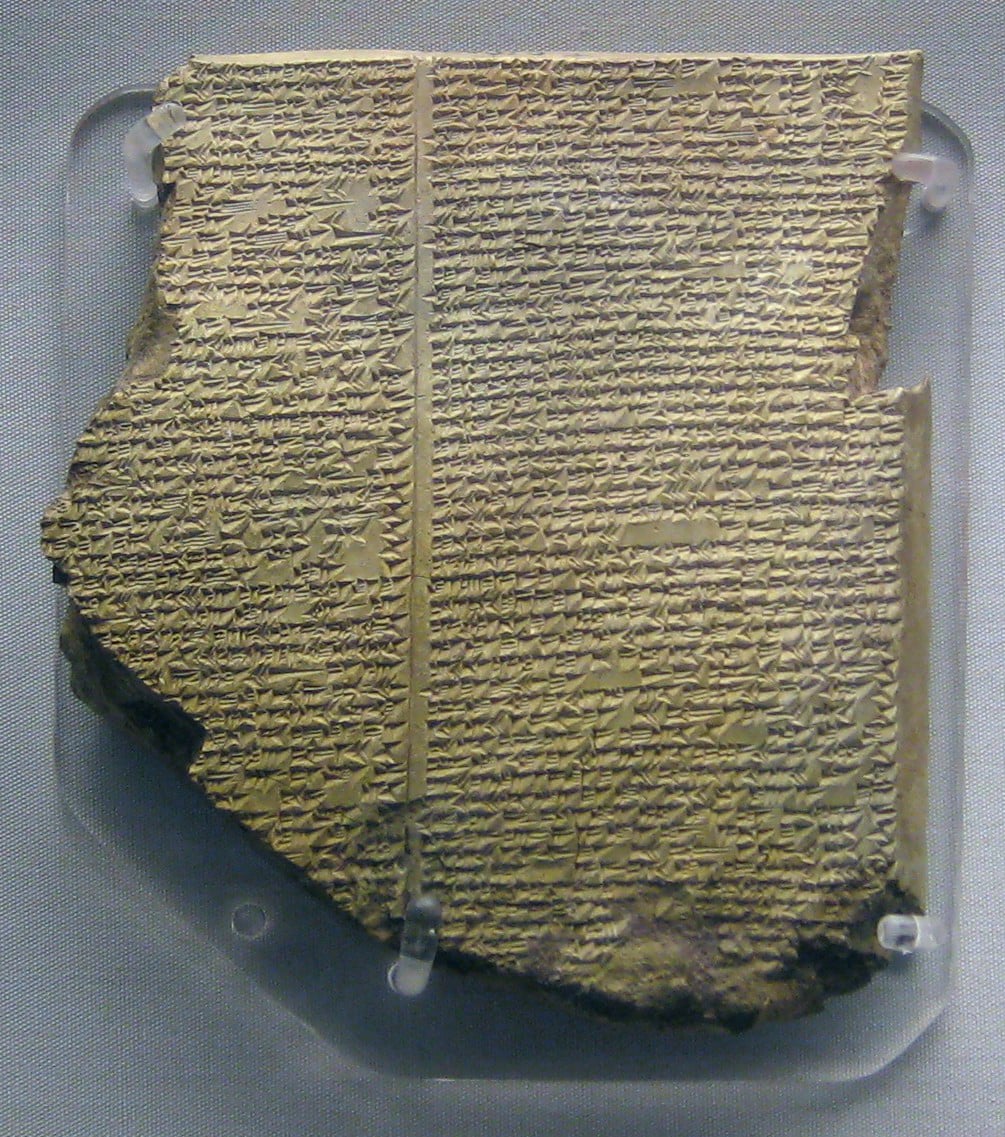
1800 BC
Alphabetic writing emerges.
The Proto-Sinaitic script is a Middle Bronze Age writing system known from a small corpus of about 30-40 inscriptions and fragments from Serabit el-Khadim in the Sinai Peninsula, as well as two inscriptions from Wadi el-Hol in Middle Egypt. Together with about 20 known Proto-Canaanite inscriptions, it is also known as Early Alphabetic, i.e. the earliest trace of alphabetic writing and the common ancestor of both the Ancient South Arabian script and the Phoenician alphabet, which led to many modern alphabets including the Greek alphabet. According to common theory, Canaanites or Hyksos who spoke a Canaanite language repurposed Egyptian hieroglyphs to construct a different script.
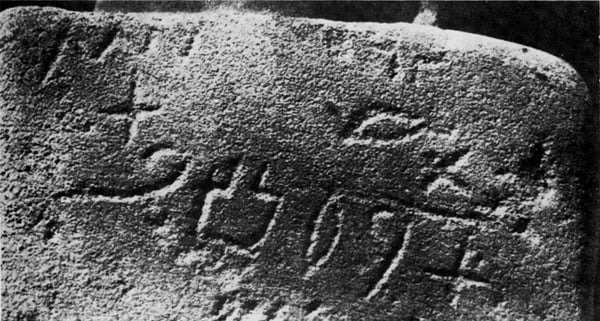
1900 BC
Erlitou culture begins in China.
The Erlitou culture (Chinese: 二里頭; pinyin: Èrlǐtóu) was an early Bronze Age society and archaeological culture. It existed in the Yellow River valley from approximately 1900 to 1500 BC. (A 2007 study of radiocarbon dating proposed a narrower date range of 1750 to 1530 BC.) The culture is named after Erlitou, an archaeological site in Yanshi, Henan. It was widely spread throughout Henan and Shanxi and later appeared in Shaanxi and Hubei. Most archaeologists consider Erlitou the first state-level society in China. Chinese archaeologists generally identify the Erlitou culture as the site of the Xia dynasty, but there is no firm evidence, such as writing, to substantiate such a linkage, as the earliest evidence of Chinese writing dates to the late Shang dynasty.

2055 BC
The Middle Kingdom begins in Egypt.
The Middle Kingdom of Egypt (also known as The Period of Reunification) is the period in the history of ancient Egypt following a period of political division known as the First Intermediate Period. The Middle Kingdom lasted from approximately 2040 to 1782 BC, stretching from the reunification of Egypt under the reign of Mentuhotep II in the Eleventh Dynasty to the end of the Twelfth Dynasty. The kings of the Eleventh Dynasty ruled from Thebes and the kings of the Twelfth Dynasty ruled from el-Lisht.
The concept of the Middle Kingdom as one of three golden ages was coined in 1845 by German Egyptologist Baron von Bunsen, and its definition evolved significantly throughout the 19th and 20th centuries. Some scholars also include the Thirteenth Dynasty of Egypt wholly into this period, in which case the Middle Kingdom would end around 1650 BC, while others only include it until Merneferre Ay around 1700 BC, last king of this dynasty to be attested in both Upper and Lower Egypt. During the Middle Kingdom period, Osiris became the most important deity in popular religion. The Middle Kingdom was followed by the Second Intermediate Period of Egypt, another period of division that involved foreign rule of Lower Egypt by the Hyksos of West Asia.
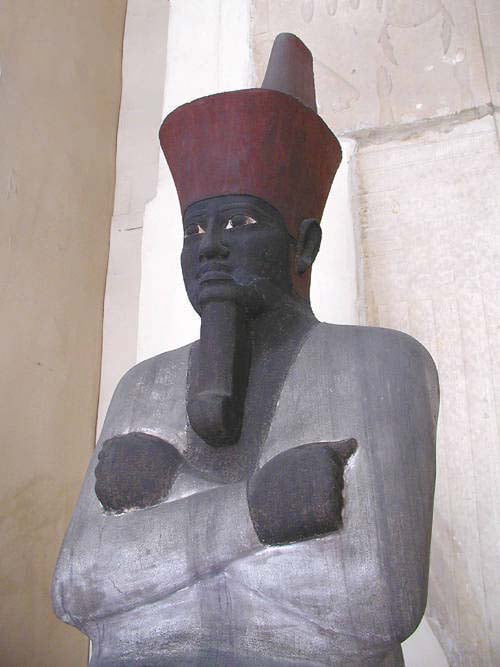
2115 BC
Hayk
Traditional date for the legendary foundation of Armenia by Hayk.
Hayk, also known as Hayk Nahapet, is the legendary patriarch and founder of the Armenian nation. His story is told in the History of Armenia attributed to the Armenian historian Moses of Chorene (Movses Khorenatsi) and in the Primary History traditionally attributed to Sebeos. Fragments of the legend of Hayk are also preserved in the works of other authors, as well as in Armenian folk tradition.
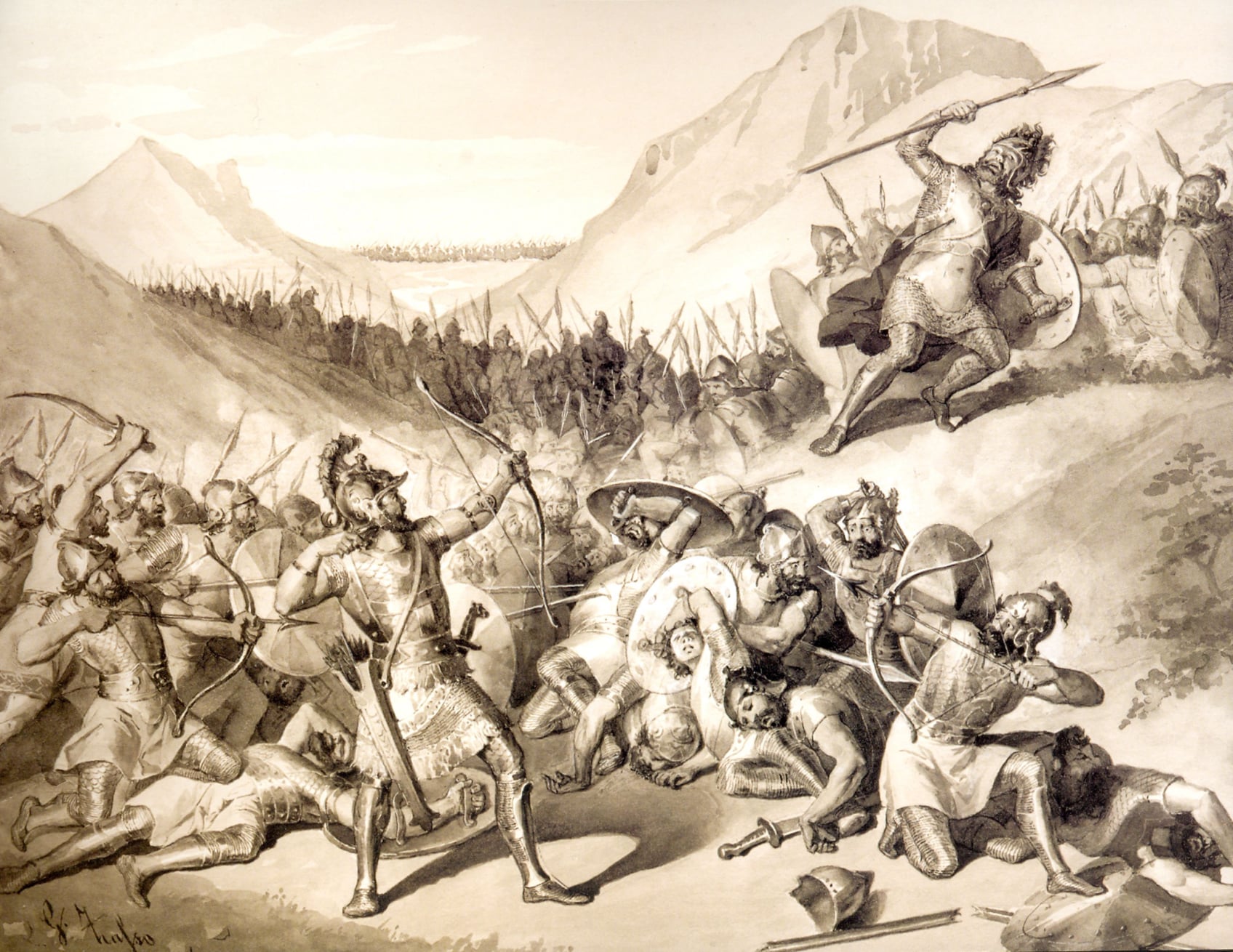
2200 BC
Completion of Stonehenge
Stonehenge is a prehistoric megalithic structure on Salisbury Plain in Wiltshire, England, two miles (3 km) west of Amesbury. It consists of an outer ring of vertical sarsen standing stones, each around 13 feet (4.0 m) high, seven feet (2.1 m) wide, and weighing around 25 tons, topped by connecting horizontal lintel stones. Inside is a ring of smaller bluestones. Inside these are free-standing trilithons, two bulkier vertical sarsens joined by one lintel. The whole monument, now ruinous, is aligned towards the sunrise on the summer solstice and sunset on the winter solstice. The stones are set within earthworks in the middle of the densest complex of Neolithic and Bronze Age monuments in England, including several hundred tumuli (burial mounds).
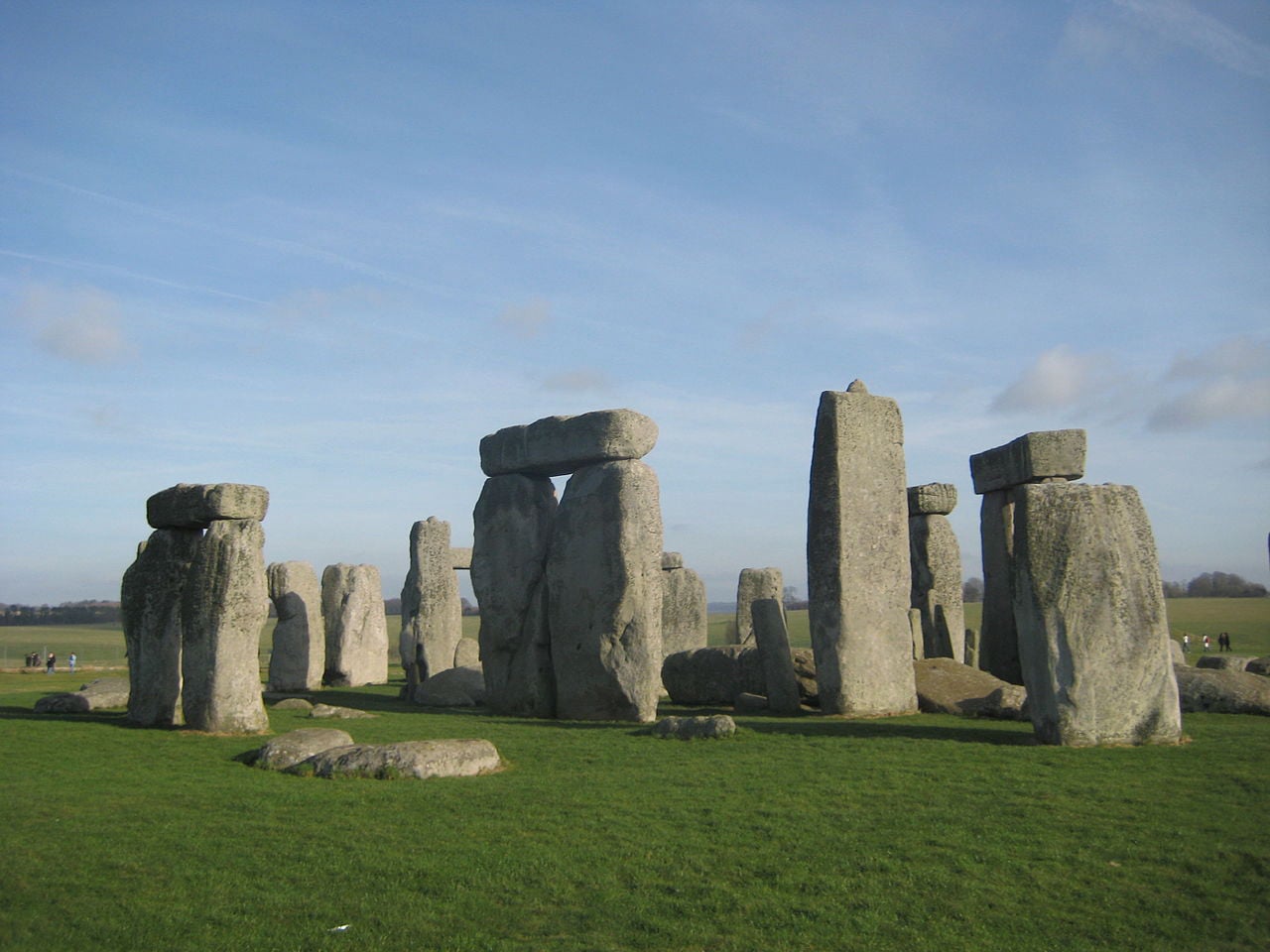
2200 BC – 2100 BC
4.2-kiloyear event
4.2-kiloyear event: a severe aridification phase, likely connected to a Bond event, which was registered throughout most of North Africa, Middle East and continental North America. Related droughts very likely caused the collapse of the Old Kingdom in Egypt and the Akkadian Empire in Mesopotamia.
The 4.2-kiloyear (thousand years) BP aridification event (long-term drought), also known as the 4.2 ka event, was one of the most severe climatic events of the Holocene epoch. It defines the beginning of the current Meghalayan age in the Holocene epoch.
Starting around 2200 BC, it probably lasted the entire 22nd century BC. It has been hypothesised to have caused the collapse of the Old Kingdom in Egypt, the Akkadian Empire in Mesopotamia, and the Liangzhu culture in the lower Yangtze River area. The drought may also have initiated the collapse of the Indus Valley Civilisation, with some of its population moving southeastward to follow the movement of their desired habitat, as well as the migration of Indo-European-speaking people into India. Some scientists disagree with that conclusion, citing evidence that the event was not a global drought and did not happen in a clear timeline.
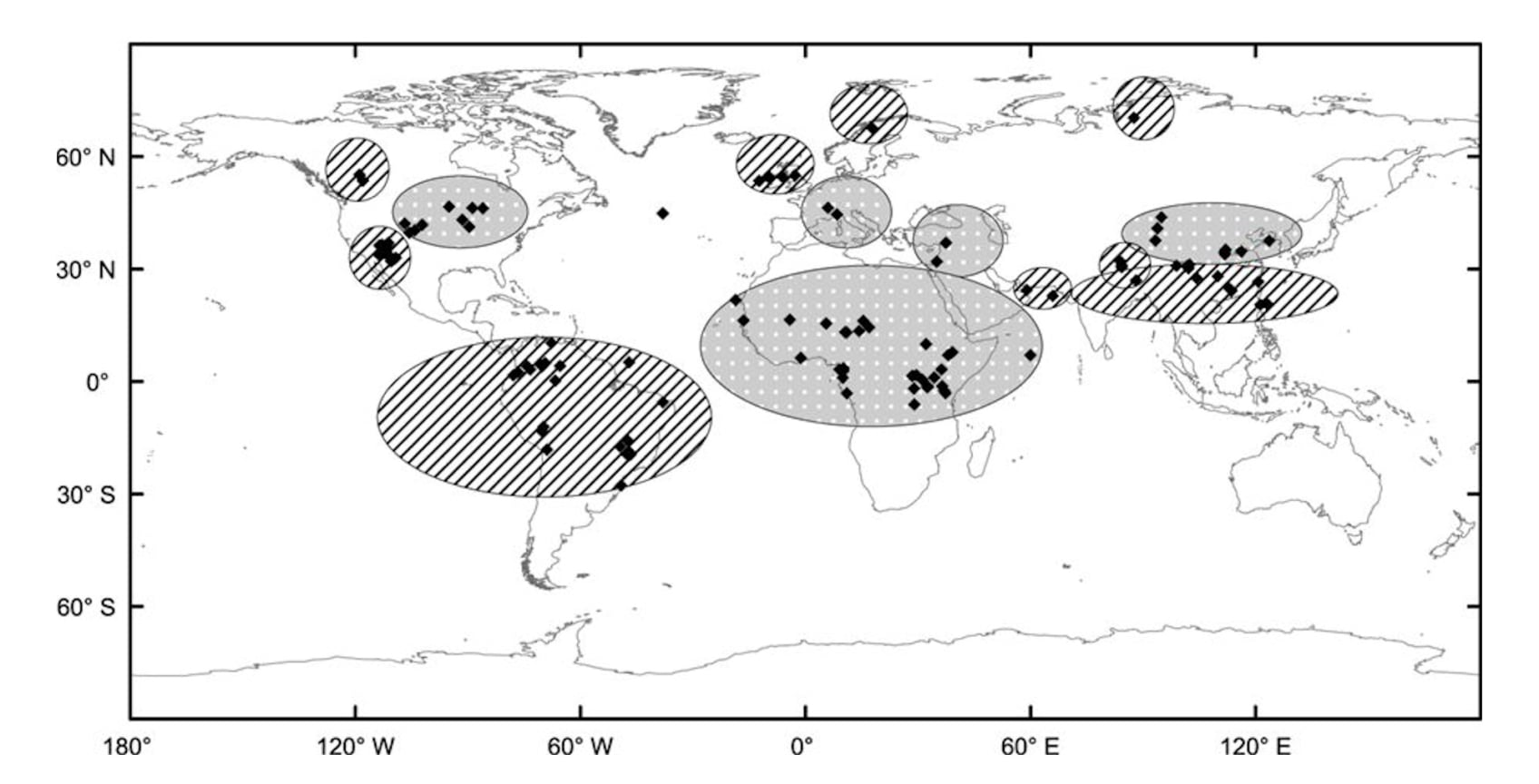
2250 BC
Staff God
Oldest known depiction of the Staff God, the oldest image of a god to be found in the Americas.
In "Southern Andean Iconographic Series" the Staff God pose is a religious icon and a standardized pose reminiscent in its way of the standardized poses in Byzantine art. The pose shows a front-facing human or human-like figure with vertical attributes, one in each hand. There is no uniform representation of a "Staff God". Dozens of variations of "Staff Gods" exist. Some scholars think that some of these personages are possible depictions of Viracocha or Thunupa (the Aymara weather god). However, there is little evidence to support the idea that these front-facing figures do represent deities. Some researchers point to their attributes and spatial organization which seem to indicate that they are ritual practitioners. Some attributes in their hands were identified as Qirus (Andean ritual cups), Snuff trays (used in ceremonial contexts) and Spear-throwers. The "rays" radiating or sprouting out of the faces of Tiwanaku front-facing figures appear to have approximately the value of an aureole. They may represent flows and distribution of energy. At the Wari site of Conchopata a vessel was found which shows a Staff God in which the "rays" can be interpreted as a Anadenanthera colubrina tree sprouting from its head whereas the circular elements do represent its seed pods.
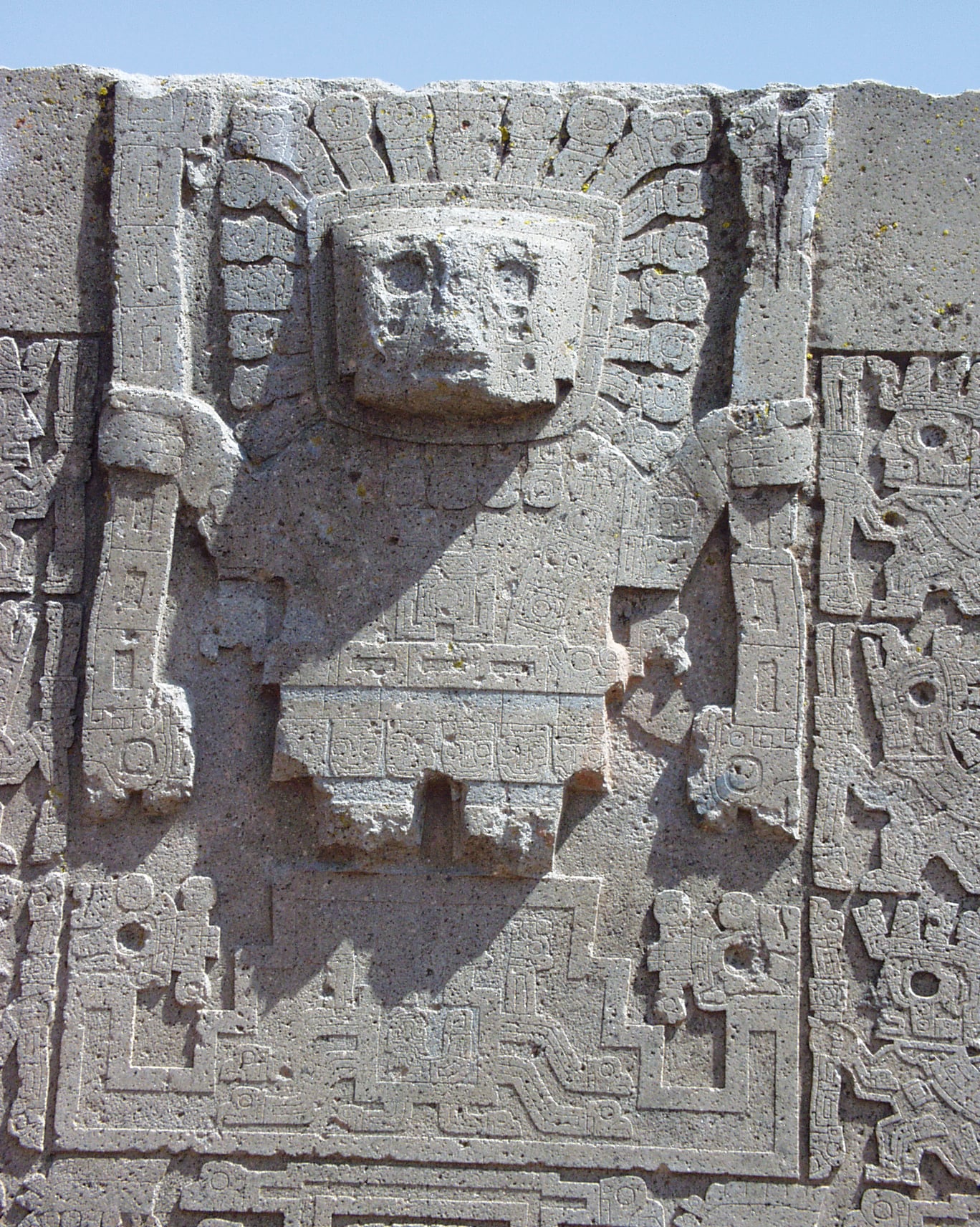
2291 BC
Pharaoh Teti
Pharaoh Teti is thought to be the earliest known victim of assassination.
Teti, less commonly known as Othoes, sometimes also Tata, Atat, or Athath in outdated sources, was the first king of the Sixth Dynasty of Egypt. He was buried at Saqqara. The exact length of his reign has been destroyed on the Turin King List but is believed to have been about 12 years.
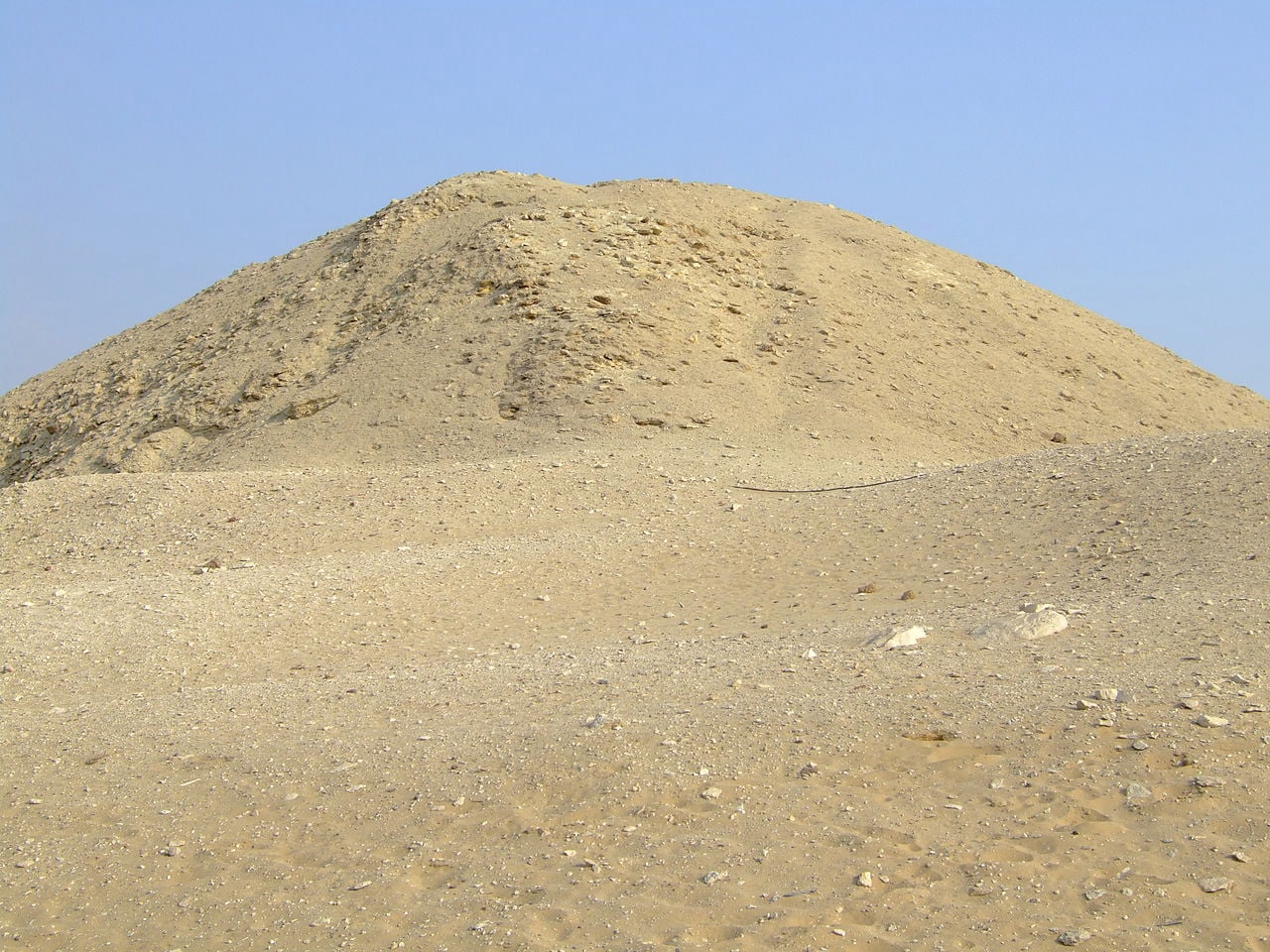
Late 24th century BC
Akkadian Empire
Akkadian Empire is founded, dating depends upon whether the Middle chronology or the Short chronology is used.
The Akkadian Empire was the first known ancient empire of Mesopotamia, succeeding the long-lived civilization of Sumer. Centered on the city of Akkad and its surrounding region, the empire would unite Akkadian and Sumerian speakers under one rule and exercised significant influence across Mesopotamia, the Levant, and Anatolia, sending military expeditions as far south as Dilmun and Magan (modern United Arab Emirates, Saudi Arabia, Bahrain, Qatar and Oman) in the Arabian Peninsula.
The Akkadian Empire reached its political peak between the 24th and 22nd centuries BC, following the conquests by its founder Sargon of Akkad. Under Sargon and his successors, the Akkadian language was briefly imposed on neighboring conquered states such as Elam and Gutium. Akkad is sometimes regarded as the first empire in history, though the meaning of this term is not precise, and there are earlier Sumerian claimants.
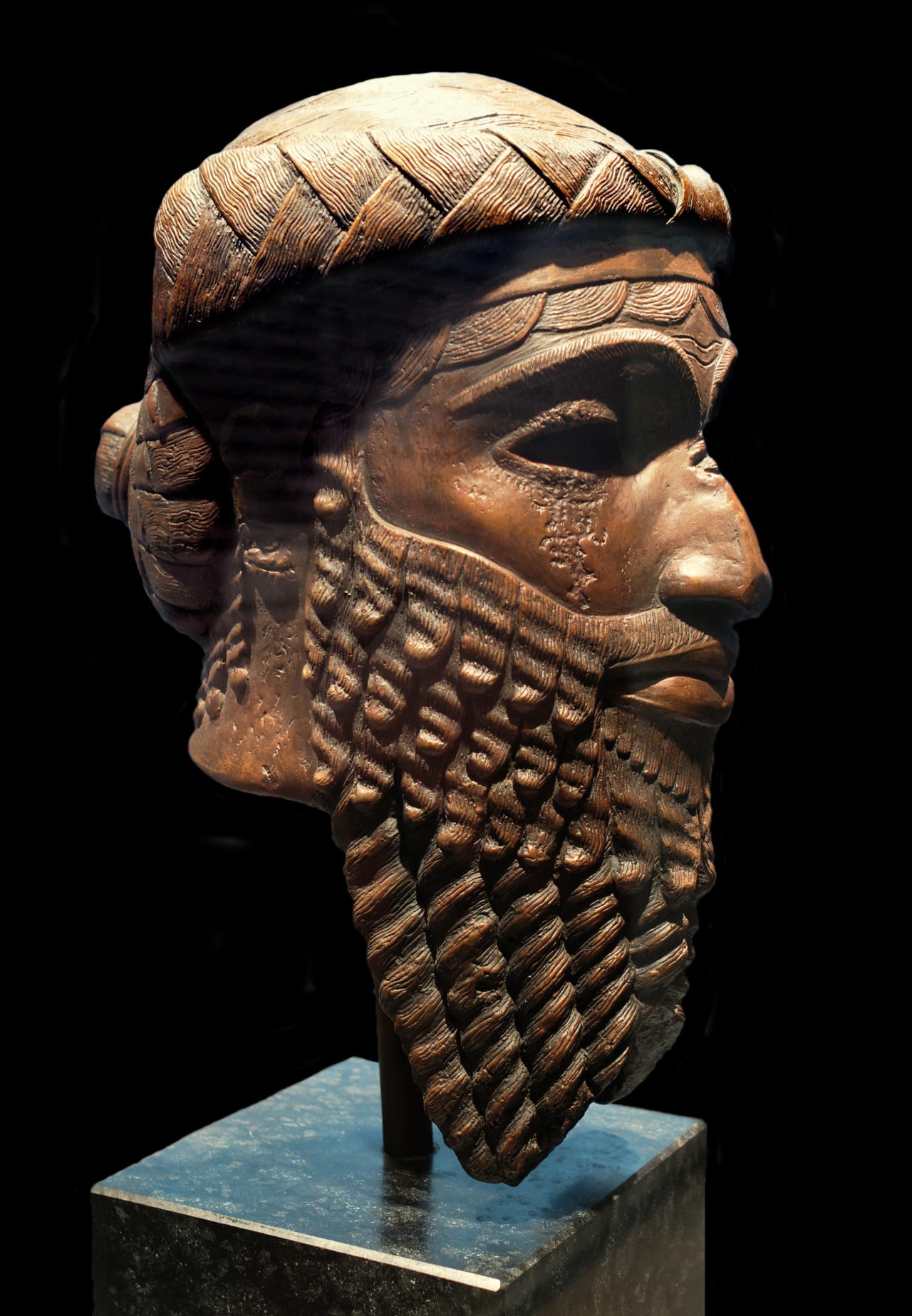
2500 BC
Mammoth
The last mammoth population, on Wrangel Island in Siberia, goes extinct.
A mammoth is any species of the extinct elephantid genus Mammuthus. The various species of mammoth were commonly equipped with long, curved tusks. They lived from the late Miocene epoch (from around 6.2 million years ago) into the Holocene about 4,000 years ago, and various species existed in Africa, Europe, Asia, and North America. Mammoths are more closely related to living Asian elephants than African elephants.
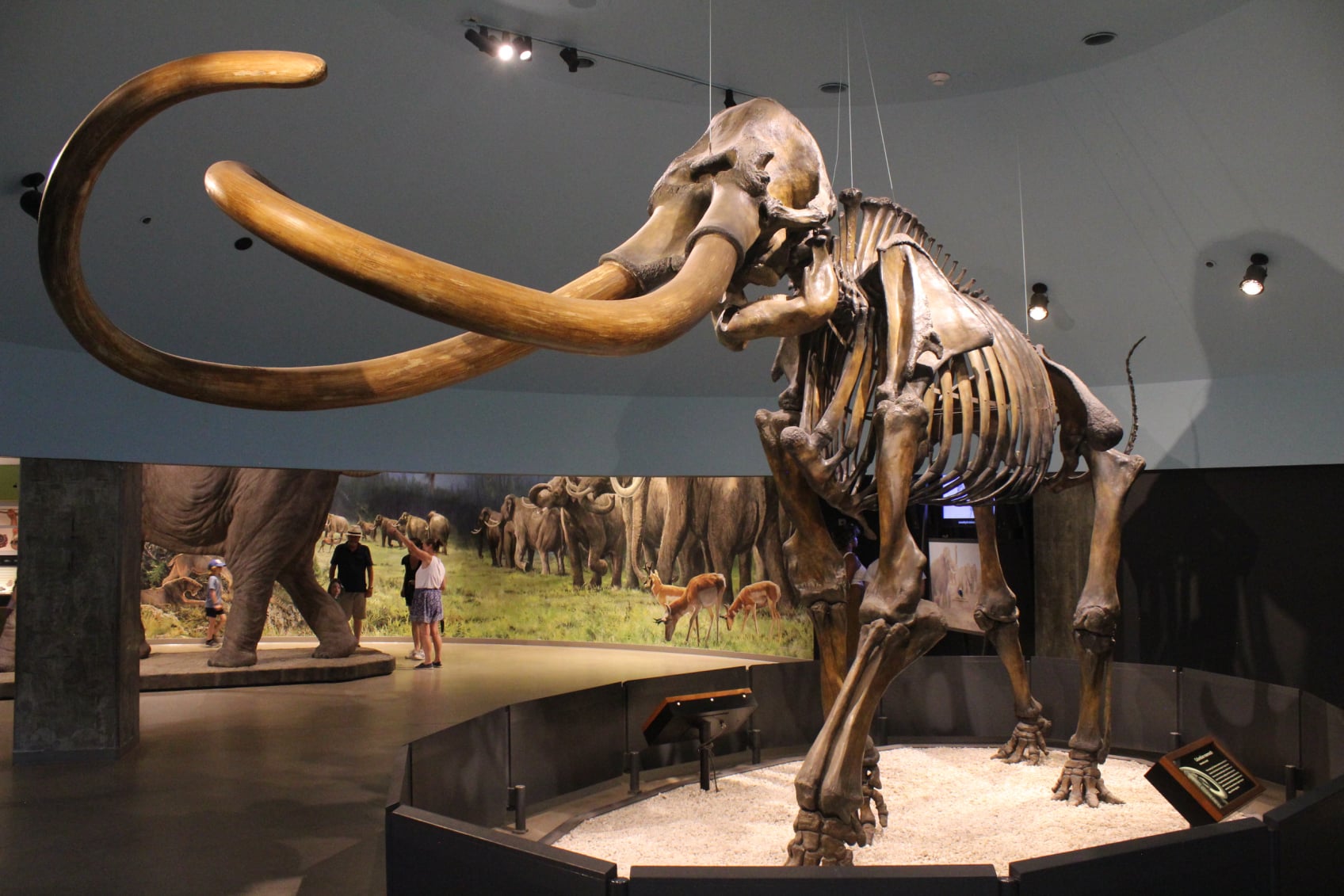
2500 BC – 1500 BC
Kerma culture begins in Nubia.
The Kerma culture or Kerma kingdom was an early civilization centered in Kerma, Sudan. It flourished from around 2500 BC to 1500 BC in ancient Nubia. The Kerma culture was based in the southern part of Nubia, or "Upper Nubia" (in parts of present-day northern and central Sudan), and later extended its reach northward into Lower Nubia and the border of Egypt. The polity seems to have been one of a number of Nile Valley states during the Middle Kingdom of Egypt. In the Kingdom of Kerma's latest phase, lasting from about 1700 to 1500 BC, it absorbed the Sudanese kingdom of Sai and became a sizable, populous empire rivaling Egypt. Around 1500 BC, it was absorbed into the New Kingdom of Egypt, but rebellions continued for centuries. By the eleventh century BC, the more-Egyptianized Kingdom of Kush emerged, possibly from Kerma, and regained the region's independence from Egypt.
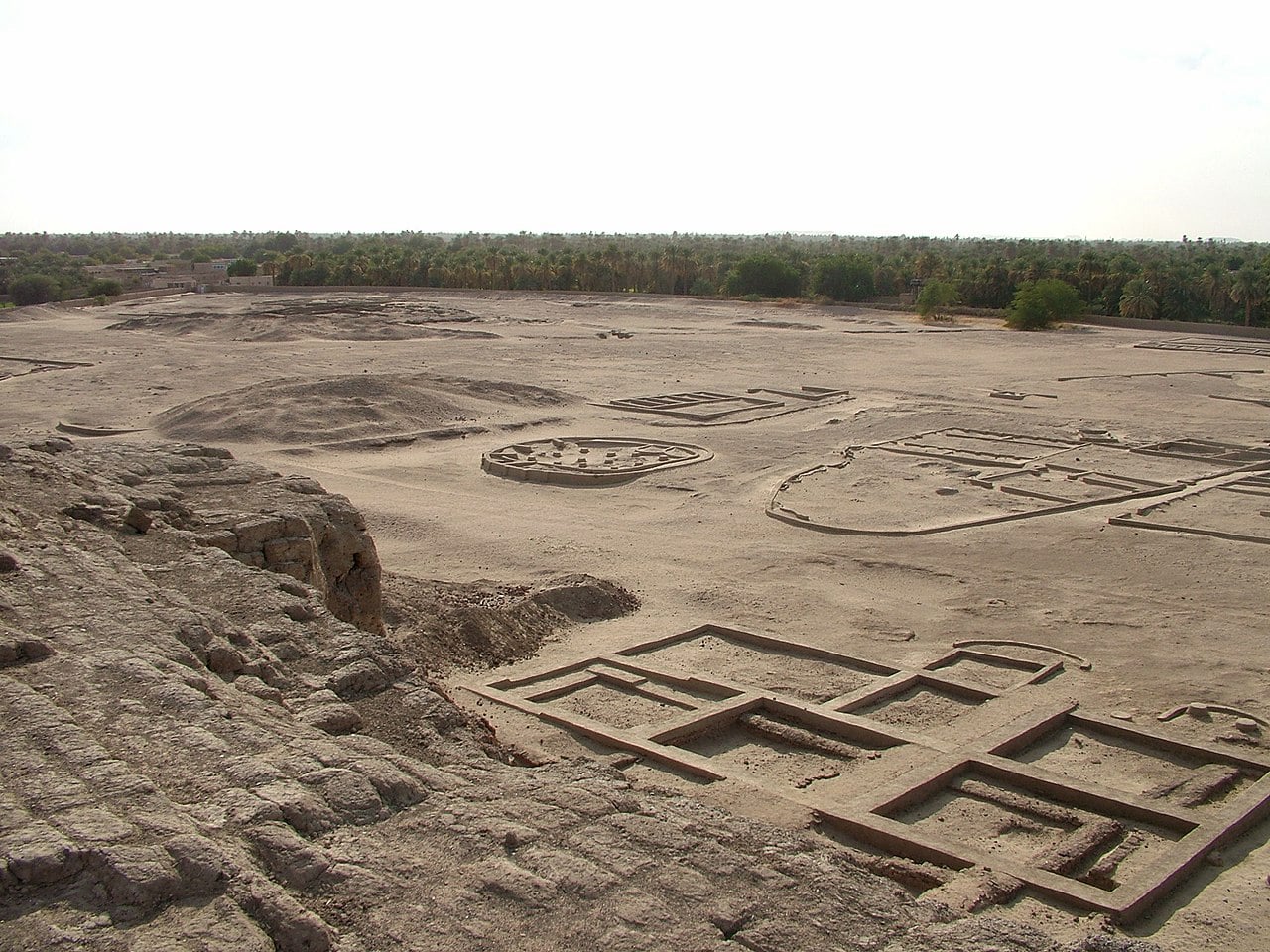
2560 BC
Great Pyramid of Giza
The Great Pyramid of Giza is the largest Egyptian pyramid and served as the tomb of pharaoh Khufu, who ruled during the Fourth Dynasty of the Old Kingdom. Built c. 2600 BC, over a period of about 27 years, the pyramid is the oldest of the Seven Wonders of the Ancient World, and the only wonder that has remained largely intact. It is the most famous monument of the Giza pyramid complex, which is part of the UNESCO World Heritage Site "Memphis and its Necropolis". It is situated at the northeastern end of the line of the three main pyramids at Giza.
Initially standing at 146.6 metres (481 feet), the Great Pyramid was the world's tallest human-made structure for more than 3,800 years. Over time, most of the smooth white limestone casing was removed, which lowered the pyramid's height to the current 138.5 metres (454.4 ft); what is seen today is the underlying core structure. The base was measured to be about 230.3 metres (755.6 ft) square, giving a volume of roughly 2.6 million cubic metres (92 million cubic feet), which includes an internal hillock. The dimensions of the pyramid were 280 royal cubits (146.7 m; 481.4 ft) high, a base length of 440 cubits (230.6 m; 756.4 ft), with a seked of 5.5 palms (a slope of 51°50'40").
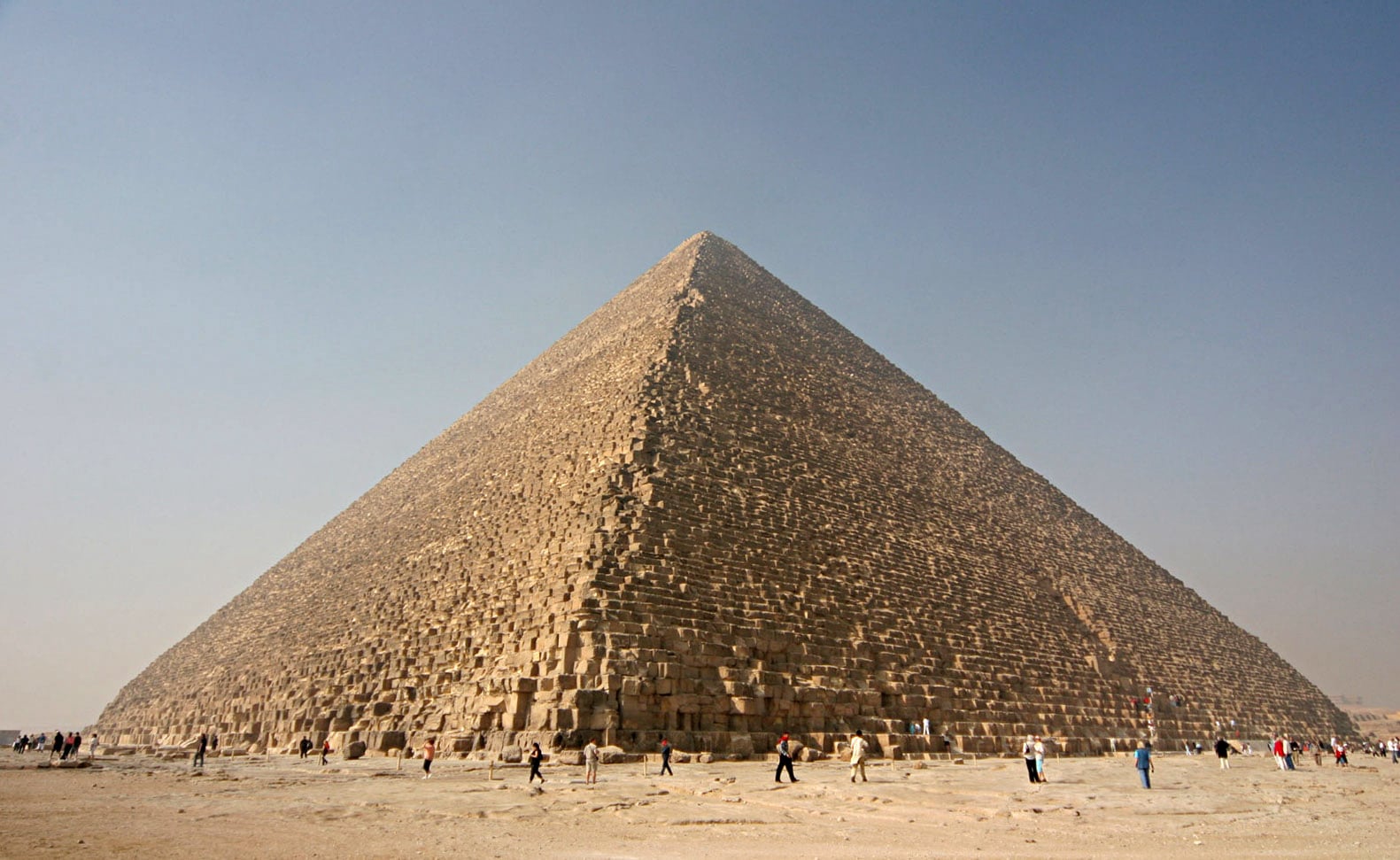
2600 BC
Emergence of Mayan culture in the Yucatán Peninsula.
The Yucatán Peninsula is a large peninsula in southeast Mexico and adjacent portions of Belize and Guatemala. The peninsula extends towards the northeast, separating the Gulf of Mexico to the north and west of the peninsula from the Caribbean Sea to the east. The Yucatán Channel, between the northeastern corner of the peninsula and Cuba, connects the two bodies of water.
The peninsula is approximately 181,000 km (70,000 sq mi) in area. It has low relief and is almost entirely composed of porous limestone.
The peninsula lies east of the Isthmus of Tehuantepec, the narrowest point in Mexico separating the Atlantic Ocean, including the Gulf of Mexico and Caribbean Sea, from the Pacific Ocean. Some consider the isthmus to be the geographic boundary between Central America and the rest of North America, placing the peninsula in Central America. Politically all of Mexico, including the Yucatán, is generally considered part of North America, while Guatemala and Belize are considered part of Central America.
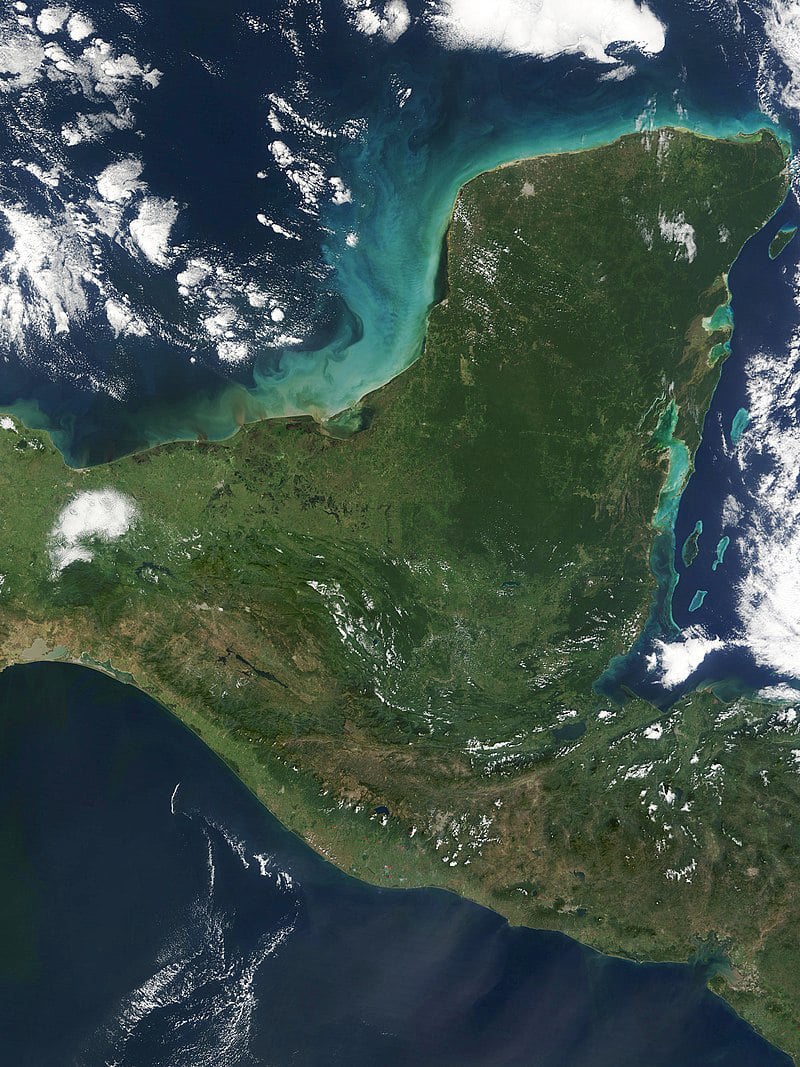
2600 BC
Mature Harappan
According to Giosan et al. (2012), the slow southward migration of the monsoons across Asia initially allowed the Indus Valley villages to develop by taming the floods of the Indus and its tributaries. Flood-supported farming led to large agricultural surpluses, which in turn supported the development of cities. The IVC residents did not develop irrigation capabilities, relying mainly on the seasonal monsoons leading to summer floods. Brooke further notes that the development of advanced cities coincides with a reduction in rainfall, which may have triggered a reorganisation into larger urban centres.
According to J.G. Shaffer and D.A. Lichtenstein, the Mature Harappan civilisation was "a fusion of the Bagor, Hakra, and Kot Diji traditions or 'ethnic groups' in the Ghaggar-Hakra valley on the borders of India and Pakistan".
Also, according to a more recent summary by Maisels (2003), "The Harappan oecumene formed from a Kot Dijian/Amri-Nal synthesis". He also says that, in the development of complexity, the site of Mohenjo-daro has priority, along with the Hakra-Ghaggar cluster of sites, "where Hakra wares actually precede the Kot Diji related material". He sees these areas as "catalytic in producing the fusion from Hakra, Kot Dijian and Amri-Nal cultural elements that resulted in the gestalt we recognize as Early Harappan (Early Indus)."
By 2600 BCE, the Early Harappan communities turned into large urban centres. Such urban centres include Harappa, Ganeriwala, Mohenjo-daro in modern-day Pakistan, and Dholavira, Kalibangan, Rakhigarhi, Rupar, and Lothal in modern-day India. In total, more than 1,000 settlements have been found, mainly in the general region of the Indus and Ghaggar-Hakra Rivers and their tributaries.
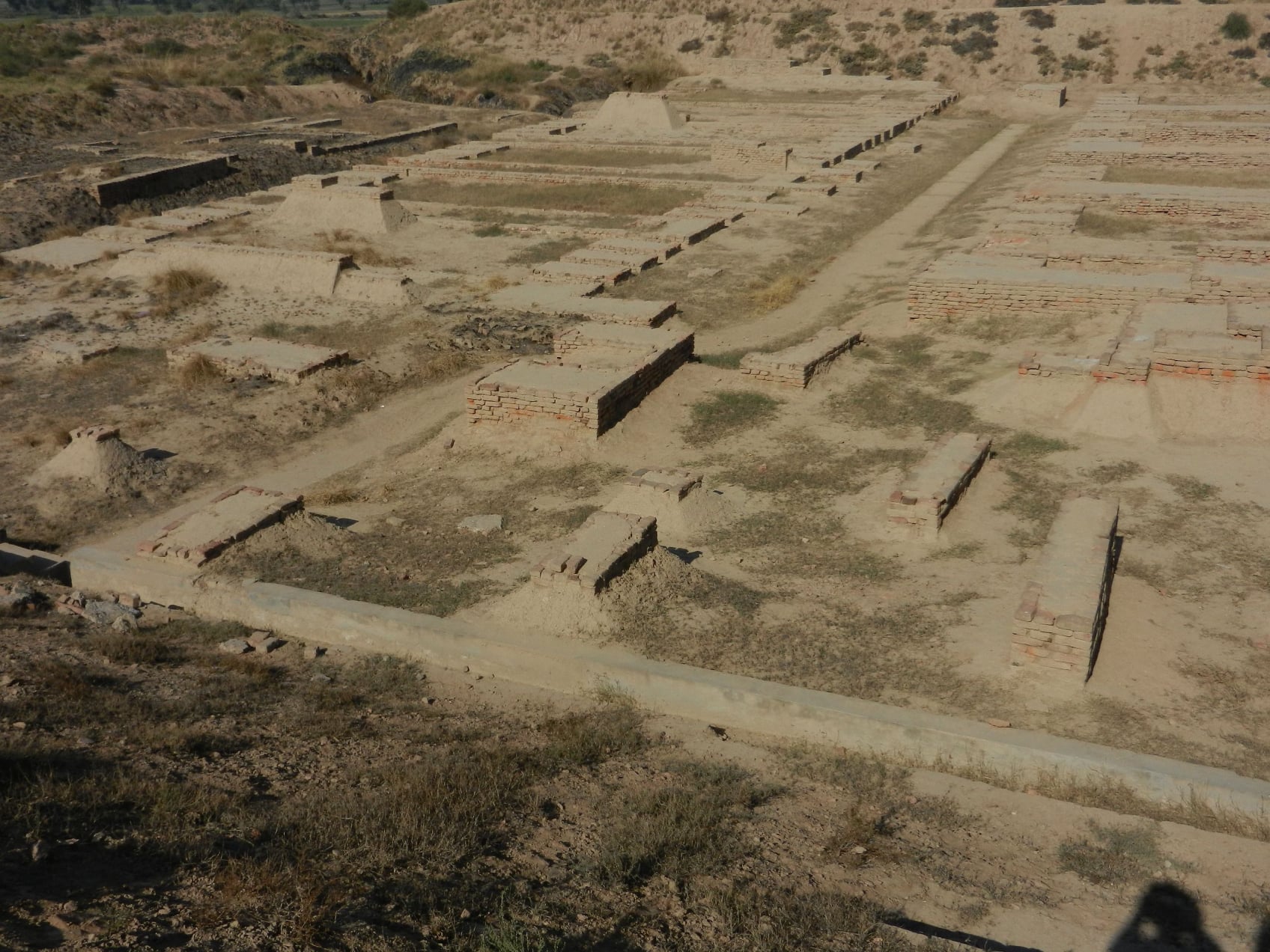
2600 BC
Abu Salabikh
The archaeological site of Abu Salabikh (Tell Abū Ṣalābīkh), around 20 km (12 mi) northwest of the site of ancient Nippur and about 150 kilometers southeast of the modern city of Baghdad in Al-Qādisiyyah Governorate, Iraq marks the site of a small Sumerian city that existed from the Neolithic through the late 3rd millennium, with cultural connections to the cities of Kish, Mari and Ebla. Its ancient name is unknown though Eresh and Kesh have been suggested as well as Gišgi. Kesh was suggested by Thorkild Jacobsen before excavations began. The Euphrates was the city's highway and lifeline; when it shifted its old bed (which was identified to the west of the Main Mound by coring techniques), in the late third millennium BC, the city dwindled away. Only eroded traces remain on the site's surface of habitation after the Early Dynastic Period. There is another small archaeological site named Abu-Salabikh in the Hammar Lake region of Southern Iraq, which has been suggested as the possible capital of the Sealand dynasty.
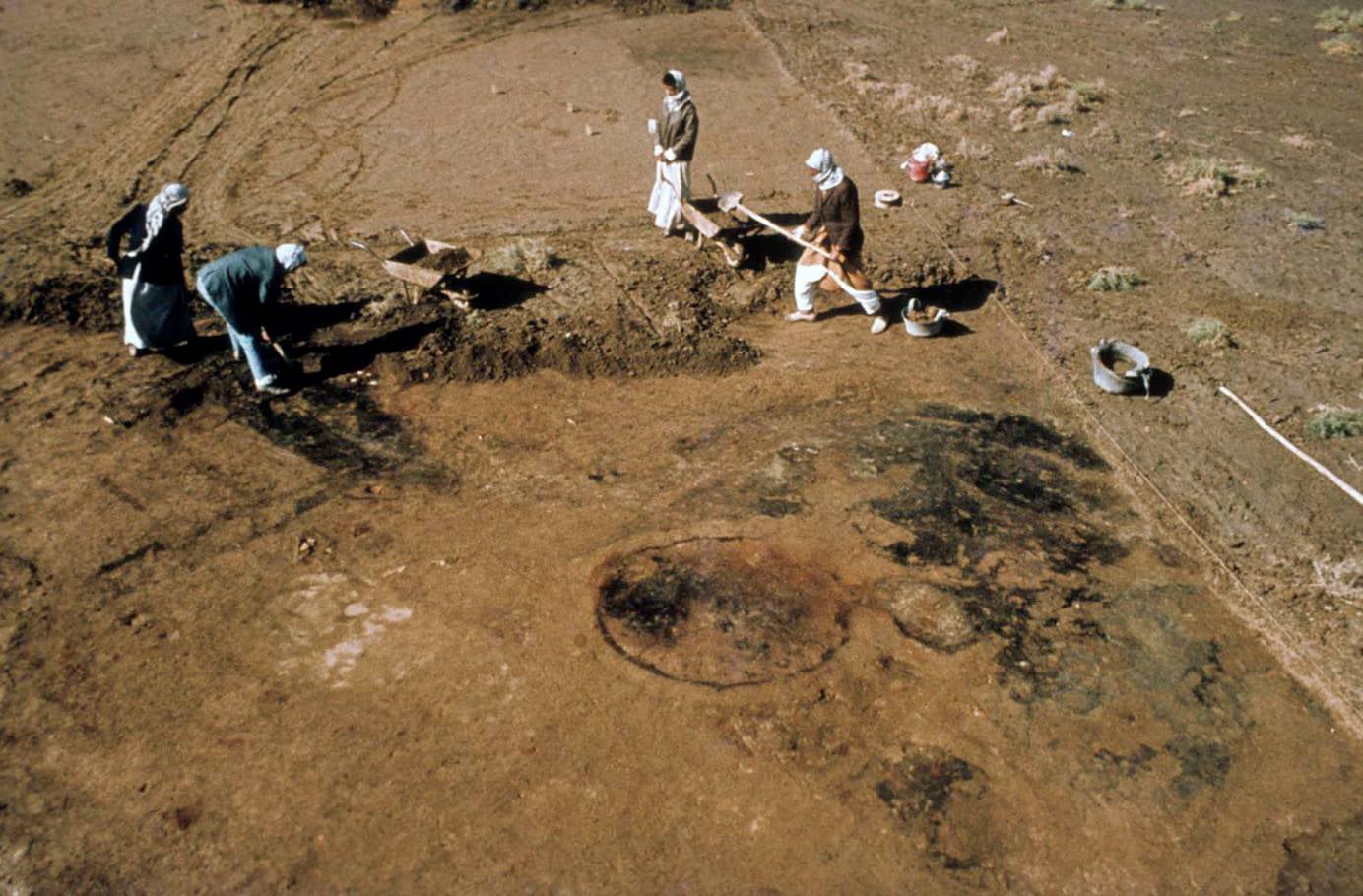
2700 BC
The Old Kingdom begins in Egypt.
In ancient Egyptian history, the Old Kingdom is the period spanning c. 2700–2200 BC. It is also known as the "Age of the Pyramids" or the "Age of the Pyramid Builders", as it encompasses the reigns of the great pyramid-builders of the Fourth Dynasty, such as King Sneferu, who perfected the art of pyramid-building, and the kings Khufu, Khafre and Menkaure, who constructed the pyramids at Giza. Egypt attained its first sustained peak of civilization during the Old Kingdom, the first of three so-called "Kingdom" periods (followed by the Middle Kingdom and New Kingdom), which mark the high points of civilization in the lower Nile Valley.
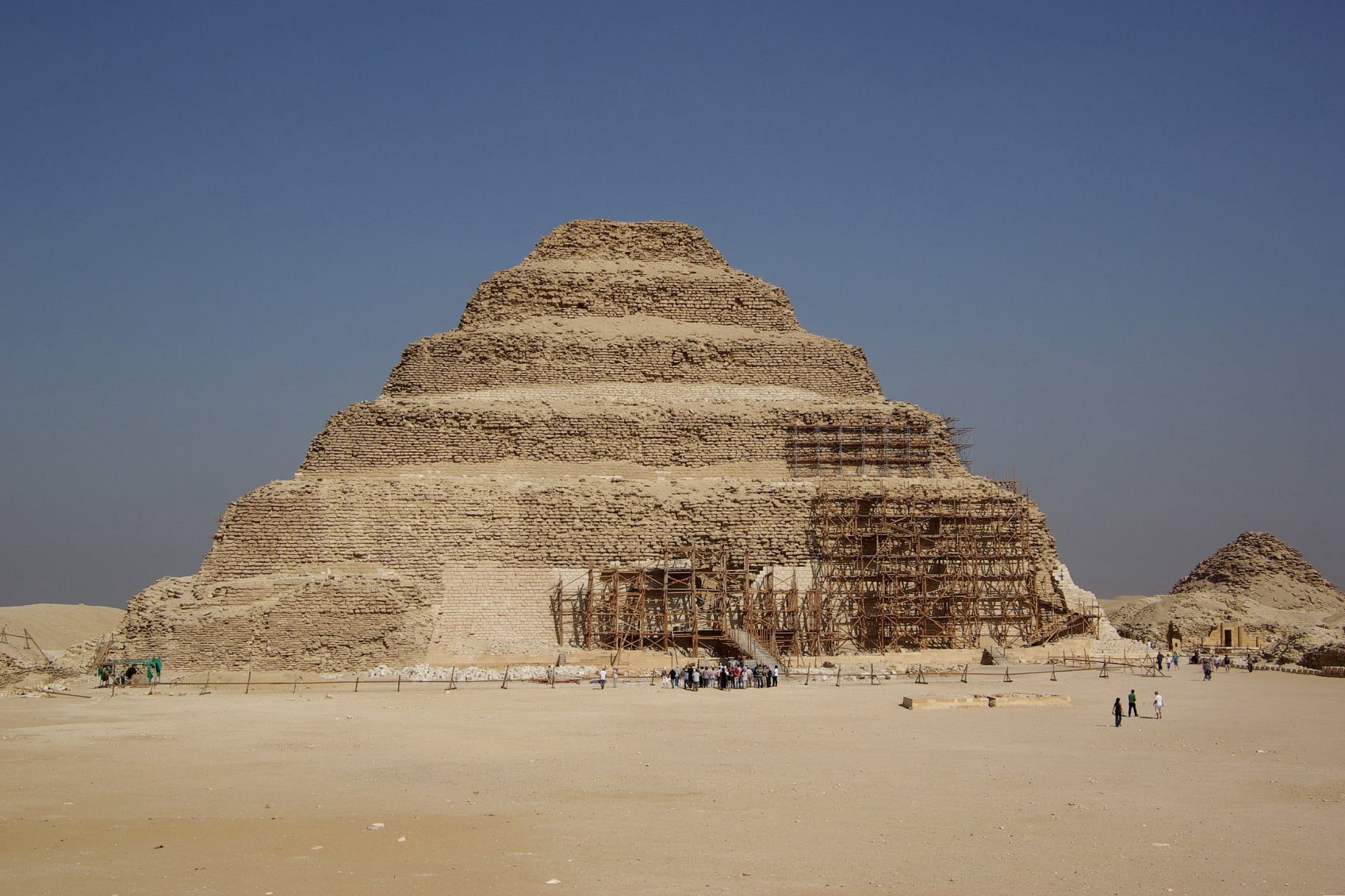
2700 BC
Rise of Elam in Iran.
Elam (/ˈiːləm/; Linear Elamite: hatamti; Cuneiform Elamite: 𒁹𒄬𒆷𒁶𒋾 ḫalatamti; Sumerian: 𒉏𒈠 elam; Akkadian: 𒉏𒈠𒆠 elamtu; Hebrew: עֵילָם ʿēlām; Old Persian: 𐎢𐎺𐎩 hūja) was an ancient civilization centered in the far west and southwest of modern-day Iran, stretching from the lowlands of what is now Khuzestan and Ilam Province as well as a small part of southern Iraq. The modern name Elam stems from the Sumerian transliteration elam(a), along with the later Akkadian elamtu, and the Elamite haltamti. Elamite states were among the leading political forces of the Ancient Near East. In classical literature, Elam was also known as Susiana (US: /ˌsuːʒiˈænə/ UK: /ˌsuːziˈɑːnə/; Ancient Greek: Σουσιανή Sousiānḗ), a name derived from its capital Susa.

2700 BC
Minoan civilization ancient palace city Knossos reaches 80,000 inhabitants.
Knossos is a Bronze Age archaeological site in Crete. The site was a major center of the Minoan civilization and is known for its association with the Greek myth of Theseus and the minotaur. It is located on the outskirts of Heraklion, and remains a popular tourist destination.
Knossos is dominated by the monumental Palace of Minos. Like other Minoan palaces, this building served as a combination religious and administrative center rather than a royal residence. The earliest parts of the palace were built around 1900 BC in an area that had been used for ritual feasting since the Neolithic. The palace was continually renovated and expanded over the next five centuries until its final destruction around 1350 BC.

2800 BC
Longshan culture begins in China.
The Longshan (or Lung-shan) culture, also sometimes referred to as the Black Pottery Culture, was a late Neolithic culture in the middle and lower Yellow River valley areas of northern China from about 3000 to 1900 BC. The first archaeological find of this culture took place at the Chengziya Archaeological Site in 1928, with the first excavations in 1930 and 1931. The culture is named after the nearby modern town of Longshan (lit. "Dragon Mountain") in Zhangqiu, Shandong. The culture was noted for its highly polished black pottery (or egg-shell pottery). The population expanded dramatically during the 3rd millennium BC, with many settlements having rammed earth walls. It decreased in most areas around 2000 BC until the central area evolved into the Bronze Age Erlitou culture. The Longshan culture has been linked to the early Sinitic (of the Sino-Tibetan languages). According to the area and cultural type, the Longshan culture can be divided into two types: Shandong Longshan and Henan Longshan. Among them, Shandong Longshan Cultural Site includes Chengziya Site; Henan Longshan Cultural Site includes Dengfeng Wangchenggang Site in Wangwan, Taosi Site and Mengzhuang Site in Hougang.
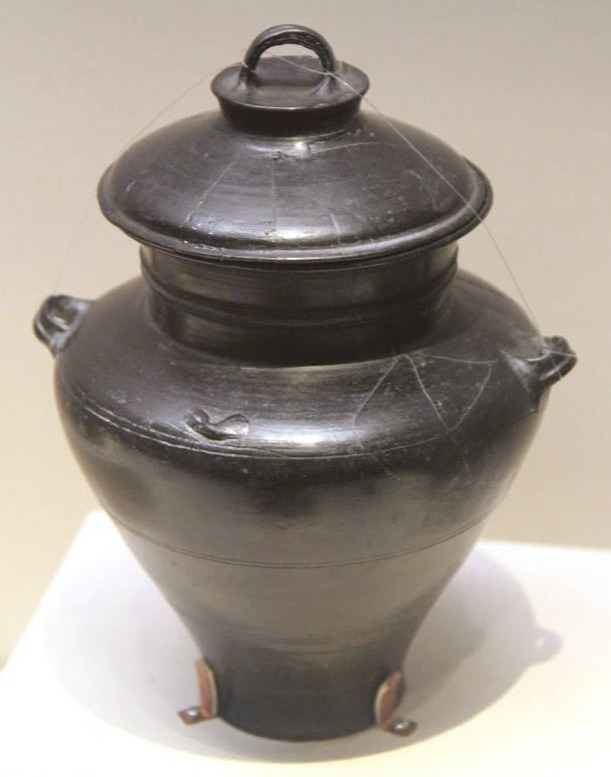
2800 BC
Kot Diji phase of the Indus Valley Civilisation begins.
The ancient site at Kot Diji (Sindhi: ڪوٽ ڏیجي; Urdu: کوٹ ڈیجی) was the forerunner of the Indus Civilization. The occupation of this site is attested already at 3300 BCE. The remains consist of two parts; the citadel area on high ground (about 12 m [39 ft])), and outer area. The Pakistan Department of Archaeology excavated at Kot Diji in 1955 and 1957.
Located about 45 km (28 mi)) south of Khairpur in the province of Sindh, Pakistan, it is on the east bank of the Indus opposite Mohenjo-daro.
The site is situated at the foot of the Rohri Hills where a fort (Kot Diji Fort) was built around 1790 by the Talpur dynasty ruler of Upper Sindh, Mir Suhrab, who reigned from 1783 to 1830 AD. This fort built on the ridge of a steep narrow hill is well-preserved.
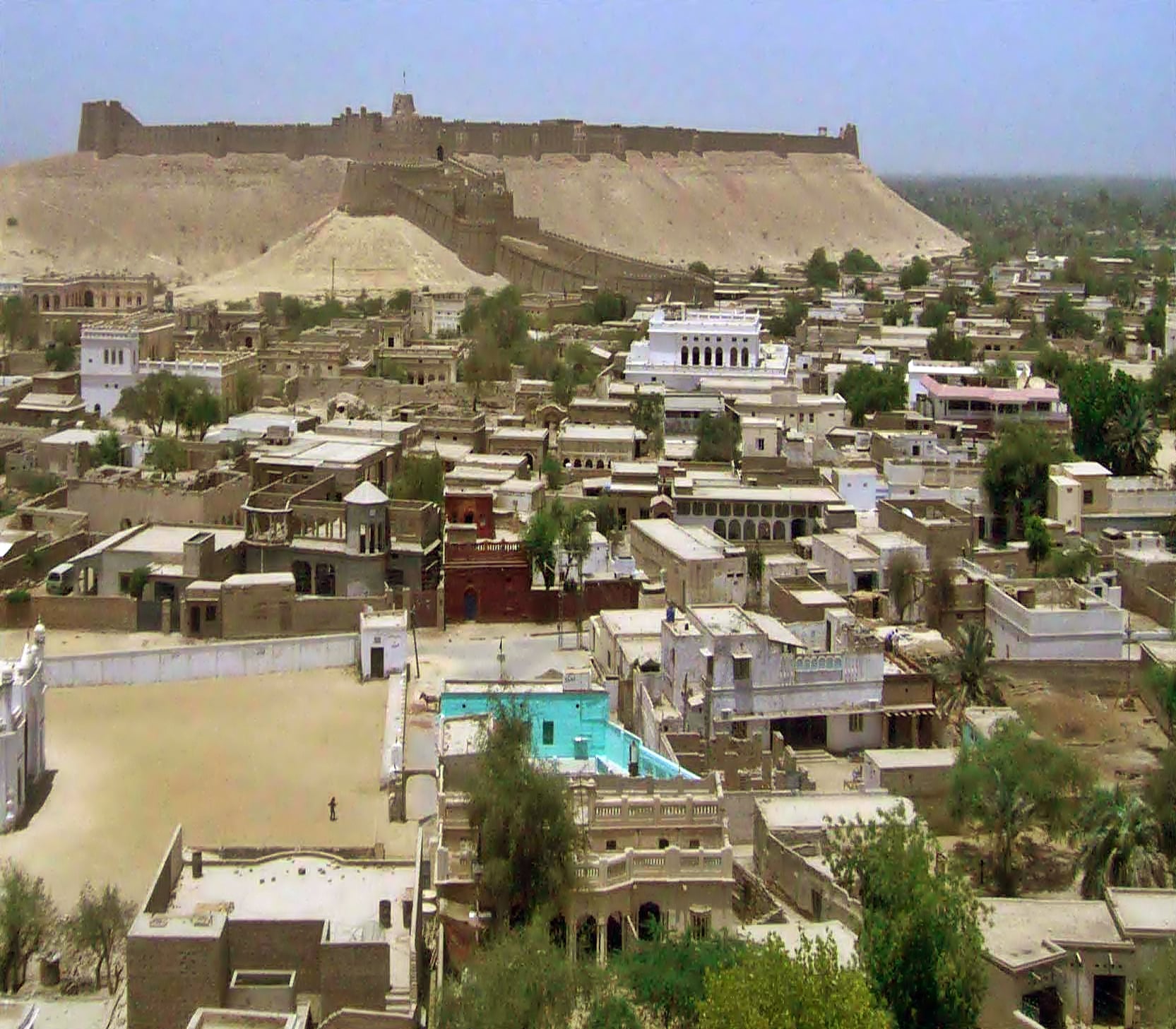
3000 BC
Domestication of the horse in the Yamnaya culture.
The Yamnaya culture or the Yamna culture, also known as the Pit Grave culture or Ochre Grave culture, was a late Copper Age to early Bronze Age archaeological culture of the region between the Southern Bug, Dniester, and Ural rivers (the Pontic–Caspian steppe), dating to 3300–2600 BCE. It was discovered by Vasily Gorodtsov following his archaeological excavations near the Donets River in 1901–1903. Its name derives from its characteristic burial tradition: Я́мная (romanization: yamnaya) is a Russian adjective that means 'related to pits (yama)', as these people used to bury their dead in tumuli (kurgans) containing simple pit chambers.

3000 BC – 2300 BC
Lothagam North Pillar Site
The East African Pastoral neolithic culture builds East Africa's earliest and largest monumental cemetery at Lothagam North Pillar Site.
The Lothagam North Pillar Site, registered as GeJi9, is an archaeological site at Lothagam on the west side of Lake Turkana in Kenya dating to the Pastoral Neolithic and the Holocene. It is a communal cemetery, built between 3000 BCE and 2300 BCE by the region's earliest herders as rainfall in the area decreased and Lake Turkana receded. It is thought to be eastern Africa's largest and earliest monumental cemetery.
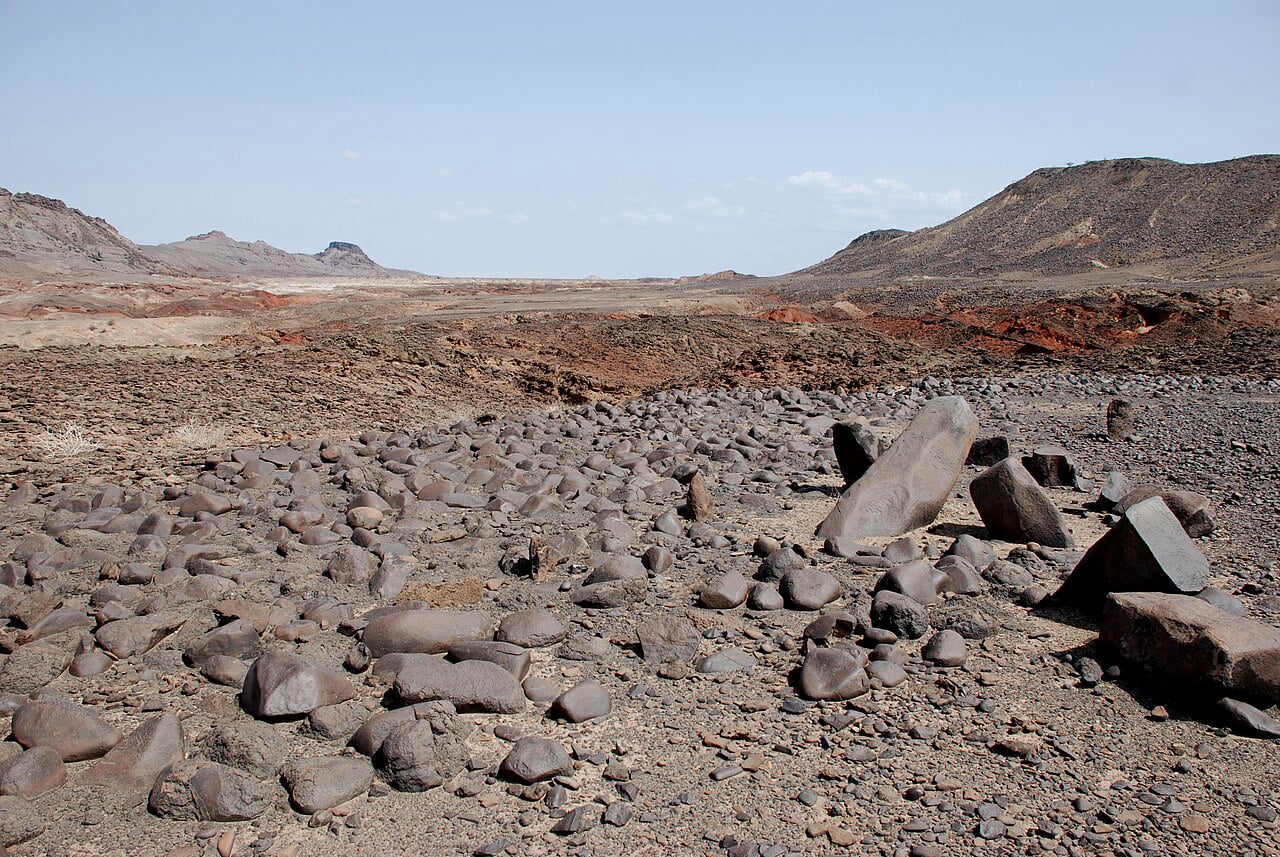
3000 BC – 2500 BC
Earliest evidence of autochthonous iron production in West Africa.
Iron metallurgy in Africa developed within Africa; though initially assumed to be of external origin, this assumption has been rendered untenable; archaeological evidence has increasingly supported an indigenous origin. Some recent studies date the inception of iron metallurgy in Africa between 3000 BCE and 2500 BCE. Archaeometallurgical scientific knowledge and technological development originated in numerous centers of Africa; the centers of origin were located in West Africa, Central Africa, and East Africa; consequently, as these origin centers are located within inner Africa, these archaeometallurgical developments are thus native African technologies.
Iron metallurgical development occurred 2631 BCE – 2458 BCE at Lejja, in Nigeria, 2136 BCE – 1921 BCE at Obui, in Central Africa Republic, 1895 BCE – 1370 BCE at Tchire Ouma 147, in Niger, and 1297 BCE – 1051 BCE at Dekpassanware, in Togo. Evidence exists for early iron metallurgy in parts of Nigeria, Cameroon, and Central Africa, possibly from as early as around 2,000 BCE. Iron metallurgy may have been independently developed in the Nok culture between the 9th century BCE and 550 BCE. The nearby Djenné-Djenno culture of the Niger Valley in Mali shows evidence of iron production from c. 250 BCE. The Bantu expansion spread the technology to Eastern and Southern Africa between 500 BCE and 400 CE, as shown in the Urewe culture.
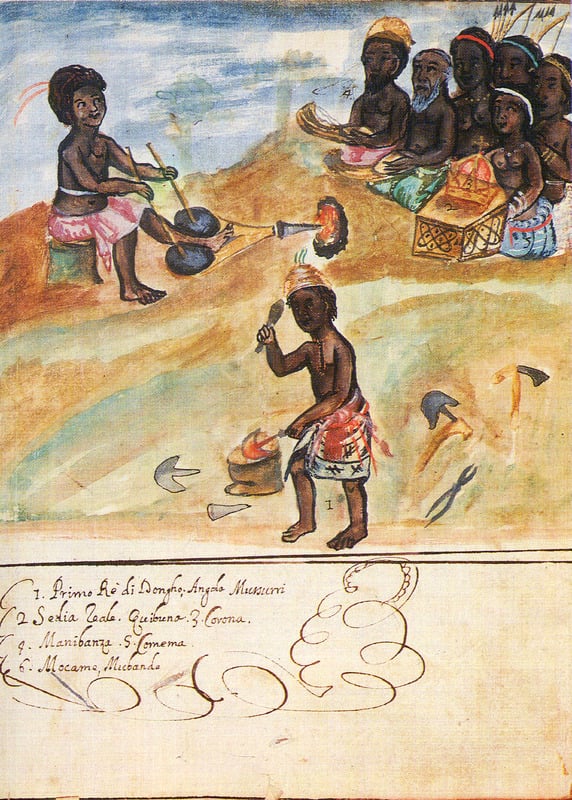
3000 BC
First known use of papyrus by Egyptians.
Papyrus is a material similar to thick paper that was used in ancient times as a writing surface. It was made from the pith of the papyrus plant, Cyperus papyrus, a wetland sedge. Papyrus (plural: papyri or papyruses) can also refer to a document written on sheets of such material, joined side by side and rolled up into a scroll, an early form of a book.

3000 BC
Jiroft culture begins in Iran.
The Jiroft culture, also known as the Intercultural style or the Halilrud style, is an early Bronze Age (3rd millennium BC) archaeological culture, located in the territory of present-day Sistan and Baluchestan and Kermān Provinces of Iran.

c. 3000 BC
Cucuteni–Trypillia culture is established in Romania and Ukraine.
The Cucuteni–Trypillia culture, also known as the Cucuteni culture or the Trypillia culture, is a Neolithic–Chalcolithic archaeological culture (c. 5500 to 2750 BC) of Southeast Europe. It extended from the Carpathian Mountains to the Dniester and Dnieper regions, centered on modern-day Moldova and covering substantial parts of western Ukraine and northeastern Romania, encompassing an area of 350,000 km (140,000 sq mi), with a diameter of 500 km (300 mi; roughly from Kyiv in the northeast to Brașov in the southwest).
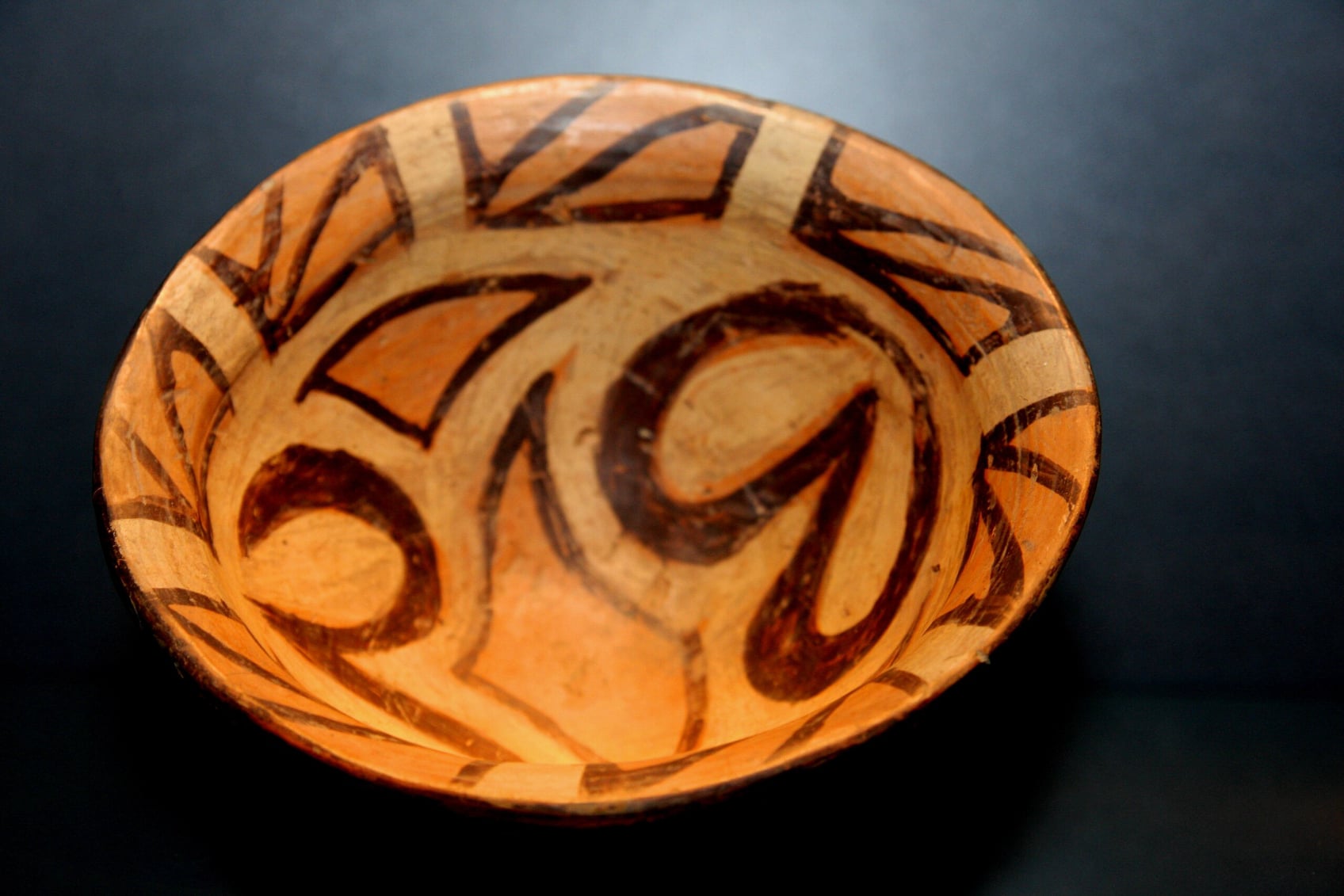
c. 3000 BC
Stonehenge
Stonehenge construction begins. In its first version, it consisted of a circular ditch and bank, with 56 wooden posts.
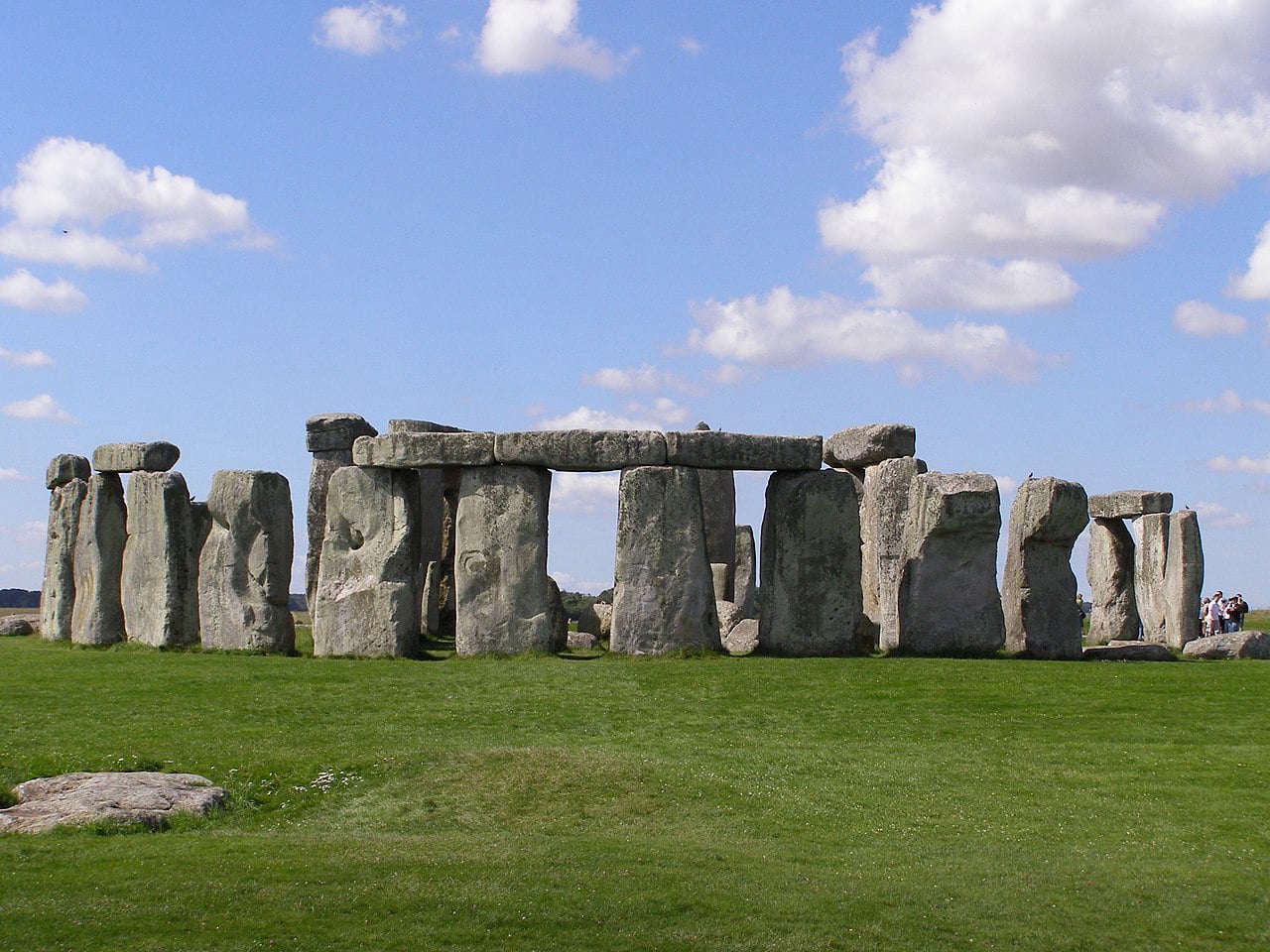
3100 BC
First Dynasty of Egypt.
The First Dynasty of ancient Egypt (Dynasty I) covers the first series of Egyptian kings to rule over a unified Egypt. It immediately follows the unification of Upper and Lower Egypt, possibly by Narmer, and marks the beginning of the Early Dynastic Period, when power was centered at Thinis.
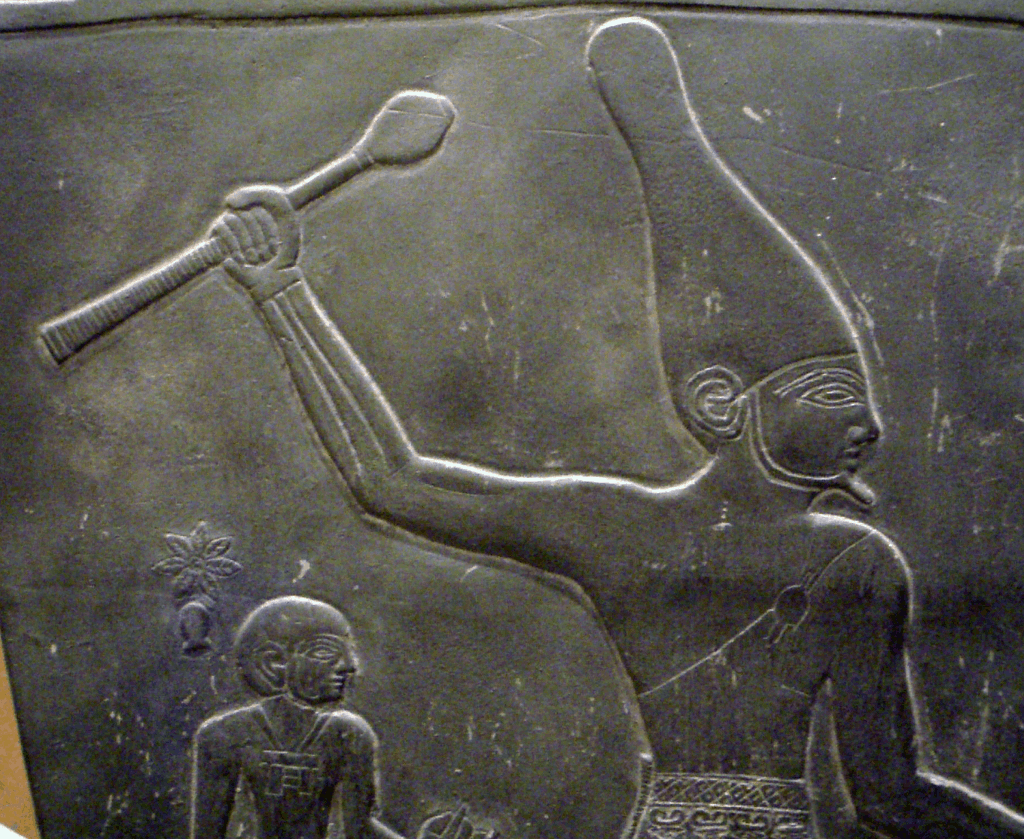
3200 BC
Skara Brae is built in Scotland.
Skara Brae is a stone-built Neolithic settlement, located on the Bay of Skaill on the west coast of Mainland, the largest island in the Orkney archipelago of Scotland. It consisted of ten clustered houses, made of flagstones, in earthen dams that provided support for the walls; the houses included stone hearths, beds, and cupboards. A primitive sewer system, with "toilets" and drains in each house, included water used to flush waste into a drain and out to the ocean.

3200 BC
Rise of Proto-Elamite Civilization in Iran.
The Proto-Elamite period, also known as Susa III, is a chronological era in the ancient history of the area of Elam, dating from c. 3100 BC to 2700 BC. In archaeological terms this corresponds to the late Banesh period. Proto-Elamite sites are recognized as the oldest civilization in the territory of present-day Iran. The Proto-Elamite script is an Early Bronze Age writing system briefly in use before the introduction of Elamite cuneiform.
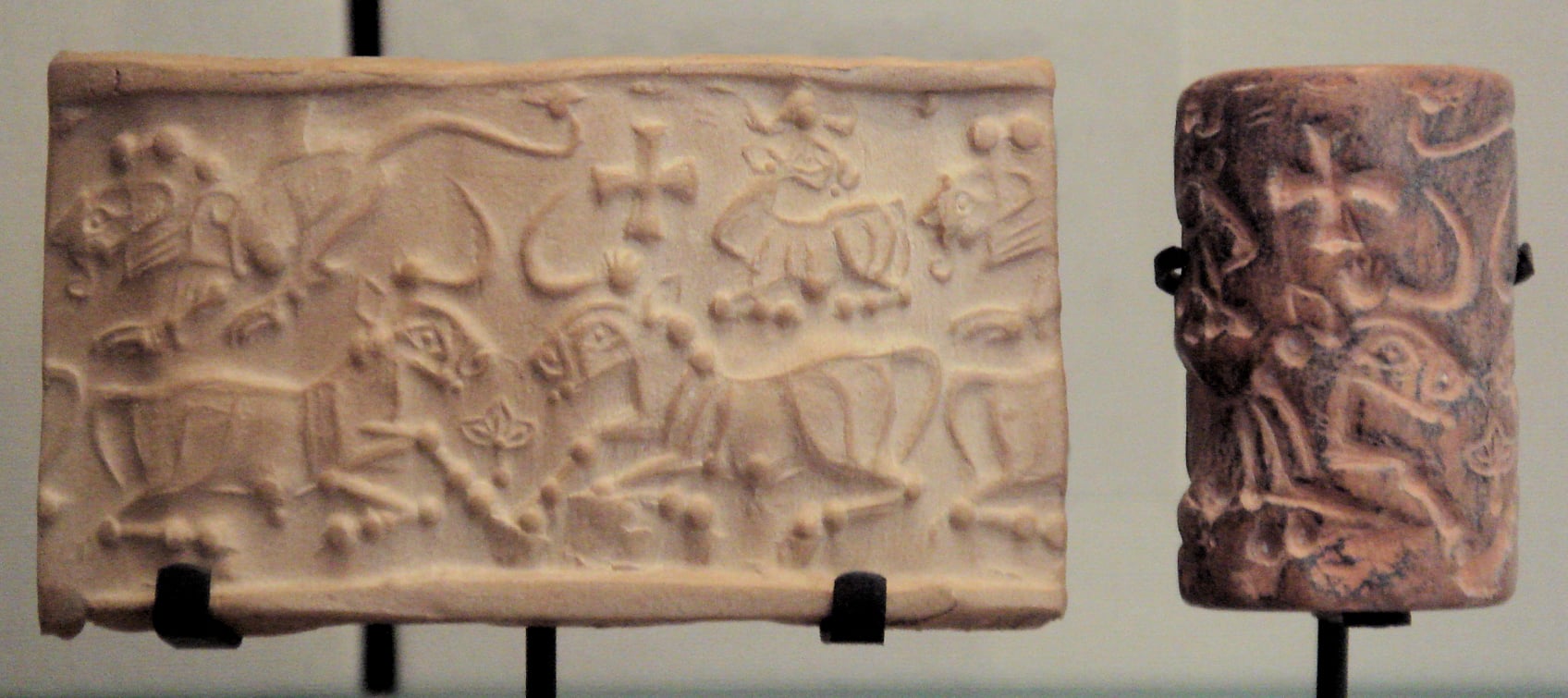
3200 BC
Caral-Supe civilization begins in Peru.
Caral–Supe (also known as Caral and Norte Chico) was a complex Pre-Columbian era society that included as many as thirty major population centers in what is now the Caral region of north-central coastal Peru. The civilization flourished between the fourth and second millennia BC, with the formation of the first city generally dated to around 3500 BC, at Huaricanga, in the Fortaleza area. It is from 3100 BC onward that large-scale human settlement and communal construction become clearly apparent, which lasted until a period of decline around 1800 BC. Since the early 21st century, it has been recognized as the oldest-known civilization in the Americas, and as one of the six sites where civilisation separately originated in the ancient world.

3200 BC
Cycladic culture in Greece.
Cycladic culture (also known as Cycladic civilisation or, chronologically, as Cycladic chronology) was a Bronze Age culture (c. 3100–c. 1000 BC) found throughout the islands of the Cyclades in the Aegean Sea. In chronological terms, it is a relative dating system for artifacts which serves as a roughly contemporary dating system to Helladic chronology (mainland Greece) and Minoan chronology (Crete) during the same period of time.
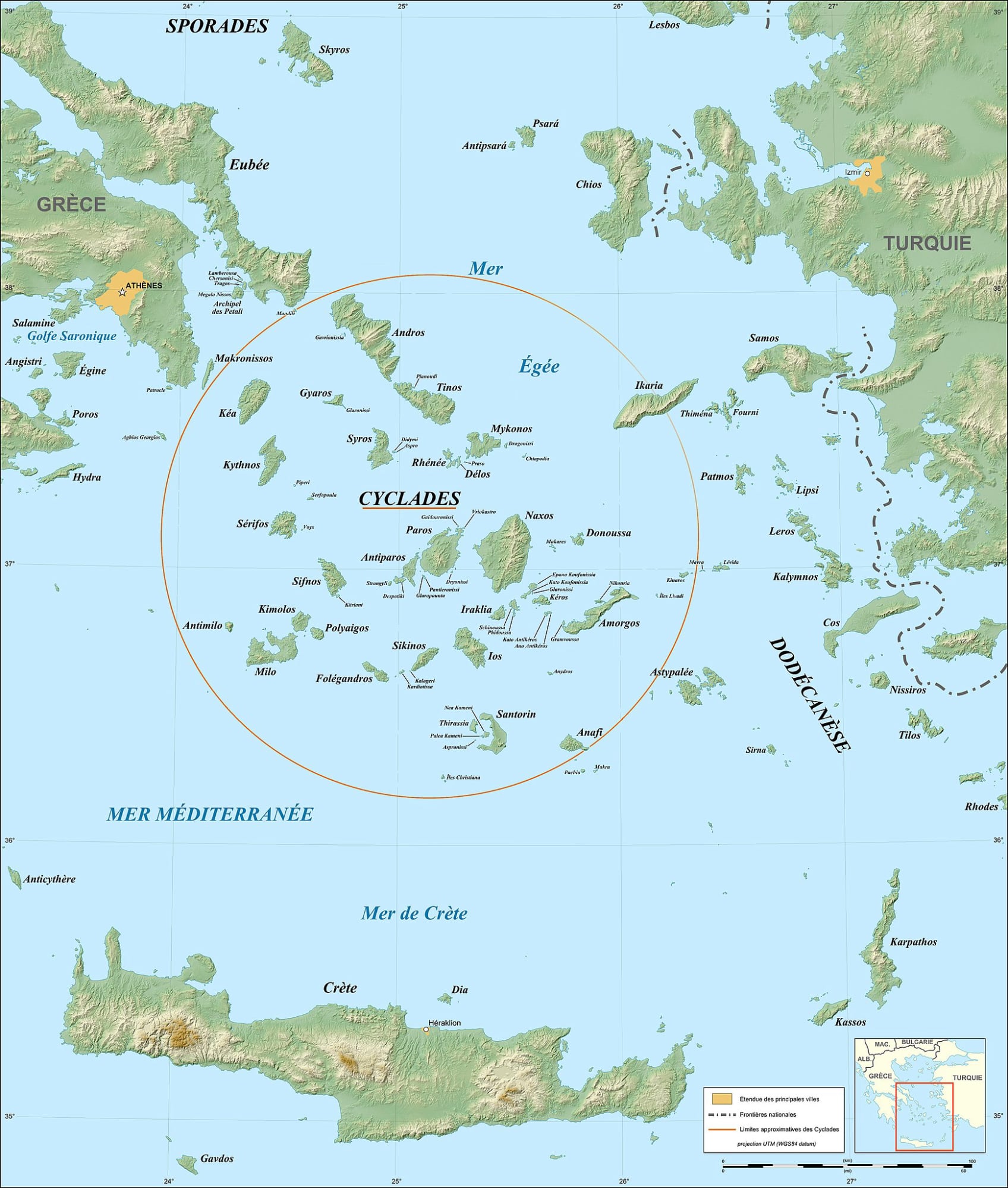
Late 4th millennium BC
Sumerian cuneiform writing system and Egyptian hieroglyphs are first used.
Egyptian hieroglyphs were the formal writing system used in Ancient Egypt for writing the Egyptian language. Hieroglyphs combined logographic, syllabic and alphabetic elements, with more than 100 distinct characters. Cursive hieroglyphs were used for religious literature on papyrus and wood. The later hieratic and demotic Egyptian scripts were derived from hieroglyphic writing, as was the Proto-Sinaitic script that later evolved into the Phoenician alphabet. Through the Phoenician alphabet's major child systems (the Greek and Aramaic scripts), the Egyptian hieroglyphic script is ancestral to the majority of scripts in modern use, most prominently the Latin and Cyrillic scripts (through Greek) and the Arabic script, and possibly the Brahmic family of scripts (through Aramaic, Phoenician, and Greek).
